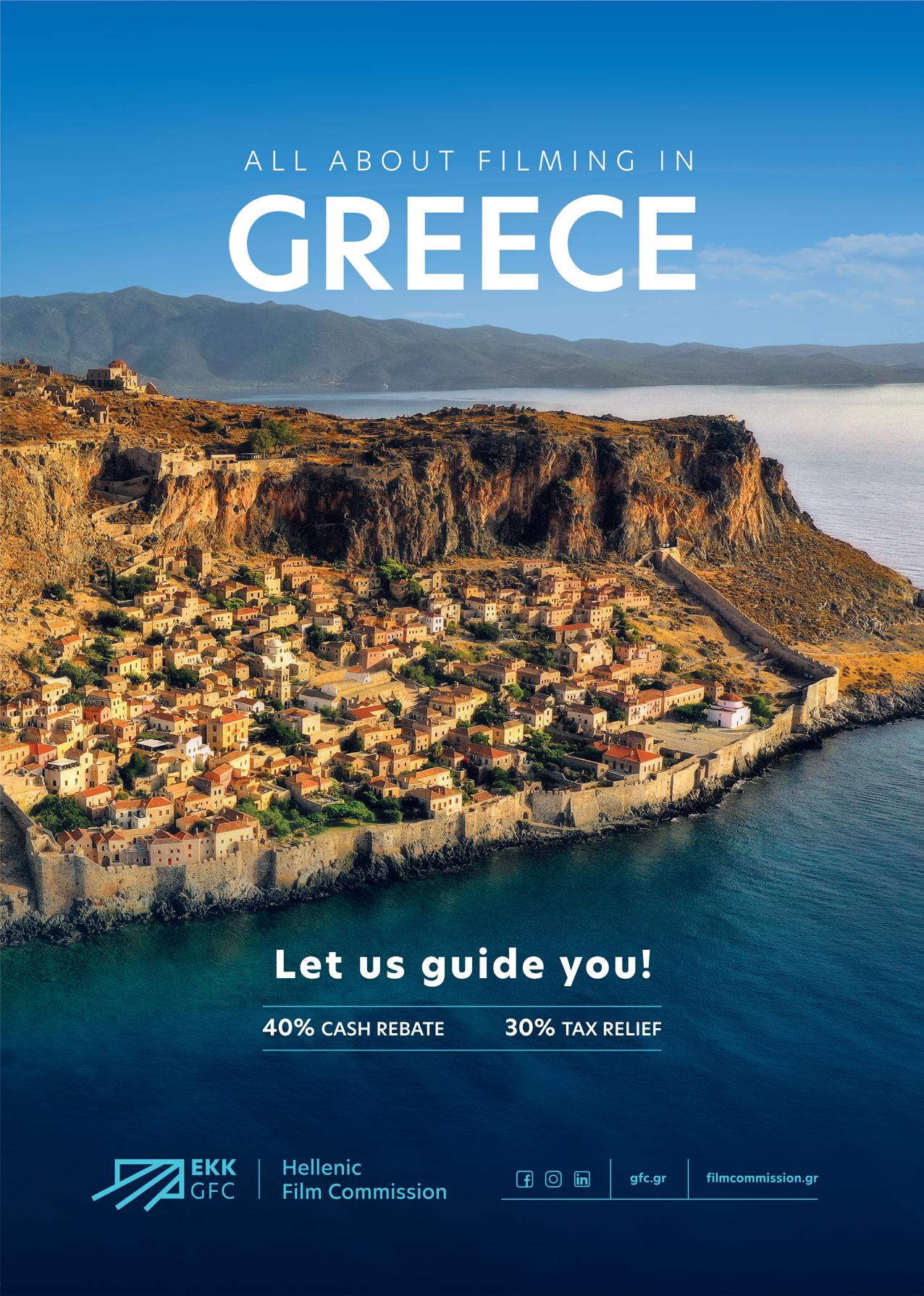
REAL INSIGHT INTO GLOBAL PRODUCTION 01−05−2023−11 FIGHTING FOR SPACE Orbital filmmaking lifts off new era of location exploration COBOT CREATORS The practical and legal implications of an AI work mate CANNES 2023 #11

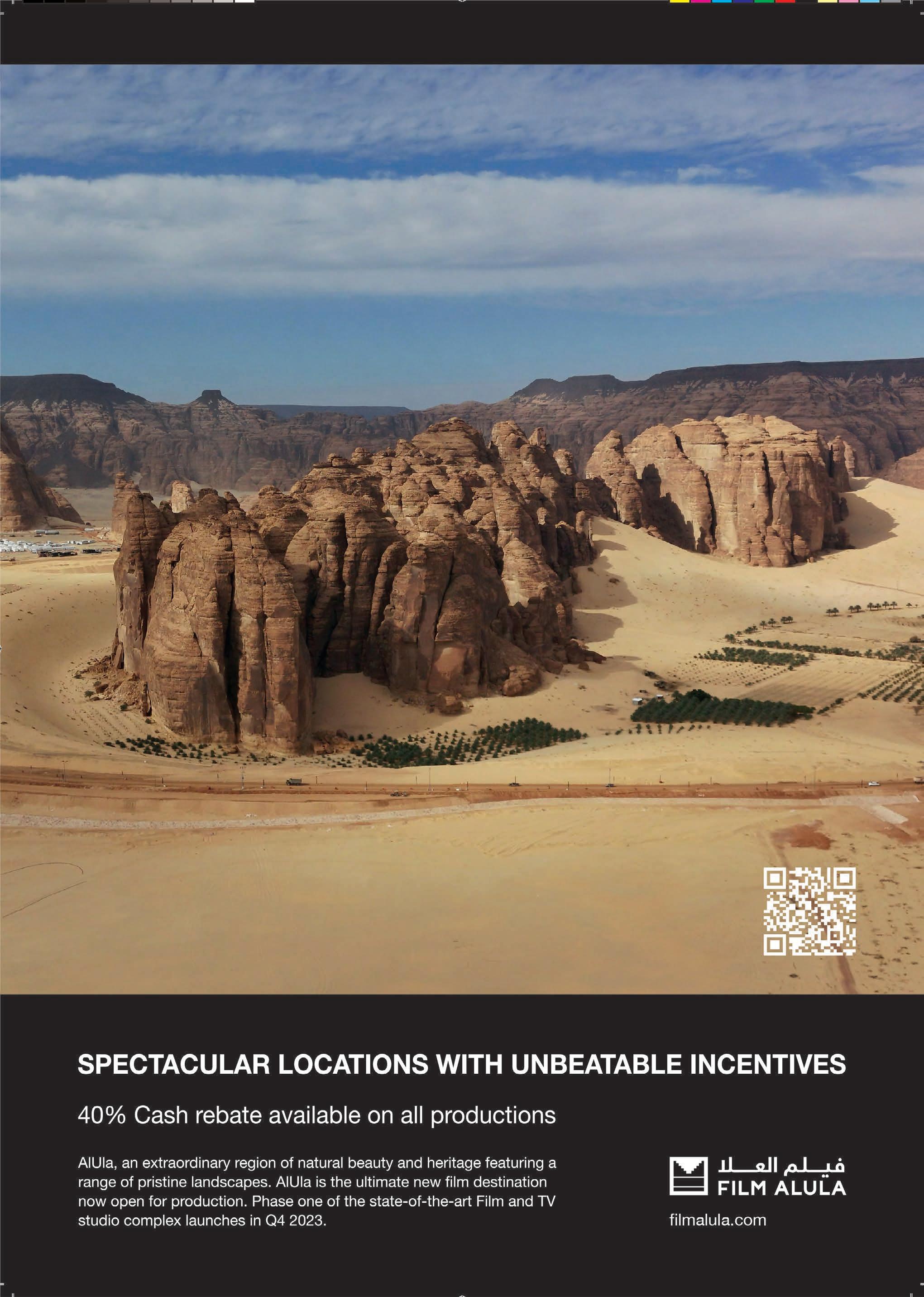
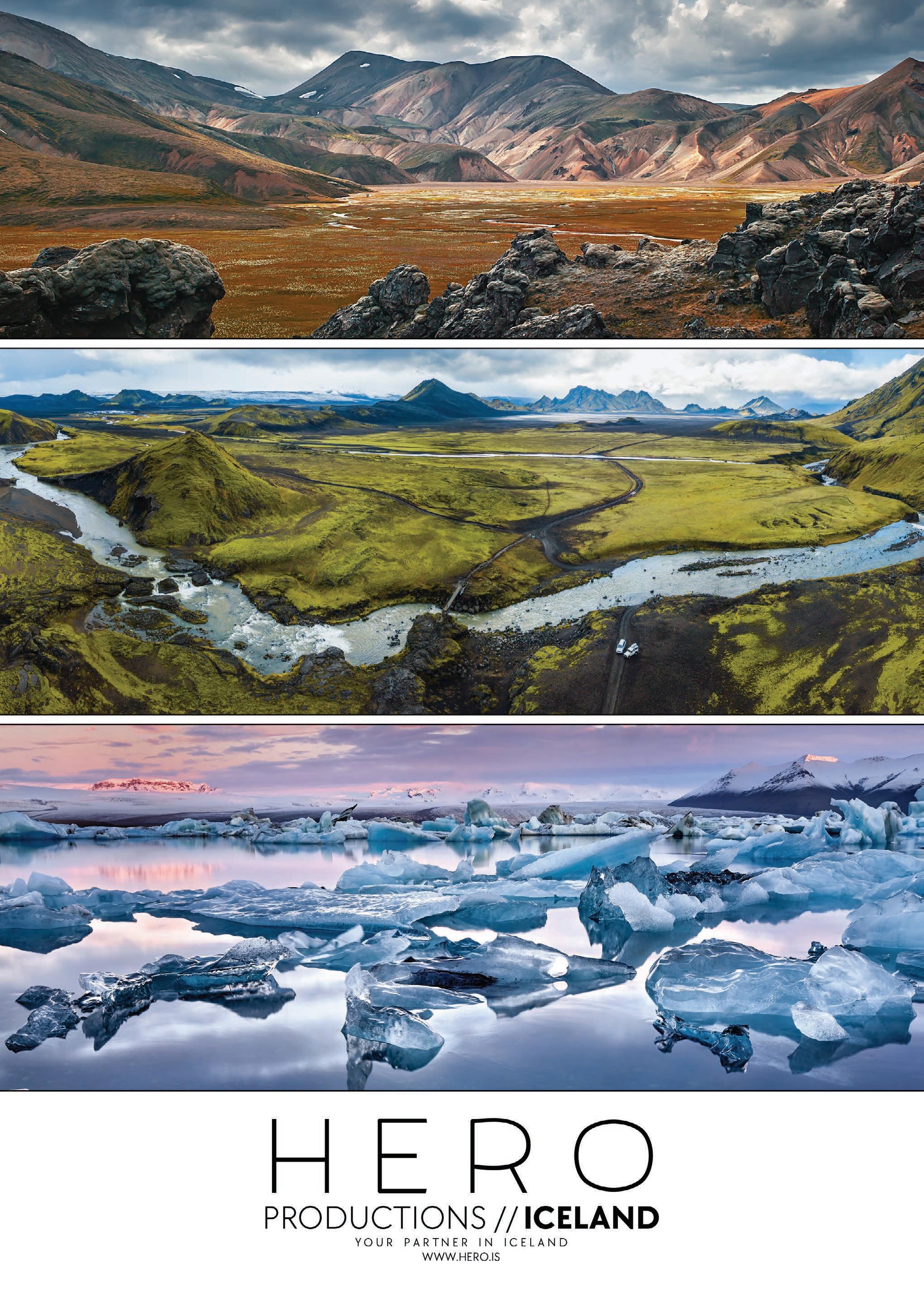
EDITOR
Adrian Pennington
LOCATIONS EDITORS
Kianna Best, Chris Evans
ART DIRECTION & COVER IMAGE
Les éditions du bois du Marquis
HEAD OF PRODUCTION
David Lewis
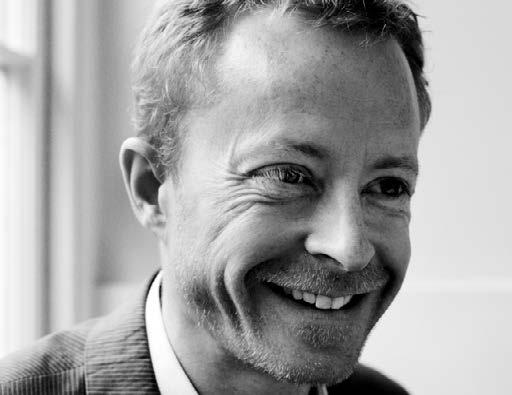
INTERNATIONAL SALES MANAGER
Rodrigo Carrasco
COMMERCIAL DIRECTOR


Clara Lé
RESEARCH & DEVELOPMENT DIRECTOR
Chloe Lai
DATA & MARKETING EXECUTIVE
Daniele Antonini
Welcome to our 11th edition of makers and to Cannes. With Netflix still blocked from competition, the festival remains defiant in the face of change. It’s not just the business models of streamers that are upending convention but the technologies to create motion pictures of all types which is both alarming and exciting. Synthetic media to recreate dead actors’ voices or performance are already part of Hollywood’s VFX. Deepfake likenesses used with or without consent are populating content. We examine the legal minefield on p54. The video gaming market is already bigger in value than the global movie business but are attempts at blending the two media finally succeeding? The Last of Us could be an outlier or it could signal the emergence of a new form of storytelling, explored on p137.
Just as audiences can already become a player in branching narratives like Netflix’s Kaleidoscope, it’s increasingly possible to generate personalised interactive experiences in a live environment too. Although traditionally not thought of as a technology, the owners of physical spaces are giving artists or museum curators the ability to adapt the building for fan experiences as described on p74.
FINANCE
Desmond Kroats, Farhana Anjum
CONTRIBUTORS
Dawn McCarthy-Simpson MBE, Michael Glaser, Jennifer Freed, Michael Burns, Emily Williams
MANAGING DIRECTOR
Jean-Frédéric Garcia
CONSULTANT
Ben Greenish
FOUNDER
Murray Ashton IN MEMORY OF Sue Hayes
PRINTERS
Barley Print, UK
No technology is more potentially disruptive to jobs, work processes and content creation than Generative AI. The ways in which Gen-AI is being embraced by marketers is a topic of concern on p22.
Also in this issue, we address how advertisers might entertain with empathy to engage consumers caught in the cost-of-living crisis (p143) and showcase the efforts of female gaffers and sparks to forge ahead in the still male dominated lighting department (p110). No filmmaker pushes the boundaries of production tech more than James Cameron. Could Avatar 3 do for fire what Avatar 2 did for water? Find out on p116.
Plus, ladies and gentlemen, we are floating in space. Rather than mock up the feeling of gravity, the race to film 300km above Earth has begun. We feature an interview with the first professional director to shoot on the ISS. Having made the giant leap into orbital production surely it’s only one small step to shooting on the lunar surface.
See you there. Adrian Pennington, Editor
If you have any feedback, or would like to get in touch, drop us a line at info@thelocationguide.com
PLEASE ADDRESS ALL ENQUIRIES TO THE PUBLISHERS

The Location Guide, 312, Mare Street Studios, 203/213 Mare Street, London, E8 3QE UK
T (44 20) 7036 0020
E info@thelocationguide.com
W www.thelocationguide.com
2023 © The Location Guide Limited. All rights reserved. No part of this publication may be copied or reproduced in any form whatsoever, by photocopying, electronic or mechanical means without prior written consent of the publisher. The publisher has taken all reasonable efforts to ensure that the information presented is accurate and correct, but cannot take responsibility for any omissions or errors, nor take any liability for any misuse of images or of the information.
5
IT’S NOT JUST THE BUSINESS MODELS OF STREAMERS THAT ARE UPENDING CONVENTION BUT THE TECHNOLOGIES TO CREATE MOTION PICTURES OF ALL TYPES WHICH IS BOTH ALARMING AND EXCITING.
008
>FEATURES
022 Unchained Inspiration
Creative design teams are exploring AI tools. Anything to worry about?
030 A Golden Goodbye
Streaming changed the television landscape, but is it reverting to type?
036 It’s a World Party
This year’s Eurovision will be a real test for the teams backstage
047 Turning Up the Volume
Virtual production volumes are cropping up all over the US but is it transforming the filming landscape?
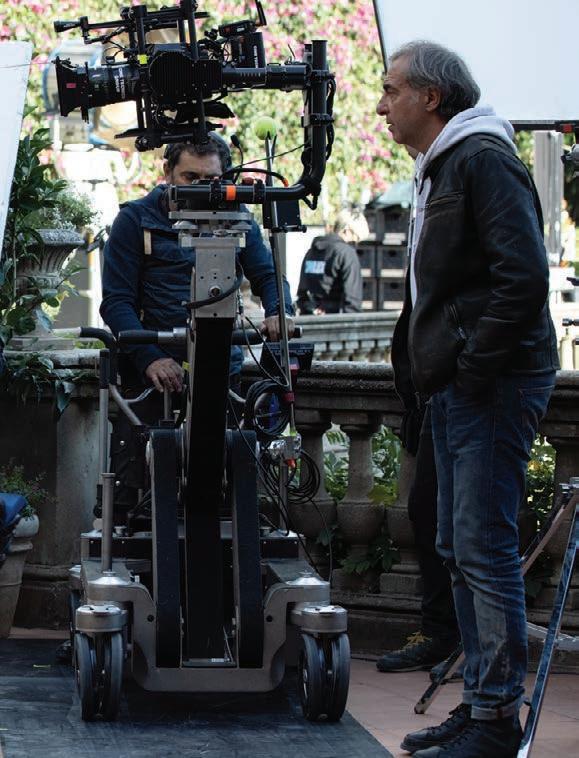
019 Report
FOCUS 2022 Meet the makers
029 Comment
AI IS CHANGING THE GAME
Expert Emily Williams investigates
012
>CLOSE UP
016 Around the World NOT IN KANSAS ANYMORE
With supervising location manager Michael Glaser
034 Making of CUANDO LLEGUE LA TORMENTA
Five amateurs cross the Atlantic
038 Interview with FANFIX
Co-founders Harry Gestetner & Simon Pompan discuss their business model
053 Comment
NO MORE SPREADSHEETS
Trevanna Tracks’ Jennifer Freed outlines why 2023 is vital for music licensing
054 Regulating Synthetic Media
Things are about to change but as it stands the law is a grey area when it comes to AI
058
Moon Shot: Space, the New Frontier of Filmmaking


The race for shooting in a low Earth orbit is heating up
074
The Persistence of Memory
Are we witnessing the birth of a new experiential storytelling medium?
080 TV is changing. Are you changing with it?
Cross platform advertising campaigns aren’t keeping up with connected TVs
041
>AROUND THE WORLD
From incentives to location highlights, makers presents a series of in-depth guides to some of the world's most film friendly regions
041 France
The French connection
064 Jordan Desert discovery
089 Malaysia Tropical appeal
115 Mongolia Hoards of choice
125 Philippines
A special blend
132
058
NEWS
>
from
News in Brief Production news
around the world
010 The World at a Glance Mapping global production trends
Tech & Facilities News From cameras to studios, the latest in production technology news
6
095
Mission: Possible
Hosting the latest & greatest Mission: Impossible stunt, Norway is proving to be the go to place for action sequences
099 Over Land & Sea
How do the specialist production service companies & fixers make out of the ordinary tasks seem so straightforward?
110
Production Lighting Illuminates Diversity
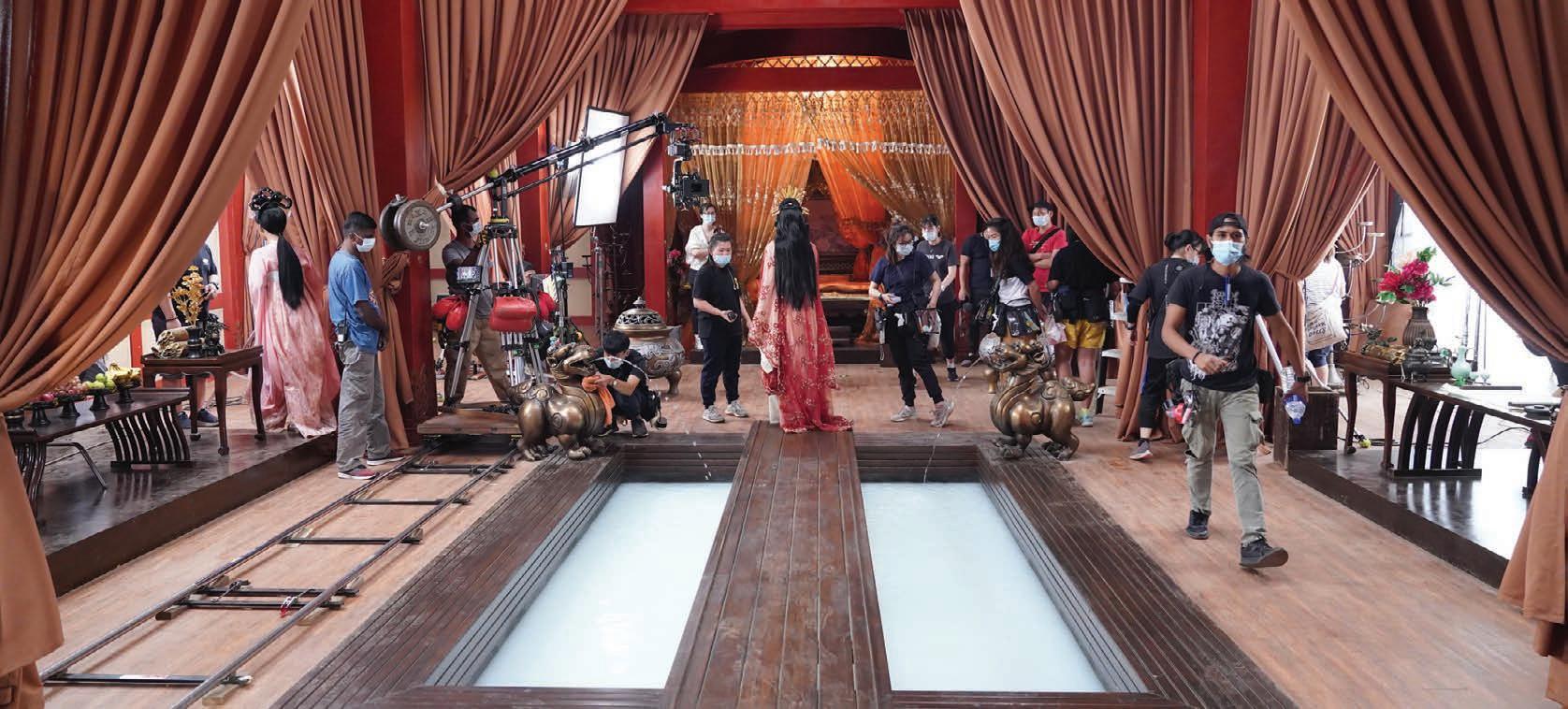
The number of women in the lighting department is disproportionately low
116 How to Make Fire
makers asked VFX specialists about the history of this elemental effect & how easy it is to achieve
063 Interview with KLIM SHIPENKO
Filming The Challenge, the first to shoot in space, in zero gravity
066 Report
CANNES FILM 2023
A-list auteurs cram the Croisette
068 Comment
THE HISTORY OF UK TV PLC
Dawn McCarthy-Simpson charts the growth of a global cultural powerhouse
078 Making of WE MIGHT AS WELL BE DEAD Student film lauded on festival circuit finds a unique space in a major city
110
084 Report
CANNES LIONS 2023 New creative benchmarks
103 Profile
COPENHAGEN INDUSTRIES
The makers & shakers Award winners are redefining how the industry sees and uses prop firearms
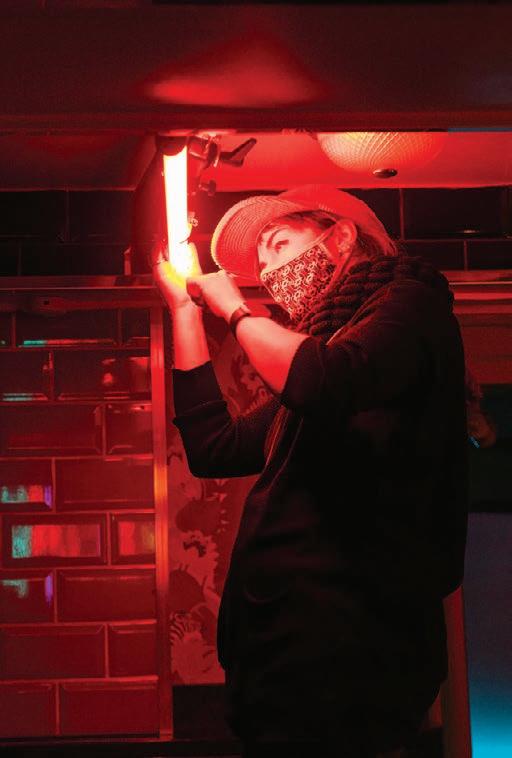
107 Interview with LEO ANNA THOMAS
Co-director of 6ft from the Spotlight, wellbeing facilitator & art director
109 Profile BLUEBOLT
The post facility was a rarity in 2009 in being led by female executives & remains an outlier today
122 How to Make a Viral
How are artists standing out from their peers in the streaming wars?
130 If TikTok Dies
089
Hit
TikTok is the most influential social video app on the planet. What happens if it’s banned?
134 Love the Island
European films & TV series, like Channel 5’s Love Rat, are swooping into Cyprus
137 Switch to
Storytelling Mode
TV & film video game adaptations continue to grow in popularity
143 Entertain with Empathy
How is marketing adapting to the cost of living crisis?
120 Making of CARTIER TANK
Publicis Luxe sprinkles the minute-long blockbuster with Gallic stardust
127 Report
MAKERS & SHAKERS AWARDS 2022
Bigger & better than ever
132 Interview with XAVI GIMENEZ
The Spanish cinematographer discusses his trade
140 Making of BLUE LIGHTS
Police procedural gives new dimensions to the city of Belfast
7
NEWS in brief
PRODUCTION NEWS FROM AROUND THE WORLD
AMAZON’S FORMULA FOR INTERNATIONAL EXPANSION
Amazon Prime Video is scouting for more international franchises that follow the model of the Russo brothers’ drama Citadel. Amazon Studios International Chief James Farrell said the streamer wants shows with budgets from between USD1 million and USD3 million per episode. “You want around one new launch every month,” he said at Series Mania in Lille.
Amazon Studios’ LA operation takes on the high budget shows, which tend to be north of USD70 million, such as Citadel.
Farrell said the ambition is to ensure the US and international slates are “complementary”, with Citadel underscoring how US-born franchises can play into that strategy.
The high-profile show, which has a budget of around USD160 million, is from Anthony and Joe Russo’s US production outfit AGBO, but there are also
IRELAND PRODUCTION SPEND TOPS EUR361 MILLION
Production spend in Ireland across feature films, television and animation reached EUR361 million in 2022, down on 2021’s record year, but an increase on a pre-pandemic 2019.
Although a fall from the record high of EUR500 million in 2021, this has been deemed exceptional due to the increased level of activity taking place following the Covid-related production shutdowns.
FILMING EXTINCTION
Surviving Earth, an eight part documentary about mass extinction moments throughout the Earth’s history, is filming in various locations worldwide.
Universal Television Alternative Studio, a division of Universal Studio Group, and Loud Minds, the factual and drama indie established by Tim Haines (Walking with Dinosaurs) claims it to be the most ambitious, cinematic and dramatic high-concept series to date.
The series will blend location filming at 12 destinations including New Caledonia in the South Pacific with CGI to tell the dramatic stories of extraordinary creatures trying to survive against all odds. Milk is the lead VFX vendor.
Tim Haines, Showrunner said, “Surviving Earth is on course to be one of the most ambitious, high-concept series ever created by a UK indie. It has been years in development, travels to incredible
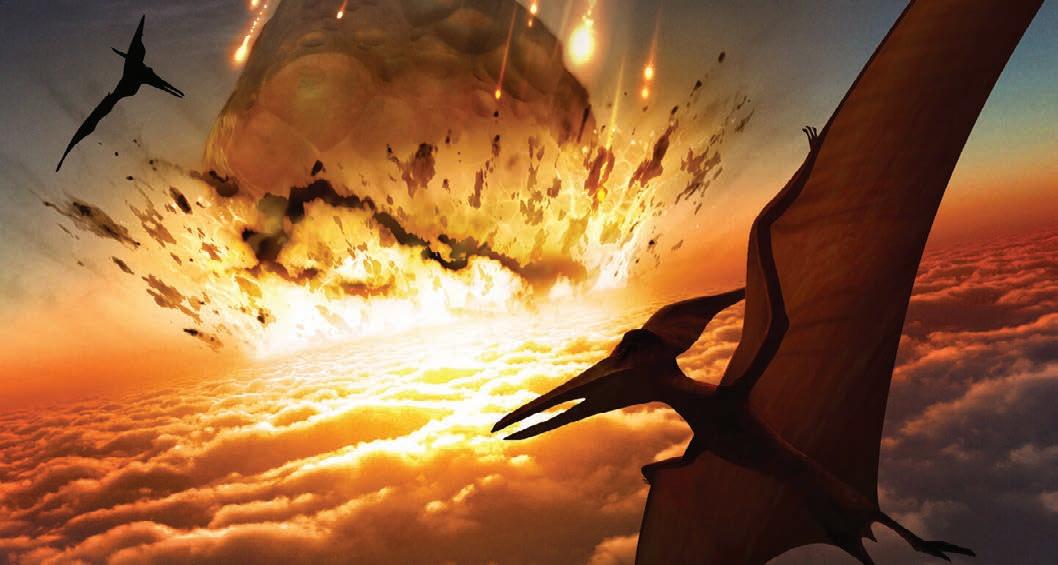
Universal Pictures’ Cocaine Bear, Netflix’s Vikings: Valhalla and Bron Studios’ and Headline Pictures’ crime series Kin, were among the international projects that shot in Ireland in 2022.

Screen Ireland is backing 44 upcoming projects including John Carney’s Flora And Son, produced by Treasure Entertainment for Apple TV; Fastnet Films’ Apocalypse Clown, and Ian Hunt-Duffy’s
Italian and Indian versions in the works. The cast across the series includes Richard Madden , Priyanka Chopra Jonas and Stanley Tucci.
Other country-specific shows are also in development and Farrell talked up the franchise model as “a cool way to take customers on a journey, which is something no one has really done before.”
Prime Video has already dipped several toes into the franchise experiment with spin-offs from its hit superhero series The Boys, while the Bosch universe has expanded on Amazon’s Freevee service.
He also said Amazon was looking to be a “good corporate steward” during the cost-of-living crisis. “There are wars and political situations so we want to be thoughtful about what we spend. That means if we can produce a movie with 20 locations instead of 30, or cut the number of episodes from eight to six, then we’ll do that. We want to be responsible.”
Double Blind, produced by Failsafe Films, about seven young people who arrive at a remote facility to take part in a clinical drug trial.
Screen Ireland also has a new EUR3.5 million Regional Support Fund to support the development of skills around Ireland – outside of Dublin and Wicklow – and it is targeted towards crew across all grades, including new entrants.
locations and brings together some of the most talented filmmakers and leading digital technicians to ensure that what ends up on screen really blows your mind. More than that, however, it has a deep focus on storyline and script that we believe will
elevate the whole viewing experience into something altogether more cinematic and memorable.”
Surviving Earth will air on NBC and stream on Peacock.
8
Vikings: Valhalla © Bernard Walsh/Netflix.
Surving Earth © Mark Garlick/Science Photo Library/Getty Images.
FREMANTLE INKS
FIRSTLOOK WITH BERGER
Fremantle has secured a two-year, first-look deal with Nine Hours, the production label set up by director Edward Berger.
Berger is the director of BAFTA winning best picture All Quiet on the Western Front, Patrick Melrose, Your Honor and Fremantle series Deutschland 83. Berger also won a Best director BAFTA award and All Quiet won the Academy Award for best international feature.
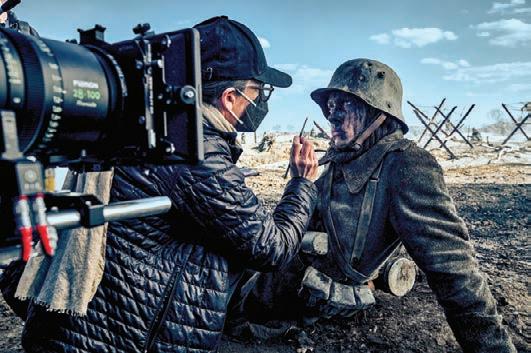
Nine Hours was launched by Berger and partner Luke Rivett (Berlin Station) with producer Jeanne Tremsal (So Long Daddy).
Berger said: “Great drama comes from filmmakers who have an undeniable urge to tell their story. We intend to find and nourish these filmmakers in their endeavors to bring their grounded, intelligent and cinematic vision to the screen. We couldn’t have found a more exciting partner than Fremantle for this dream.”
THE RIG RETURNS
Prime Video has ordered a second instalment of supernatural series The Rig from Wild Mercury starring Martin Compston and Emily Hampshire. Production returns to FirstStage Studios in Edinburgh with filming due to start later this year.
“It was always my aim to build a story that starts in Scotland but speaks to a global audience about global themes,” said David Macpherson, writer and creator. “In series two, I’m looking forward to expanding the world of our show through the eyes of our excellent cast, as we deliver more shocks and thrills and delve deeper into both our characters’ and our show’s expanding original mythology.”
The executive producers are Derek Wax for Wild Mercury (a Banijay UK company), David Macpherson, and John Strickland. The producer is Suzanne Reid, and the co-producer is Matt Brown.
Argo Films ties with Malaysian indie

Argo Films has formed Sympatico, a new partnership with Double Vision, the award-winning Malaysian production company that is responsible for Asian versions of hit global drama series The Bridge and Liar.
Min Lim, head of production at Double Vision and partner in Sympatico said: “Too often, Southeast Asia has been portrayed in a mix of styles on screen with, for example, iconic establishing shots of Kuala Lumpur’s Twin Towers soon giving way to a location that resembles Vietnam, mixed with Hong Kong by way of Vancouver. And stories set here are frequently told from a Western perspective with ‘white saviour’ characters leading the charge, side-lining local voices.
WGA APPLIES BRAKE ON AI SCRIPTS
The Writers Guild of America (WGA) has proposed new rules to regulate the use of AI in film and television production.
The union is seeking assurances from studios that AI-generated text can’t be used as source material or to rewrite work that is covered by the union's contract; the work cannot be considered in determining writing credits; and that writers may not be assigned AI-generated material to adapt either.
"They can make the writer aware of AI-generated content," the WGA said. "But, like all research material, it has no role in guild-covered work, nor in the chain of title in the intellectual property. It is important to note that AI software does not create anything. It generates a regurgitation of what it's fed."
“If we have a production set in Malaysia it will be filmed here, and the characters will speak proper Malay. And more importantly, we will have Asian characters as true and equal leads in stories that are as much about them and their country as it is about their Western counterparts. To this end, every title on the Sympatico slate has both Southeast Asian and British writers and creatives working closely together to ensure that they will be nothing less than true collaborations.”
Christian Vesper, CEO Global Drama, Fremantle, added: “We have long admired Edward’s talent and creative vision since working with him on the Emmy-nominated series Deutschland 83 We are honoured that he has chosen to partner with us as he launches his new label Nine Hours and at such a seminal moment in his career.”
NAMIBIAN FILM SISTERHOOD
The Namibia Film Commission has launched the Namibian Sisters Working in Film and Television (SWIFT). The aim is to deal with various obstacles encountered by women in film and television while offering women the opportunity to promote each other’s work, fundraise for content and share skills. This follows engagement with NFC’s sister organisation in South Africa which has been promoting equality in a “male-dominated industry” since 2016.
The WGA previously included the issue of regulating AI in its so-called pattern of demands put to the studios in March.
The talks are being closely watched amid fears they could lead to a strike over disagreements about how writers should be compensated for their work that ends up on streaming platforms.
The contract under negotiation between WGA and the Alliance of Motion Picture and Television Producers already describes a writer as a person, but the union wants to make sure that AI isn't used by studios to circumvent their members.
"We're going to make sure that it's clearly and explicitly stated that you can't replace a writer with AI," David Goodman, former WGA president and negotiating committee co-chair, told The LA Times.
Argo’s Richard Johns said, “Strategically, Southeast Asia is certainly a region to watch and well-placed to deliver the next big thing. Not only do territories such as Malaysia have their own unique culture, people and locations but it also has an industrious and skilled production sector and a highly competitive film and TV production incentive.
The new JV’s slate includes the drama Emergency, in partnership with Fremantle, and the feature Tudung Girl described as Die Hard meets High Noon.
9
“IF WE HAVE A PRODUCTION SET IN MALAYSIA IT WILL BE FILMED HERE, AND THE CHARACTERS WILL SPEAK PROPER MALAY.”
THE WRITERS GUILD OF AMERICA HAS PROPOSED NEW RULES TO REGULATE THE USE OF AI IN FILM AND TELEVISION PRODUCTION.
All Quiet on the Western Front © Reiner Bajo.
The world at a glance
SWEDEN 11
CZECH REPUBLIC 12
CANADA 10
NEW MEXICO 2
IRELAND 7
WALES 4
SWITZERLAND 9
AUSTRIA 8
HUNGARY 14
MALTA 6
TANZANIA 5
SOUTH AMERICA 1
SOUTH AFRICA 13
10
SOUTH AMERICA
Berlin-based Russian director Kirill Serebrennikov’s The Disappearance, set to star August Diehl as Nazi war criminal Josef Mengele, shoots in South America this summer.
NEW MEXICO
Netflix action-adventure series American Primeval filmed in and around Santa Fe, including a scene on Pajarito Mountain. The production will employ 3,420 New Mexican extras, 750 crew members and 20 principal actors.
AUSTRALIA
RDF West is producing six-part Channel 4 reality show Outback Brits in Australia. The show follows the highs and lows of life working on a remote farm.
WALES
Aria Studios in Snowdonia, North Wales, has officially opened. The 20,000 sqft studio is run by Rondo Media and S4C Digital Media, with the support of the Welsh Government through Creative Wales.
TANZANIA
Idris Elba announced plans to invest in a new film studio in Tanzania. The 49-year-old actor starred in Beast which was entirely shot in South Africa.
MALTA
The third season of Amazon Freevee’s Alex Rider shot in Malta and the UK. Produced by Eleventh Hour Films the series is based on Anthony Horowitz’s novel Scorpia.
IRELAND
Locations in and around Limerick doubled as 1940s Germany for EUR22 million Irish-Belgian co-production God’s Spy, a based-on-fact story about a German pastor who stood up to the Nazis, directed by Todd Karnack.
AUSTRIA
HBO drama The Palace, starring Kate Winslet, is the first international project supported by the Vienna Film Commission’s FISAplus incentive scheme. The Stephen Frears directed series filmed in the city.
SWITZERLAND
Philippines’ romantic drama Unbreak My Heart shot on location in Switzerland. The series is co-produced by GMA Network, ABS-CBN and Viu Philippines.
CANADA
The prequel series to horror hit It is filming in Toronto. HBO Max’s Welcome to Derry is the origin story of Pennywise the Clown, directed by Andy Muschietti with showrunner Jason Fuchs.
SWEDEN
Studio Fares says it owns Europe’s largest projector-based virtual production wall. Measuring 24m x 8m and based in Trollhättan, Studio Fares is already the second largest sound-stage in Scandinavia with an area of 1,100 sqm.
CZECH REPUBLIC
Robert Eggers is reimagining Nosferatu in Prague. The Focus Features picture stars Aaron Taylor-Johnson, Willem Dafoe and Lily-Rose Depp.
SOUTH AFRICA
Natalie Dormer leads crime thriller series White Lies set and shot in Cape Town for filmmaker and producers M-Net, Quizzical Pictures and Fremantle.
HUNGARY
Origo Studios Budapest is home to director Fede Alvarez’s take on Alien. The latest in the franchise is produced by Ridley Scott via his Scott Free banner.
RIDLEY SCOTT NOSFERATU HBO 11
1 2 3 8 9 10 12 11 6 13 7 14 4 5 AUSTRALIA 3
NEWS tech & facilities
FROM CAMERAS TO STUDIOS, THE LATEST IN PRODUCTION TECHNOLOGY NEWS
UK’S RECORD GBP6.27 BILLION PRODUCTION SPEND
The BFI’s latest figures show the combined spend by film and HETV production during 2022 reached GBP6.27 billion, the highest ever reported and GBP1.83 billion higher than 2019.
Most of the total spend was contributed by television with GBP4.30 billion, with feature film production contributing GBP1.97 billion. Inward investment films and high-end television shows delivered GBP5.37 billion of the combined production spend.
The total number of films going into production in the UK in 2022 was 220, 11 more than 2021. Spend on independent UK filmmaking, however, showed a downturn with GBP174 million, a 31% decrease on 2021. Co-productions which are generally made by indie producers saw a 3% increase
Buckinghamshire Council has approved plans for a 1.4 million sqft expansion at Pinewood Studios.
The investment will deliver 21 new purpose-built sound stages, a backlot filming space, education and training hub and a publicly accessible nature reserve.
Pinewood says the expansion will create over 8,000 new jobs and inject GBP640 million a year into the UK economy. Once complete, Pinewood Studios will be the biggest studio complex in the world, with a total of 51 purpose-built stages.
SUNDERWOOD
FulwellCain Studios, a joint venture between production outfit Fulwell 73 and Cain International, has announced plans for Crown Works Studios in Sunderland.
The JV will spearhead the development of a 1.68 million sqft film industry hub at Pallion, Sunderland with 20 sound stages. The scheme will be delivered in three phases, starting this year and finishing by 2027.

Fulwell 73’s partners include the producers Gabe Turner and Leo Pearlman and actor/presenter James Corden. They say the scheme could generate GBP334 million for the local economy every year,
INGENUITY OPENS LONDON STUDIO
Ingenuity Studios, a VFX division of US-based Streamland Media, has opened a London office and appointed former DNEG and MPC staffer Patrick Dean as executive producer and office lead. Dean’s experience includes work on Lisey’s Story, Chernobyl and SAS Rogue Heroes.

“We’re enthusiastic about having a presence in the UK, and it’s important to note that we’ve been thoughtful about the kind of person we wanted to lead our team for our European flagship,” said David Lebensfeld, founding partner and VFX supervisor at Ingenuity Studios. “We found that leader in Patrick.”
Grant Miller, partner and VFX supervisor at Ingenuity Studios, added: “The studio is in growth
in spend with GBP59 million, representing continued growth over the past five years.
The statistics also reveal an increasing investment made by streamer platforms in single long-form productions. In 2022, there were 22 of such productions which contributed GBP938.8 million to the high-end television pot. These productions include Blitz (Steve McQueen), Napoleon (Ridley Scott) and Saltburn (Emerald Fennell).
BFC Chief Executive Adrian Wootton, said: “It’s a real testament to the strength of our regional as well as metropolitan offer that so many major film and high-end television productions choose to base themselves in the UK. With the right levels of ongoing investment in skills, support and infrastructure, the UK is well-positioned to attract major international film and television productions for many years to come.’’
mode and taking on lots of exciting new projects. We’re also recruiting amazing talent for our London office, and have received a ton of interest from candidates already.”
“creating jobs and contract opportunities spanning a vast range of disciplines including the trades and manual skills; putting the region on the map as a global production destination.”
“Through delivering the studios, we will create a long term production industry infrastructure, attract even more significant high-end production to the UK and ensure that future generations of North Eastern talent can develop and prosper at home within the region.”
The scheme is in addition to already announced plans for Shipyard Studios which will support a wider cluster of film and media activity. No-one is calling it Sunder-Wood, yet.

12
©
EYELEVEL Creative Limited.
SAS Rogue Heroes © BBC / Kudos / Robert Viglask.
CUEBRIC FOR AI VIRTUAL PRODUCTION
Production studio Seyhan Lee and production company XR Studios launched Cuebric, a generative AI technology to speed virtual production filmmaking.
Like other text-to-image generative AI tools, Cuebric users begin by entering a text prompt describing any setting they imagine. Cuebric then generates that setting in near real-time, allowing users to make and implement changes, with each new iteration taking just seconds to generate in 4K resolution.
It is integrated with Unreal Engine, and designed for use in concepting, previsualisation or filming on a volume stage.
“The advent of creative AI can be likened to the invention of photography, and Cuebric ushers in the next generation of that technology,” said Seyhan Lee co-founder, Pinar Seyhan Demirdag. “Cuebric cuts out repetitive, time-consuming, and highly expensive tasks and lets directors, production designers, and production houses realise their vision instantly.”
XR Studios features the tool at its Hollywood Campus in LA.
IRELAND GETS MILK
VFX Studio Milk is opening a studio in Dublin with Ciaran Crowley at the helm. As VFX Supervisor Crowley has worked on Inception, The Dark Knight, Catherine Called Birdy (Amazon/Working Title) and Swagger (Apple TV).
He said, “As a Dublin native, I am especially pleased we will be setting up a studio at home. Ireland has a wealth of fabulous talent, and [this move] will enable us to create more high quality film and episodic content for clients while supporting and enhancing the on-going skills development of Ireland as a significant centre for the VFX industry.
The Milk Ireland Studio will collaborate on projects including Loud Minds’ eight-part NBC documentary Surviving Earth.
Milk recently opened an outpost in France and follows on from the acquisition of Soho-based, Lola Post Production in October.

VIRTUAL PRODUCTION HUB PLANNED FOR CARDIFF
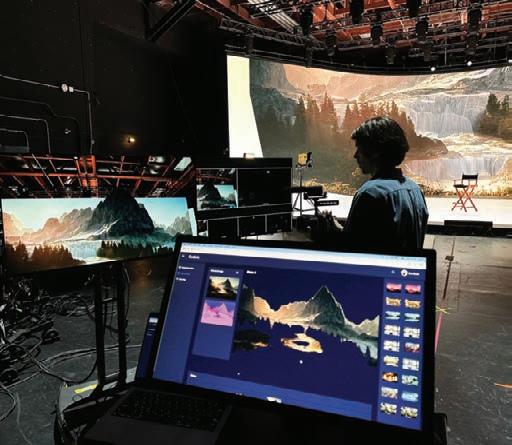
London-based Great Point Media is collaborating with Fields Park, US-based Volume Global and Media Cymru to build a virtual production hub at Great Point Seren Studios in Cardiff.
Seren Virtual Productions will host film and high-end television projects and a virtual production research and training academy in collaboration with Media Cymru.
Professor Sara Pepper OBE, Deputy Director of Media Cymru said: “The development of a world-class VP studio and training and research facility at Seren will have a profound impact on the media cluster in the Cardiff Capital Region and a ripple effect throughout Wales and the UK. It signals a clear ambition: to provide a high-end facility which will attract interest from content creators across the globe. We look forward to the potential for boundary-pushing R&D activity in this new space in our city region.”
The complex is powered by green electricity, generated on-site by wind turbine. The site recently hosted Gareth Evan’s Netflix action-thriller, Havoc, starring Tom Hardy.
New Mexico opens more space
New Mexico has eight new qualified filming facilities, the state’s Film Office announced.
“Finding studio space is an industry-wide problem,” Film Office director Amber Dodson told the Albuquerque Journal, “With the newly certified sites, it helps create the space we need for productions because there is so much demand.”
Productions utilising qualified facilities in New Mexico, as per the state’s film incentive, are eligible for a 5% uplift on qualifying expenditures.
Among the new facilities is Hanover Studios, located in Albuquerque with a 25,000 sqft stage, and Stanley Ranch, a standing set movie ranch located south of Santa Fe.
With the eight additions, the list of Qualified Production Facilities is now 21 statewide.
DO MOVES FILM SCANNING TO PINEWOOD
Digital Orchard Group’s film scanning operation has moved to Kodak Film Lab London, based at Pinewood Studios.

The move will see Kodak’s negative processing services for motion picture films and Digital Orchard’s expertise in film scanning & finished scan digital workflows combined at one facility.
Sam Margaritis, MD at Digital Orchard said: “We’re thrilled to be able to move our film servicing operations to Kodak Film Lab London in order to strengthen our partnership and offer filmmakers the world’s very best film scanning technology & expertise, directly where their negatives are processed. It’s a testament to our ongoing commitment to provide the very best in service and quality for our clients in the UK & around the world.”
13
THE DEVELOPMENT OF A WORLD-CLASS VP STUDIO AND TRAINING AND RESEARCH FACILITY AT SEREN WILL HAVE A PROFOUND IMPACT ON THE MEDIA CLUSTER IN THE CARDIFF CAPITAL REGION AND A RIPPLE EFFECT THROUGHOUT WALES AND THE UK.

ALICANTE, LAND OF CINEMA
CIUDAD DE LA LUZ IS THE MOST MODERN FILM STUDIO IN EUROPE: A COMPLEX WITH ADVANCED AUDIOVISUAL PRODUCTION SERVICES AND ALL THE MEANS AND FACILITIES FOR THE DEVELOPMENT OF PROJECTS.
Ciudad de la Luz is owned by the Government of Valencia, which is working to make this complex the headquarters of the largest audiovisual production center in Europe.
The studios are equipped with large areas for film, television and advertising production with advanced services to meet all the needs of the national and international market.
It has six sets, three production support buildings, workshops and warehouses, exterior filming areas and a water tank for underwater filming, among other facilities and services.
Facilities:
•Six sound stages – With a total of 120,000 sqft, the sound stage buildings are independent, soundproofed and air-conditioned.
•Three production support buildings – Includes the dressing rooms, hairdressing and make-up rooms, wardrobe, decoration and props storage rooms, meeting rooms, toilets and showers.
•One mill and workshop building – The building totals 120,550 sqft divided into several areas for the construction of sets: stage and storage areas, spaces for creating special effects, lighting and camera equipment and wardrobe storage.

•Two backlots – Outdoor filming areas of 1,805 acres and 193 acres with natural horizon, equipped with electricity supply, water and fibre optics.
BROUGHT TO YOU BY
• Backlot tank – Located in one of the backlots with dimensions of 32,808 ft x 26,247 ft, in addition to a blue screen on one of the sides.
•Water areas – This is one of the differentiating elements of the complex compared to other production centres in the world. It has a 86,000 sqft of backlot water tank, with a maximum depth 1,706 ft in the inner part.
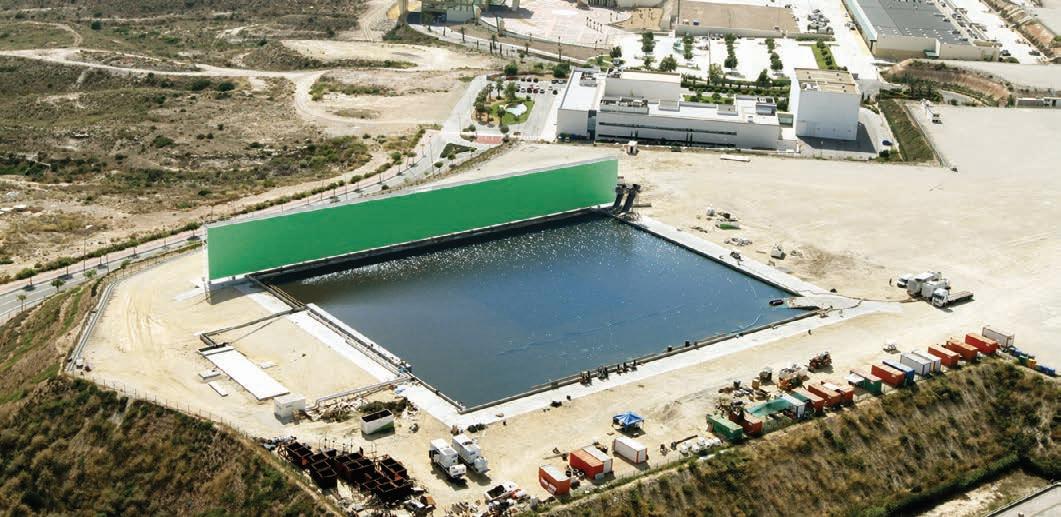
•Ancillary services for post-production – Services for sound post-production, editing and mixing, and even projection rooms with advanced technologies.

Tax incentives: Spain is positioned as a very competitive and profitable shooting destination for the international industry. Investments in foreign cinematographic and audiovisual productions entitle the producer to a tax deduction of 30% of the first EUR1 million of the deduction base and 25% if it exceeds that amount, with a maximum of EUR10 million per production.
The Region of Valencia foresees in 2023 an incentive for cinematographic and audiovisual production consisting of a direct subsidy of around 18 to 20% of the qualifying local expenditure that occurs in the region on the occasion of production with a maximum of EUR1.5 million per production.
FOR MORE INFORMATION CONTACT:
Marisol Blázquez
(+34) 965 315 800 / info@sptcv.net
www.sptcv.net/ciudaddelaluz/
15
“THE AMAZING WATER TANK HAS A MAXIMUM DEPTH 1,706 FT IN THE INNER PART PLUS A 86,000 SQ FT BACKLOT.”
A recent image from the spectacular water tank, the jewel of the film studios.
The Ciudad de la Luz facilities are prepared to host any type of filming.
Around the world Not in Kansas anymore
SIX LOCATIONS CHOSEN BY SUPERVISING LOCATION MANAGER MICHAEL GLASER
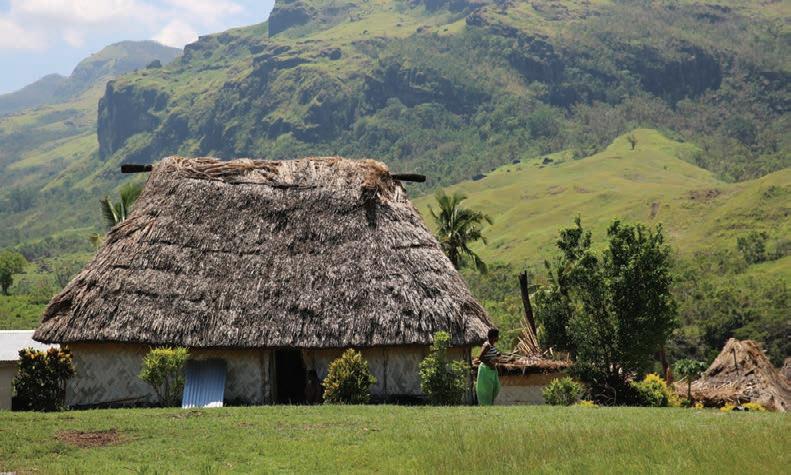
1 CAMBODIA: Survivor travels the world to find remote locations where the audience can feel like they've been transported far from the comfort of their living rooms. Scouting Cambodia was an obvious choice for the show. Angkor Wat and the access we were granted was a life-changing experience for myself and the crew. One of the top UNESCO sites in the world – it was an honour to work in such a sacred place.

2 SPAIN: Looking to cheat an Italian WWII village from the middle-ages brought Westworld season 3 to Besalú, Catalonia, Spain. The tight ancient streets and architecture were a cinematographer's dream and Besalú did not disappoint.
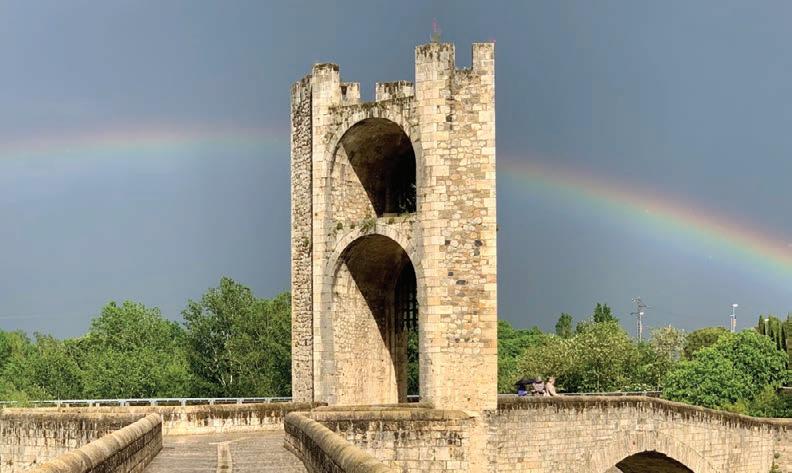
3 FIJI: The island nation of Fiji offers one of the best tax incentives of any place on earth. Bonus is they have some of the most beautiful beaches found anywhere. Survivor first came to Fiji in 2006 where the show had to navigate a military coup while in country. The show would return in 2016 and has filmed there since.
4 CALIFORNIA: Looking for another planet on your own planet let alone within driving distance from LA can be a challenge. Add a vista where you can see to the horizon with no structures or roads within the frame while staying off of federal land. Interstellar gave me such a task and it took us almost six months to find the perfect spot in the Mojave Desert.
16
5 MADAGASCAR: The word remote can be subjective when discussing a viable location to film. Antsiranana pushes the limits of logistics as the area is breathtaking in its beauty as well as grasping how you'll get the cast, crew and equipment to the location. I imagined Antsiranana Bay to be what San Francisco looked like well before Lewis & Clark ventured west. With Fiji's tax incentive being announced mid-scout however, it was scrapped for Survivor.

6 SPAIN: Architect Santiago Calatrava's City of Arts and Sciences in Valencia is hard to fit into the frame while doing it justice. It's a marvel in architecture and design. In Westworld season 3 we had the pleasure of exploring and filming just about every building on campus. We had two days to film the vast complex and six different episode directors there that day with only three camera bodies and lenses to go around. Running all over the property to find and reset the cameras for shots in six different episodes was the craziest thing I've done.

Michael Glaser is a Supervising Location Manager based in Los Angeles. After attending University of Kansas, he took his first locations job on Transformer: Revenge of the Fallen in 2008. Known for his international projects, Glaser has worked in Nicaragua, Fiji, Cambodia, Spain, Singapore as well as the US. Some of his more notable jobs include White Men Can’t Jump, Licorice Pizza, DEVS, Survivor, The Hateful Eight, Interstellar, The Dark Knight Rises, and Inception. Glaser is a member of the LMGI.
“I believe a film’s location is the uncredited supporting actor, a role that’s essential to a film’s success,” he says. “A location is the canvas for which a film is painted upon. Watching a location go from my scout camera to the big screen is the ultimate gratification.”

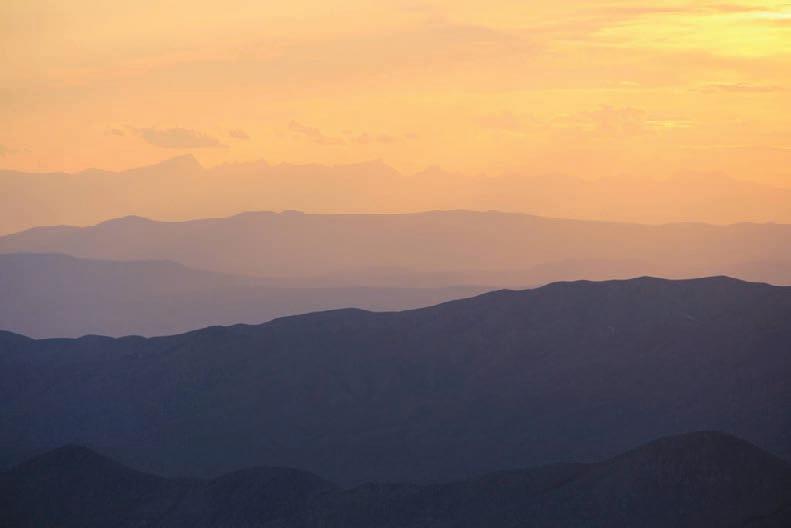
17

Meeting the Makers
CREATIVE SCREEN PROFESSIONALS FROM A RECORD 120 COUNTRIES PARTICIPATED IN THE EIGHTH EDITION OF FOCUS – THE MEETING PLACE FOR INTERNATIONAL PRODUCTION
Over 3,500 delegates, exhibitors and sponsors enjoyed two packed days of conference sessions and networking events at the Business Design Centre London last December, followed by two days of virtual meetings and speed networking on the event’s digital platform, extending the opportunities to connect.
Attendees were able to meet (in person and online) with 205 exhibiting companies, including international film commissions, agencies, film-friendly locations and production service companies, offering filming incentives and production solutions for all types and sizes of project.
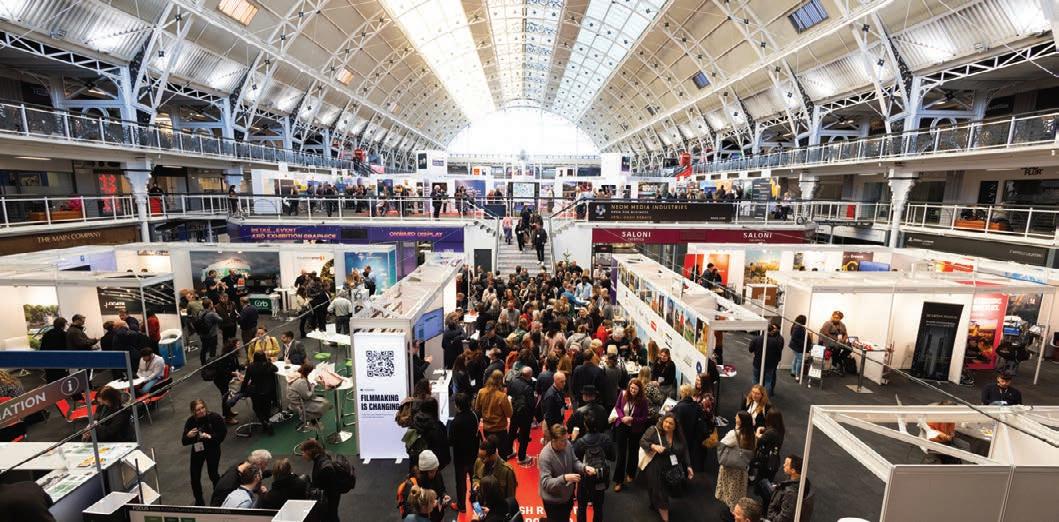
Sixty-five conference sessions and exhibitor presentations took place at the live show, featuring 192 expert speakers. Keynotes, panels, and workshops addressed the key talking points of 2022, ranging from film financing, co-production, diversity and inclusion, mental health, new talent,


Web3, AI, sustainability, virtual production, convergence of film & games, location filming, film festival strategy, working with sales agents, global incentives, what the streamers are looking for and much more. The conference programme was presented in association with media partner Variety. CCS Rights Management was the new content sponsor for this year’s edition.
The conference programme was delivered in conjunction with a wide range of partners including Pact, PGGB, BFI, British Film Commission,
19
FOCUS IS THAT ONE EVENT THAT EVERYONE SHOULD MARK DOWN TO ATTEND. IT'S THE PLACE FOR REAL NETWORKING TO HAPPEN, TO MEET AND INTERACT WITH THE RIGHT GROUPS AND PEOPLE TO MAKE AN IMPACT.
JOHN RAKICH LMGI
ScreenSkills, Advertising Producers Association, UK Screen Alliance, Directors UK, LMGI, MediaXchange, Film London, Stage 32, The World Trailer Awards, BAFTA, Producers Without Borders, Harbottle & Lewis, She Says, The Key Location, ITV, UK Global Screen Fund, Olsberg SPI, The Film & TV Charity, David Reviews and Filmmakers for Ukraine. FOCUS also partnered with Straight 8 for the world premiere screening and awards-giving for their super-8 challenge.
There were a plethora of in-person networking events taking place throughout the event, including the FOCUS Welcome Drinks sponsored by NEOM, Producers’ Brunch with Variety and Pact sponsored by CCS Rights Management, David Reviews Reception sponsored by Film in Cyprus, Location Managers’ Breakfast sponsored by Sao Paulo Film Commission, Producers without Borders Lunch sponsored by Quebec Film & Television Council & SOS Event Logistics and Location Managers’ Xmas Drinks sponsored by Location One. There were also a wide range of receptions hosted by international partners and delegates were able to meet at the busy 2 In Tents Bar.
FOCUS IN NUMBERS
4078 DELEGATES, EXHIBITORS & SPONSORS PARTICIPATED IN 2022
126 COUNTRIES REPRESENTED IN 2022
65 CONFERENCE SESSIONS & EXHIBITOR PRESENTATIONS
55% PERCENTAGE OF ATTENDEES WHO WERE EITHER PRODUCERS OR HEADS OF PRODUCTION
192 EXPERT SPEAKERS
Platform Release Films’ Nada Cirjanic said FOCUS was “an unmissable opportunity for aspiring and established executives to network and keep abreast of the latest trends and opportunities for the creative industries”.
FOCUS Managing Director Jean-Frederic Garcia said, “We were thrilled to be back in full force with a jam-packed two days of inspirational talks and intense networking at the Business Design Centre London and delighted to welcome even more participants – both live and online – from all sectors of the creative screen industries. Many thanks to the Content Advisory Board, all our speakers, exhibitors, partners and sponsors and we look forward to seeing everyone again for FOCUS 2023.”
FOCUS returns to the Business Design Centre, Islington, London on 5/6 December 2023 for the ninth edition. More info at tlgfocus.com.
271 EXHIBITING COMPANIES IN 2022
50% PERCENTAGE OF ATTENDEES WHO FILM MOSTLY OVERSEAS
DAYS OF THE LIVE & DIGITAL EVENT, FROM 6-9 DECEMBER 2022 PROFESSIONALS REGISTERED FOR FOCUS 2022
6274
5973 CONNECTIONS ONLINE
24 IN PERSON NETWORKING EVENTS
20

Unchained Inspiration
CREATIVE DESIGN TEAMS ARE EXPLORING AI TOOLS TO CREATE GENERATIVE CONTENT FROM IMAGERY, MUSIC, AND TEXT.
ANYTHING TO WORRY ABOUT?
AI is seen as an aid to productivity by creative leads at both agencies and ad tech providers. Among other benefits, AI can produce content based on segmentation and patterns of behaviour as the world moves towards more personalised content. But will it, can it, ever replace human specific critical thinking?
By Michael Burns
The tidal wave of AI tools this year alone is mind-blowing. It feels like we are truly living in the future in 2023,” says Sean Pruen, creative and live-action director at UNIT9, an agency that embraces AI tools in both its day-to-day work and its innovative productions.
“AI was at the core of how we produced Fellini Forward for Campari, a first-of-its-kind project that used numerous AI tools to create a film which reflected the life and storytelling style of Italian film director, Federico Fellini,” adds Pruen. “AI software is making our work more efficient, and we are continuing to develop AI software to create work that was not possible until now.”
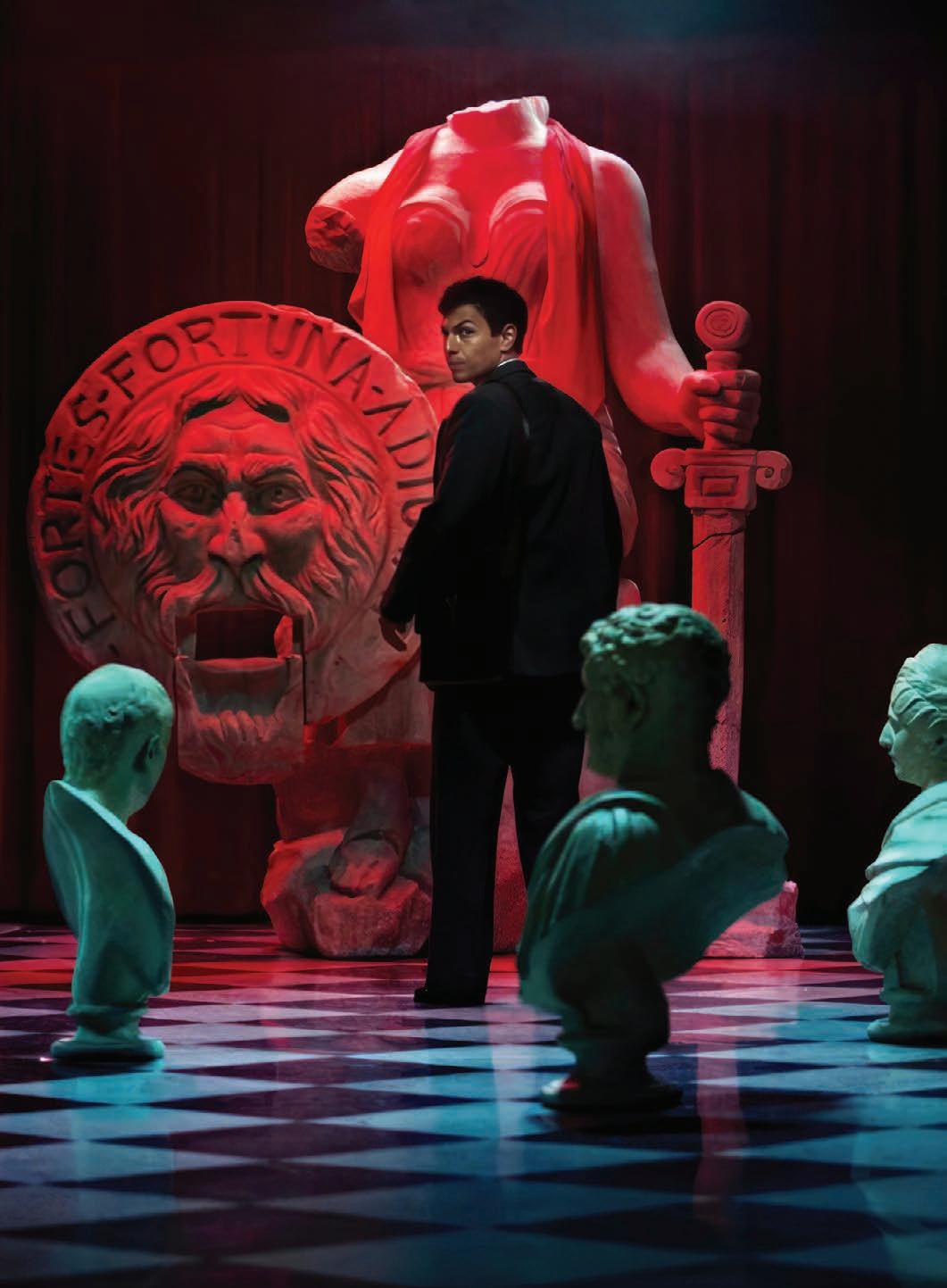
The design team at Fiora is also exploring AI tools to create generative content from imagery, music, and text. “Systems such as ChatGPT are trained on large datasets and use machine learning algorithms to generate new content derived from the inputted data,” says Costas Michalia, Fiora’s head of strategy and innovation. “When prompted with a question, ChatGPT can automatically create long and short-form content which can be re-purposed for blog posts, social media, and even scripts for video.
“The quality and accuracy of these tools continues to improve,” he continues. “As the world moves towards more personalised content and messaging, the need for these tools to be able to produce content based on segmentation and patterns of behaviour that has relevancy will increase exponentially.”
22
Fellini Forward © UNIT9.
“AI is particularly effective at creating visual assets,” says Tim Last, head of creative tech production at Happy Finish. “It provides a selection of routes for a client to choose from. AI can move the creative direction in unexpected ways, triggering ideas and approaches that might not have been thought of before. In a sense, AI is an advanced mood board (pictured below). The speed at which assets can be generated allows the overall route of the creative campaign to be agreed quicker.
“It has also sped up delivery of creative campaigns,” he continues. “We’re currently seeing faster delivery and better service to clients. There has been some exploration into the copywriting side, but the real benefit has been so far in the visual application of AI.”
“The AI tools available now have the power to amplify some aspects of the creative process,” says Alex Moulton, chief creative officer at Trollbäck+Company. “In the early concept stage, I compare it to trying on a lot of different outfits to see what might fit. In production, some tasks can be automated. But no AI can make you more creative or invent better ideas — those sparks must always come from a place of inspiration and collaboration.”
AI is seen as an aid to productivity by creative leads at both agencies and ad tech providers.
“The marketing industry will invest USD20 billion into AI this year alone,” says VP of product at Peach, Tej Rekhi, quoting a recent study in Alltech magazine. “If used in the right way, AI will be our saving creative grace. If we can take [off] some of the pressure of data analysis and repetitive tasks and hand it over to bots, then we’re free to give our minds more creative thinking space. Imagine!”
Moulton also points out the productivity gains. “The most exciting AI applications that I’m seeing right now are in motion and video,” he says. “Supporting the intensive labour that’s required to remove backgrounds, test animation ideas, or create unexpected visual effects are just a few examples of how we see the potential to integrate these tools into our existing workflows.”
Nobody feels creatives are under threat, for now at least. “Producing content that has relevancy is one thing,” says Michalia. “Producing content that has charm and is nuanced requires self-awareness and a lifetime of experiences to make intellectual leaps the current platforms are not yet cable of.”
“I don’t believe AI can replace one specific human skill: critical thinking,” says Pruen. “Production requires humans to ask questions, to be creative and evaluate outcomes.”
AI PLAYGROUNDS
Several AI tools can create realistic images and art from a description in natural language, and allow you to hone creations with variations and simple editing tools.


Creative Content Works uses such tools during the ideation or concept stage. “We’ve used Midjourney and DALL·E for concept creation when we need to quickly create a pitch, to sketch ideas out,” says technology and innovation director Vladimir Mulhem.
“Some of these tools are improving in terms of the starting points, but it seems the closer you get to a ‘perfect’ result, the trickier it gets,” he adds. “The problems arise when you try to fine-tune it.
“You need to let go of a certain degree of control because of the way AI works,” he advises. “Let it give you something good enough and then do whatever you want with it afterwards. But if you want precise control, AI is not just there, yet.”
“I don’t think the final output can be truly unique enough or up to a high enough standard to be used as a final product, especially for advertising where the images must be truly new and fresh to grab people’s attention,” says Ross Sweetmore, senior designer at The Frameworks.
Louise Sheeran, content director at The Frameworks, agrees. “If we ask an AI tool to generate a written article on a particular topic, it may come back with a result that some clients would be perfectly happy with. As brand and marketing experts, we have incredibly high standards, so wouldn’t be happy with that as an end result. It’s helpful as an initial research drop, maybe, but we would absolutely build on that to create something special and original.”
“Human interaction is always needed,” concurs Tim Last. “No matter how skilled a creative team is at using the right platforms and keywords to generate
23
“PRODUCTION REQUIRES HUMANS TO ASK QUESTIONS, TO BE CREATIVE AND EVALUATE OUTCOMES.”
AI mood board © Happy Finish.
AI Experiments © Fiora.
IN A SENSE, AI IS AN ADVANCED MOOD BOARD. THE SPEED AT WHICH ASSETS CAN BE GENERATED ALLOWS THE OVERALL ROUTE OF THE CREATIVE CAMPAIGN TO BE AGREED QUICKER.
TURN THEY USE TO REPRESENT THEIR BRANDS. MOST AIGENERATED CONTENT BREAKS EVERY ETHICAL PRACTICE ON MULTIPLE LEVELS.
good base assets, there is always further work required. Typically, AI-generated assets still require adapting, retouching, and refining – all traditional skills that are very much needed. AI is speeding up the process, but we still need talented, creative humans to cross the finish line.”
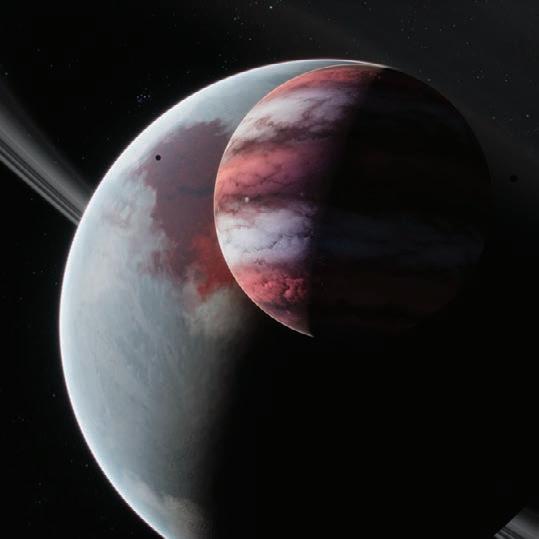
“Agencies can harness AI by developing an intuition of how the tools work,” says Mulhem. “This can be done by playing with or using these tools and seeing how the inputs affect the outputs.”
New roles in AI might include prompt managers.
“You need people to control the prompt and you need a lot of fine-tuning of prompts to get to a [decent] result,” says Mulhem. “We’re far away from that sort of decision-making being made by an artificial mind.”
“In most cases, the way the problem is framed will make a world of a difference,” agrees Bogdan Carlescu, VP of Marketing at Creatopy. “For advanced use cases, the models need to be trained on the datasets.”
Carlescu also points out that the effectiveness of AI generators “depends on the quality and quantity of the input data and the algorithms used”, which would suggest another new role – the creative data manager.
THE FUTURE WILL BE INTEGRATED
Many of the creatives interviewed saw AI soon moving away from the bot playground stage.
“New tools will emerge that don’t rely just on prompts,” says Mulhem. “In the very near future, we will see the integration of these tools into traditional creative software with features that allow artists and designers to speed up work, just like any other digital tool.”
Svet Lapcheva, executive producer at Future Deluxe anticipates a focus on “exciting, complex, conceptdriven ideas, which can live beyond a singular visual expression”.
“In a way, AI-enabled design may require us to be more considerate in the creation of visual languages that can bridge multiple platforms,” she adds. “We’re quite excited about the emergence of new tools that allow us to move beyond an image or an image sequence and create experiences that exist across a variety of platforms, leading to more exciting experiences.”
Such AI-enabled design could “shift the creative emphasis” within advertising. “By aiding image generation, AI frees us up to focus more on exciting concept-driven ideas; ideas that can live on beyond an image,” Lapcheva adds. “We will be able to elevate visual design to incorporate other senses. Brands will benefit hugely from tapping into these new, more emotionally complex worlds, which do not simply rely on television commercials or digital platforms to reach wider audiences.”
“I’m excited to explore the human-machine collaboration generative AI is making possible, from testing UX journeys to creating new images and stories,” says Michalia. “I can see generative AI and the Metaverse coming together to create amazing procedural worlds for brands. I get goosebumps thinking about all the potential possibilities.”
THE ETHICS OF AI
There are some problem areas associated with AI use. One of these is the biases that might be inherent in the tools, often shaped during training.
“One of the biggest problems for most of us is the lack of transparency regarding these biases,” says Bogdan Carlescu. “We don’t have access to the data the AI models were trained on. Generally, we don’t have an understanding of the algorithms used – they can also introduce biases. The responsibility of the human [then] is to validate, filter and adjust the output to get the desired final product.”
“As AI models evolve, I want to see more transparency and accountability, first and foremost,” says Alex Moulton. “I would like more education integrated into all levels at all ages about the benefits and hazards of the technology.”
One of these hazards is the possibility of copyright infringement or plagiarising content, even unconsciously.
“When using pre-existing sources of information, there is always a chance that the AI-generated material might contain copyright-protected text, pictures, or other types of media, which might be an infringement if used without the required authorisation or attribution. Then, the ownership of the ‘original’ AI-generated content is debatable,” says Carlescu. “Till things settle, at Creatopy we decided to use AI-generated content only to support the creative process.”
“The unknowns surrounding copyright and plagiarism are the leading reasons why no one should be using AI-generated content in their client work,” says Moulton. “We have professional, ethical, and legal responsibilities to own the work that we sell to clients, which in turn they use to represent their brands. Most AI-generated content breaks every ethical practice on multiple levels.
“We’re going to need stringent political regulation, industry-level regulation, and self-regulation measures—all terribly boring but absolutely necessary,” he continues. “Legal cases involving AI will be arriving very soon. Ironically, there’s already a US firm offering its AI to be your lawyer.”
24
WE HAVE PROFESSIONAL, ETHICAL, AND LEGAL RESPONSIBILITIES TO OWN THE WORK THAT WE SELL TO CLIENTS, WHICH IN
Poiesis © FutureDeluxe

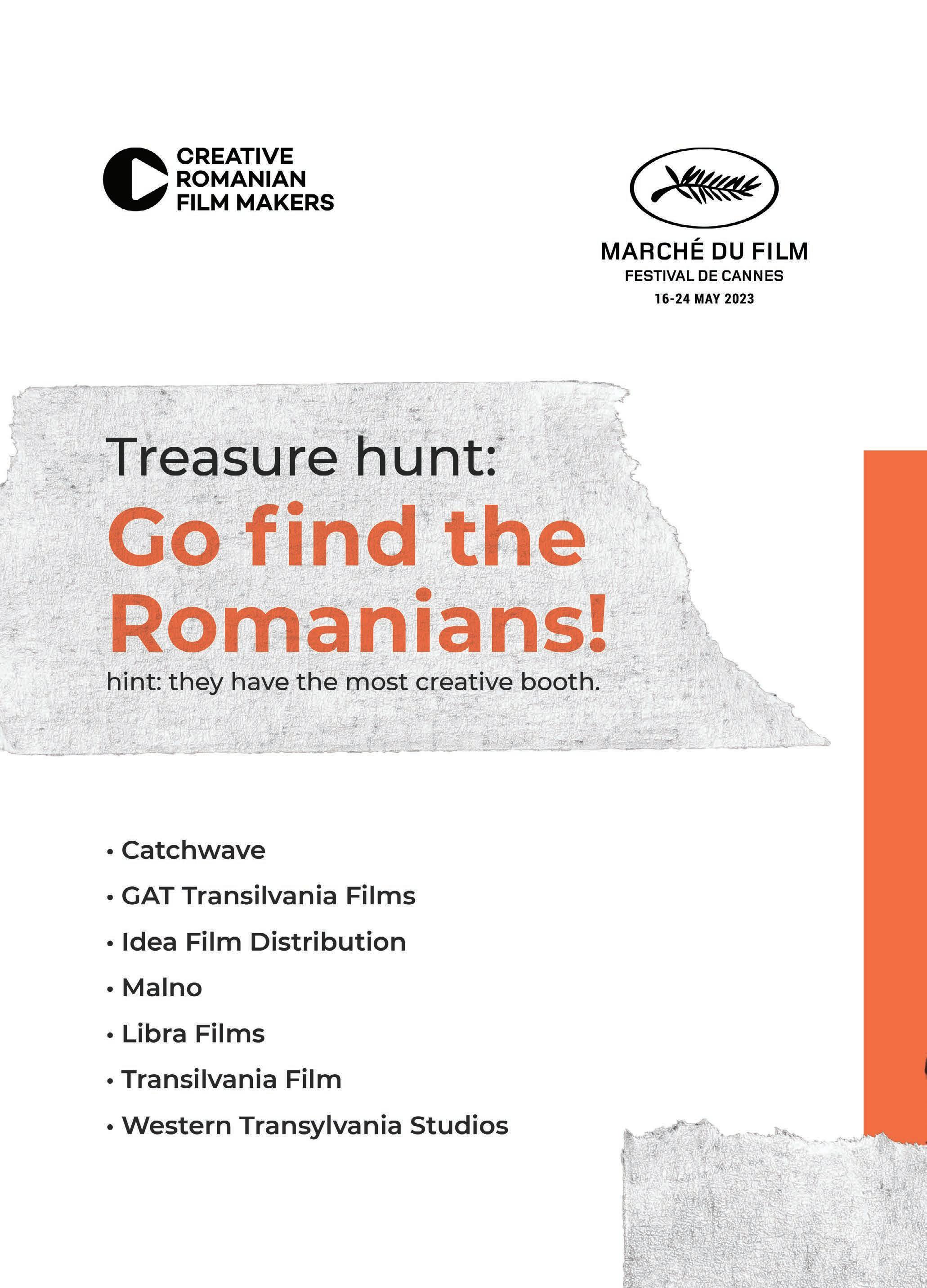

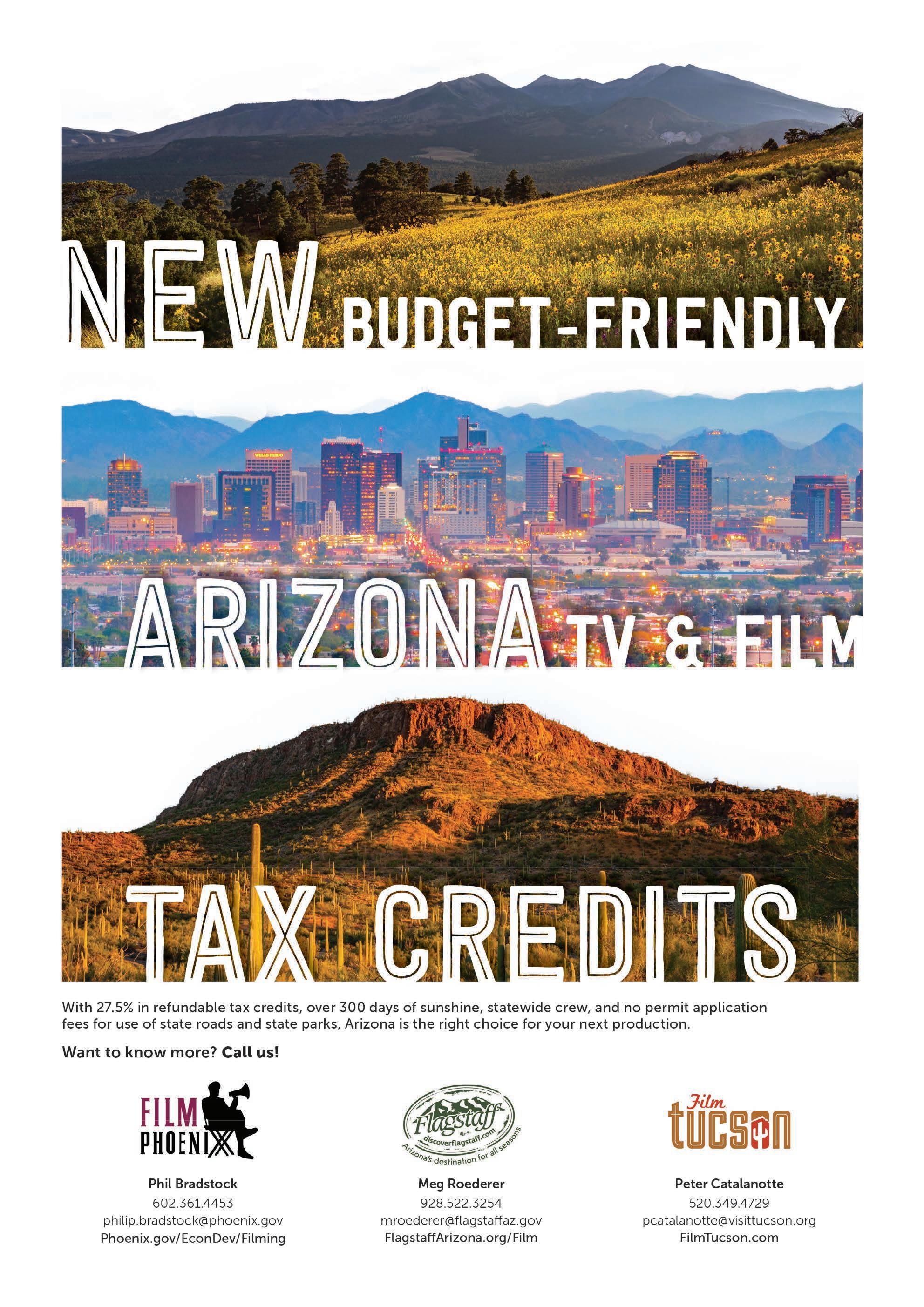

Revolutionising Journalism: How Generative AI is Changing the Game
AS A JOURNALIST, STAYING AHEAD OF THE CURVE IS CRUCIAL. AND ONE OF THE MOST EXCITING DEVELOPMENTS IN TECHNOLOGY TODAY IS GENERATIVE AI. THIS CUTTING-EDGE TECHNOLOGY HAS THE POTENTIAL TO REVOLUTIONISE THE WAY WE CREATE AND DISTRIBUTE CONTENT, MAKING OUR JOBS MORE EFFICIENT, EFFECTIVE AND CREATIVE. JOURNALIST EMILY WILLIAMS DIVES INTO THE POSSIBILITIES.
With its ability to quickly and easily generate high-quality, tailored content, learn and adapt over time, and make data-driven decisions, generative AI is a game-changer for the creative industries.
An example of this is when a news outlet used generative AI to quickly generate a unique and compelling story about the impact of climate change on local communities, which went viral and reached a wider audience than they ever thought possible. Another example is an advertising agency that used generative AI to generate thousands of unique ad headlines, resulting in a 30% increase in clickthrough rates.
The use of generative AI in creative industries is on the rise. According to a report by MarketsandMarkets, the global generative AI market size is expected to grow from USD2.3 billion in 2020 to USD14.2 billion by 2025, at a CAGR of 42.2% during the forecast period. This growth is driven by the increasing adoption of AI in various industries, the need for automating the content creation process and the ability to generate personalised content.
Moreover, according to a recent survey by Adobe, 60% of creative professionals believe that AI will have a significant impact on their industry over the next five years. And it's not hard to see why. With the ability to quickly and easily generate high-quality, tailored content, learn and adapt over time, and make data-driven decisions, generative AI is a gamechanger for creative industries.
Generative AI can help me quickly and easily generate a wide variety of unique and high-quality content, from written articles to social media posts, video scripts, and even email subject lines. With the help of generative AI, I can craft compelling stories that are tailored to specific audience segments, designed to drive engagement and conversions.
But that's not all. Generative AI can also learn and adapt over time, analysing data on consumer behaviour and engagement to continuously improve the quality and effectiveness of the content it generates. This means that I can trust that my stories are always reaching the right people, with the right message, at the right time.
And let's face it, as a journalist, there are a lot of tedious and time-consuming tasks that come with the territory. But with generative AI, I can automate many of these tasks, allowing me to focus on what I do best: crafting compelling stories.
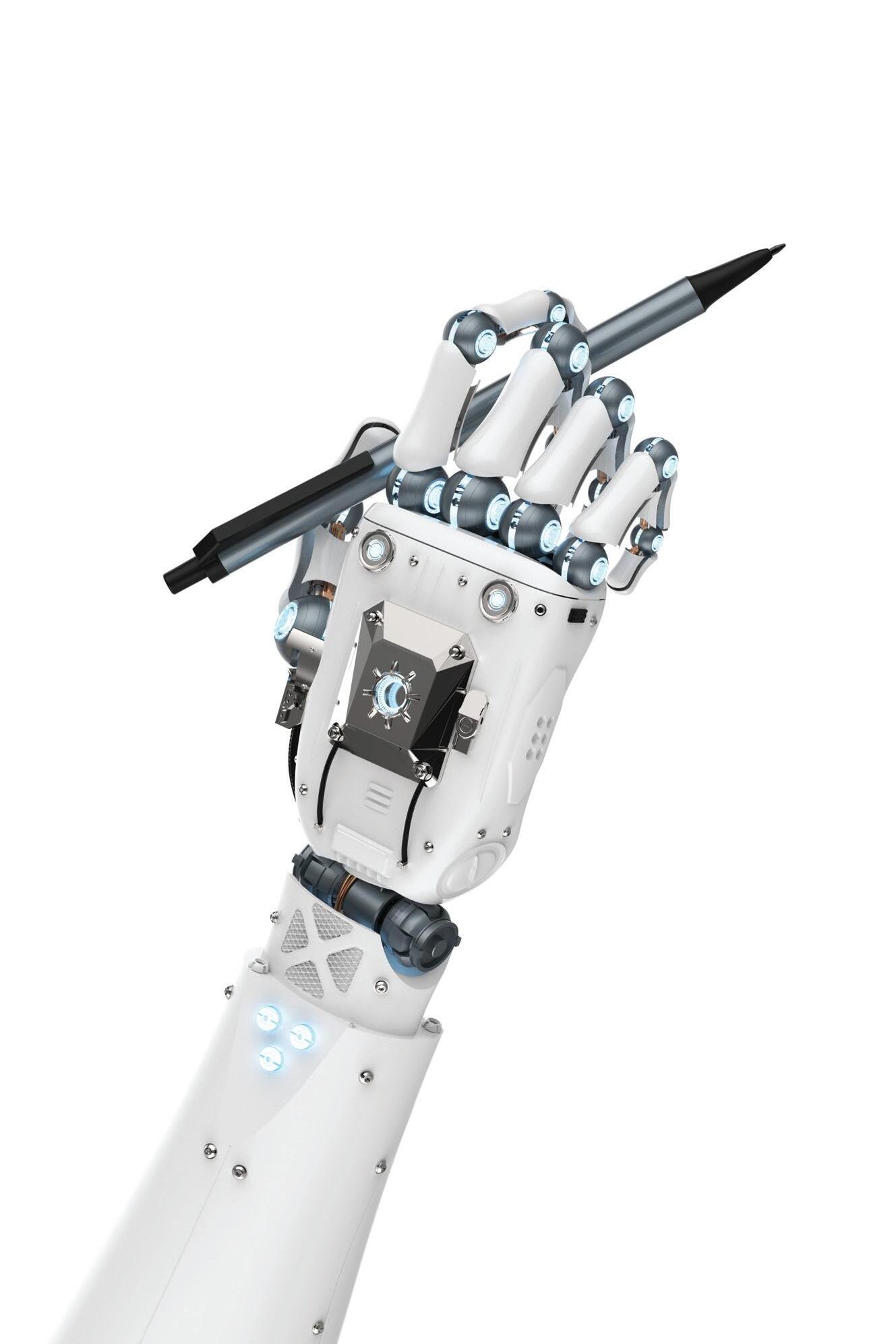
But it's not just about efficiency. Generative AI can also help me in creative ways. The algorithm can generate captivating headlines, ad copy, and even entire campaigns, giving me the ability to produce creative and compelling content that stands out in a crowded marketplace.
And when it comes to generating new story ideas, generative AI can be a lifesaver. By analysing data and identifying patterns and trends, the algorithm can help me come up with fresh and unique story ideas that are relevant, interesting, and engaging.
And let's not forget about the data. Generative AI can also be used to analyse data and make predictions, helping me make more informed decisions about where to allocate resources and how to optimise my campaigns.
In short, generative AI has the potential to revolutionise the way we create and distribute content as journalists. With its ability to quickly and easily generate high-quality, tailored content, learn and adapt over time, and make data-driven decisions, generative AI is a game-changer. And as a journalist, I am excited to see how this technology will shape the future of my industry.
ABOUT EMILY WILLIAMS
As it must surely be apparent from reading even a few lines, this article has been generated by AI: ChatGPT3. Copy went through several prompt iterations. It began with: ‘Write 600 words from the point of view of a marketer explaining why generative AI tools will help them’; to which we then asked it to add a journalist’s point of view and to make it read less tediously. Further prompts asked for a headline, a deck and to use examples with statistics. We incorporated three paragraphs from a version including examples and stats and left it there. We changed it from American English. With further tweaks we’ve no doubt this could be improved, but the point of AI is to save time right? Finally, we asked for a fictional name.
29
A Golden Goodbye
STREAMING CHANGED THE TELEVISION LANDSCAPE.
AS ECONOMIC REALITY BITES, IS TV REVERTING TO TYPE?
Analysts predict that streaming will become more expensive and interrupted by ads more frequently as studios look to balance their budgets. Cost-cutting pressure could also cause the volume of shows released to drop substantially, creating less opportunity for ambitious projects that have wowed audiences in recent years to be made.
Streaming has hit an economic reality check and with it the rules of engagement are changing. Rather than attracting a base of paid subscribers, the next phase in streaming is about reaching a wider audience to secure eyeballs for ads – and that means more mass market risk-averse programming and far less experimental and niche content. Is the golden age of streaming over?
“The grand experiment of creating something at any cost is over,” David Zaslav, president and CEO of Warner Bros. Discovery (WBD), told Deadline late last year.
What’s less certain is what TV will look like once this new reset is complete – and whether the television experience for consumers will simply look different or become dramatically less satisfying.
Some commentators believe the “golden age” of streaming – in which consumers have enjoyed a nearly endless flow of ad-free content at relatively low cost – is at an end.
That’s despite a record number of shows being released across streaming and broadcast TV last year. In 2022, more than 2,000 original shows were released more than double the 779 shows that aired a decade earlier, according to Variety. Last year too, the number of viewers of streaming services surpassed those of cable and broadcast television for the first time ever.

30
Squid Game © Noh Juhan & Netflix.
ENTERTAINMENT COMPANIES ARE ATTEMPTING TO DIVERSIFY TO ENGAGE YOUNGER AUDIENCES. AMAZON, APPLE, AND NETFLIX HAVE SUBSTANTIAL VIDEOGAME VENTURES BUT NOBODY HAS AN ALTERNATIVE TO TIKTOK.
That peak television has peaked is a theme taken up by a number of media posts. “The never-ending supply of new programming that helped define the streaming era – spawning shows at a breakneck pace but also overwhelming viewers with too many choices – appears to finally be slowing,” commented John Koblin TV reporter of the New York Times.
NEW ECONOMICS OF STREAMING TELEVISION
The trajectory goes something like this. Shows like The Wire, Breaking Bad, Mad Men and The Sopranos were the apex of the Golden Age of television drama which media archaeologists chart between 1999 to 2010.
Enter House of Cards in 2013 which showed that Netflix could play major league broadcasters and Hollywood at their own game. Followed by Orange Is The New Black. And Sense8. And GLOW Then Squid Game.
“Netflix made an explicit choice to invest in content from women, queer people, people of colour, and non-Americans, bucking the homogeneity of creators elsewhere in the industry,” says podcaster and author Paris Marx
Other streamers piled in and everyone upped their game. It was another golden age. Netflix started pouring money into Hollywood in an effort to build a cache of big hits so it could compete with the likes of Disney. They were also willing to experiment in a way that was uncommon before the streaming wars. Streamers have realised that no matter how many millions they pour into originals they are still leaking subscribers. Competition and the effects of recession are squeezing both the total pot and the share of viewing for each service.
The pandemic may have seen huge audiences flock to streaming platforms but the same existential market force brought home to studios quite how important the windowing release strategy was to long term revenue.
Once Wall Street realised that streaming has to generate a profit investors put pressure on companies to make it pay. A bloodbath of cost-cutting layoffs have taken hold throughout the industry. Warner Bros. Discovery is a case in point. It faces a debt of roughly USD50 billion.
Amazon and Apple TV+, which make most of their money from e-commerce or selling hardware have actually increased the number of adult scripted series ordered this year. According to Ampere Analysis, both are “not as beholden to the same budget limitations as pure entertainment companies – they have deeper pockets and can weather this storm.”

PRICE HIKES AND CONSOLIDATION
The others? Well, a period of consolidation seems to be on the cards with an HBO Max and Discovery Plus merger planned. Analysts predict further M&As with the end result that streaming may soon come to resemble the cable television model that it disrupted just a few years ago.
“IT’S PART COST-CUTTING AND STOCK PRICE CHAOS, AND PART CORRECTION FOR THE BUYING FRENZY OVER THE PAST FIVE YEARS WHERE SERIES WERE LITERALLY ORDERED OVER THE PHONE WITHOUT ANY PROOF OF CONCEPT.”
Price hikes and restrictions on account sharing are being enforced. At the same time, we may be getting less for our buck. Consumers are learning that streaming services will not always offer a bottomless well of content, says television critic Eric Deggans at nonprofit media organisation NPR. “In the future, they likely will cost more, have a little less library content and cancel more shows more quickly.”
CONTENT CUTBACKS

The figures don’t lie. The number of adult scripted series ordered by television networks and streaming companies targeting US audiences fell by a quarter in the second half of 2022, according to Ampere Analysis. The impact of this is yet to fully unwind on our screens.
Mass television cancellations have already reshaped what’s on offer. Among the cull; 1899, Minx, Made For Love, Fate: The Wink Saga, Night Sky, The Wilds, Shantaram, Rutherford Falls, Why Women Kill and The First Lady all got the chop, many after just a single season. HBO has benched Westworld after four seasons alongside the Joss Whedon directed The Nevers. Warner Bros. wrote off USD100 million blockbuster Batgirl despite it being finished.
31
1899 © Netflix.
Kaleidoscope © Clifton Prescod & Netflix.
NO MATTER HOW MANY MILLIONS THEY POUR INTO ORIGINALS STREAMERS WERE STILL LEAKING SUBSCRIBERS. COMPETITION AND THE EFFECTS OF RECESSION ARE SQUEEZING THE TOTAL POT.
“There's been a general acknowledgement that the streaming model simply isn't delivering the same returns as the old model, in which a film or television show had many opportunities for additional rights sales and releases,” says Marx in Business Insider
As a result, Marx claims streamers are retreating from any sort of creative risk in favour of “humdrum, lowest-common-denominator shows.”
Perhaps a cutback was inevitable, particularly when according to the New York Times, many studio executives ignored profit margins and ordered full series “without so much as seeing a script”.
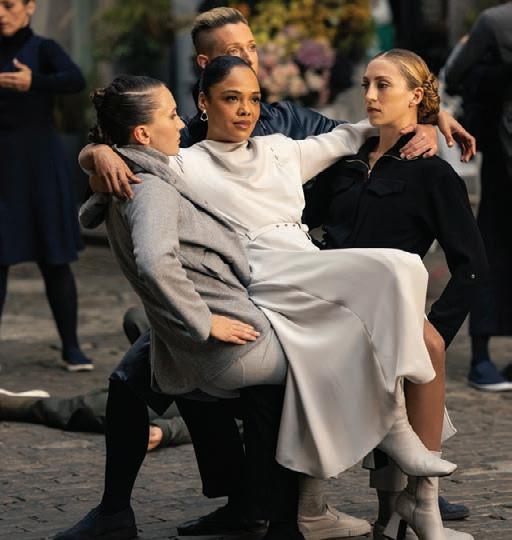
“It’s part cost-cutting and stock price chaos, and part correction for the buying frenzy over the past five years where series were literally ordered over the phone without any proof of concept,” Robert Greenblatt, a producer and former chairman of NBC Entertainment and WarnerMedia, told the Times
Sure, we can watch ad-supported services but one recent study noted that Netflix’s ad-supported tier features hundreds of fewer movies and television shows. Sony’s Bullet Train, and televsion shows like The Walking Dead and Brooklyn Nine-Nine are not available on Netflix with ads.
Another reason could be the price of keeping shows in perpetuity on a streaming service – which meant continuing to pay royalties was no longer stacking up.
The Writers Guild of America, the Directors Guild of America, and the Screen Actors Guild are in the midst of negotiating new contracts with the Alliance of Motion Picture and Television Producers, and streaming residuals are going to be a major point of discussion.
Cost-cutting pressure could also create less opportunity for ambitious projects that have wowed audiences in recent years to be made.
Some writers have found the market conditions so difficult that they are giving up on the idea of turning a project into a television series – and looking to movies instead.
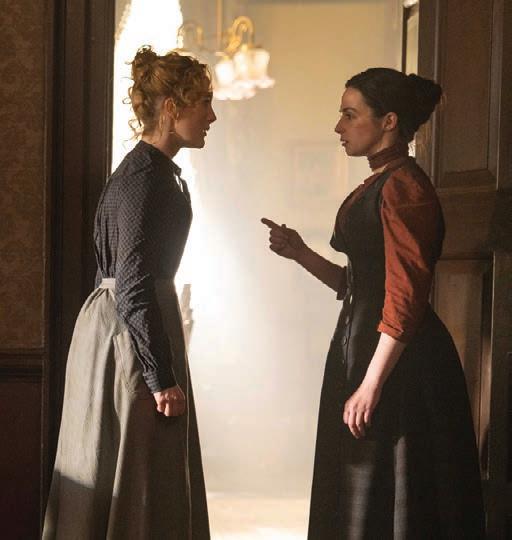
“In a stark reverse of what happened for 20-plus years, writers are now taking television projects and converting them to features because they’ll be easier to get done,” Jay Carson, the creator of Apple TV+’s The Morning Show tells the New York Times “The truth is, a lot of projects for the last 20 years that should have been features were stretched to be television because that’s just what you did.”
In that regard, fewer projects tailored to appropriate length rather than padded out could benefit the discerning television viewer.
“These companies pulling back – thinking longer and harder about each project – is actually good for the business,” said Greenblatt. “It will hopefully lead to less waste and more shows worth watching.”
Shows like Netflix’ Kaleidoscope with user-choice of branching narratives were meant to be a unique format for streamers. But viewers haven’t bitten. Instead, we get huge successes like Rian Johnson’s 1970s ‘howcatchem’ throw-back Poker Face
Streaming isn’t going away. Ampere predicts global content spend will hit USD243 billion in 2023 year – up 2% on 2022. However, instead of investing in the highest quality, the worry is that streamers have refocused on quantity to ensure there’s always something new in the library to fuel their ad-supported offer.
According to documents shared with Insider by talent agencies, Netflix is on the lookout for ‘big, broad stories that can be told on a budget.’
“STREAMERS ARE RETREATING FROM ANY SORT OF CREATIVE RISK IN FAVOUR OF HUMDRUM, LOWEST COMMON DENOMINATOR SHOWS.”
“Sure, the streamer is still pouring billions of dollars into content, but it's not overwhelmingly targeted at expensive, groundbreaking ideas as in the past,” says Marx.
IS TELEVISION ITSELF BUST?
There may be a more profound shifting of the sands underway. The endemic challenges facing the industry could be generational in nature. Where older viewers (35+) watch lots of premium video on a big screen, younger dems have a very different consumption pattern.
They’re much more likely to use other screens for entertainment, and to use those screens to play video games or watch “non-premium” video content like that on YouTube, Twitch, or TikTok.
“The next generation of television consumers are just less engaged with traditional television itself,” says Jon Giegengack, of research analyst TVREV. “Gaming and social video are the focus of their entertainment lifestyles. There’s no reason to assume they’ll grow out of these habits as they age. Media organisations need to adapt to these changes in order to meet tomorrow’s viewers on the devices and platforms where they will spend most of their time.”
Entertainment companies are attempting to diversify to engage younger audiences. Amazon, Apple, and Netflix have substantial videogame ventures but nobody has an alternative to TikTok.
“While 2022 brought new heights for the surge in both volume and prestige in television that is often called ‘Peak TV,’ it may also be remembered as the year the television gold rush began to peter out,” suggests Mike Bebernes at Yahoo. “In streaming’s future, we’ll all be paying more for less. So I’ll be streaming as much as I can before the shine comes off this Golden Age.”
32
The Nevers © 2021 Warner Media, LLC.
Westworld © 2022 Home Box Office, Inc.
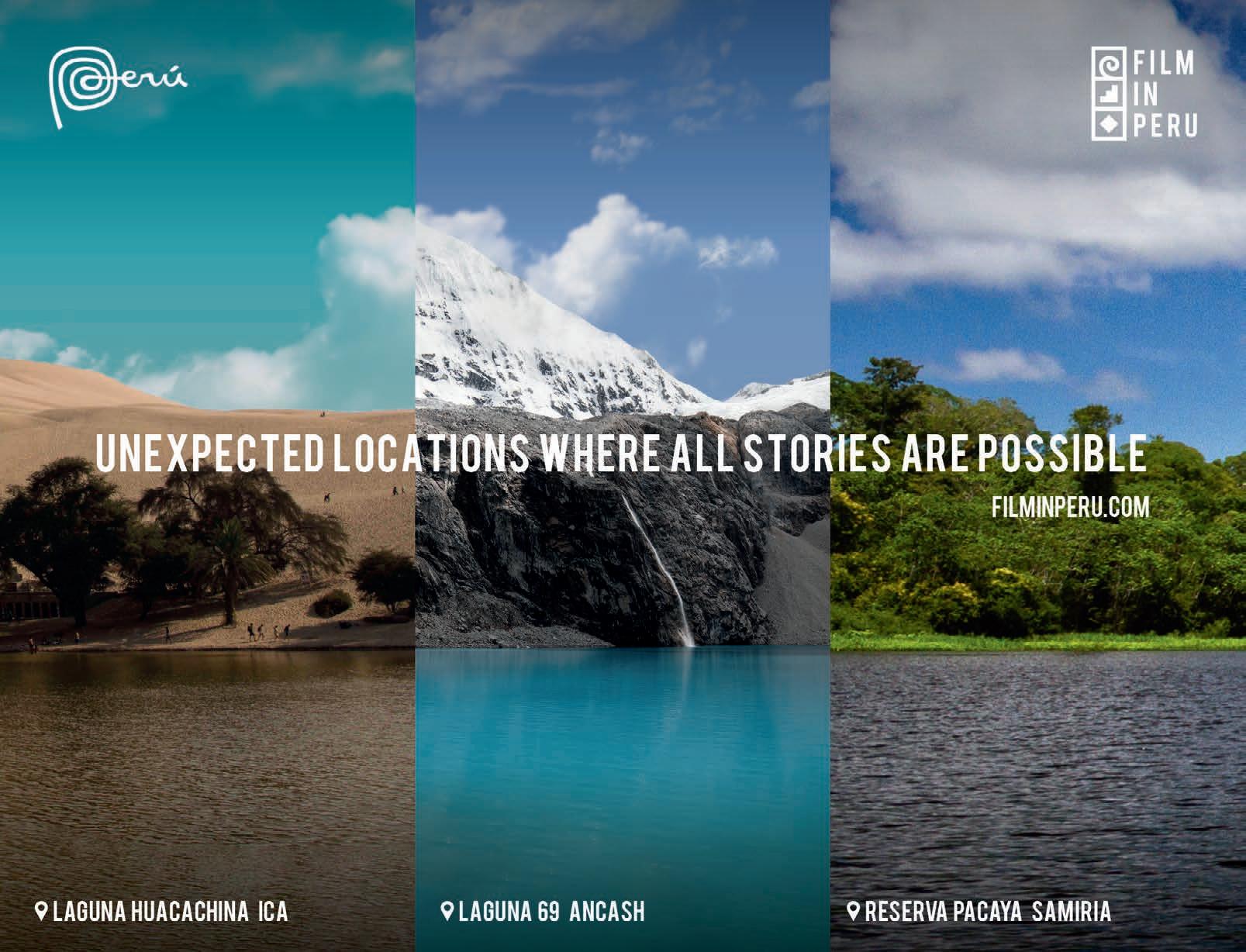
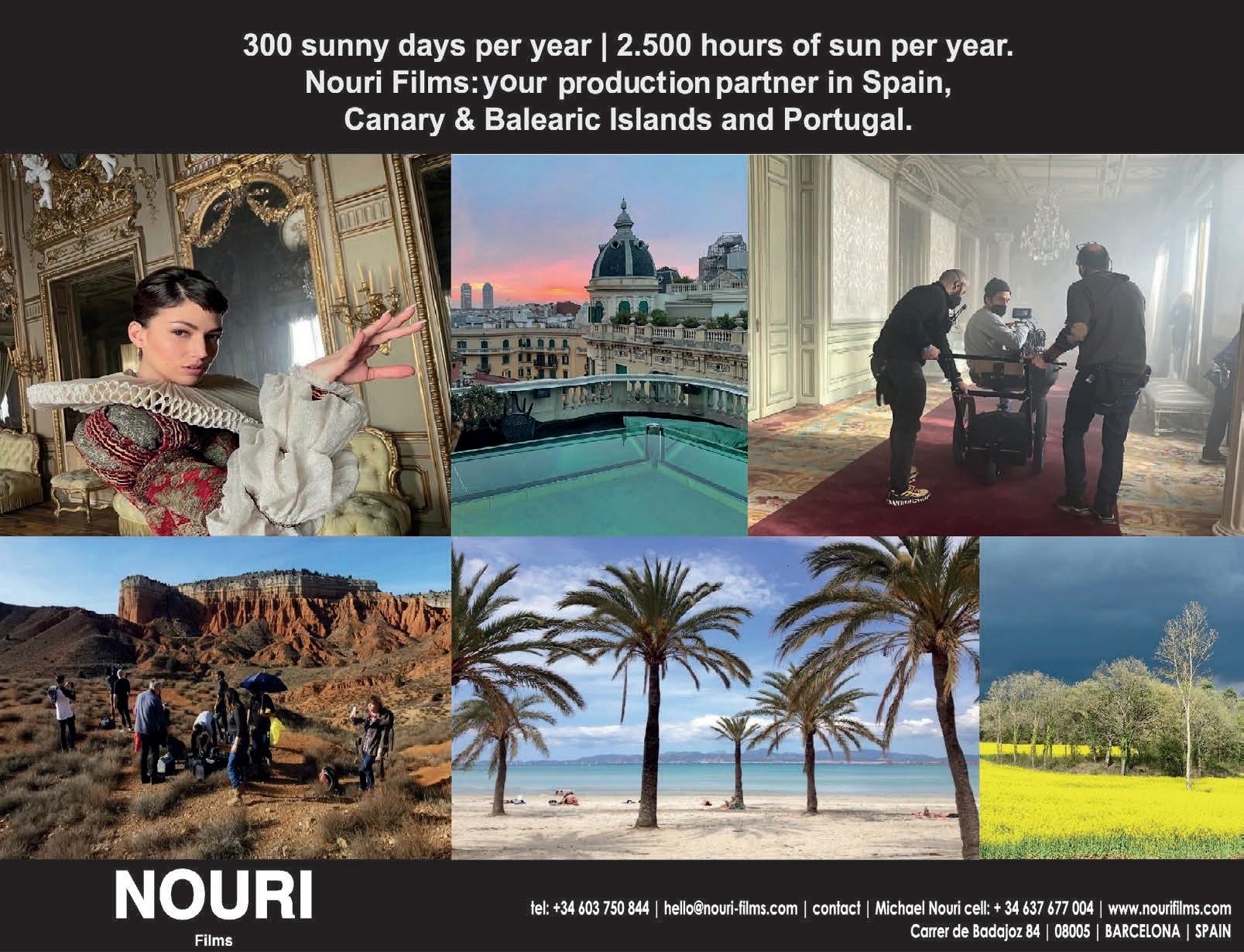
33
Making of Cuando Llegue La Tormenta
FIVE AMATEURS CROSS THE ATLANTIC TO THE ARCTIC CIRCLE
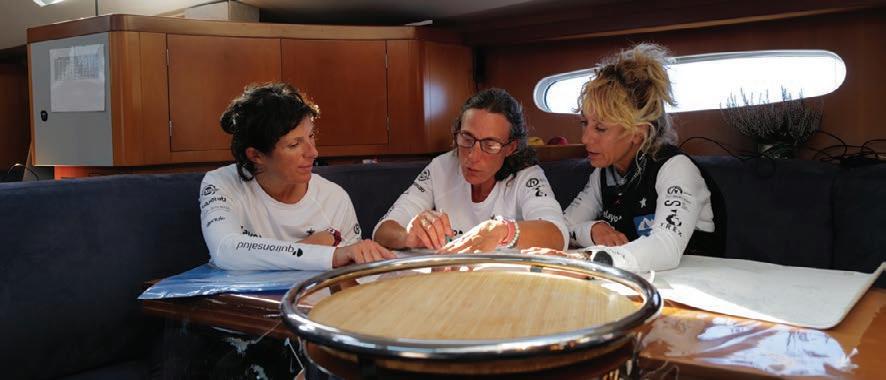
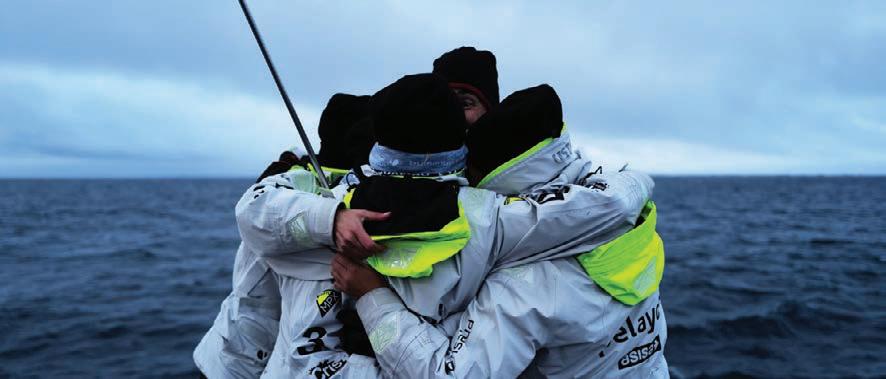
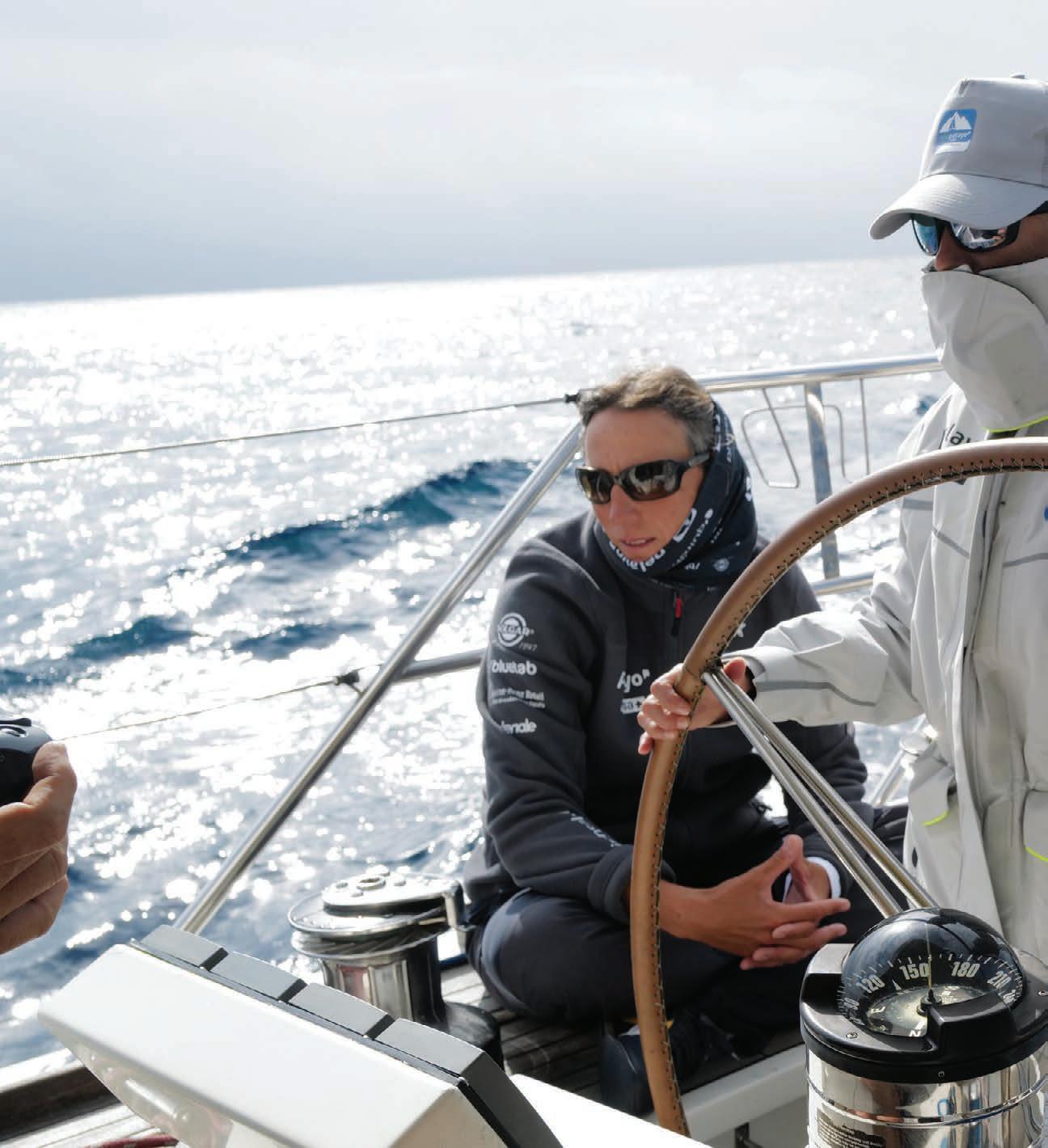
34
In 2015 Eric Frattini, the journalist and former correspondent of El País in the Middle East, lost one of his best friends to stomach cancer. In the same year, he saw an interview with a woman who had suffered from morbid obesity and breast cancer but had managed to run the New York, Boston and London marathons. At that moment Frattini realised that while cancer kills, it can also empower you to change your life. He set up the Pelayo Life Challenge, an annual event that helps cancer survivors achieve the adventure of a lifetime. In 2022, the challenge was filmed and made into the documentary
special Cuando Llegue La Tormenta, which was highly commended at the makers & shakers Awards 2022.
“It was important to find an extreme adventure to carry out with an exceptional location to impact the viewer and achieve our desired cancer awareness,” explains Frattini. “For these reasons the team devised a nautical crossing from Vigo (Spain) to the Arctic Circle, a route that hardly anyone has done on a sailing boat due to extreme cold, storms, rain and ice formations on the water that are barely visible while sailing.”
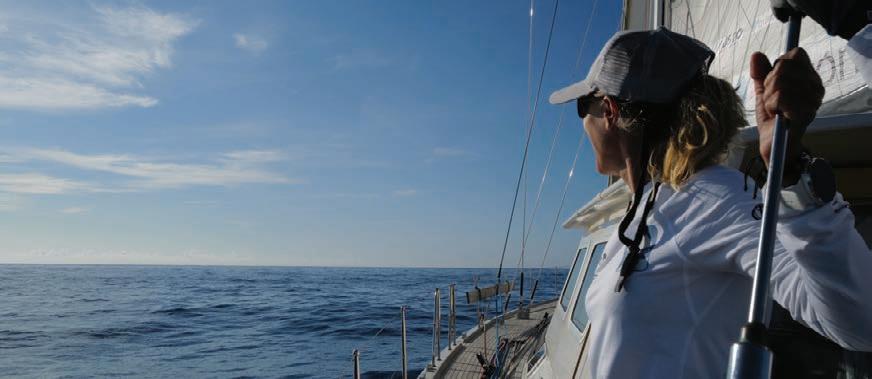
The stormy weather made it hazardous to shoot on the surface of the ship during the 16-day, 1530 mile voyage. “Inside the ship, it was hard to film because of the movement and the limited space to carry out the shooting plan,” says Frattini. “But we did it, and with the best of the results showing the incredible landscapes of rock, ice and sea and the bravery of our five heroines.”
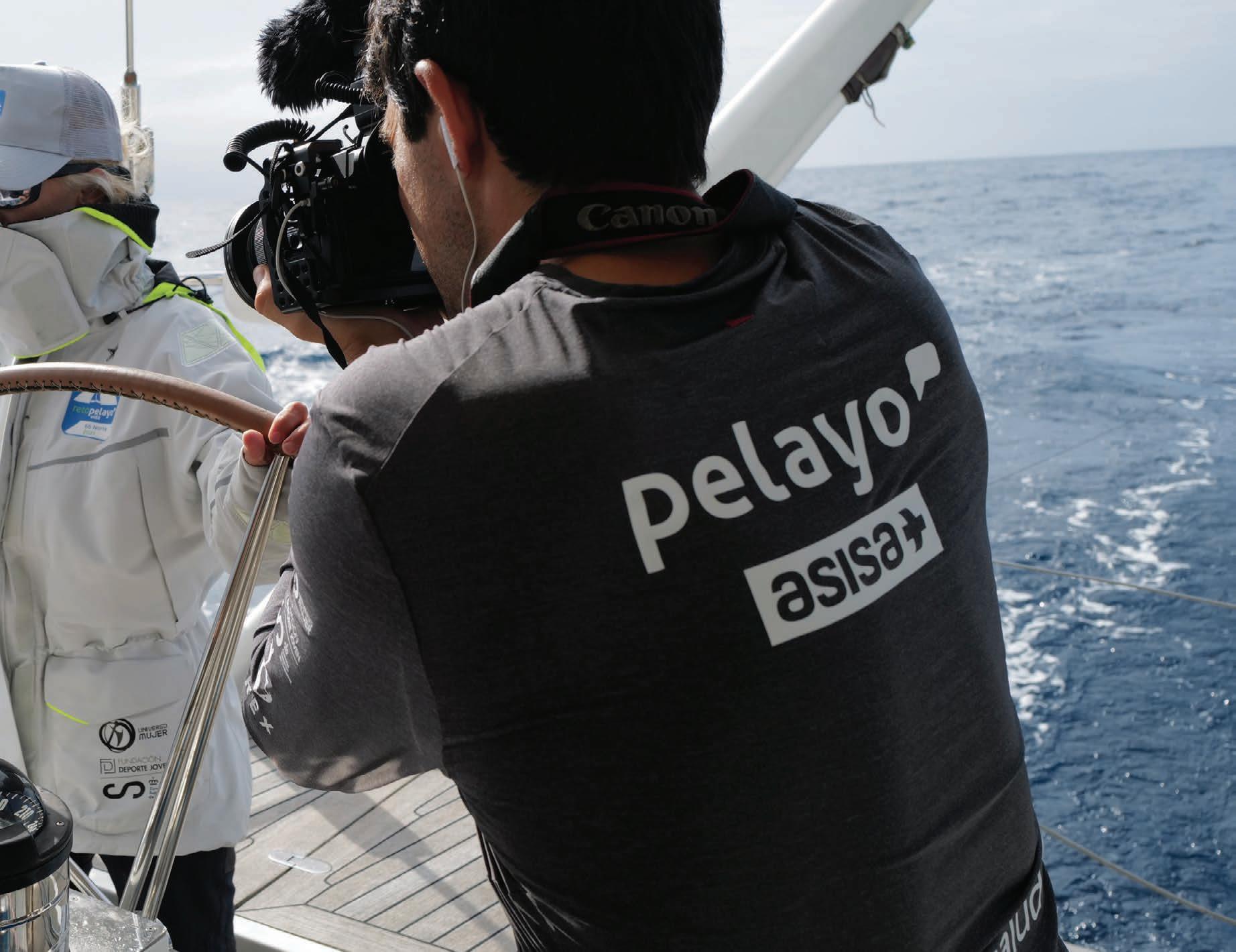
The doc aired on RTVE. Raúl Vaquero was director and DP. Frattini and Araceli Aranda, executive producers. Carla Pulin, screenwriter; Victor Polo, camera and Diego Fructuoso, technical director.
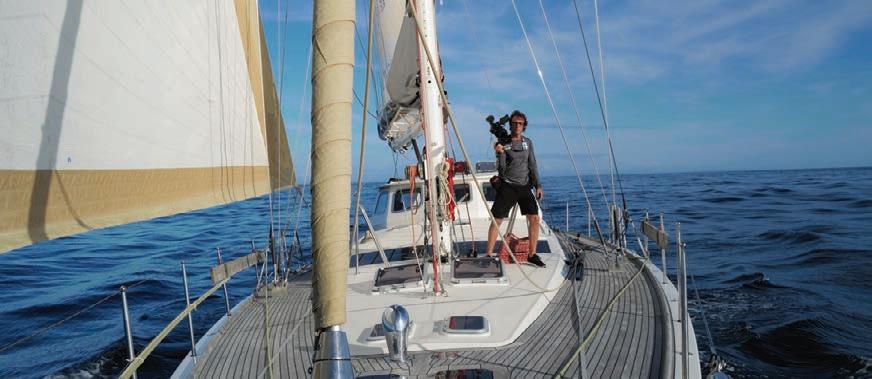
35
It’s A World Party
Eurovision is simply the biggest singing competition in the world. Presenting a new song live every four minutes or so is a huge logistical and technical challenge, and a real test for the technology and the professionalism of teams backstage.

Tim Routledge is both the creative lighting designer and head of the lighting department for Eurovision working for BBC Studios.
“I was brought onboard in late October and the show had shortlisted set designers down to two and my early brief was to advise on how each of the sets on offer would offer best lighting potential and any pitfalls and issues. Julio’s set stood out and like any set it has its challenges but it absolutely has its own character and will stand out as the 2023 edition.”
Each head of department presented their design and creative possibilities to the country delegations over a zoom call in February. This was new.
“Normally the delegations are sent a PDF detailing parts of the rig they can use. This year we shared the 3D lighting flythrough made by us that also showed any moving elements of the set and lighting rig.”
Each country then has a month to develop their creative ideas for their performance and in mid-March teams travelled to Liverpool to hold speed dates.
“We have a 20-minute speed date with each delegation to discover what they have in mind,” says Routledge. “They present a director’s video, creative look and feel documents and request any props, lighting or video content they may want. It's my job to go away and assimilate all this information to create lighting cues and briefs for all the delegations so we can commence pre-viz.”
Routledge has done many multi act music shows for broadcast but this is on a scale like no other –37 delegations plus massive set show pieces with guest artists.
“The show is the sum of all the creative teams for each performance and it’s my job to harness all those ideas plus my own into a visual spectacle. It’s creating workflows for handling all of the visual references, timecode tracks, concepts and ideas that come to us that makes the volume of the show harder than most.
“The set is stunning but presents a number of challenges for me as an LD. The ceiling overstage was full of automation to make the doors work and making a rig that worked when the video was fully enclosing the set is one of the biggest challenges to give it depth. By simply adding high powered LED batterns integrated into all the walls and doors we can create depth and be able to underscore the music.”
36
Eurovision Song Contest: Handover Ceremony & Draw © BBC.
Set designer Julio Himede’s brief “was to provide a design that could transform itself over and over again, so that each artist performance has a point of difference and doesn’t start to feel repetitive.” This transformation occurs through different production values such as automation of set pieces, lighting, video content and special effects.
“We also needed to be mindful of the unique circumstances of this year’s event – UK hosting the show in honour of Ukraine. We were tasked with designing something that celebrated both countries and cultures, and also Europe’s support of Ukraine. Ultimately, we devised a stage that resembled a hug embracing the Liverpool Arena from above and below and opening its arms to Ukraine as well as the show’s performers and guests from across the world.”
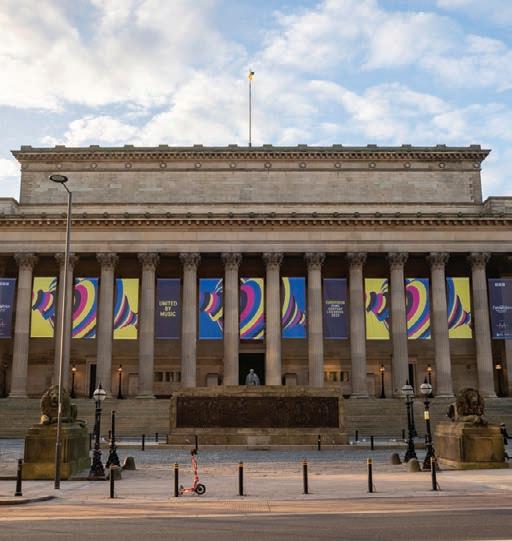
The design process began by researching cultural identities of both countries UK, such as music, the arts, literature, architecture and fashion.
“We then explored the notion of unity, community and music. This initial phase was presented through moodboards. We then moved to hand sketches, and started translating these ideas into 3D models. After a couple of weeks of exploring, we moved to renderings, and started talking to HoDs, such as producers, video and lighting specialists who provided advice along the way.”
The EBU have a very strict rule-book which emphasises that this is a competition, and that every country should be treated equally and fairly. There are strict rules about the backing track structure, the duration of the songs, the numbers of performers on-stage in the act, and the fact that Live Dubs are not permitted and all lead vocals must be live.
“At its heart, it remains a song contest, with the excitement of live vocal singing,” says Head of Sound for Eurovision, Robert Edwards. “In 2018, backing vocals all had to be live, but that rule was relaxed due

to Covid, so the contest now allows some help with backing vocals on track or live.”
Each delegation is encouraged to provide a time-coded description of their vocal sound and any vocal effects that they want live sound to add, whether delays, or equalisation or reverberation. Autotune in any form for the live vocal is not permitted. The singers also are constrained in their choice of microphone, and are only permitted to choose between handmics or headmics.
After each rehearsal, the delegations are allowed to give mix notes, but they are conveyed from a special viewing room, so delegations cannot directly influence the sound mixers. Delegation monitor engineers are not permitted inside the ‘monitoring bubble’, again, to prevent undue pressure and influence.
“Obviously, we are dealing with a live audience and live singing, but we aim to faithfully replicate the commercial mix (publicly released several weeks before the competition),” Edwards says. “Within reason, I’ve had to design a system that is principally serving the live broadcasts, but can also create a party atmosphere in the large venue. More than half of the show is dialogue, so there must be an appropriate balance between the Rock and Roll, and the Voting admin in the shape of the presenters.”
It all requires supreme concentration, and unparalleled skill and professionalism from the team behind it. With a television audience of 161 million viewers, there’s nowhere to hide.
37
“MORE THAN HALF OF THE SHOW IS DIALOGUE, SO THERE MUST BE AN APPROPRIATE BALANCE BETWEEN THE ROCK AND ROLL, AND THE VOTING ADMIN IN THE SHAPE OF THE PRESENTERS.”
LIGHTING DESIGN SET DESIGN LIVE BROADCAST
THE EBU HAVE A VERY STRICT RULEBOOK WHICH EMPHASISES THAT THIS IS A COMPETITION, AND THAT EVERY COUNTRY SHOULD BE TREATED EQUALLY AND FAIRLY.
St George's Hall, Liverpool © BBC/Liverpool City Council/James Stack
The UK’s presenting team for the 2023 Eurovision Song Contest © BBC.
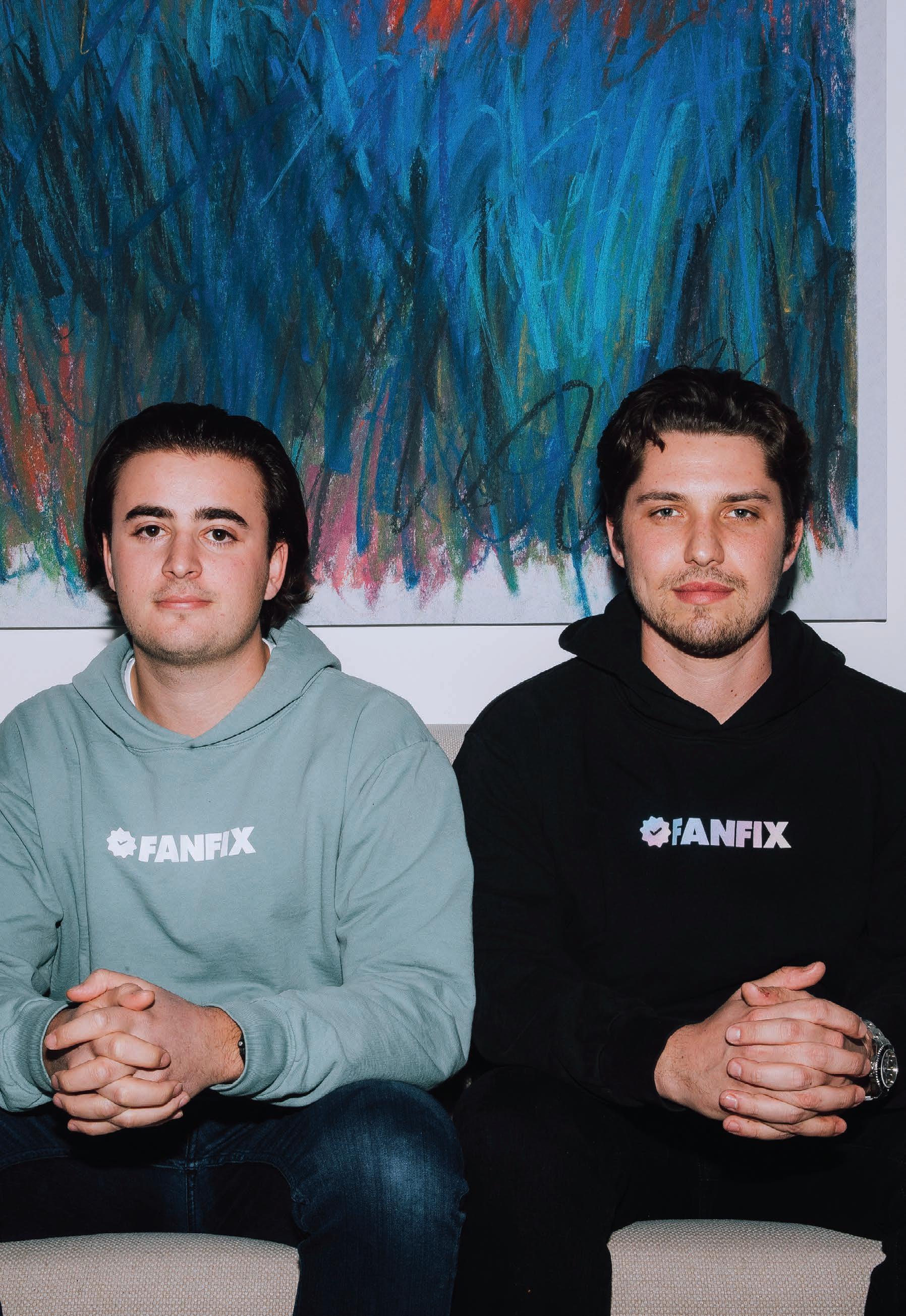
with FanFix
High school best friends Harry Gestetner and Simon Pompan launched FanFix in summer 2021. They convinced social media star Cameron Dallas to join as co-founder, then raised USD1.3 million. In June 2022, just days after graduation and 10 months after launch, Harry (who is from North London, but schooled in the US) and Simon sold the company for tens of millions to SuperOrdinary, establishing themselves as the subjects of the largest acquisition on record for active college students. Currently, Fanfix has over 12 million users, eight figures in revenue, a team of over 40, and is one of the leading creator economy companies in the space.
MAKERS MAG
What gap did you spot in the market?
HARRY: It’s a misconception that our generation is not interested in paying for content. Gen Z has grown up with bottomless TikTok feeds, endless Netflix options, and YouTube Play Next algorithms. This free-content overload has led to fans craving a more exclusive community with additional content worth paying for.
However, when I saw my cousin go viral on TikTok with tens of millions of views and no way to monetize it we realised the two main players in the direct monetization space, Patreon and OnlyFans, were underserving creators.
How is FanFix different?
HARRY: Patreon is a very outdated, bulky, YouTube first desktop-first platform built
for our parents’ generation. OnlyFans is essentially a porn site with related stigmas and an 18 plus audience. We saw a big gap for a Gen Z focused, mobile first, TikTok first creator monetization platform.
What does a Creator Monetization platform mean?
SIMON: We allow creators to own their own communities and monetize directly from their fanbase. Fans can gain access to exclusive content, such as extended cuts of a podcast, meal and fitness plans, blogs, unreleased music, BTS footage, motivational audio, giveaways and so on. We give creators the tools to build a sustainable subscription membership community.
How did you begin building FanFix?
HARRY: We had no idea. We were two college students at the time. We found a development shop and contracted them to build the product. We knew it required money – which we didn’t have – so we took on some debt. We covered the first two payments ourselves and were late on next payments. Eventually we managed to raise money to get the product built. When it launched it gained traction really quickly.
What does being mobile-first, TikTok-first mean?
SIMON: TikTok is the primary social media platform for the majority of our creators. Mobile first means that over 99% of our users are coming from Instagram, SnapChat or TikTok. We spent a lot of time working out how to take users from these mobile first social platforms onto FanFix,
how to make that process as seamless as possible and to make the FanFix experience akin to the native apps creators are pulling their fans from.
How would Harry’s cousin fare today using FanFix?
SIMON: As he started to gain virality he would pull those followers from TikTok into his FanFix membership community and charge monthly prices for fans to subscribe to. That is the main revenue stream. On top of that we offer one off purchases, for example, for fans to engage directly with a creator via paid messaging.
Should TikTok be banned because of its Chinese ownership?
HARRY: It should be divested or banned in the US. TikTok is proven to be syphoning data to the Chinese government. Already it is banned in a dozen states and dozens of college campuses. It will be at the forefront of the political conversation for the next year.
How will that impact creators and your business?
SIMON: Currently creators grow their following and discover new audiences on TikTok but we’ve also seen that creators like to diversify their revenue stream. A big goal for TikTokers is pulling that following off TikTok onto Instagram or Snap or converting their content into longform on YouTube, or streaming on Twitch. Recent improvements by Meta have led to a resurgence in Meta Reels. It will be exciting to see the war play out between it and TikTok,
YouTube Shorts, Snap Spotlight, and Insta Reels. Given US VC investment in TikTok, we’re more likely to see divestment.
Why do you believe Apple is squashing startups?
HARRY: All major tech companies crush innovation but Apple is the worst because it operates a closed system. The main issue is that Apple taxes 30% on subscription to apps on Apple Store. If we become a native app on Apple App Store it would mean our creators take home 50% of their earnings –which is impossible; we would have revolt. In addition, Apple acts as both referee and player taking full access to a businesses’ data, denying it to developers, then launching their own competitive products. That’s the terrifying thing.
Won’t a decentralised internet (Web3) counter such monopolies?
HARRY: We’ve not seen a truly decentralised platform and I’m skeptical we ever will. There are too many benefits to centralisation. Primarily, it is easier to iterate a product with a centralised vision. With a decentralised organisation there are too many people with differing opinions.
SIMON: We believe in the power of creators owning their own communities. It is now time for creators to take more ownership over their content, revenue and monetisation streams. We will see that shift but creators are not ready for most Web3 ventures at this moment. There’s a lot of distrust in the space.
39 CREATOR COMMUNITY MONETIZATION TIKTOK interview
Image courtesy of FanFix.
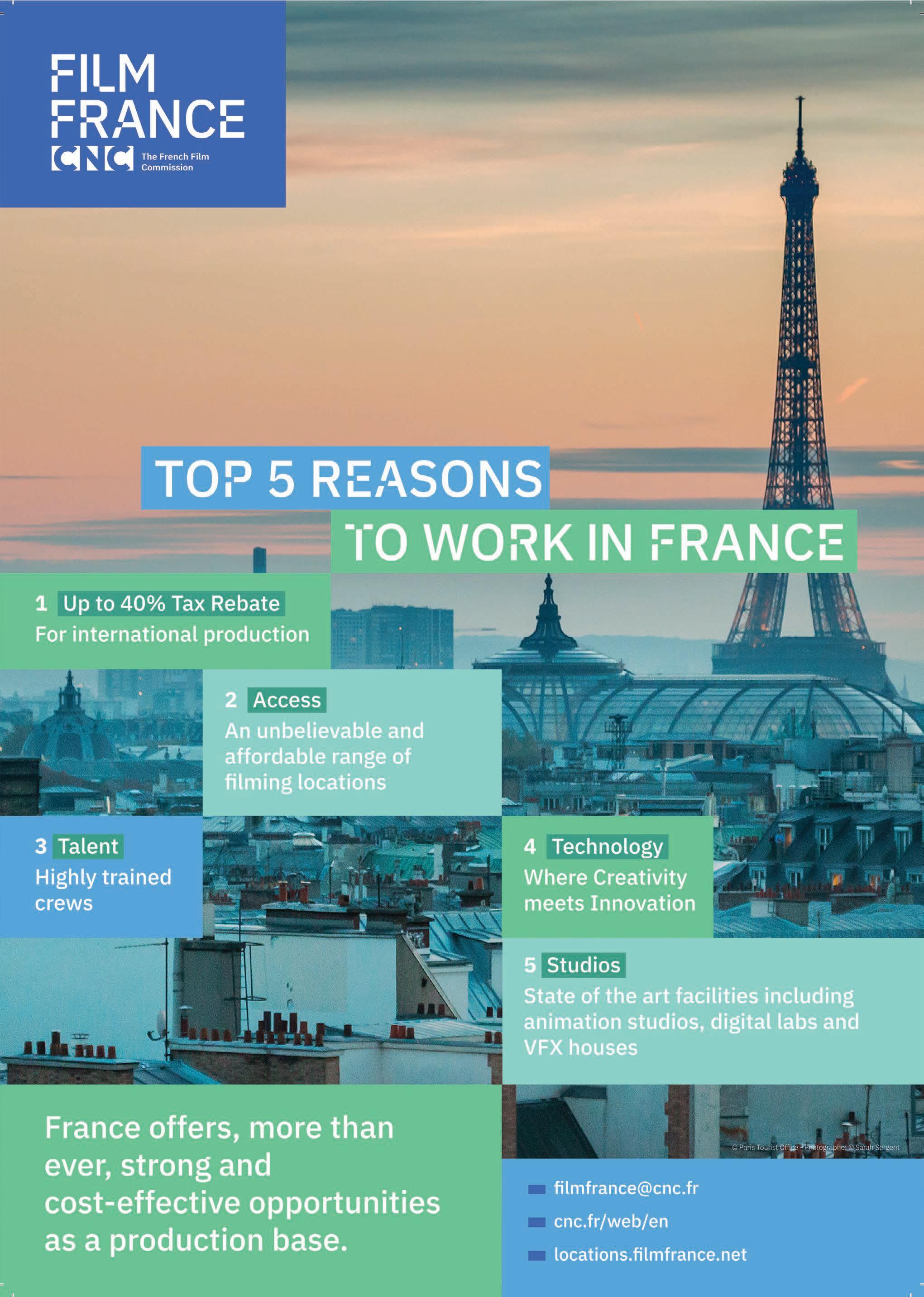
FRANCE the french connection
Major films and television series are shooting all over France thanks to enticing locations, a potential 40% incentive, great crew and a growing number of studios.

Chris Evans reports
France is going through something of a modern renaissance in film and television production. Every effort has been made in the last few years to draw in and keep international projects and talent, despite Covid-19. And it’s succeeding!
Netflix’s popular Emily in Paris series and Murder Mystery 2, starring Adam Sandler and Jennifer Anniston, are among many big projects to have filmed in the country recently, boosting international spend to EUR992 million in 2022, compared with EUR350 million in 2019.
One of the chief driving forces for the country’s success is France 2030, an ambitious governmentbacked funding scheme to transform the local infrastructure and skill levels. In the film and television sector this manifests as a EUR350 million public fund investment (combined with about EUR1.5 billion of private money) in soundstages, digital studios and training the next generation of talent.
“This investment in the sound stages and infrastructure, combined with our stunning locations, is helping encourage a lot of the projects to shoot all over France for several weeks and seasons, not just doing most of the filming in the UK or Eastern Europe then just shooting say the Eiffel Tower or Provence,” says Vincent Florant, digital director at the CNC (France’s National Cinema Centre).
LOCATION HIGHLIGHT
Le Mont Saint-Michel
This stunning castle and pretty commune in Normandy set on a steep slope surrounded by the sea and connected to the main land by a long bridge/road is the perfect setting for invading zombies in AMC’s Raise the Dead television series, a spin-off of The Walking Dead.

But this isn’t the first time that Hollywood has descended on the popular World Heritage site. Over 20 years ago, Bruce Willis, Ben Affleck and co arrived on the island for sci-fi adventure film Armageddon
Despite access to the island being limited by the tide, thousands of tourists flocking to the site each year, and several of the buildings being protected, filming is relatively straightforward with planning. Plus, a new hydraulic dam using the tides to remove silt and a modern bridge allowing the water to flow freely around the island have made things easier and more accessible.
41
“ONE OF THE CHIEF DRIVING FORCES FOR THE COUNTRY’S SUCCESS IS FRANCE 2030, AN AMBITIOUS GOVERNMENTBACKED FUNDING SCHEME TO TRANSFORM THE LOCAL INFRASTRUCTURE AND SKILL LEVELS.”
Murder Mystery 2 - Scott Yamano/Netflix © 2022 Netflix, Inc.
He cites Emily in Paris, which is now in its fourth season shooting in Paris, as well as Apple TV series Franklin, which shot in Versailles, and AMC’s Raise the Dead that filmed in Paris, Normandy and Mont Saint-Michel (see location highlight). Plus, the Starz period drama series, The Serpent Queen, filming its second season in the Loire valley, including the Chateau de Chenonceau in Chambord, and in Provence Studios near Marseilles, which also recently hosted horror feature film, The Nun 2.
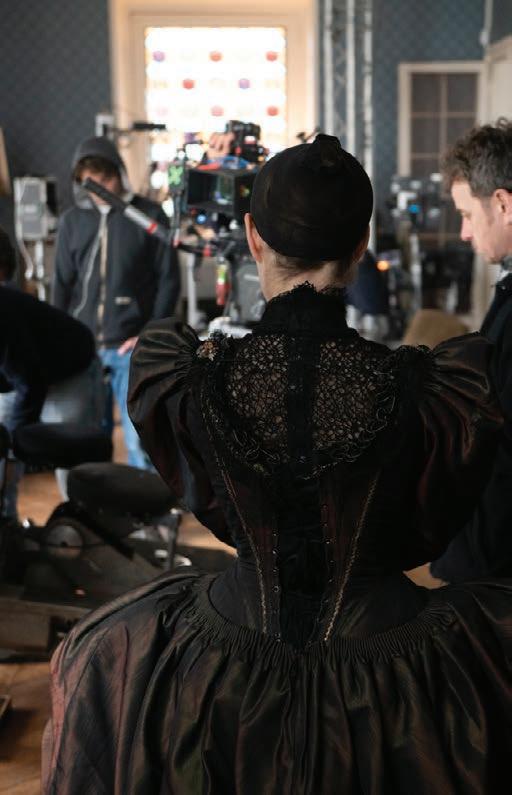
Provence Studios is one of many to receive funding support from the CNC as it continues to expand (including adding a virtual production space). Others include the virtual production specialist Dark Matters, which opened a five stage facility outside Paris recently. TSF has also built a new backlot site at its four-stage Epinay-Sur-Seine facility on a former airfield and featuring a real Airbus A300 as one of the sets. While in the south of France, Nice’s historic Victorine Studios is being modernised, and there’s a 30,000 sqm Pics Studio facility being built outside Montpellier.
The south of France is proving particularly popular with international shows, recently hosting Amazon’s UK drama Mammals and the second season of its Indian romantic drama Made in Heaven, and Beta film’s Swedish-language Agent Hamilton.
VFX BOOST
In a further boost, the country’s enticing 30% rebate on eligible spend was increased to 40% in 2020 for productions that spend at least EUR2 million on VFX work in France. Some of the big projects to access this include John Wick: Chapter 4, which shot in Paris and did VFX there, and Murder Mystery 2
“That is 40% on all expenses for the live action, not just VFX spend, so this is one of the best funds in Europe and one of the top reasons that producers choose France,” says Florant. “We now have the incentive, skilled crews base, studios and stunning landscapes.”
Many of the studios and landscapes, including the Versailles Castle, Le Louvre and Paris Opera House can be found in the locations database of Film France, which promotes the country to international producers and was recently incorporated into the CNC.

Q&A
BILL DOYLE COPRODUCER

The Killer, starring Michael Fassbender
Q: Why did you choose to shoot in France?
A: The Killer is based on the French graphic novel series of the same name and France is a great location to shoot in, so it made sense to film there. We then moved to the Dominican Republic, New Orleans, Chicago and Los Angeles.
Q: How did you prep for and shoot The Killer in Paris?
A: Director David Fincher is meticulous in his preparations, spending a lot of time and money to set up exactly how and where he wants, so we’re ready to go on location, which worked to our advantage when shooting in Paris.
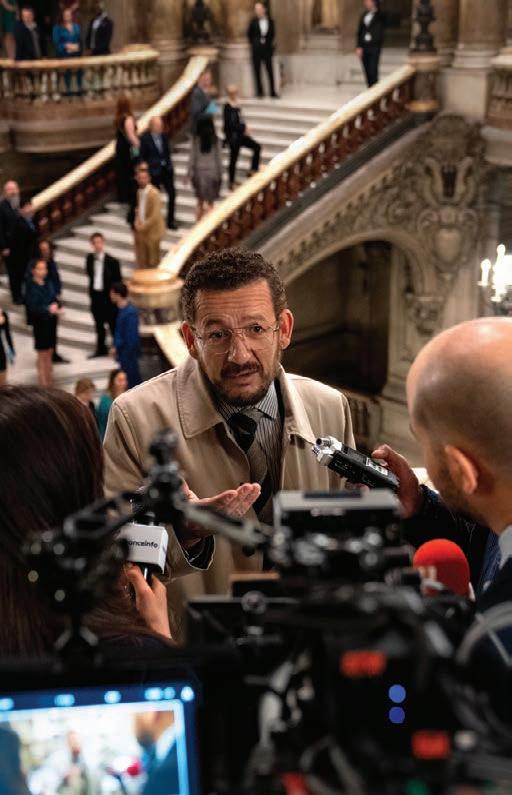
We had to do a lot of sightlines and shooting in a plaza, which meant controlling the area. It had to look aesthetically great and be logistically straightforward to shoot, which is tough in Paris. Fortunately, we had picked the spot early and spoke to the authorities in advance, so we knew from the municipality that everything was doable, and from then it was a dream.
Q: What support did you receive?
A: The local crew were great, very experienced and knew how to handle a big shoot like ours. We also used the same production service company [Raphael Benoliel and Dimitri Veret’s Firstep Production] that had worked on John Wick: Chapter 4 and Emily in Paris, so they knew the lay of the land and how to get things done.
42
La Revolution & Marianne © Emmanuel Guimier/ Netflix, Murder Mystery 2 © Scott Yamano/Netflix.
SOMETHING ELSE
France is going to be on show to the world next summer as it is set to host the Olympic and Paralympic Games (26 July to 11 August).

Despite being called Paris 2024, the major sporting event will be spread throughout France in several different venues. The capital includes the Eiffel Tower stadium, Champs de Mars Arena (above) and Parc des Princes, while outside there’s the Bordeaux Stadium, the CNTS shooting range in Chateauroux, Marseille Marina and more.
Fortunately, unlike with Tokyo 2020, the pandemic shouldn’t have a major effect on the running of the Paris games, but the amount of planning and organizing required to host such an event, with its array of sporting events, thousands of competitors and millions of visitors/spectators is a huge undertaking.
But Vincent Florant, digital director of the National Cinema Centre (CNC), is convinced it won’t impact too much on film, television and commercials filming. “Yes, it will be hard in the very heart of Paris, but otherwise the rest of the city (and France generally) will be fine. Plus, there are the studios they can turn to, and other parts of France that can double for Paris easily, like Chartres and Toulouse. We are in a strong position to handle such a major event and the productions coming in.”
PERMITS AND CREW
Getting permits to shoot at these various locations is surprisingly straightforward, even in the heart of the busy capital city. It just requires prep work, as director David Fincher and his team found on The Killer, an adaptation of the French graphic novel series of the same name, which shot in Paris at the end of 2021 with the support of local outfit Firstep Production (see Q&A).
The growing and experienced local crew and service companies are being increasingly relied on by all these big projects shooting in France. “For example, the Wes Anderson movie, The French Dispatch, was built with local crew who impressed him so much he took them to shoot his next movie even though it was not in France,” says Florant. “So, French crew are building up the know-how to deal with all the feature films and streaming shows.”
This includes shows and films coming to France from outside the US and UK too, including Bollywood productions shooting in Bordeaux, a growing number of Chinese projects, and there’s a German police series, Kommissar Dupin, filming in Brittany.

ESSENTIAL FACTS
TAX INCENTIVES
40%
France’s tax rebate, TRIP, offers 30% on productions that shoot for a minimum of five days in France & spend a minimum of EUR250,000 or at least 50% of the total budget on French qualifying expenditure.

Projects may be eligible for an additional 10% tax rebate bonus if they spend at least EUR2 million on VFX work in France.
TIME ZONE
GMT +1
STUDIOS
Around the capital, there are a few good options, including Studios de Paris, Transpalux’s Saint Ouen & Bry Sur Marne sites, as well as TSF’s four-stage Epinay-SurSeine facility & its new backlot built on a former airfield. While in the south of France, Nice’s Victorine Studios is being modernised & Provence Studios in Marseille is expanding with a virtual production space. Plus, there’s a 30,000 sqm Pics studio facility being built just outside Montpellier.
ATA CARNET YES
TRAVEL
• France is the largest territory in the European Union at 552,000 sqkm
• It is the most popular tourist destination in the world
• The French rail network is the second largest in Europe. By train, Paris is one & a half hours to Brussels, two & a half hours to London & eight hours to Milan.
43
John Wick: Chapter 4 © Lionsgate.
Emily in Paris - Stephanie Branchu/Netflix © 2022 Netflix, Inc.


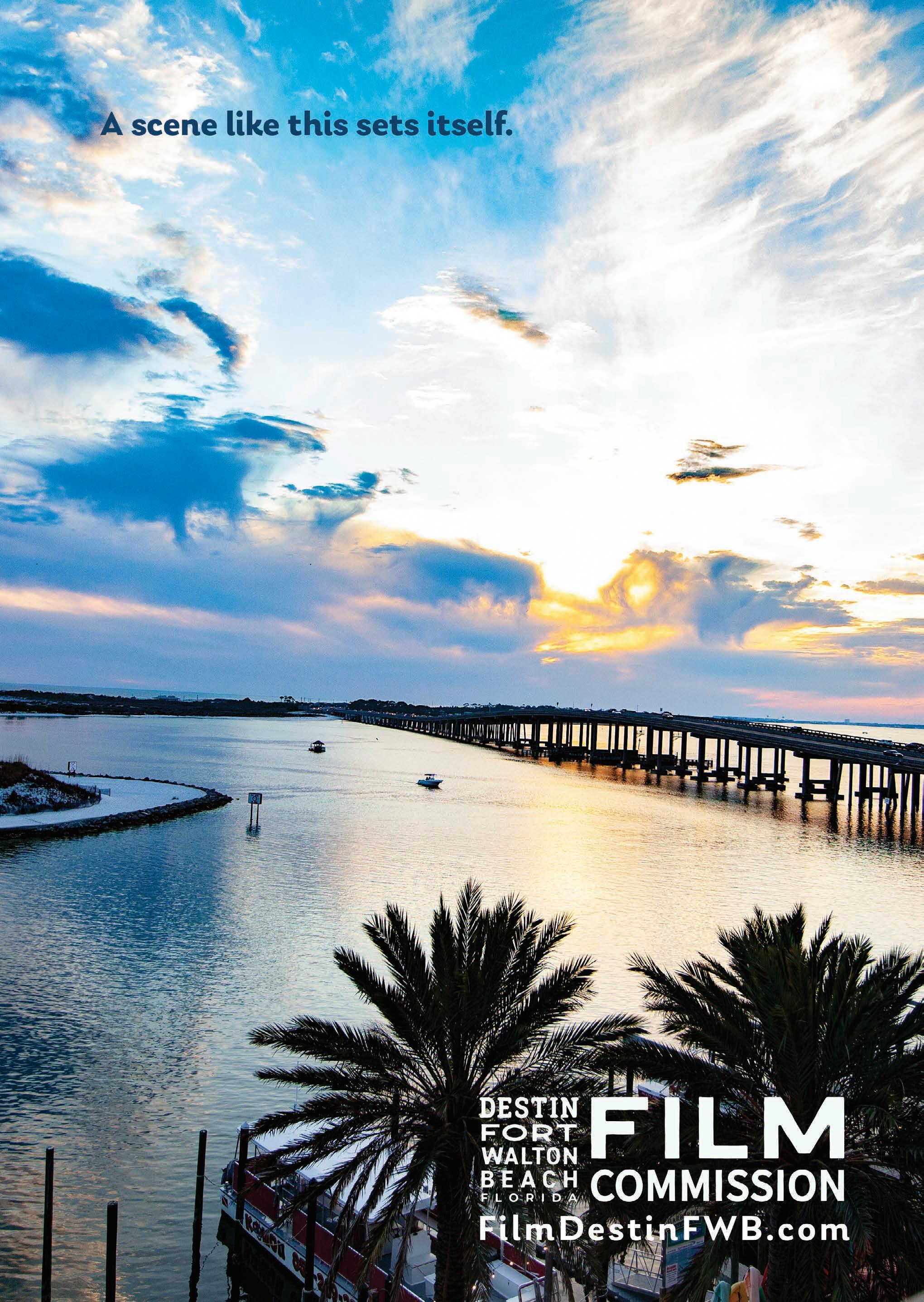
Turning Up The Volume
After the huge success of The Mandalorian, virtual production volumes – both permanent and mobile – have been cropping up all over the US (and worldwide). But is it transforming the filming landscape or just another flash in the pan? Chris Evans speaks to leaders in the field to find out.
LucasFilm-owned VFX company Industrial Light & Magic’s (ILM) purpose-built StageCraft volume in Los Angeles allows actors to perform in front of and interact with a giant LED screen that could show a variety of 3D location backdrops using a real-time games engine.
The high-resolution backdrop provides far more realistic lighting than previous generation green screens. The results on screen seeing, for example The Mandalorian Pedro Pascal’s full body armour reflecting light and the surrounding environment, were very impressive.
“We could see this was tremendously exciting. There was something in it for everyone, from the DoP and director to the guys controlling the money,” says Ian Milham, visual production supervisor at ILM.
Other studios, production companies and VFX outfits quickly wanted to follow suit using the technology on films and television series. As a result, volumes have been cropping up all over the US in the last couple of years, from Trilith Studios’ The Prysm Stage facility in Atlanta (backed by NEP

47
Ant-Man and the Wasp: Quantumania © Disney.
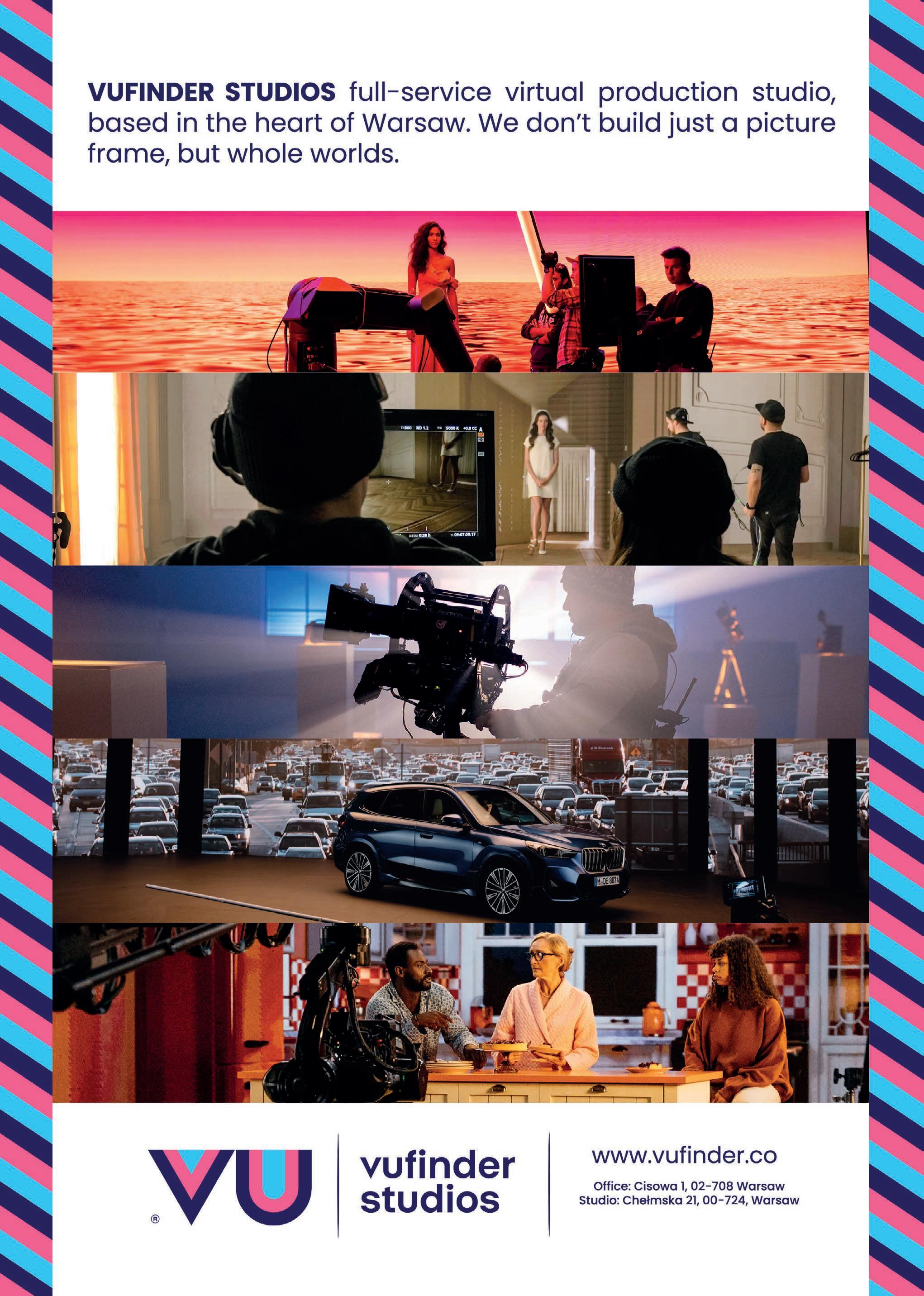
virtual studios, whose parent company owns Lux Machina and Halon Entertainment) to Amazon Studios’ new virtual production stage in Culver City, California, which provides a camera to Amazon Web Services (AWS) cloud workflow and is hosting the family holiday comedy, Candy Cane Lane, starring Eddie Murphy.
This rapid expansion extends to the rest of the world too. The global virtual production market size was valued at USD1.82 billion in 2022 and is expected to expand 18.2% a year from 2023 to 2030, according to Grand View Research.
The concern in some quarters, though, is that the virtual production boom has been happening too fast without enough understanding of the requirements and limits of creating and working in a virtual production environment and how it could be adapted for different projects.
“A lot of people thought it was going to be for everyone and every situation and so they went out and built volumes thinking it was going to change the world,” says James Whitlam, EVP, film and episodic, at VFX studio Framestore.
“You had a lot of people posting a lot of stuff that maybe promised a little bit too much or misrepresented how easy it was to do some things in virtual production. People thought you could just step onto a holodeck and make a movie. But we’re not there yet. It’s an evolution of the tool set,” adds Chris Ferriter, president of Halon Entertainment, who has worked in VP on several big projects, including Star Wars, Avatar, Transformers and The Mandalorian.
Plus the name virtual production has unhelpfully become a catch all. It’s important to note that it is also a set of tools and processes that extend beyond
the stage environment. Applications range from previz and remote scouting to character creation based on performance capture.
“Everything we work on has some element of virtual production,” says Ferriter. “We worked with Bob Zemeckis recently on Pinocchio, which only had minimal LED shots, but the whole workflow was a very virtual process where he shot with a custom virtual camera rig that we built. There are lots of different ways that virtual production is changing the workflow. It’s not always in The Mandalorian style with LED real-time, camera-tracked shooting.”
Connie Kennedy, LA Lab Director at Epic Games, agrees. “There’s a media server kind of broadcasting solution using real engine technology as well, which works for music videos, advertisements and even pick-up shots for movies that allows people to be in multiple locations in a single day.”
EXPERIMENTATION AND EVOLUTION
As more productions start to use the technology in its various forms, there is a growing understanding and appreciation of its potential as a filming tool, rather than as a totally new way of film-making.
“People tend to think of this as a revolution,” says Milham. “That this is how all movies are going to be made in the future. But this is not the case. It is just a great additional tool that is perfect for some films, television series or commercials, and for solving scenes that can be shot in a controlled environment.”

49
&
WORKFLOW
PRODUCTION
“WHAT WE’LL SEE MORE COMMONLY GOING FORWARD IS THE ABILITY TO DYNAMICALLY DEPLOY AND SOLVE FILMMAKER PROBLEMS WHERE THEY ARE AND AT THE SCALE THEY WANT.”
INDUSTRIAL LIGHT
MAGIC
VIRTUAL
PEOPLE THOUGHT YOU COULD JUST STEP ONTO A HOLODECK AND MAKE A MOVIE. BUT WE’RE NOT THERE YET. IT’S AN EVOLUTION OF THE TOOL SET.
The Mandalorian © Disney.
Milham points to a commercial that ILM worked on recently where they created five different 2.5D environments over the span of just three weeks. “Traditionally when you’re building a real-time, virtual environment it’s a big build that costs several hundred thousand dollars and takes a pretty large team. This commercial was a much smaller team, cost less and was still a success.”
Ferriter indicates that television series with repeat locations for each season are also ideal. “There are so many different channels producing a huge amount of content for networks, online and social media channels, often with standing sets that are perfect for virtual production.”
MOBILE
The size and scope of the virtual production volumes can also vary considerably, and even be movable beasts. “We’ve got at the highest end our Trilith volume in Atlanta, which is massive in scale and technologically complex. Then, on the other end of the spectrum, there’s the car process stages –LED screens wrapped around a vehicle – that pop up very quickly and can be used for just a couple of scenes.”
Kennedy explains that there are some productions that don’t need a ceiling in their virtual environment, and would prefer to use different light solutions that include sky panels and augmented lighting, or even DMX lighting.
“We’re still learning how physical lighting translates to virtual and how we combine and automate the two. Plus, hardware companies are always improving the LED panels, while software is improving the tools, and the rendering capabilities are improving with new types of graphics cards. They’re looking at how to integrate human and non-human characters. The tech is constantly taking us to the next level.”
She believes that all studios will be looking at virtual production “because the economic opportunities are huge, especially as we see a convergence of gaming, film and television technology.”
Milham and his team at ILM have taken it a step further by setting up and using bespoke, pop-up volumes around the world to suit particular needs on projects. “On The Batman, for example, we had a Gotham City set and did most of the shooting traditionally, but there were shots of the skyscraper that needed to be done during varying weather and different times of the day and so we wrapped an LED screen around it.
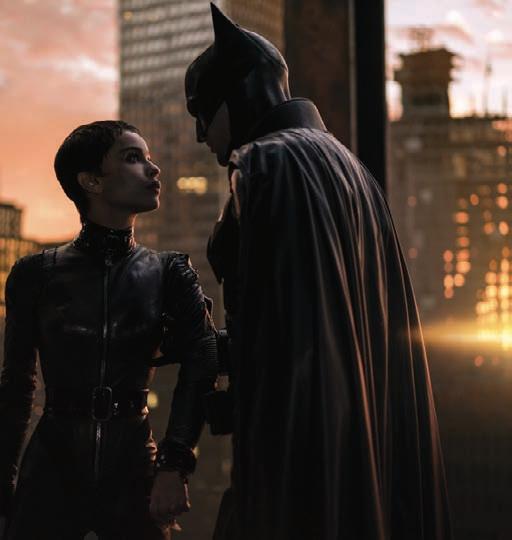
“We’ve done the same on other shows where we’ve just put the LEDs where they’re needed, rather than paying to rent a big volume just to do construction in it for a month.
“What we’ll see more commonly going forward is the ability to dynamically deploy and solve film maker problems where they are and at the scale they want. This could be with a light crew and a couple of panels or it could be a huge operation. We had days on our Star Wars shows where we were running three volumes simultaneously, one main one and two others for testing bits. It was the same on Ant Man and the Wasp: Quantumania – a home base one and a satellite volume.”
Ferriter says, “We’re at the stage in adoption where the people who really know how to make this work within a production are going to continue to be successful, and we’re going to start adopting standards. Knowledge, experience and prep are key.”
VIRTUAL AND REAL
As to whether virtual production will replace location shooting, all the experts agree that it won’t, and instead believe projects will mostly combine the two or still choose to do one or the other.
“There’ll still be a desire for location shooting because there’s nothing like actually being somewhere in person,” says Whitlam. “But if you want to film, say, an airplane crash scene in Iceland, you could either take an entire crew to the country, put them up in hotels and trudge to the site waiting for the magic hour to shoot. Or you can send a small crew out to film in the magic hour, capture a 360-degree view of the environment and then stitch it all together in volume, build a fake foreground, and shoot in magic hour all day.”
“WHAT WE’LL SEE MORE COMMONLY GOING FORWARD IS THE ABILITY TO DYNAMICALLY DEPLOY AND SOLVE FILM MAKER PROBLEMS WHERE THEY ARE AND AT THE SCALE THEY WANT.”
There’s even room for location managers in the virtual production space. “They often turn to us to do plates for volumes, and then put it in unreal engines to expand upon it,” says experienced supervising location manager, Christian McWilliams.
Kennedy adds: “The opportunity to scan an environment and bring it back to a stage and explore it in detail is wonderful. It only adds to our ability to utilize that location in every way possible.”

50
YOU CAN SEND A SMALL CREW OUT TO FILM IN THE MAGIC HOUR, CAPTURE A 360 DEGREE VIEW OF THE ENVIRONMENT AND THEN STITCH IT ALL TOGETHER IN VOLUME.
LIGHTING SOLUTIONS OPPORTUNITIES LOCATIONS
The Batman © 2022 Warner Bros. Entertainment Inc.
Pinnochio © Disney.
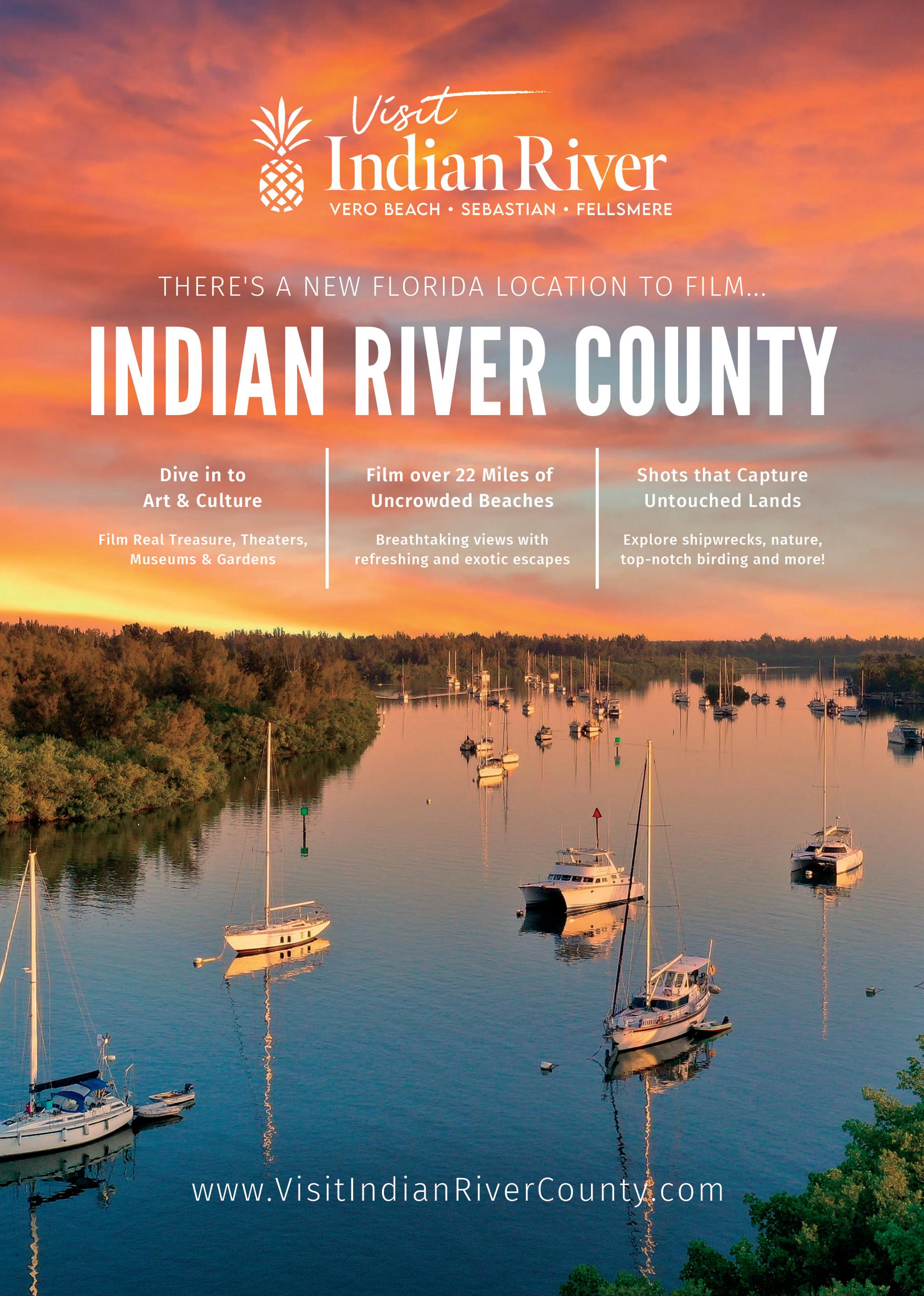

No More Spreadsheets: Tech Advances in Music Licensing
EVERY DEPARTMENT THAT TOUCHES A FILM HAS INNOVATED WITH MORE SOPHISTICATED TECHNOLOGIES, EXCEPT SOMEHOW, MUSIC LICENSING.
JENNIFER FREED, TREVANNA

You’ve heard the phrase ‘Fix it in Post,’ of course. Mostly, you think of VFX shots or continuity errors, but often music is the most impactful fixer of all. Music makes a scene scarier, funnier, more romantic and solidifies the emotional connection between consumer and content creator.
For many music teams, however, this hasn’t translated into a major upsurge in budget. Instead, production teams are pushing to do more with less, and leaning on freelancers who are communicating with licensors on behalf of a studio or brand. Monitoring and applying guidelines to the process is particularly tough to control in a patchwork system.
TRACKS
FOUNDER
AND CEO, OUTLINES WHY 2023 PROMISES TO BE A BREAKTHROUGH YEAR FOR MUSIC LICENSING.
While every department that touches a film has innovated with more sophisticated technologies, somehow, music licensing never made that transition. It has lagged despite music’s essential role in the production of compelling, memorable content.
The pursuit of the perfect track demands a lot of creativity, deep relationships, fierce negotiation skills – and paperwork. Music supervision requires taste, agility, and vision; you need to have multiple options for every scene lined up for your director and respond to change. Some of these decisions are made during principal photography, some throughout editorial, but many are not made until the final mix.
Every track used must have a fully-executed license and proof of payment to legally protect the production and the distributor. Teams need to clear very specific usage rights, accounted for in each license (an average of four per track, but more when there are many songwriters or a dreaded sample!). The metadata is often messy, and recording rights often change hands. To add to the complexity, this is not a rate sheet type of negotiation. You can’t just look it up like a product with a barcode. It depends on context, usage, and duration. A music supervisor may have cleared a song to be in a series, but not the rights to use it to market that show.
This licensing workflow requires a high level of organisation. An experienced supervisor selects and negotiates music that’s a perfect fit, but must also navigate an influx of paperwork, which often makes up as much as 70% of the job. Really talented professionals have to shuffle between emails, outdated spreadsheets, and randomly labeled PDFs scattered among systems that don’t interact, with no standardisation across projects. “We’re doing just fine” has become the motto.
Adding to the challenge is the rapidly increasing pace and volume of syncs needed. Tech is making it easier to create and edit video, and these videos need soundtracks. In 2022, sync had a record year in terms of revenue. More music is being used everywhere, with growth especially strong in marketing for digital mediums and social platforms.
There are signs of hope and 2023 promises to be a breakthrough year. The spirit of tech innovation that’s driven sync growth is finally filtering into the back office as music teams and publishers are beginning to adopt new products designed to streamline operations substantially.
For production teams, this technology revolutionises music clearance and licensing activities, eliminates the margin for error, ensures clean data, enables seamless and thorough communication with licensors, and leverages the ability to look back on past decisions to inform future ones. Major studios and production companies are moving from in-house, or insecure systems to collaborative solutions that drive productivity, cost and time savings, and analysis.
There are innovations that provide digital organisation, inventory capabilities, interdepartmental communication, and access to partners wherever they’re located. Updating old systems is the highest productivity-driven investment a company can make. It is a necessary step to success in the current market and at the same time, it’s a shift in mindset which requires the vision to push departments in the right direction.
Jennifer founded Trevanna Post, a post-production accounting house, in New York expanding internationally with offices in LA and London. Her access to veteran film and television industry experts enabled Jennifer to form a powerful think tank as she created a new model for researching, budgeting, tracking, paying and delivering music licenses, forming Trevanna Tracks in 2016. Working at the intersection of post-production and technology, she possesses a unique perspective of how both sides operate.
53
Regulating Synthetic Media
Kim Kardashian is a bus driver, Nicki Minaj and Tom Holland wear matching pink velour tracksuits, Greta Thunberg pushes baby Algae in a pram. Scenes from ITV sitcom Deep Fake Neighbour Wars which brought synthetic media into the homes of many people in the UK for the first time earlier this year.

Deepfake satire is already popular online with fake celebrities generally mocked up doing mundane housework, dancing or singing. Such innocuous uses of the technology are unlikely to generate a cease and desist letter from the celeb’s lawyers.
That was Hat Trick’s thinking too. The makers of the ITV show placed icons like Idris Elba and Harry Kane in day to day trivia like arguing over a split patio. None of the famous figures used in the programme were reportedly asked for their consent, but Hatrick and ITV made sure they had some legal cover. Each episode opens with disclaimer and the entire show is watermarked with a deep fake logo.
When it comes to living celebrities it seems that existing law is adequate pertaining to image rights, privacy and IP. Firstly, what is in the talent’s contract? Did they address use of their rights after
54
Regulators are paying greater attention to balancing the benefits of AI against concerns about personal data and the protection of IP. The EU’s pending AI Act is intended as a new global legal framework that would subject AI users to scrutiny – but as it stands the law is a grey area open to interpretation.
Deep Fake Neighbour Wars © Tiger Aspect Productions.
EVEN WITH THE MOST AUTONOMOUS AI TODAY YOU HAVE SOMEONE RESPONSIBLE BEHIND IT: A PRODUCER, OWNER, CREATOR, PROGRAMMER, FILMMAKER. THE DAY YOU SEE AN AI WORKING WITHOUT ANY MASTER IS THE DAY SCI-FI BECOMES REALITY.

the project in question? It could matter where the talent is from. For example, if they live in New York State they may have registered their rights with the state under its deepfake law.
Matters may be more delicate surrounding the deceased. Personal rights don’t die with the human body.
“Try to create an avatar of Bruce Lee in the metaverse and good luck!” says Matthew Ferraro, counsel at law firm Willmerhale. “You need the permission of the foundation managing Lee’s legacy. Then again, it depends on the character you are deepfaking. A British King of the 14th Century you can do quite easily. Maybe the English crown will feel offended and sue you but it’s unlikely. It’s really common sense.”
But with synthetic media technologies advancing by the second, this is just the tip of the iceberg. Dangers lie ahead, the extreme being deepfake porn and fake news where politicians apparently spout conspiracy theories.
This is happening so fast, the law has not kept up, creating a huge grey area open to misinterpretation.
“The two words lawyers love the most are ‘it depends’,” says Ferraro, speaking at the Synthetic Media and the Future of Film event organised by deepfake specialists Metaphysic. “Talk to your lawyer before going ahead. There is no protection like consent.”
In the US, a blueprint for an AI Bill of Rights has been introduced but various states are jumping the gun. Ten states regulate deepfakes of some kind mostly around non-consensual use in pornography. Two have created explicit rights around an individual’s digital replica (New York protects digital likeness after death; Louisiana while one is living). Illinois has added biometric information to its privacy laws.
Texas bars the use of deepfakes within a week of an election. “If you read it, the law makes no sense,” Ferraro says. “They wrote it without understanding the tech. It is far too broad and would never survive a legal challenge.”

In addition to which, he says, if Congress had passed the same legislation at Federal level, it would likely have suffocated technology innovation.
“I am a little sceptical that you can write ahead of time a law that a priori will anticipate how technology develops,” Ferraro says.
While the US offers a patchwork of laws pertaining to privacy, copyright and contract law that indirectly might be applied to AI, in Europe legislators are more gungho. Just as they took on web giants like Google and Apple to curtail cookies with GDPR, the European Union is in the process of writing its AI Act.
“I AM A LITTLE SCEPTICAL THAT YOU CAN WRITE AHEAD OF TIME A LAW THAT A PRIORI WILL ANTICIPATE HOW TECHNOLOGY DEVELOPS.”
This will categorise AI as either being an unacceptable, high or low/minimal risk. Unacceptable-risk AI systems include, for example subliminal, manipulative or exploitative systems that cause harm.
The EU AI Act will come into force by 2024 and may be a gamechanger, according to Thibault Verbiest, partner with Belgium-based Metalaw, where he heads the department dedicated to fintech, digital banking and crypto finance.
“Like GDPR, it will have extra judicial effect because every time you use an AI in the EU (which is the case for any online application) it will be subject to that Act just as GDPR is now a massive reference in the field of privacy regulation.”
55
SYNTHETIC MEDIA INTELLECTUAL PROPERTY COPYRIGHT
AI was used extensively as Andy Warhol’s voice to narrate the documentary The Andy Warhol Diaries ©Andy Warhol Foundation/Netflix.
Roadrunner: A Film About Anthony Bourdain controversially used of AI to reproduce Bourdain's voice for some audio clips © Focus Features.
Meanwhile, the UK's proposed Data Protection and Digital Information Bill is likely to include updates to the UK's data protection regime which take account of the benefits and risks of AI and personal data.
The EU are also willing to regulate the IP content created by AI. Current European IP law is determined by the identity of an author – and the author must be a human being. That is explicit in the legislation but has led to a problem.
“There are a number of countries that exclude IP recognition when the content is produced by a machine without human intervention,” Verbiest explains. “To address this the EU is classifying two different types of AI content: AI assisted output and AI generated output.”
The latter refers to a machine that’s completely free from human intervention to create whatever it wants. In that case there is no human author and zero IP protection. This is what the EC wants to change by enlarging the scope of the database regulation.
“In IP law we have a regime designed for the producers of databases,” says Verbiest. “Normally you are not protected by IP even if you arranged the content of the database. That is why there’s a special directive intended to give IP protection to the producers of a database. The idea is to enlarge that to the benefit of the producers of an AI that would be to all intents and purposes completely autonomous.”
When it comes to AI assisted content, the EU has put in place a four-step test to assess whether there is sufficient amount of free and creative input from a human in the AI process.
“It is a very factual assessment. For instance, if you select the data you use to feed the AI that can be enough to qualify an amount of free and creative effort from a human and then that human will be the author of the output and will be copyrightable.”
Yet the technology is so nascent and advancing so fast that there are those arguing that regulation shouldn’t be cemented until it matures. Verbiest is one of them.
“Generally speaking I would favour a more progressive approach which promotes self-regulation and an industry code of conduct. That can then be assessed, with legislation drafted afterwards pinpointing any gaps.”
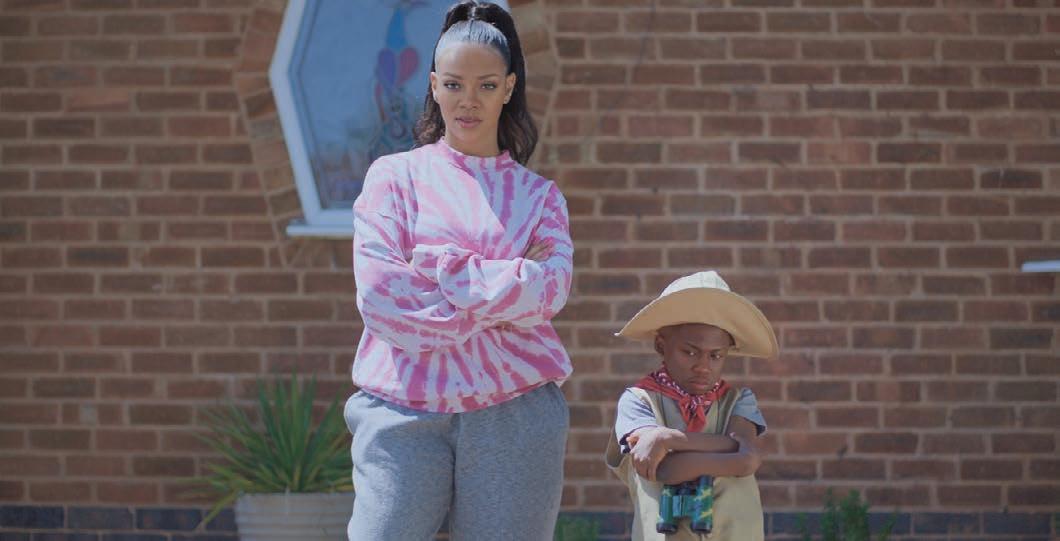
Ferraro says the delta between doing nothing about the issues and blanket laws passed by Congress and the President is huge. “There is so much more you can do to promote positive use of AI with existing law. You don’t need to hammer everything with a nail.
“Right now, US law treats AI like a camera,” he continues. “In other words, when someone takes a picture, the camera has no rights to the photo. The photographer has the rights.”
For example: In 2011 a macaque monkey picked up photographer David Slater’s camera and took a selfie. Who owns the rights? The case went to court in the US and found that the monkey had no rights to ownership because, in copyright law, a human has to be part of the creation to own authorship.
Likewise, says Ferraro, “an AI has no output rights in and of itself.”
Sometimes, users of DALLE-2 or similar generative tools, are subject to terms and conditions that afford ownership rights to the tool’s owner (such as OpenAI). In this case, what you are creating belongs to the company that created that particular programme.
“Even with the most autonomous AI today you have someone responsible behind it: a producer, owner, creator, programmer, filmmaker,” says Verbiest. “The day you see an AI working without any master is the day sci-fi become reality.”
Verbiest continues, “Today all AI are tools used by humans. No exception. It is absurd to subject AI to personal rights today. So, the question is to define and designate that human author. Who has contributed? Who has made the effort to feed the machine? Who owns the data that fed the algorithm? The owner may be a remote programmer but there will be an owner.”
56
“ THE TECHNOLOGY IS SO NASCENT AND ADVANCING SO FAST THAT THERE ARE THOSE ARGUING THAT REGULATION SHOULDN’T BE CEMENTED UNTIL IT MATURES.”
PROTECTION AI DEEPFAKE
THERE IS SO MUCH MORE YOU CAN DO TO PROMOTE POSITIVE USE OF AI WITH EXISTING LAW. YOU DON’T NEED TO HAMMER EVERYTHING WITH A NAIL.
Deep Fake Neighbour Wars © Tiger Aspect Productions.
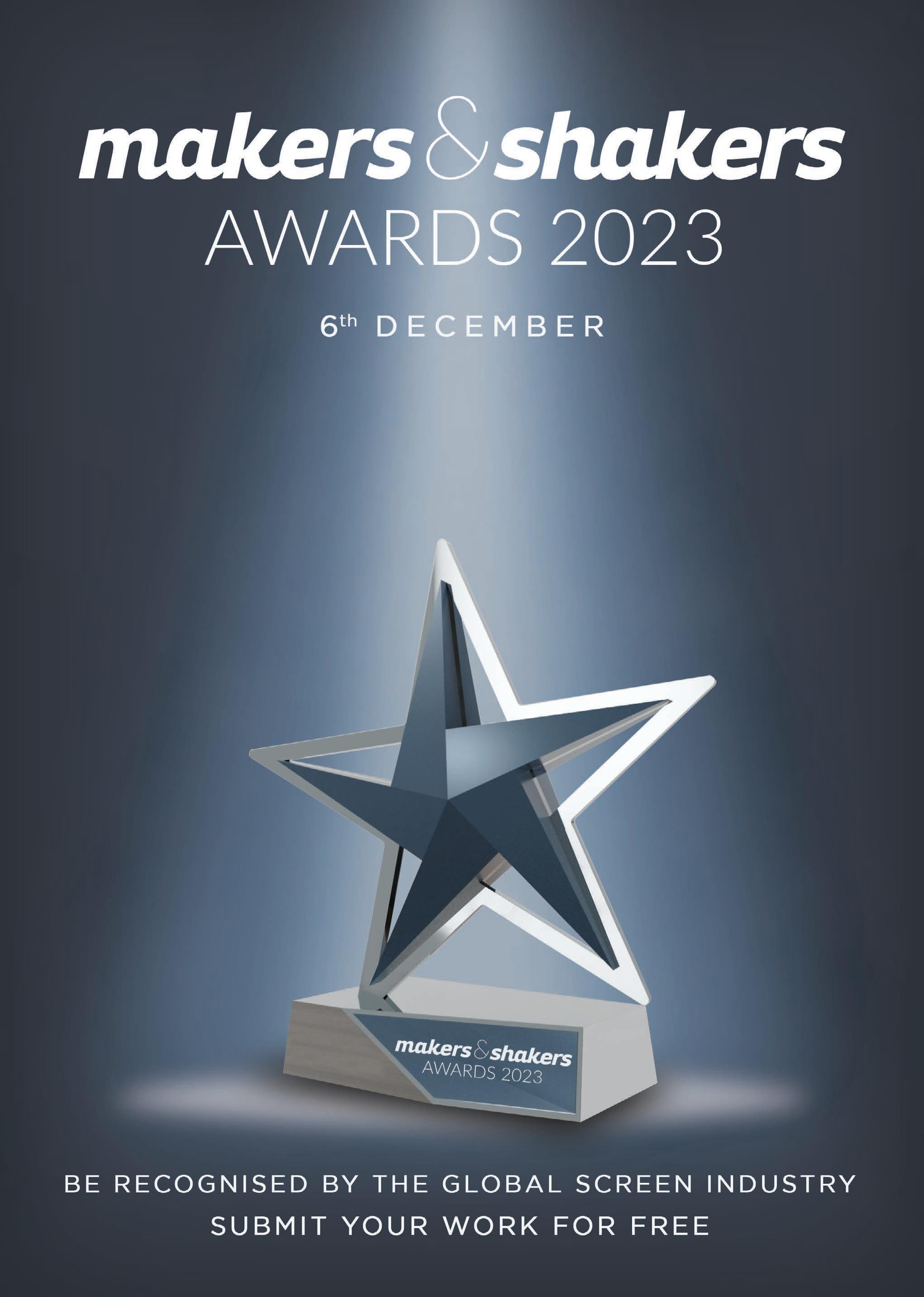
Moon Shot: Space, the new frontier of filmmaking
Space 11 has announced the reality television show Galactic Combat in which 40 mixed martial arts fighters compete for eight berths and the chance to fight in zero gravity on board a rocket shuttle orbiting Earth.

58
A MULTI-BILLION DOLLAR ECONOMY FOR COMMERCIAL ENTERPRISE IN LOW EARTH ORBIT IS HOTTING UP WITH FILM AND TELEVISION PRODUCTIONS AMONG INDUSTRIES TIPPED TO EXPLOIT THE SPACE. EXORBITANT COST, EXTREME SAFETY HAZARDS AND A MICRO-GRAVITY ENVIRONMENT ARE NO BARRIERS TO THE PIONEERS OF A NEW FILMMAKING FRONTIER.
Amixed martial arts reality TV contest in zero gravity. A Hollywood star space walking, no CG required. A fully equipped sound stage orbiting the earth.
It seems the stuff of daft science fiction, something Gerard Butler might appear in.
“Ours will be the first film to show what living in space will be like for real in 2030,” says Patricia Beninati, president of production company Centerboro. “Think Gerard Butler of Geostorm crossed with Jodie Foster of Contact – that’s the high level pitch.”
Make no mistake, Hollywood is taking space very seriously and as the race hots up it is likely we will see dozens of tech billionaire and celebrity vanity projects to commercials, blockbusters even concerts filmed 250 miles above the Earth.
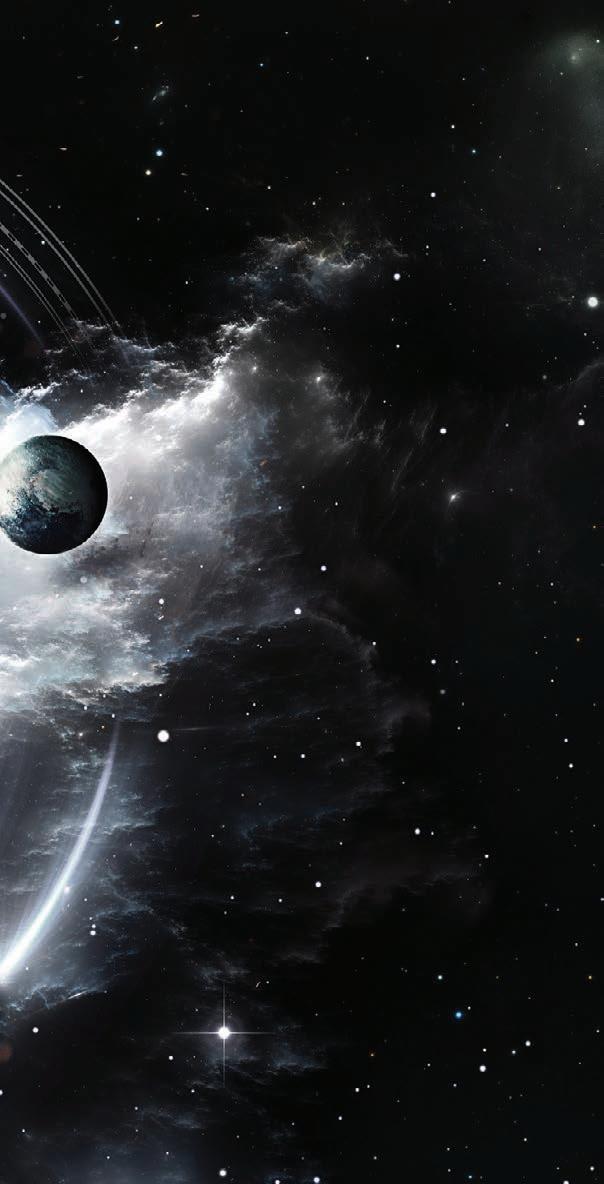
Reasons are varied. Some media projects unabashed national propaganda – and you can count NASA’s involvement in them onboard. Some just inflate the egos of tech billionaires. But there is also a business opportunity which has seen aeronautical hardware companies ally with savvy producers to open the next frontier of filmmaking.
None of this would be possible without the commercialisation of space by the likes of Virgin Galactic and SpaceX. The International Space Station will be decommissioned in 2030 just when space stations are in hot demand as a stepping stone to the Moon. Several new orbital bases are being built and looking for lucrative government contracts. Generating income from media production is one way of keeping your craft afloat – and the additional promotional value doesn’t harm.
Robert Feierbach, Executive Producer of Helios, points to the burgeoning economy of Low Earth Orbit (LEO) systems “which have made it cheaper to access space.”
Costs remain sky high. Hauling equipment and supplies upwards isn't cheap. Just one seat on SpaceX’s Crew Dragon is thought to cost around USD55 million. Then there's the cost of staying up there, which can range anywhere from between USD88,000 to USD164,000 per person per day.
Casting ahead, it’s surely only a small leap away from shooting on the lunar surface itself. “Once a safe environment is created on the moon, it might be easier to film there than on a rocket ship in orbit,”
says John Lewis, VP & Managing Partner of Space 11 Corp. “Elon Musk is at the forefront of all the exciting things happening in the space industry, including his goals of making us a multi-planetary species. Who knows what doors he will open in the years to come as he leads SpaceX into the future?”
RUSSIANS LAND FIRST
Directed by Klim Shipenko (see our exclusive interview on page 63), the Russian film Vyzov (The Challenge) is the first narrative feature to filmed in space with a professional actor.
Released in April by Russian distributor Centerpart, the drama features 45 minutes of action edited from 30 hours of material shot aboard the International Space Station (ISS) during a two-week mission in October 2021.
Shipenko flew to the Russian wing of the ISS with actress Yulia Peresild, who plays a surgeon in the drama making an emergency rescue to save the life of a cosmonaut.
Funding was by Russian space division Roscosmos and state broadcaster Channel One with production company Yellow, Black and White turning the process of selecting the lead actress from 3,000 applicants into a reality show.
The Challenge: The First in Space aired in 2021 and showed the specifics of the selection and training behind the project including centrifuge tests and flights in zero-G.
“SEE1 WILL PROVIDE A SUPREMEQUALITY SPACE STRUCTURE ENABLING THE EXPANSION OF THE TWO TRILLION DOLLAR GLOBAL ENTERTAINMENT INDUSTRY INTO LOWEARTH ORBIT.”
Filming also took place on the ground-based weightlessness laboratory aircraft. “I wanted to have the feel of big motion picture on a big screen not something that had been shot on iPhone,” says Shipenko, who used a professional cinema camera and acted as cinematographer in space.
“The biggest difference is that on the ground our brains are used to gravity but the reality of space is completely different,” he revealed. “Your mind has to adjust to the absence of up, down, left, right. In space you stage a scene with both people hanging upside down and this is completely normal.”
59
He was relieved to discover that shooting in space wasn’t impossible and hopes his experience will benefit other filmmakers.
“When you are by yourself with one actor there is only so much you can do. The bigger the film crew the more interesting and complex the shots and stories will be. Others will think it is not really worth the risk or the cost.”
CRUISE BOLDLY GOES
Tom Cruise’s bid to shoot in space and even space walk was trumpeted three years ago but the needle appears to have stuck. Edge of Tomorrow director Doug Liman was attached along with Universal. It is being co-produced by UK-based Space Entertainment Enterprise (SEE).
Separately, SEE announced plans to build and launch a movie production studio which will connect with the ISS. Targeting completion by 2025, SEE-1 will provide “a supreme-quality space structure enabling the expansion of the USD2 trillion global entertainment industry into LEO.”
The aim is to host film, TV, music and sports events “as well as artists, producers and creatives who want to make content in the low orbit, microgravity environment”. The facilities will enable development, production, recording, broadcasting and livestreaming of content.
SEE’s co-founder is Dmitry Lesnevsky, former co-founder and CEO of Russian TV channel Ren-TV. He has appointed ex-Endemol Shine UK CEO Richard Johnston as COO. Mark Taffet, former SVP of sports and pay per view at HBO, and ex-Viacom technology VP Remi Abayomi are also aboard.
HELIOS
Amazon founder Jeff Bezos’ company space Blue Origin is backing sci-fi thriller Helios which is being produced by Centerboro Productions. Blue Origin and Sierra Space are building space station Orbital Reef which will be heavily featured in the movie.
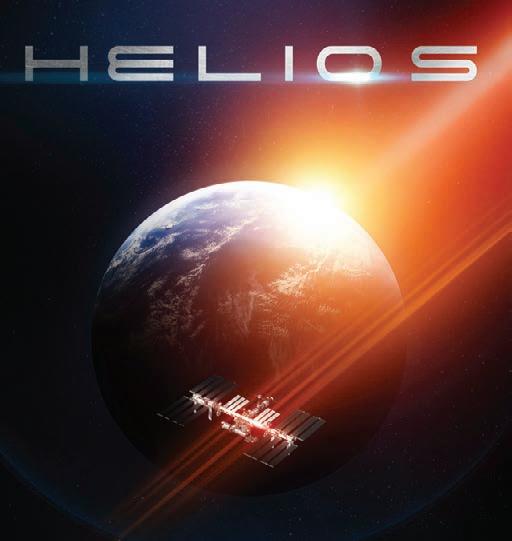
The story is about a rescue mission to save humanity when world’s electricity is knocked out by solar flare. Experts including Feierbach and former ISS commander Garrett Riesman have advised on the script.
The film also has the backing of spacecraft launch service provider United Launch Alliance and will be directed by Michelle Danner (Miranda’s Victim).
“We’re not just bringing them in to bring the money,” says Beninati. “The aim is total authenticity and to spread the word in the STEM community that we are supporting space for all. That is our mission.”
Yet the film, destined for release before 2030, won’t actually feature any footage shot in space. It is planned to be shot in the real interiors (or mock-ups) of some genuine space-bound craft. Ground based locations are planned in New Mexico.
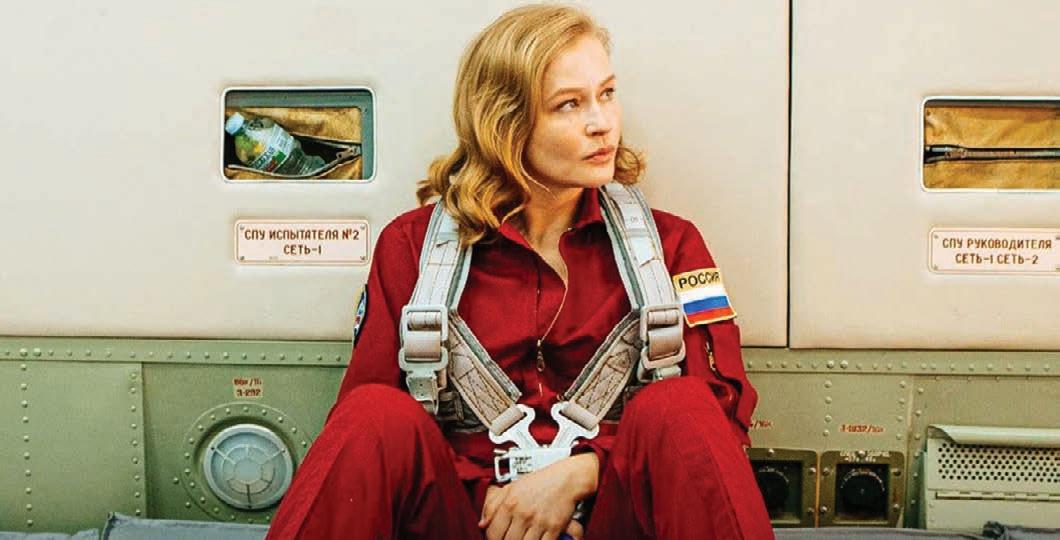
“You will see some very heavy promotion of Helios around Blue Origin launches,” Beninati promises. No distribution for the project has been signed.
“THERE IS A BUSINESS OPPORTUNITY WHICH HAS SEEN SPACE AERONAUTICAL HARDWARE COMPANIES ALLY WITH SAVVY PRODUCERS TO OPEN WHAT THEY MIGHT DESCRIBE AS THE NEXT FRONTIER OF FILMMAKING.”
“The new gold rush is in space. There is so much opportunity in space right now for everyone.”
MMA IN ZERO-G
Space 11 has perhaps the most outlandish plans. It aims to build a space station operational by 2028 specifically for film and television projects. Before then it has announced reality television show Galactic Combat in which 40 mixed martial arts (MMA) fighters compete for eight berths and the chance to fight in zero gravity on board a rocket shuttle orbiting Earth. Former Big Brother (US) and Hell’s Kitchen showrunner Thomas Loureiro has been hired to head the project.
Space 11’s founder is the serial film and television producer Andrea Lervolino, including Waiting for the Barbarians (2019) starring Johnny Depp and Mark Rylance.
Lewis, a former MMA champion and also co-producer of Helios, is a partner in the venture. “Imagine a world where you can watch your favourite band perform in zero gravity or see an epic battle scene in a movie set in outer space that was actually filmed there,” he says. “That's exactly what Space 11 is working towards. While the details are still hush-hush, their mission is clear: to bring all the entertainment we love on earth to space.”
60
BLUE ORIGIN NASA GRAVITY
ONCE A SAFE ENVIRONMENT IS CREATED ON THE MOON, IT MIGHT BE EASIER TO FILM THERE THAN ON A ROCKET SHIP IN ORBIT.
Yuliya Peresild in The Challenge © Roscosmos.
Helios © Centerboro Productions.

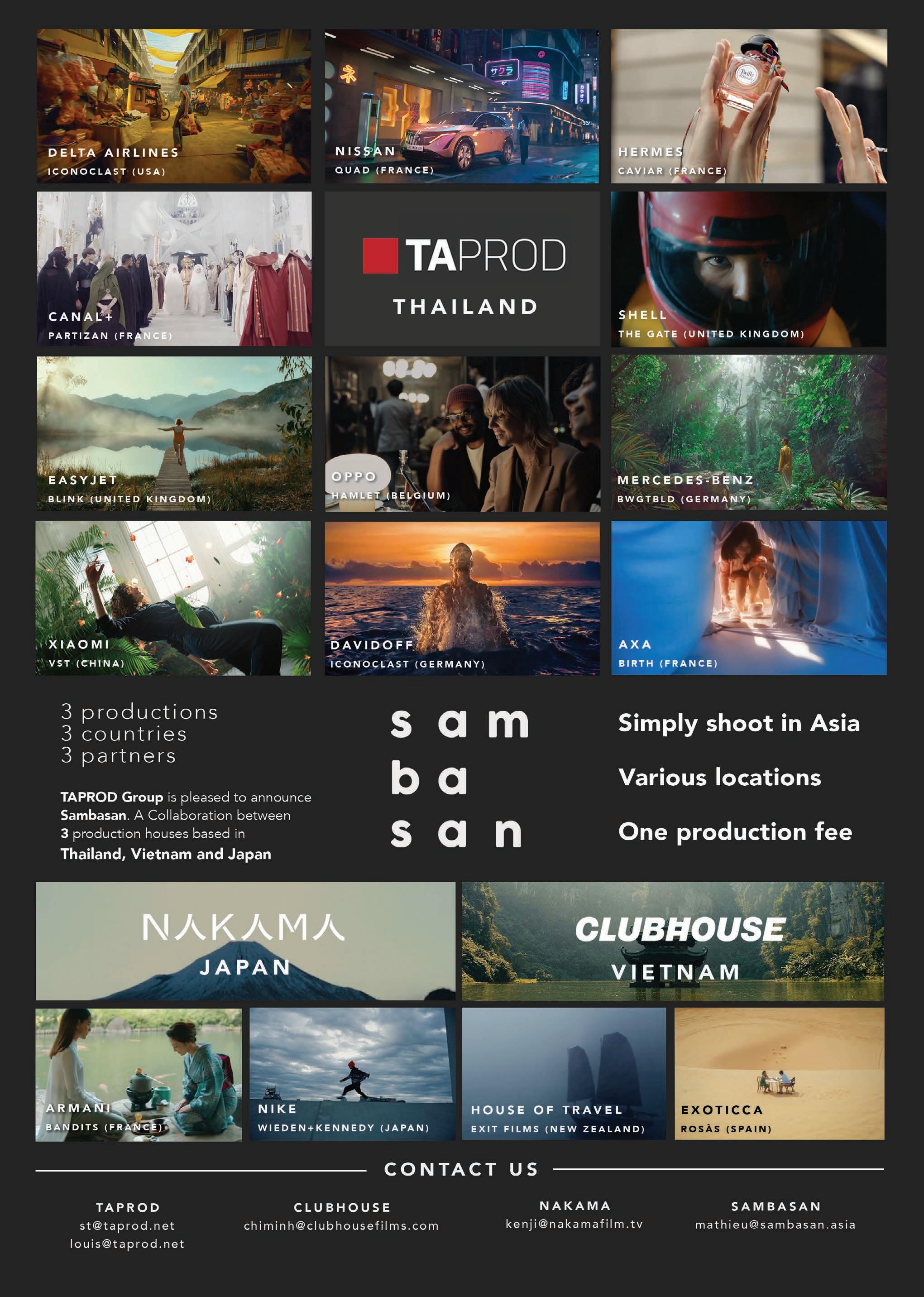
Filming in Zero Gravity
DIRECTOR KLIM SHIPENKO FILMED FOR 12 DAYS ABOARD THE INTERNATIONAL SPACE STATION TO MAKE THE FEATURE DRAMA THE CHALLENGE. IN AN EXCLUSIVE INTERVIEW WITH MAKERS, HE SHARES HIS EXPERIENCES OF SHOOTING IN SPACE.

The director of Russian space drama The Challenge who filmed aboard the International Space Station (ISS) hopes his experience will benefit other filmmakers planning to shoot in zero-gravity.
“I never thought Tom Cruise would call me but I did think I’d receive some calls from film directors asking if I could give some insight,” says Klim Shipenko. “I could give some short cuts to help them how to prepare.”
Shipenko spent 12 days aboard the ISS in October 2021 with actress Yulia Peresild to film scenes for Vyzov (The Challenge), claimed as the first feature to be shot in space featuring a professional actor and crew.
It beat other planned space bound projects including one set up at Universal and starring Tom Cruise with director Doug Liman. This was announced in 2020 and confirmed last year by Universal boss Donna Langley.
“I am very competitive, I wanted to be first and I wanted this to be successful,” says Shipenko who previously made 2017 space disaster movie Salyut 7. “What I didn’t want was to find it was impossible to shoot up there.”
“Since I didn’t get a call from anyone perhaps that means they are not really serious. If someone had [gone into space to film] before me I would definitely have called them to pick their brain for hours. I couldn’t do that because no-one had done this before me.”
The drama, funded by Russian space division Roscosmos and scripted by Shipenko, concerns a surgeon (Peresild) who has to travel to the ISS to save the life of a cosmonaut on board (played by veteran cosmonaut Anton Shkaplerov). It features 45 minutes of footage shot on the ISS from over 30 hours captured by Shipenko.
“We were going for a very realistic, dramatic film,” he says. “I didn’t want any sci-fi and minimal CGI. “Since I had a chance to really shoot it and not do CGI version of zero-gravity I decided we want an audience to feel what it’s like to go into space and that our main character would be the audience’s alter ego.”
The casting process for the lead actor was turned into a reality show broadcast on Russia’s Channel One in the weeks before launch. Peresild, then aged 36 and an established actor in films including 2015’s Battle for Sevastopol, was selected from 3,000 applicants for the role.
She and Shipenko, then aged 37, went through a training course including centrifuge tests and flights in zero gravity. Cameras captured the launch of the Soyuz-2.1 rocket which took them to the Russian segment of the ISS. Shipenko also carried a small camera with him in the cockpit taking shots of Peresild during the ride into space.
On board, Shipenko filmed with RED Monstro and acted as cinematographer, lighting director and imaging technician organising, copying and sending dailies back to earth.
Despite rehearsing scenes on ISS simulators at Baikonur Cosmodrome he says nothing prepared him for the reality of zero-gravity. “Your mind has to adjust to the absence of up, down, left, right. Everything I planned on the ground changed. Simple things on Earth like staging a shot of two people talking to each other, in space could be both people hanging upside down and this is completely normal.”
He says he was constantly rehearsing how to hold the camera while moving about the craft. “I was also pulling focus which up there was hard to do. Some takes were not as focused as I’d like so we had to redo them. I tried to be as meticulous as I would be shooting on the ground.”
“There are many limitations in space but opportunities also,” he adds. “The more people who can go up in future and the bigger the film crew the more interesting and complex the shots and stories will be.
“When you are by yourself with one actor there is only so much you can do. Take five actors and more crew into space and you can only imagine the stories that might develop.”
Shipenko revealed that initial plans were for just one person, an actor, to go into space but he convinced Roscosmos otherwise. “If we send just one actor you won’t have a film, I told them. It won’t be a motion picture. So after that they agreed to send two of us.”
63
Klim Shipenko © Roscosmos.
JORDAN desert discovery
Offering otherworldly landscapes like those found in Wadi Rum and on the coast of the Dead Sea, Jordan is a paradise for filmmakers looking for unconventional visuals. Along with an accessible range of services and incentive programme, Jordan is well equipped for all productions needs.
John Wick returned to cinemas for the fourth instalment of the franchise in March 2023. The start of the action-packed escapades kicked off in Wadi Rum, Jordan which was used in place of Morocco. With broad dust covered landscapes that transport viewers to environments beyond their imaginations, Wadi Rum has been a destination for many blockbuster hits, since its iconic depiction in David Lean’s Lawrence of Arabia (1962).
“John Wick was one of the fastest productions, shooting over three days,” commented Bashar H. Abu-Nuwar, production service manager at the Royal Film Commission of Jordan. “We travelled about two hours outside of Wadi Rum where we have one of the biggest mud flats on earth. They only scouted for two days before, and once they found the locations, trained the horses for the shots, it was over in no time.”
Assisted by Zaman production management in navigating the services of Jordan, the first instalment of Dune utilised the red sand stone formations and landscapes of the area (which is also known as Valley of the Moon) for the unique landscapes of fictional planet Arrakis.
The locale was also home to 2022 Marvel series Moon Knight Dune: Part Two returned to Jordan for filming last July and concluded at the end of the year. Timothée Chalamet will return as Paul Atreides joined by his co-lead Zendaya as Chani with the film’s release in November.

LOCATION HIGHLIGHT
The 8th century preserved mud-brick structure of Al-Kharana Palace is truly a sight to behold. Located in the remote and deserted corner of eastern Jordan, the palace’s unique architecture has been used for a slew of cinematic moments including David Lean’s 1962 classic Lawrence of Arabia, Steven Spielberg’s 1989 adventure Indiana Jones and the Last Crusade where it featured in the final scenes. The palace has also appeared in Naji Aby Nowar’s 2014 directorial venture Theeb, which made significant use of the surrounding isolated desert landscapes.
Architecturally it is a marvel, with an intricate blend of Arabic and Persian stylings. The palace once served as an inn for travelers making their way across the dust covered landscapes. Offering large rooms, with high ceilings, arched doorways and ornately decorated spaces, visitors were met with conditions fit for royalty as they took a break from their journeys.

“FROM JOHN WICK TO DUNE, JORDAN’S EXPERIENCED CREW AND ATTRACTIVE INCENTIVES HAVE CONTRIBUTED TO A HOST OF CRITICALLY ACCLAIMED BLOCKBUSTERS.”
64
Image: Filming John Wick: Chapter 4 © Royal Film Commission – Jordan.
While Wadi Rum has attracted a host of blockbuster projects, Jordan is home to a variety of filmic locations, from the juxtaposition of modern cityscapes and ancient ruins in Amman to the northern Jordan Ajloun Forest Reserve. With green valleys, otherworldly mountains and expansive deserts, Jordan has often been used to duplicate locations in Libya, Egypt, Syria, Iraq, Afghanistan and Pakistan.
ESSENTIAL FACTS
TAX INCENTIVES 10%-25%
With a minimum required spend of USD 1 million to access the subsidy, Jordan offers filmmakers travelling to the region for production a lower band tax subsidy of 10%. Over a spend of USD 7 million dollars, the incentive reaches a high of 25%
ATA CARNET
NO STUDIOS
Royal Film Commission of Jordan, Two Four 54 & Red Sea Astrarium.
RECENT PRODUCTIONS
The historically unique settings of Jordan were recently used for blockbuster projects John Wick: Chapter 4 as well as welcoming back Denis Villeneuve’s Dune: Part 2.
TIME ZONE GMT +3
For productions hoping to explore all corners of the region for their creative needs, journeys from the north to the south only take five hours. Along with the available cyber scouting from the film commission, discovering the region is a hassle free process.
For productions with a minimum spend of USD1 million, international filmmakers can take advantage of the 10% to 25% cash rebate that is available per the usage of a local production presence and other eligibility criteria.
A fund is also available to local productions which typically supports 10 to 15 projects per year. Among them Jordanian Oscar entry Farha from director Darin J Sallam won the 2022 Asia Pacific Screen Award for best new feature film and was nominated for best feature at the Red Sea International Film Festival 2022.

With local enthusiastic communities seeking involvement in the screen sector, the Jordanian film industry says it constantly ensures the availability of training and development opportunities. Credited as one of the region’s strongest assets, Jordanian crews are equipped with many years of experience in catering for and crewing largescale projects like Ridley Scott’s The Martian and Star Wars: Rogue One. The Kingdom has a number of commission-based workshops available to onboard graduates and newcomers into the film industry.
Beyond the stunning locations, the country plans to expand its studio infrastructure with the construction of two soundstages located in Amman measuring 1500 square metres each. These are scheduled for completion this summer. In addition, about 20 minutes away from the stages, available backlot space will be available by the end of the year.
JORDAN IS HOME TO A VARIETY OF LOCATIONS, FROM MODERN CITYSCAPES AND ROMAN RUINS IN AMMAN TO THE NORTHERN AJLOUN FOREST RESERVE.

SOMETHING ELSE
Rich in culture and regionally specific artwork, Jordanian handicrafts are another aspect of its rich heritage. From pottery to textiles, jewellery pieces to metal works, the ornately crafted designs contribute a uniqueness to the pieces.

With one of the earliest forms of Jordanian pottery dating back to the Nabataean civilization, which dominated the region from the sixth century BCE to the second century CE, the sophistication and practicality of the tools created was evident. Today, local crafts people are making a conscious effort to preserve that ancient tradition and culture.
The earthy coloured clay has been moulded into a variety of items such as vessels, jugs, teapots and vases. Once for local practicalities, modern day craftspeople draw on the history of the medium, creating pieces for tourists who wish to take a piece of Jordan home with them.
65
Image: Moon Knight © Royal Film Commission – Jordan.
A-list Auteurs Cram the Croisette
After a 2022 edition that premiered three Best Picture nominees, Top Gun: Maverick, Triangle of Sadness and Elvis, can this year’s Cannes Film Festival top that?

With world premieres for Martin Scorsese’s Killers of the Flower Moon and Harrison Ford’s return as Indy in Indiana Jones and the Dial of Destiny, and highly anticipated new titles from Wes Anderson (Asteroid City), Jonathan Glazer and Ken Loach it’s a good bet that it will.
The Official Selection for its 76th edition also includes new work from Catherine Breillat (Last Summer); Alice Rohrwacher (La Chimera); Jessica Hausner (Club Zero); Justine Triet (Anatomie d’une chute); Ramata-Toulaye Sy (Banel et Adama) and Kaouther Ben Hania’s documentary’s Olfa’s Daughters. These six are female directors, a record for competition at the festival.
They will compete for the Palme d’Or with heavyweight male directors including Anderson, Wim Wenders (Perfect Days), Nanni Moretti (The
Sun of the Future) and two time Palme d’Or winner Ken Loach (The Old Oak). Jonathan Glazer is also in the mix with The Zone of Interest, an adaptation of Martin Amis’ Auschwitz-set novel. Todd Haynes brings May December with Natalie Portman and Julianne Moore. Another notable entry is Karim Aïnouz’s Henry VIII drama Firebrand with Alicia Vikander and Jude Law.
Among the French competition entries is The Passion of Dodin Bouffant, a period romance directed by Tran Anh Hung, and starring Juliette Binoche and Benoit Magimel.
Thierry Frémaux, the festival’s director said, “We saw more than 2,000 films. These numbers are extravagant and, at the same time, reflect the health of world cinema and the aspiration to make films everywhere.”
66
BY INVITING ÖSTLUND
HEAD
THE JURY, THE FESTIVAL DE CANNES SAID IT WISHED TO PAY A TRIBUTE TO FILMS THAT ARE UNCOMPROMISING AND FORTHRIGHT AND WHICH CONSTANTLY DEMAND THAT VIEWERS CHALLENGE THEMSELVES.
Fremaux noted that the rare presence of two documentary features in competition reflected their comeback in theatres. Documentaries have won top prizes at recent festivals, such as at Venice 2022, where Laura Poitras’ All The Beauty and the Bloodshed won, and Berlinale 2023, where Nicolas Philibert’s On the Adamant took the Golden Bear.
Outside of the core competition, Cannes’ Un Certain Regard will showcase a wide range of emerging and up-and-coming directors from around the world, including a large delegation of films from the African continent, and a first film from Mongolia with Zoljargal Purevdash’s If Only I Could Hibernate. Un Certain Regard will kick off with the French film Le Règne Animal by Thomas Cailley, whose feature debut Les Combattants won a few Cesar Awards. Japanese actor-writer-director Takeshi Kitano bows Kubi, a period action film, and Pedro Almodovar is taking new short film Strange Way Of Life, screened out of competition.
Cannes Directors’ Fortnight will honour Souleymane Cissé with Carrosse d’Or award at the opening ceremony on May 17. The Malian filmmaker will receive the award of the French directors guild La Société des Réalisateurs which recognises filmmakers for their “innovative
qualities”. In Cisse’s 50-year career his work having screened at Cannes six times. His 1987 drama Yelen picked up the jury prize at the festival when it played in competition.
Also premiering out of competition on the Croisette is Steve McQueen’s Occupied City, a film about Amsterdam during its occupation by the Nazis. The festival opener is Jeanne du Barry, a period drama directed by and starring France’s Maïwenn opposite Johnny Depp as Louis XV.
Two-time winner of the Palme d’Or, Ruben Östlund will preside over the Jury. The Swedish director made last year’s winner and Best Picture Oscar nominee Triangle of Sadness and The Square in 2017.
By inviting Östlund to head over the Jury, the Festival de Cannes said it wished to pay a tribute to films that are uncompromising and forthright and which constantly demand that viewers challenge themselves.
Östlund himself said, “I will remind my colleagues in the jury about the social function of the cinema. A good movie relates to the collective experience, stimulates us to think and makes us want to discuss what we have seen. So let's watch together!”
CANNES FILM IN NUMBERS
12,500 PARTICIPANTS EXPECTED AT THE MARCHÉ DU FILM
40
121 COUNTRIES REPRESENTED IN 2023
EDITION OF THE FESTIVAL IN 2023 76TH
THE NUMBER OF HOURS IT TAKES TO MAKE THE PALME D’OR TROPHY
2000 FILMS CONSIDERED FOR COMPETITION
19
FILMS IN OFFICIAL COMPETITION
DAYS OF THE FESTIVAL, FROM 16-27 MAY
THE NUMBER OF FEMALE DIRECTORS WITH FILMS IN THIS YEAR’S COMPETITION
85
NUMBER OF AWARDS RECEIVED BY TOP GUN: MAVERICK – ONE OF THE FESTIVAL’S OFFICIAL SELECTIONS IN 2022
TO
OVER
67
The History of UK TV plc
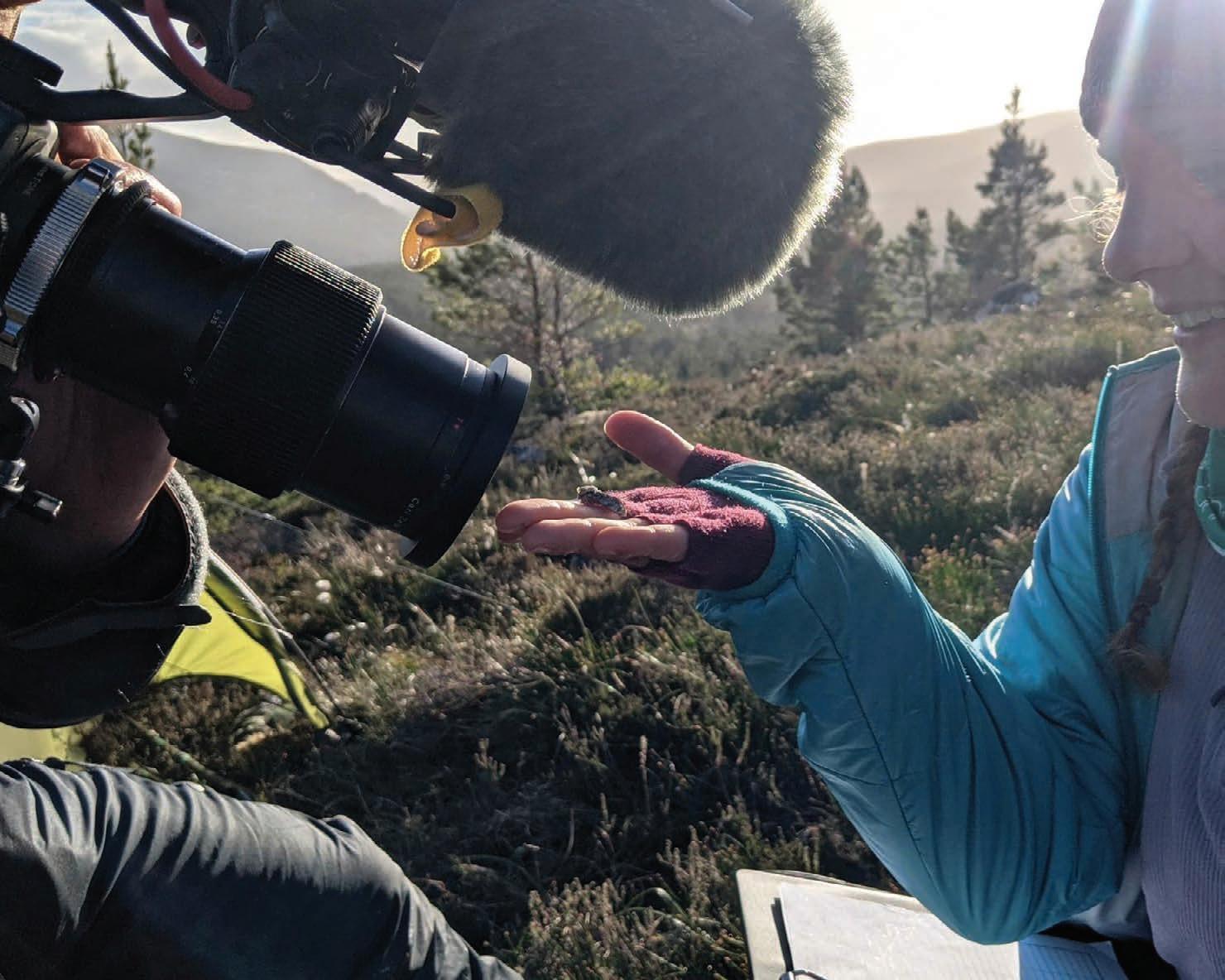
68
Image: BBC’s Wild Isles © BBC/Silverback Films/Laura Howard.
IN THE SECOND OF A TWO PART SPECIAL CHARTING THE RISE OF UK TV, DAWN MCCARTHY-SIMPSON, MBE EXAMINES THE CAREERS OF FOUR INFLUENTIAL FIGURES WHO EACH HELPED TURN A COTTAGE INDUSTRY INTO A GLOBAL CULTURAL POWERHOUSE: BERYL VERTUE, DAVID FRANK, DONALD TAFFNER AND JOHN MCVAY. THEN WE ARE BROUGHT UP TO DATE ON THE CHALLENGES FACING TV IN THE DIGITAL STREAMING ERA.
History is made by those who dare to be different, take risks and innovate. From the Wright brothers to Steve Jobs, these trailblazers have changed the world by challenging conventional wisdom and pursuing their vision. Change only happens when individuals have the courage to challenge and disrupt the status quo.
The UK’s success is down to many of these individuals; people who change the conventional despite no guarantee of success, but had the courage to stand up for their beliefs and fight for change which has left a lasting legacy which the industry is indebted to.
BERYL’S STORY
In 1955, 24 year old Beryl Vertue entered the Shepherd’s Bush offices of a group of eccentric writers for an interview as a secretary. Not really wanting the job, as she felt it was too far to travel on the trolley bus each day, announced that her rate was 12 Guineas per week (today’s value approximately GBP105), doubling what she was currently earning, and hoping it would put them off offering her a job. But the following week she found herself making cups of tea and typing up scripts for Spike Milligan, Alan Simpson, Ray Galton and Erick Sykes, better known as the Associated London Scripts (ALS).
After being with ALS for a while, Alan Simpson, writer and actor, mentioned that his BBC contract was up for renewal and asked Beryl if she would call the BBC to renew. Beryl – not having a background in TV, or knowing the rules of her role – assumed that this must be a normal job for a secretary in the TV industry. She dutifully called the BBC to renew Simpson’s contract, and decided that to please him she would ask for more money – to her surprise they agreed. Other writers heard about the contract win and soon she found herself representing and negotiating numerous talent contracts.
Impressed with Beryl’s negotiating skills she was sent to LA by the ALS team. They wanted her help in selling scripts from existing shows, to create US versions. Beryl returned many times to negotiate

scripts, pioneering the adaption of British scripted television for the American audience. So, when music entrepreneur Robert Stigwood wanted to move into films in the late sixties, buying out a majority stake in ALS, he chose Beryl to lead operations. During her time working with Stigwood she was executive producer on film versions of sitcoms including Till Death Us Do Part (1968) and Steptoe & Son (1972), as well as The Who’s rock musical Tommy (1975), directed by Ken Russell, and where she famously negotiated with Ike Turner for Tina Turner to play the Acid Queen.
In 1979 Beryl set up her own production company, Hartswood Films, with her first big hit sitcom Men Behaving Badly, a book authored by Simon Nye. Her daughter, Sue Vertue, married writer and show-runner Steven Moffat who later went on to produce Sherlock which sold into every territory in the world.
Another pioneering moment in Beryl’s life was during a negotiation on behalf of Terry Nation, the inventor of Dr Who’s Daleks. She crossed out something in the contract that would mean he owned the IP on the Daleks. This was an introduction into independent creators retaining ownership of their works, and this set the tone for what happen in the future with the terms of trade.
DONALD’S STORY
As Beryl joined the team at ALS, Donald Taffner was promoted out of the mail room of William Morris Agency to agent. After a few years he made the move to Paramount’s New York office. Building on his reputation as a talent agent, he resigned in 1963 to form D.L. Taffner Ltd, later renamed as DLT Entertainment. His original business was a distribution model focused on selling American series around the world.
Donald spent a lot of time in the UK, and since 1969 had built up a good relationship with Thames Television, for whom he began acting as a sales agent. Realising that there was so much more potential for British content, in the early 1970’s
69
“THE UK’S SUCCESS IS DOWN TO MANY OF THESE INDIVIDUALS; PEOPLE WHO CHANGE THE CONVENTIONAL DESPITE NO GUARANTEE OF SUCCESS.”
he launched his own in-house production studios in the US. He also set up an office in the UK after making a strategic distribution deal with Thames Television.
This new business concept was as an independent production and distribution company – which would directly acquire an adaptation license for scripted formats from the UK then produce them in-house. He sold the US version via syndication across different states, such as Man About the House (1973-1976), which he produced in the US under the title of Three’s Company.
DLT Entertainment was the UK’s first independent distribution company and played a key role in opening up the US market for programme makers. It remains prominent on both sides of the pond, acquiring several UK independent production companies.

DAVID’S STORY
David Frank, born in Kenya, educated in the UK, started his career in banking and investment. Not getting a great deal of job satisfaction he explored a new career in journalism, joining newspaper Euromoney and eventually the BBC as a journalist specialising in business and finance.
After three years David departed to launch production company RDF Media with GBP35,000 startup capital. His brother Matthew joined a year later to run its international distribution arm. In 2006 the company expanded by opening RDF US.
David changed RDF by focusing on popular factual and entertainment formats, seizing the opportunity to open up a new trend of exporting formats and increasing the popularity to trade with the Format Bible model.

In 2010, capitalising on the growing format business, the brothers sold RDF Media to De Agostini for GBP150 million, when it became part of Zodiak Media – one of the first super indies. David took the helm as CEO with 45 companies operating in 17 countries and USD800 million in annual revenues.
He eventually left Zodiak to launch more startups along with Matthew, this time taking advantage of innovating with digital media, launching TRX a digital trading platform and Rocket Distribution.
JOHN’S STORY
In 2001 John McVay was interviewed by the then elected Chairperson of Pact, Beryl Vertue, for the role of CEO of Producers Alliance for Cinema & Television. Little did he know at the time of accepting the role, that he would play a key part of the television industry’s most important lobbying campaign.
In 2002, only a year into his role, John, and the newly elected chairperson, Eileen Gallagher, forcefully advocated for a fairer deal for producers. They wanted to change the current IP system to one where ownership would be given back to those who created it. John believed that when you give someone the intellectual property rights to what they create, you are triggering a chain reaction of innovation. When creators feel secure in their ownership of their ideas, they are more likely to take risks and experiment. This leads to more breakthroughs, which in turn fuels even more innovation. This virtuous cycle is the engine that drives progress, and it all starts with giving creators the security of ownership.
70
“THEY WANTED TO CHANGE THE CURRENT IP SYSTEM TO ONE WHERE OWNERSHIP WOULD BE GIVEN BACK TO THOSE WHO CREATED IT.”
IN 2010, CAPITALISING ON THE GROWING FORMAT BUSINESS, THE BROTHERS SOLD RDF MEDIA TO DE AGOSTINI FOR GBP150 MILLION.
Image: BBC’s Doctor Who © James Pardon/BBC Studios.

The change didn’t come without a fight. Broadcasters were strongly resistant. Greg Dyke, director general of the BBC, famously told MPs on the Culture Media & Sport Committee in 2003 that the BBC was not there to make independents rich. But the broadcaster’s argument was not as strong as the case made by Pact and the indie production sector.
In 2003 as part of the Communications Act review John recognised the opportunity for the producer’s voices to be heard. John and Eileen along with the support of their board, which Beryl, David and Donald were part of, fought for their message to be heard, and eventually won the fight when legislation was changed. This altered the IP regime in the UK, and gave Pact the opportunity to negotiate terms of trade with all major UK PSBs. Ten years later, evidence of its success was clear. The sector was worth more than GBP3 billion, with exports over a GBP1 billion. John remains Pact CEO and continues to fight for the independent producer’s rights.
A NEW STORY
Now we live in a digital era that has taken people away from big screen television, not to watch less but to watch more than ever. This digital transformation is to be celebrated but comes at a sacrifice. Family viewing has almost disappeared with every generation having their own schedules set up differently – kids nowadays never want anything old! It’s these kids who are our next generation, not just as consumers of content, but responsible for making it and choosing which how they distribute it.
The UK is decades into a post-cottage industry. Its production companies are among the world’s leading programme makers. But the UK, like many other countries, is faced with more challenges; the public service broadcasters are at their most fragile right now.
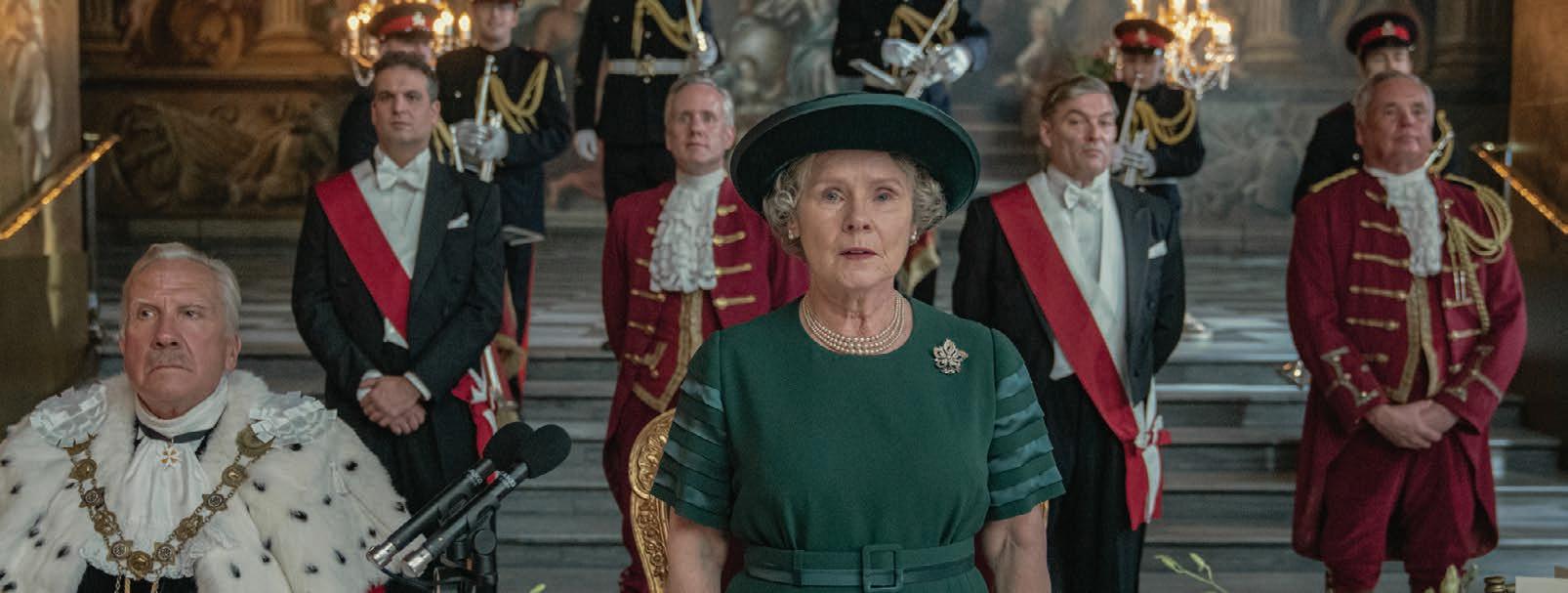
The BBC’s license fee is under review with a possibility of abolition by 2027. The BBC’s current DG, Tim Davie, is faced with giving the BBC a new commercial model, either one that competes with an already saturated SVOD world, or a broadcaster
which carries adverts. If BBC chose the latter then this could damage other commercial channels when they take their share of shrinking advertising revenue.
“Imagine a world that is internet-only, where broadcast television and radio are being switched off and choice is infinite,” Davie said in 2021 mapping the Corporation’s digital-only future. “A switch-off of broadcast will and should happen over time, and we should be active in planning for it.”
“GREG DYKE, DIRECTOR GENERAL OF THE BBC, FAMOUSLY TOLD MPS ON THE CULTURE MEDIA & SPORT COMMITTEE IN 2003 THAT THE BBC WAS NOT THERE TO MAKE INDEPENDENTS RICH.”
The next generation of leaders is ready to take on the world. Gen-Z aren't afraid, they think differently, more digitally aware. They exhibit no loyalty to any one broadcaster and are ready to create a world molded to their own lifestyle.
The UK broadcasting future will be determined by these individuals. We have an amazing story to tell so far, and now it’s time for the next generation to step up and tell theirs.
Dawn
is managing director of business development & global strategy at UK producers’ alliance Pact, where she is responsible for developing opportunities for international, IP exploitation and markets.

72
NOW WE LIVE IN A DIGITAL ERA THAT HAS TAKEN PEOPLE AWAY FROM BIG SCREEN TELEVISION, NOT TO WATCH LESS BUT TO WATCH MORE THAN EVER.
McCarthy-Simpson MBE
Image: Netflix’s The Crown © Netflix.

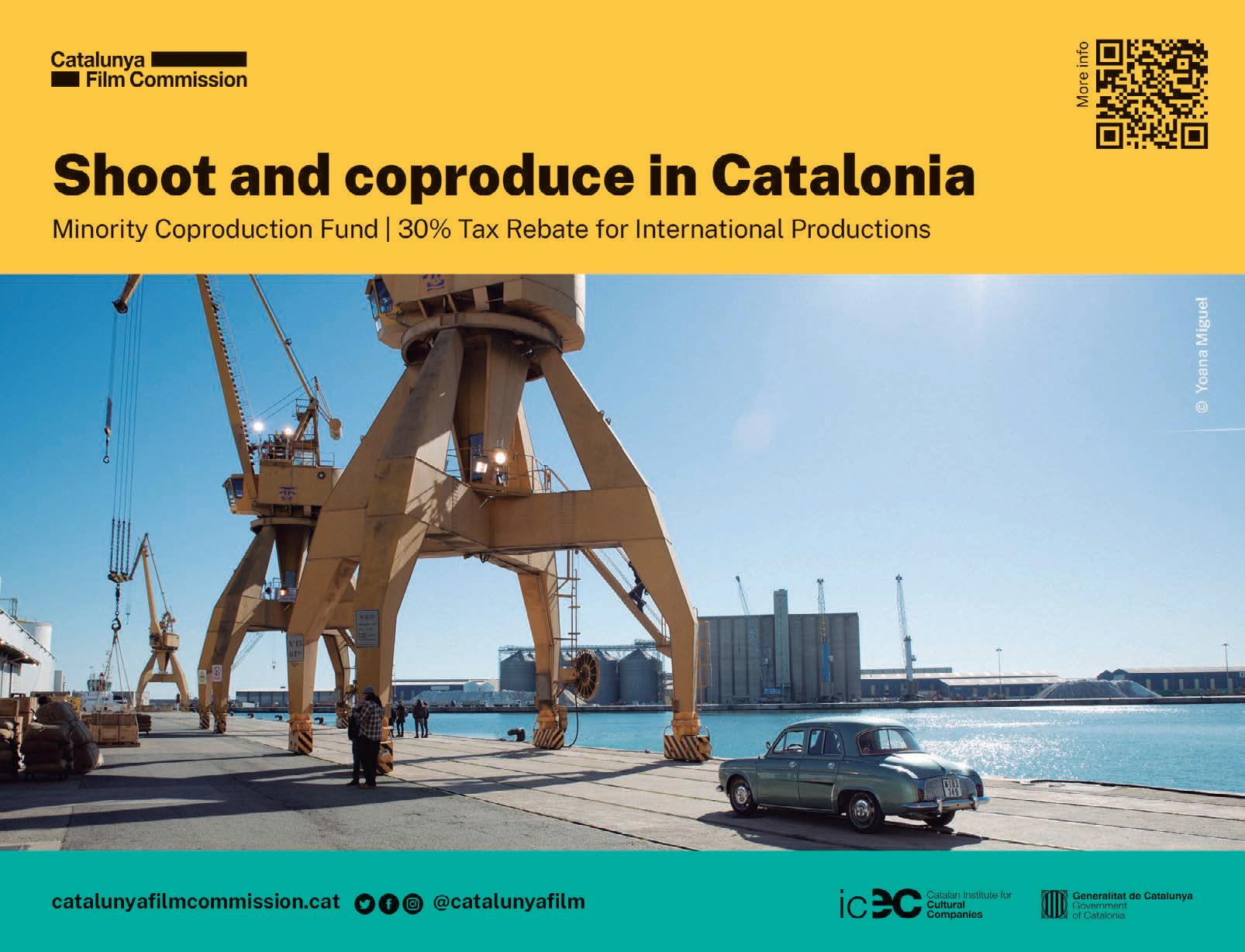
73
The Persistence of Memory

THE VENUE IS NOW THE ATTRACTION.
ARE WE WITNESSING THE BIRTH OF A NEW EXPERIENTIAL STORYTELLING MEDIUM?
From museums to themed attractions, art exhibits to stadia, visitors are being enticed out of the home by social media-primed immersive location-based experiences. Beyond the wow factors of wraparound visuals, spatial audio and haptics, the technological components can be tuned to create novel forms of communication and entertainment
Physical attendance to mass events has returned with a bang as music concerts, sports stadia and immersive entertainment venues feed audiences craving the live experience. The Covid-19 hiatus seems to have re-energised the whole sector.
The venues and events market in EMEA saw a 43% decline in professional audiovisual spend in 2020 over 2019 as audiences largely stayed home, according to trade body AVIXA. Growth resumed in earnest last year with 2023 revenues from the sector expected to top USD9.4 billion.
Fuelling this is a renaissance of the venue as destination. Just as picture houses once afforded people a luxurious sensory escape, a multitude of venues are upping the ante in a bid to offer what streaming services, or as importantly, virtual reality headgear, cannot: jaw-dropping multi-sensory storytelling in the company of strangers.
“Immersive experiences are in vogue,” says Llúis Badosa, CEO at Spanish firm INWO Smart AV. “This kind of experience hits a sweet spot in the convergence between culture and audiovisual technology.”
74
Image: Antartica at the Sydney Festival © Wendell Teodoro & Sydney Festival.
The NOW building in Soho boasts a digital canvas four storey high in 16K resolution. In Manchester, the GBP186 million cultural hub Factory International, built on the site of the former Granada television studios, features super-sized movable walls allowing for different configurations. An immersive Matrix films-themed dance, music and VFX experience directed by Danny Boyle was the opening production last October.
Theatre and music performances are being restaged and reinvented using technology-led mixed-media. The War of the Worlds experience uses VR to immerse participants in Jeff Wayne’s HG Wells’ musical; ABBA Voyage is a triumph of holographic performance using tech from Disney’s VFX experts ILM. US theatre company Woolf and the Wondershow spent eight years developing the technology to stage rock musical Cages in which live performers interact with holographic characters created through intricate video mapping.
Projection mapping turns any object into a display surface for video, no matter the shape, enabling venues to paint with light. One of the leaders is Grande Experiences of Australia which creates and produces immersive art exhibitions. DALÍ ALIVE at LUME in Colorado is a trip through the Spanish artist’s life highlighting his introduction to Surrealism, influence on American culture and the enduring impact he has today. Monet & Friends at LUME Melbourne is another experiential storytelling project which brings to life the masterworks of the French Impressionists.
“The soundscapes for DALÍ ALIVE are just as psychedelic as the artwork,” says Des O’Neill, sound engineer, producer and co-founder at aFX Global which designed the spatial audio for Grande Experiences at both exhibitions. “DALÍ ALIVE is a showcase for what we can achieve with immersive spatial audio systems integrated with masterpieces of art to create a thrilling kaleidoscope of colour, movement and memory.”
David Hockney is another artist whose work has received the immersive treatment, as installation art – which uses augmented and virtual reality. Lightroom in King’s Cross featured his work in a four-storey-high digital art space designed for cutting-edge projection. The show featured iconic artworks alongside set designs and specially commissioned new pieces, accompanied by a Nico Muhly soundtrack and a Hockney voiceover. It’s half art exhibition, half theatrical installation.
Similarly, Frameless, in Marble Arch, “offers 90 minutes of Instagram-friendly, son et lumière experience across 30,000 sqft of London bunker” according to The Guardian.

Already in Las Vegas and Atlanta, with plans for international export, is Illuminarium which offers visitors a headset-free form of VR of a safari or of the surface of the moon displayed on a 360×360 canvas and using an arsenal of AV tech such as laser projection, spatial beamforming audio, in-floor haptics, scent and lidar-based interactivity
“PROJECTION MAPPING TURNS ANY OBJECT INTO A DISPLAY SURFACE FOR VIDEO, NO MATTER THE SHAPE, ENABLING VENUES TO PAINT WITH LIGHT.”
Brian Allen, its EVP of technology and content integration says, “Making content for Illuminarium is not as straightforward as making a music video or making a traditional film narrative. We think about everything from choosing a signature scent to interaction design, to where people dwell for the longest in our theatres.”
He continues, “What makes us unique is not only the fact that we are a communal, digitally delivered experience, but we also can change out the content very quickly. That content ranges from real-time to pre-rendered to interactive and generative content.” This opens up a whole plethora of possibilities, ranging from stunning shows to real-time, chooseyour-own adventure video game content, to evening events with a DJ.
“Audiences are hungry for something beyond a Van Gogh or Klimt experience,” says Lieven Bertels, Marketing, Themed Entertainment, Barco. “There’s an appetite for spaces to be interactive where some elements are played back in realtime, others are generated in realtime with a rendering engine.”
Genius daVinci, a museum-art installation in Berlin invited guests to interact using QR codes and tracking technologies. One room featured touch technology where up to 30 visitors at a time could draw on the walls and have their individualised output tracked by Lidar and rendered in the notch games engine.
“On the content side, we’re starting to move beyond copyright-free dead painters. It means producers are going to have to negotiate with the owners of the IP be that a painter’s estate or Disney or sports owner.

75
Image: Monet & Friends © Normal Studio.
Image: Genius daVinci © flora&faunavisions.
JUST AS PICTURE HOUSES ONCE AFFORDED PEOPLE A LUXURIOUS SENSORY ESCAPE, A MULTITUDE OF VENUES ARE UPPING THE ANTE IN A BID TO OFFER WHAT STREAMING SERVICES, OR AS IMPORTANTLY, VIRTUAL REALITY HEADGEAR, CANNOT.
IMMERSIVE EXPERIENCE VENUES ARE CHANGING THE FACE OF LIVE EVENTS BUT THE MSG SPHERE AIMS TO BEAT THEM ALL BY PROMISING A WHOLE NEW ENTERTAINMENT MEDIUM.
If you do get access to Disney cartoons it’s in your interest to scale that for a network of dozens of outlets since that gives you more financial power to broker that deal. This requires more standardisation of technology.”
Further facilitating the digital experience are interactive displays for wayfinding, tables and video walls. These engage the visitor, amplify their experience, and provide valuable data points for the venue owner to collect and retarget pundits with marketing.
Many venues are building in spatial audio, a new audio technology that allows for precise shaping and steering of sound beams. It creates sound fields that optimally cover audience areas of any shape or size and precise sound localisation for realistic and immersive soundscapes.
A spatial audio network could be paired with haptic speakers to deliver a way to “reach out and touch” sound. It also offers an intuitive way to make the experience more accessible for the visually impaired.
5G mobile networks are set to supercharge venues with connectivity and with it enable lots of previously impossible audience engagement and data tracking applications. For example, 5G will boost the scalability of mixed reality in sporting and entertainment arenas. AI and ML tools will further enhance the venue experience by changing the way guests perceive and interact in physical spaces.
MSG SPHERE AT THE VENETIAN
Immersive experience venues are changing the face of live events but the MSG Sphere aims to beat them all by promising a whole new entertainment medium.
The USD1.9 billion building is set to become the largest spherical structure in the world when it opens at The Venetian, Las Vegas. The multi-use venue will offer 17,500 permanent seats with room for 2,500 retractable ones. It will house a 160,000 sqft display plane that wraps up, over and around the audience on the inside. With more than 170 million pixels and a resolution of 16K x 16K it will be the highest resolution LED screen in the world. The exterior is coated with another mammoth display.
“The vision is to achieve the ultimate in immersive experience,” says Andrew Shulkind, SVP Capture & Innovation at MSG Entertainment. “This is not just about having a bigger screen or the sharpest resolution, though it is that. It is about marshalling cutting-edge technology to create an entirely new platform for immersive entertainment.”
That required developing a set of content creation tools and production workflow for this unique presentation format which will be retained inhouse and put at the disposal of artists.

“The screen has a higher resolution than any single camera can capture,” Shulkind explains. “We’re

using camera arrays and applying techniques like tiling, uprezzing and stitching to deliver full resolution and colour fidelity to the canvas.”
The internal display is tilted at 55 degrees and the seats recline 12.5 degrees so the primary viewing is straight ahead but the screen is so vast framing must account for many different perspectives.
“Even if most people are looking at one part of the canvas for most of the time it is the periphery of their vision that provides much more information.”
The scale of the canvas strains conventional filmmaking grammar. The close-up and the over the shoulder shot really don’t work in this format. Flat, rectangular forms of traditional motion picture imaging are effectively the same whether on a 32” TV screen or a 100ft movie screen but the scale of the Sphere is on another dimension.
“One critical thing we’ve been exploring is the relation of the lens we use in the field to the field of view that audiences see. We have been doing a lot of experimentation to see what works best to achieve specific psychological effects. There have been many surprises and there are no hard rules. It is a completely new format.”
U2 will take up residency in the Sphere for an immersive show that mines the band’s catalogue. A live music show will have to consider how to best feature a 5 to 6 ft tall performer on stage against a canvas over 200 ft tall. Also in most concert venues the best seats are closest to the stage but here the closest permanent seat to the screen is 160 ft away.
“That doesn’t mean we don’t seat the floor, but we want every seat in the house to be the best seat in the house,” Shulkind says.
Creatives can also play with haptics including seat movement, wind and scent effects as well as spatial audio.
At the outset, Sphere attractions will be less CG and fantasy and deliberately grounded in what feels natural – such as epic landscapes. It has even signed with NASA to send a camera system to the ISS and record the Earth from space.
Esports and boxing could be held inside with the facility to incorporate windows of live feeds picture in picture into the giant canvas. The venue will open with the Las Vegas Formula 1 Grand Prix which has a track that surrounds the Sphere. During the race, Formula 1 will take over the exosphere display for race-related content.
“These are the kind of creative opportunities we give to partners,” Shulkind says. “We present them with the technology and learnings we developed inhouse and ask them how to make the best content for the Sphere.”
76
“THE SCALE OF THE CANVAS STRAINS CONVENTIONAL FILMMAKING GRAMMAR.”
Image: Vivid Sydney Tree projection © TDC – Technical Direction Company.
Image: Vivid Sydney © Destination NSW.
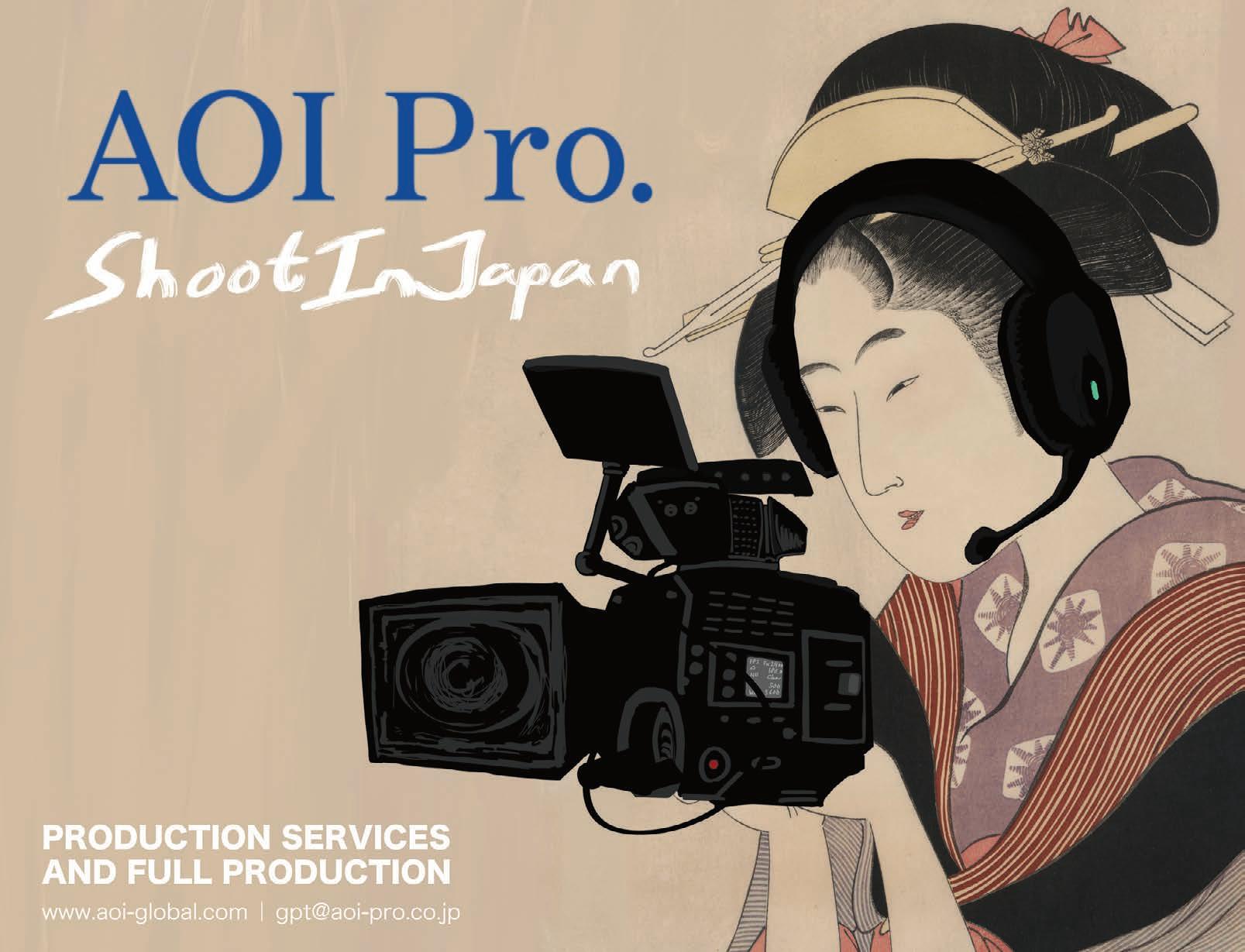


77
Making of We Might As Well Be Dead
STUDENT FILM LAUDED ON FESTIVAL CIRCUIT

FINDS UNIQUE SPACE IN MAJOR CITY

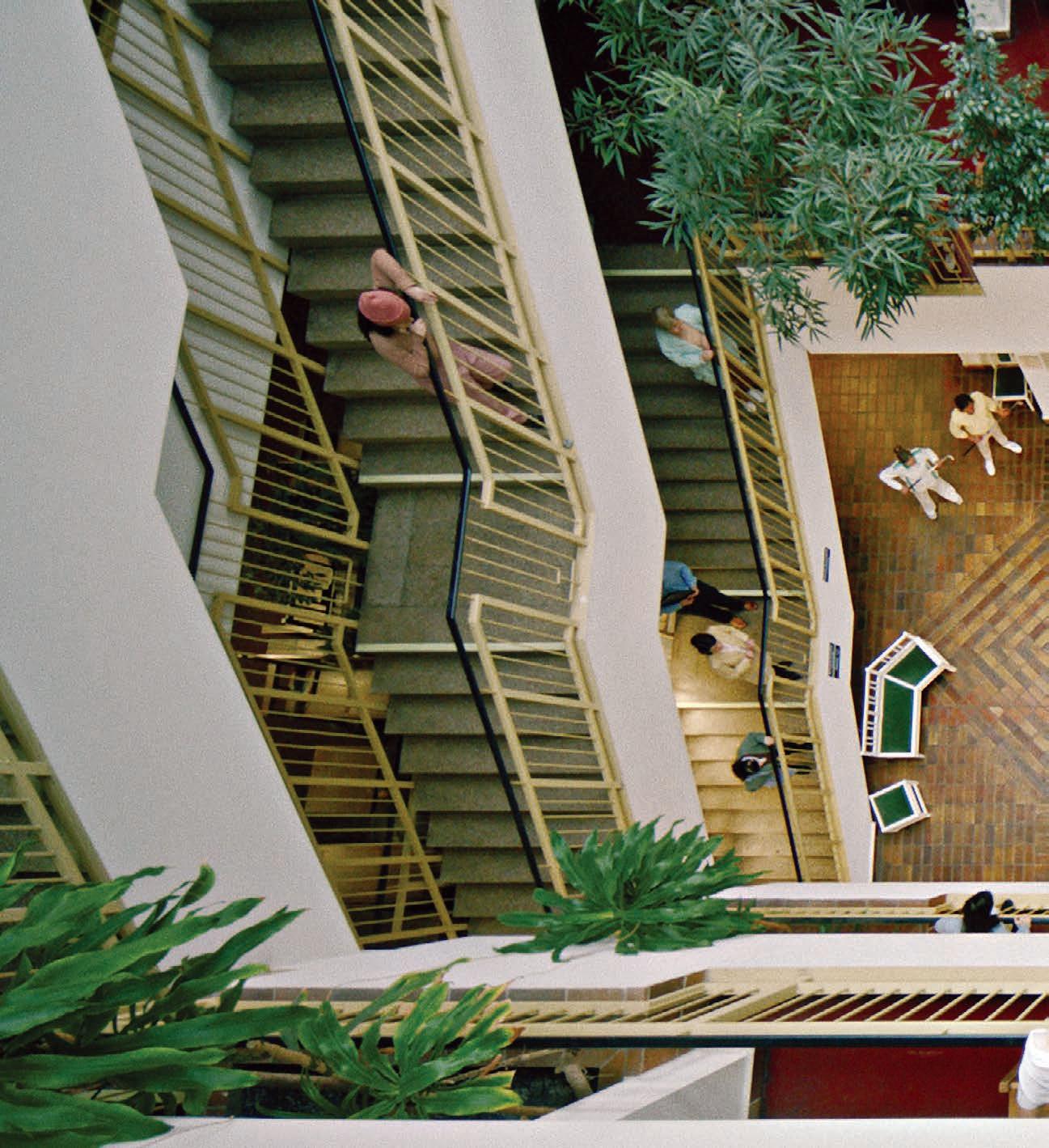
78
The German Romanian social satire won Jan Mayntz the award for Best Cinematography in the International Narrative Competition at the Tribeca Film Festival 2022 and Best Director and Best Screenplay at Berlinale for Natalia Sinelnikova – not bad for a graduation film. It was also highly commended for outstanding use of creative location at the makers & shakers Awards 2022.
The Heartwake Films, Filmuniversity Babelsberg, Kojoten Filmproduktion and Konrad Wolf production is set in an upscale high-rise complex


that stands alone and isolated on edge of the forest. Budget restrictions confined the shoot to Berlin necessitating suitable locations that didn't look like a big city and that would be put together in the edit to create a believable, luxurious single building.
“It was important to show that the residents were not confined at any time, but rather voluntarily isolated themselves from the outside world,” explains supervising location manager Elisabeth Kozerski.
One of the main locations was a former city hall, now a city development office, which featured a

spacious well lit stairwell, foyer and skylight. Scenes that were supposed to take place elsewhere were rewritten for this location. She says, “It allows for many exciting perspectives and camera angles. Other exteriors were shot at a family centre which fit stylistically together with the staircase.”
Kozerski found the ‘prestigious’ entrance gate to the high-rise by chance during her search for a golf course. It took some convincing by the producers to get the owners to agree to let them shoot there. “It is not easy to find a gate in Berlin with nothing but green fields behind it,” she says.
79
Images courtesy Heartwake Films.
Television is changing. Are you changing with it?

80
WITH CONNECTED TVS IN THE VAST MAJORITY OF HOMES, CROSS PLATFORM ADVERTISING CAMPAIGNS NEED TO CATCH UP. ISSUES INCLUDING LACK OF STANDARDISATION IN MEASUREMENT AND BUYING PRACTICES, AND LEGAL AND ACCURACY ISSUES RELATING TO FIRST-PARTY DATA — AS WELL AS EXCESSIVE AD REPETITION AND LACK OF TRANSPARENCY, ARE BEING COUNTERED – BUT NOT FAST ENOUGH.

The television ecosystem is more fragmented than ever and shows no sign of slowing. With over 70% of households in Western Europe owning a smart (connected) television and an ever-increasing number of television content choices available to both consumers and advertisers, the message couldn’t be clearer: television is not dying, it’s changing and it’s changing into Advanced television (ATV).
ATV is a deceptively simple term that encapsulates all non-traditional television delivery. It’s one where consumers will slide seamlessly between OTT, CTV, SVOD, ATVOD, PVOD, BVOD and so-on calling it all simply ‘telly’. Yet the industry is a long way from speaking the same language.
Brands want to target the same audience with the same creative across different channels that are planned and activated differently. But because of the technical, structural and measurement silos that exist, simply understanding the audience holistically presents a huge challenge – even before activating anything.
The momentum towards an all – or overwhelmingly dominant – internet television future is gaining momentum fast (pun intended). The soaring rise in popularity of Free Ad Supported Television (FAST) channels is a clear signal that video delivery is going online-first.
The successful relaunch by ITV of its streaming hub ITVX (including a notable shift to VOD-first for scripted drama) and the tangible growth of live streamed sports (such as tennis majors on Prime Video) are further signs that the tipping point has been breached. Traditional internet services like YouTube are also quickly becoming television services. Even TikTok has launched a television app.
“Imagine a world that is internet only,” BBC Director General, Tim Davie told the RTS last Winter. It isn’t hard to do – but it’s proving harder to achieve from an advertising standpoint.
“There’s still a lot of live linear viewing but it is all been delivered online,” Davie added, suggesting that in little more than a decade, traditional broadcast television and radio will be switched off and content choice will become infinite.
This future is already present. It is one where smart televisions will have a critical role to play as the main entertainment gateway into the home. But silos exist in every area of the marketing industry and it’s no different when it comes to Advanced Television.
“From a technical perspective, ATV is dominated by big broadcasters with walled gardens, and fragmented further by new ad platforms (Netflix and Microsoft; Twitch and Amazon, YouTube and DV360), all of which means that the sort of holistic view we’d love to see across the television industry isn’t possible just now,” says Pierre de Lannoy, strategy director, EMEA at programmatic marketer MiQ .
There are legitimate concerns. Given the tight GDPR restrictions players are understandably cautious and protective of obtaining and sharing customer data. The ability to gauge the effectiveness of ATV campaigns is holding back investment. Compared to the long-established buying and measurement patterns of the traditional linear TV advertising, ATV advertising is a far more fragmented and opaque space.
What is agreed by broadcasters, content providers, agencies and brands alike is a need for common measurements and a gold standard currency that integrates all linear and nonlinear viewing in the UK. We still don’t have one.
“THE MOMENTUM TOWARDS AN OVERWHELMINGLY DOMINANT INTERNET TELEVISION FUTURE IS GAINING MOMENTUM. THE SOARING RISE IN POPULARITY OF FAST CHANNELS IS A CLEAR SIGNAL THAT VIDEO DELIVERY IS GOING ONLINEFIRST.”
Justifying marketing spend is challenging to say the least without an effective measurement and optimisation framework in place. The good news is that this is changing.
With Netflix signed up to Barb’s live and overnight ratings and the recent full launch of a measurementfocused collaboration between the UK’s leading broadcasters is moving forward. Likewise, the progress of Project Origin, the ISBA-backed initiative to build a cross-media measurement platform, shows that as an industry we’re moving in the right direction.
“It’s clear that metrics like viewability, reach and frequency are past their sell-by date,” says de Lannoy. “New and improved measures of performance are rapidly gaining traction among marketers, the chief one being attention. Inherently cookieless, a greater reliance on attention automatically reduces dependency on third party cookies, and most importantly, provides key indicators of actual engagement and exposure.”
81
UNIFYING THE FRAGMENTED ONLINE MARKET SPACE
We do know that that the valuable younger audience are deserting traditional television. Data shows that 18-34 year-olds watched 77 minutes of linear television per day in 2018 – a number predicted to drop precipitously to 53 minutes per day this year. Are they watching less television content? Of course not, they’re just shifting their viewing habits to CTV, YouTube and social media. The message for advertisers: If you’re planning television campaigns, don’t forget about digital.
We also know, from a Thinkbox study, that there is an average uplift of 20% on the advert effect when running online video and VOD alongside television. This means that not only can agencies ensure they’re making the advert more effective through frequency but they are also increasing reach against the audiences that are beginning to move away from linear television viewing habits.
Audiences are also learning that when they run out of stuff to watch on more traditional mediums there's a whole wealth of content free to access at the push of a button. Yet there seems to be a view in the market that AVOD means poor-quality, less mainstream content than that on the more well-known BVOD and SVOD providers.
“We need to debunk this myth,” de Lannoy declares. Partly, he says, this is about educating brands about AVOD platforms. Most of them are actually owned by very well-recognised brands (for example, Paramount owns Pluto TV). “On top of this, AVOD is becoming a go-to channel for broadcasters looking for maximum reach at an efficient price and can be a vital link between linear and digital campaigns.”
MiQ says 80% of CTV ads will be served programmatically by the end of 2023 and that brands need the ability to coordinate the planning and execution of programmatic television campaigns simultaneously across all linear and digital channels, “regardless of platform, through a single point of access”.
The sunsetting of third party cookies by Google in 2024 is leading to a perpetual shift in investment towards environments that are not dependent on
them for addressability. According to MiQ, AVOD and FAST streaming, via the rapidly growing base of Connected Televisions, is becoming programmatically enabled, along with the increased digitisation of other more traditional media channels like Out Of Home.
“This provides marketers with impactful media channels that don't require cookies to power targeting and addressability,” says de Lannoy, pointing to MiQ’s recent purchase of UK-based AirGrid. “This is the only platform which enables marketers to connect directly to publishers for privacy-first and cookieless audience creation and activation. Publishers get better control, access, and monetisation opportunities, brands can apply more precise targeting functionality to key audiences historically out of reach, and consumers’ data never leaves their device.”
It’s pretty clear that Advanced TV should be considered an extension of an any overall television campaign. Just don’t wait for the 2024 cookie deprecation to catch you off guard. Advertisers and agencies are advised to test, test, test but not to expect there to be one post-cookie silver bullet for all the challenges facing marketers.
Publishers are looking to leverage their valuable first party data to improve addressability in a post cookie world. How this shakes out remains to be seen but most efforts are rightly focussed on identifiers as the prime cookie alternative. Those publishers with logged in, authenticated users, leveraging identifiers (such as RampID or UID2) will find solutions that are scalable across the industry, privacy-conscious, and effective.
Over the next year we will see further progress in forging a new industry built on a common language, common goals, common technologies and a common desire to create a bigger, bolder Advanced Television serving the needs of agencies, advertisers, broadcasters and the entire viewing audience.
As ever, taking a multifaceted approach to planning, activation and measurement will be key to success in the future.
82
IT’S CLEAR THAT METRICS LIKE VIEWABILITY, REACH AND FREQUENCY ARE PAST THEIR SELLBY DATE. NEW AND IMPROVED MEASURES OF PERFORMANCE ARE RAPIDLY GAINING TRACTION, THE CHIEF ONE BEING ATTENTION.
PROGRAMMATIC COOKIELESS CONNECTED TV
“THE FUTURE IS ONE WHERE SMART TELEVISIONS HAVE A CRITICAL ROLE AS THE MAIN ENTERTAINMENT GATEWAY INTO THE HOME.”
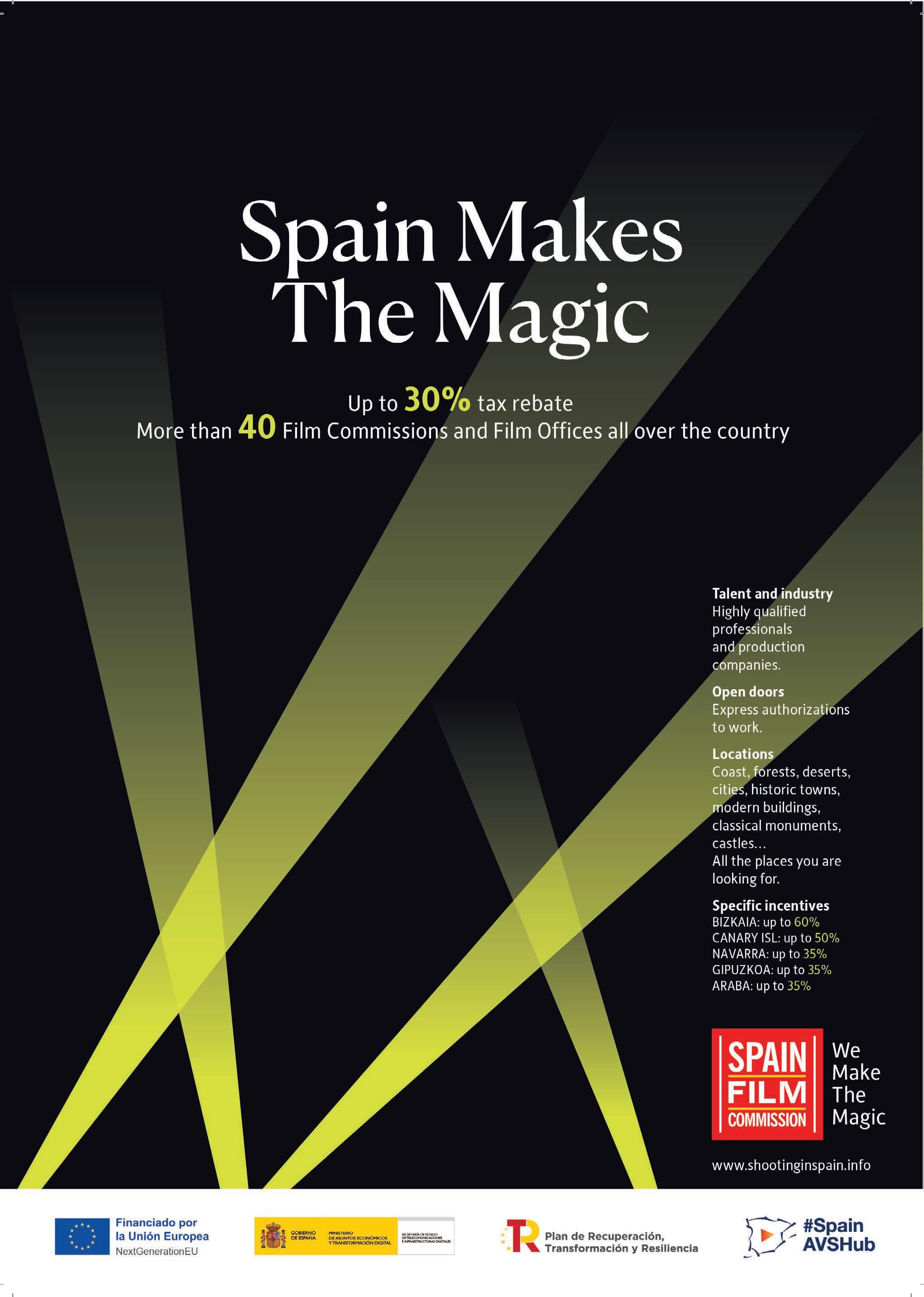
New Creative Benchmarks
As befits a champion of creative excellence and progress, the Cannes Lions Awards have evolved to include gaming, the metaverse, a greater focus on effectiveness and with sustainability and diversity running throughout its core.

In recognition of the pervasive impact that gameplay is having on marketing, a new Lions Award is introduced this year, as part of wider refresh of the event. The Entertainment Lions for Gaming celebrates exceptional work that sits at the intersection of gaming and marketing.
“This new Lion is being introduced at a time when the gaming industry is truly reaching new heights,” Francine Li, Jury President and Global Head of Marketing, Riot Games. “I believe that gaming is the future of entertainment, bringing together passionate global communities in shared immersive and interactive experiences."
A Gold winning example in Entertainment from 2022 was the climate change simulator that Greenpeace built into one of the most popular video games in the world: GTA Online. Created by VMLY&R Sao Paulo, the GTA Los Santos map was transformed into an alarming prediction of what the world could look like if the planet continued to heat up by another 3ºC.
Players voluntarily livestreamed over 450 hours of content in the first week alone. And without any Greenpeace investment, the project generated an extra 340% in petition signatures, 40% in donations, and almost 30 million in earned media – not to mention 15 Cannes Lions Awards.
The definition of Mobile Lions has been updated for 2023 to include all applications of portable devices and mobile technology. In addition, categories across the Lions have been amended to celebrate work that focuses on how the mobile device was central to the user experience.
Cannes Lions 2023 will see the introduction of the Metaverse into categories focused on new realities and emerging tech. For the purposes of the awards, the use of the Metaverse is defined as ‘the creative application of immersive experiences which creatively push the boundaries of technology’.
Other category descriptions across the Lions have been expanded to include virtual worlds, new realities and the associated technology and innovations.
Also new is Creative Impact, co-curated with WARC, that will run every day and across multiple stages as part of the festival. This builds on the focus on effectiveness at Cannes 2022 and reflects the extreme pressure on marketing budgets in the current economic climate.
Paul Coxhill, CEO, WARC, commented: "In 2022 WARC organised a hugely successful effectiveness series at Cannes Lions, building on 10 years of ever-growing programming. We’re delighted to work with Lions to expand this into the Creative Impact stream, bringing the best thinking on effectiveness from
84
BRAND MARKETERS, MEDIA OWNERS AND AGENCIES WILL COME BACK FROM THE FESTIVAL ARMED WITH NEW WAYS TO RESPOND TO THE CURRENT CLIMATE FOR BOTH THE SHORT AND THE LONG TERM.
around the world into one place. Brand marketers, media owners and agencies will come back from the festival armed with new ways to respond to the current climate and to maximise their impact through creative effectiveness for both the short and the long term.”
As part of the festival’s ongoing commitment to driving action on climate change, the Lions is encouraging sustainability reporting for all entries. Entrants are urged to outline their C02 emissions on the piece of work being submitted. The data is being collated by the festival to benchmark best-practice across the production and distribution of creative work globally, “and will not inform the judging process”. As last year, all 2023 Sustainable Development Goals Lions entry fees will be donated to charity.
Simon Cook, CEO of Cannes Lions, said, “We believe it’s our collective responsibility to drive action on sustainability through creativity. That’s why we’re embedding sustainability across all of the Lions awards this year to inform best-practice and support the ambitions of Ad Net Zero.”
Another non-mandatory piece of information that entrants are encouraged to provide concerns the composition of the teams involved ‘behind the camera’ and any relevant information about the brand or agency’s Diversity, Equity & Inclusion agenda. It is intended to measure progress and the findings will be presented (anonymously) back to the industry in the form of an annual report.
The Creative B2B Lions return for a second year –with some important changes to better showcase what pure B2B creativity looks like. The distinction between products and services has been removed and instead combined into one category. There’s more emphasis on the strategy and results sections in judging criteria. In addition, there’s a new Integrated Campaign category to recognise the multi-touchpoint, multi-stakeholder nature of the buying journey for B2B creative work.
In a first, Impact BBDO’s Ali Rez is the Lions’ first Jury President from the Middle East. Commenting on the appointment, Rez said, “The UAE is a place where creativity thrives, and where we believe nothing is impossible. It is a special honour to represent that very spirit of this inspiring country, and the rich heritage of the Middle East, at Cannes Lions as Jury President. I hope this announcement will pave the way for many more people from the region to lead juries in the future at this most prestigious of awards.”
Also serving as Jury Presidents are Christian Juhl, Global CEO, GroupM (Media Lions); Shannon Washington, US CCO, Connected Communications, R/GA (Mobile Lions); Brent Anderson, Global CCO, TBWA\Media Arts Lab (Entertainment Lions); Danielle Hinde, Owner / Executive Producer, Doomsday Entertainment (Entertainment Lions for Music); Bruno Bertelli, Global CEO of Le Pub, Global CCO of Publicis Worldwide (Film Lions).
CANNES LIONS IN NUMBERS
THE NUMBER OF PRESIDENTS WHO WILL GUIDE SPECIALIST JURIES IN 2023
JURORS IN 2023 25464 ENTRIES IN 2022 30 LIONS AWARDS CATEGORIES
01 NEW LIONS FOR 2023 THE ENTERTAINMENT LIONS FOR GAMING
THE MAXIMUM NUMBER OF LIONS THAT EACH PIECE OF WORK CAN APPLY FOR
87 NUMBER OF COUNTRIES ENTERING THE AWARDS IN 2022 DAYS OF THE FESTIVAL, FROM 19-23 JUNE
85 1954 FOUNDED 290

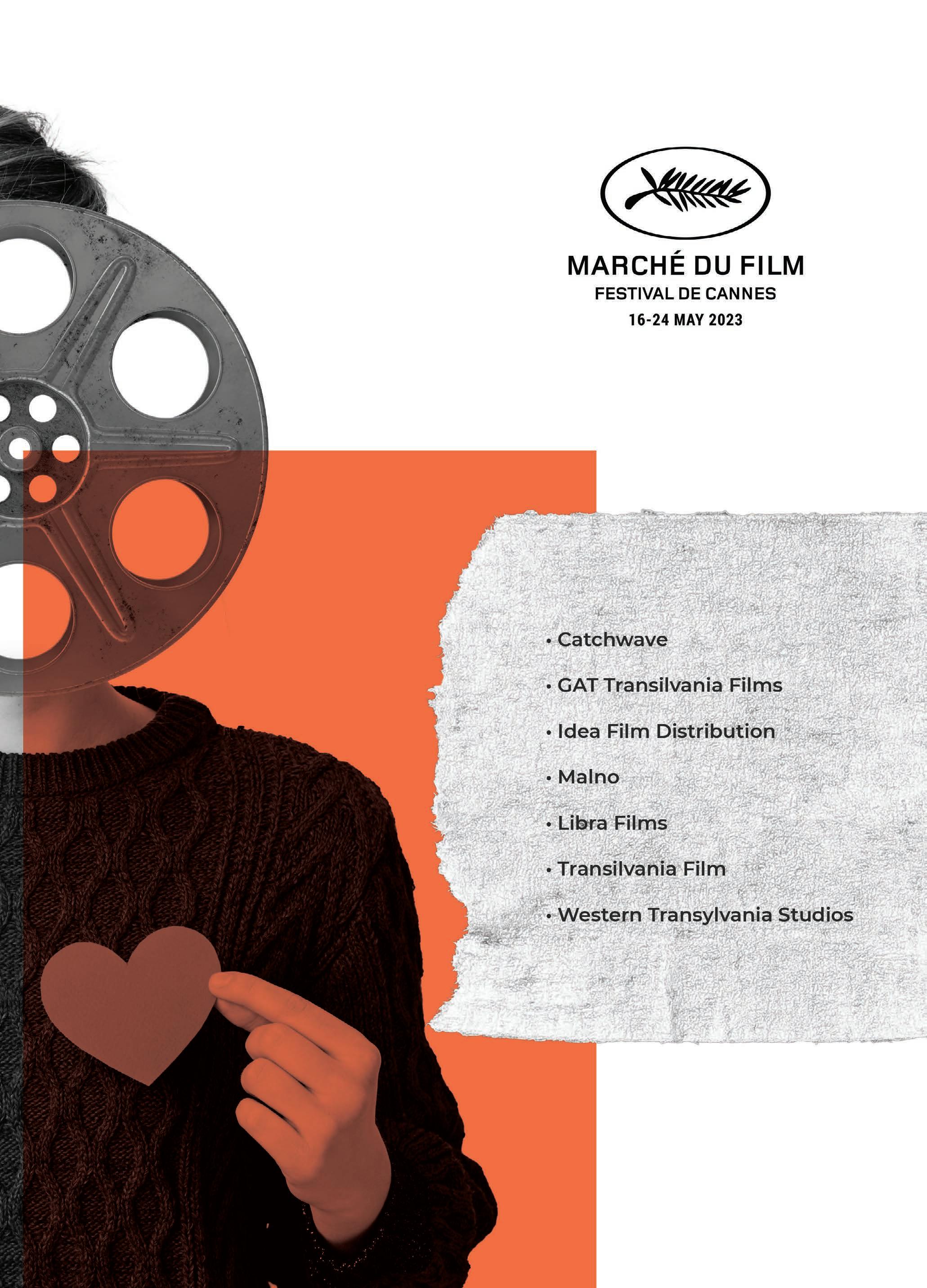

MALAYSIA tropical appeal
Projects from the west and east are flocking to Malaysia thanks to its 35% incentive, stateoftheart studio, colonial architecture and growing crew base. Chris Evans speaks to the experts to find out more
The Film in Malaysia Incentive (FIMI), worth up to 35% for international productions, celebrates its 10th anniversary in 2023 with much to cheer about. In that time it has paid out USD147 mllion to 147 projects from all over the world.

“And now this year we have a major Hollywood studio project coming to shoot in Malalysia led by an Oscar-winning production team,” enthuses Zokifli Abu Bakar, director of the Film in Malaysia Office (FIMO), a division of the National Film Development Corporation Malaysia (FINAS), which administers the incentive.
The major project, set in Hong Kong in the 1960s/70s and in the US, can’t be revealed just yet, but it has already received the provisional rebate certificate and is starting to prep for a shoot in Malaysia later this year. It’s not the only one either. There are international projects lined up for Q3 and Q4 of 2023, including leading Chinese company GHY’s WWII drama film Nanyang Transport Volunteers, the final project in a trilogy, following The Little Nyona and Sisterhood, which also previously shot in Malaysia.
Many of the films and television series coming into the south-east Asian country choose to shoot at the impressive Iskandar Malaysia Studios in Johor, including the ones mentioned above. Previously owned by Pinewood, the state-of-the-art facility on the southern tip of Malaysia’s peninsula offers five sound stages, two HD-equipped television studios,
LOCATION HIGHLIGHT Sarawak
The largest state of Malaysia boasts an impressive 37 national parks, five wildlife sanctuaries and 14 nature reserves and its rainforests are the size of Austria! So there are plenty of stunning filming locations on offer. Productions can travel up the Batang Rejang, known as the Amazon of Borneo, shoot in the cool environs of the Kelabit Highlands or in the huge network of caves and bizarre rock formations of Gunung Mulu National Park.

One of the most notable films to shoot there was The Sleeping Dictionary, starring Jessica Alba, which mainly shot around Batang Ai, offering dense Borneo rainforest.
Sarawak is actually autonomous when it comes to immigration and visa policies. Approval for work permits is given by the Office of the Premier of Sarawak and normally takes six to eight weeks.
89
“THE MAJOR PROJECT, SET IN HONG KONG IN THE 1960S/70S AND IN THE US, CAN’T BE REVEALED JUST YET, BUT IT HAS ALREADY RECEIVED THE PROVISIONAL REBATE CERTIFICATE.”
The Ferryman © GHY Culture & Media.

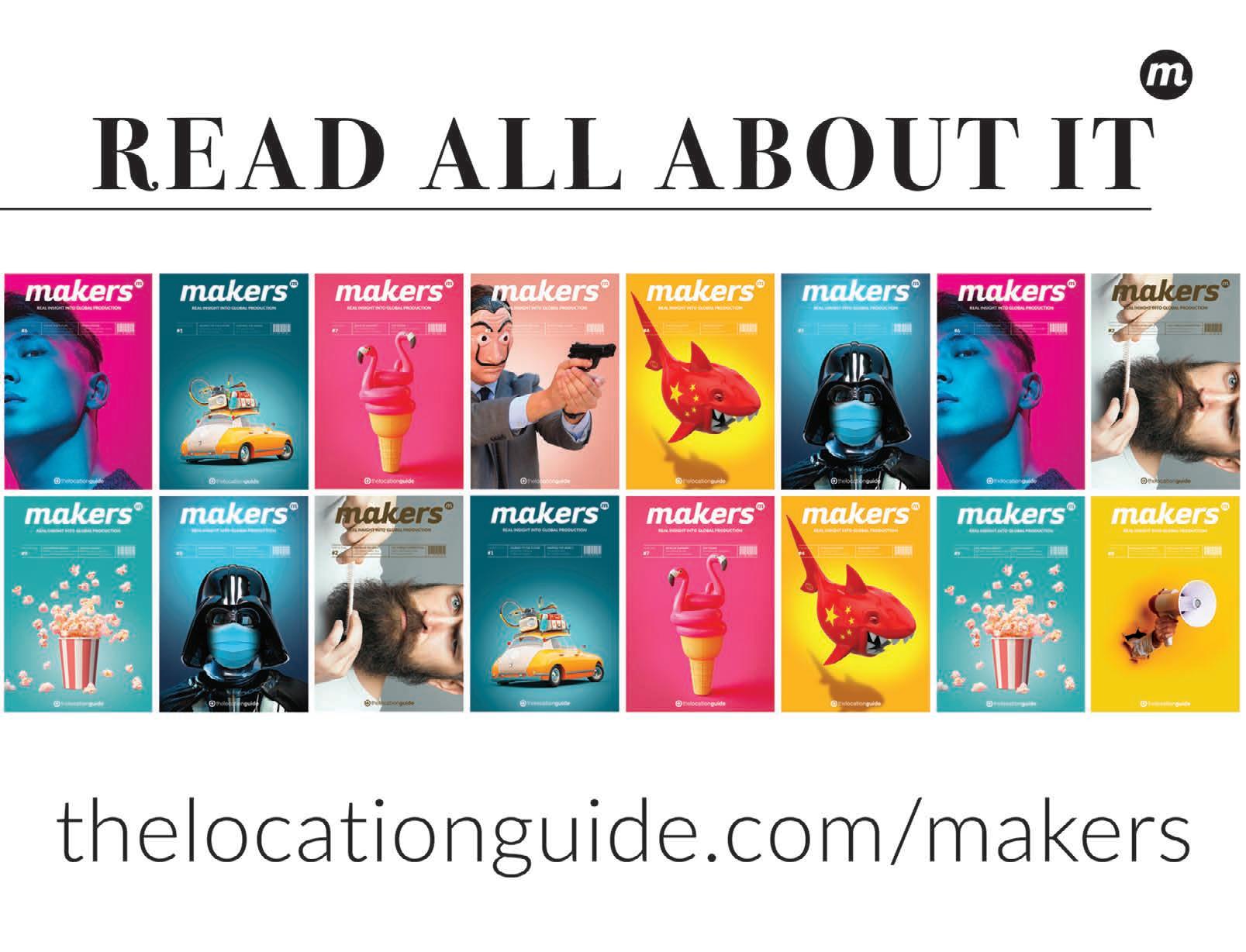
90
Q&A
RASHID KARIM CEO Iskandar Malaysia Studios
water tanks, period standing sets, backlots and extensive production support within its 80-acre lot (see Q&A with Rashid Karim, CEO of Iskandar Malaysia Studios).
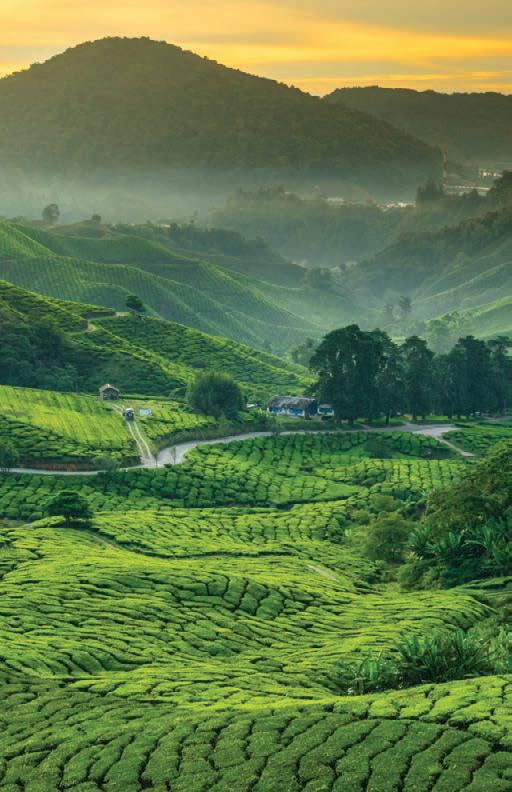

Pui Yin Chan, director, production and distribution, at GHY, is certainly impressed with the facility. “Iskandar is high-standard. For our television series Little Nyonya, we did almost half of the shoot at the studios where we built huge colonial Asian sets, including a live street,” says Pui Yin Chan, director at GHY. “We had a big crew, up to 500 people, including many locals in the production, props and dresses departments who did a great job making the sets look like Malaysia in the 30s and 40s, sourcing raw materials and goods, and helping find exterior locations across Malaysia.”
Q: Can you tell me about the set up and plans for your studios?
A: Iskandar is a self-contained facility including five sound stages and two television studios, water tanks and plenty of support facilities. Everything you need for physical production is here.
Our water facilities are a particular USP, with the largest surface tank in southeast Asia (65 metres by 65 metres), a deep tank for underwater shoots (six metres deep and 80 metres in diameter) and a 5,000 sqft indoor tank. We’ve invested in new effects facilities, such as hydraulic wave makers, dump tanks and water blasters, some of which will be launched later this year.
We’ve also been investing in permanent standing sets made from solid steel, including a full-scale replica of streets in George Town, Penang and Singapore with a hospital, period jetty, prison and police station.
Q: Have international productions doubled Malaysia and the studios for several different locations?
A: Absolutely. We are often used as a double for other locations, like Singapore (Crazy Rich Asians, Singapore Grip). Plus, China and Hong Kong, particularly in the past and India, notably with ITV’s Indian Summers series. While Strike Back season seven doubled Penang for parts of Pakistan, India and Nepal.
Q: Can you tell me about the FIMI Plus incentive you offer?
A: It mirrors the 35% FIMI incentive, but is specific to clients of the studio who spend a minimum amount. Both programmes are still available, but the idea is that once the allocation of FIMI Plus is fully utilised, it will stop running and productions will be referred to FIMI.
For Nanyang Transport Volunteers, Chan and the GHY production team will be returning to film at Iskandar for about six months and have already started building new standing sets there in partnership with the studio. These are modelled on pre-war colonial cityscapes of George Town, Penang in Malaysia and Singapore.
“We do a lot of 1930s to 50s dramas set in Singapore and Malaysia, so the GHY bosses decided that we should invest in a full set at the studios, which we can keep returning to, including streets, a full-scale hospital building and period jetty [as well as prisons, police stations and more],” says Chan. “And when we’re not using it, other productions will be able to take advantage of the sets.”
COLONIAL LOCATIONS
Outside of the studio, there are plenty of striking locations for productions to use.
“We have fantastic historical and cultural sites in places like Penang and Malacca, which haven’t changed much in 100 years, so are ideal for historical period dramas,” says Rashid Karim, CEO of Iskandar Malaysia Studios. “A lot of the Chinese projects [including the GHY ones] have come to film at these places because in China and Singapore cityscapes and landscapes have changed a great deal in the last 40 years.”
Malaysia can also easily double for other tropical locations like Thailand, the Philippines and Indonesia with its beautiful beaches and forests, especially on the east coast, and has the added advantage of the 35% incentive.

Even remote Malaysian locations are hosting international productions. For example, the European Survivor reality show is filming its second season on the island of Langkawi away from tourist hotspots with the support of local outfit Landmark Films and about 300 Malaysian crew.

91
ESSENTIAL FACTS
TAX INCENTIVE 35%
The Film in Malaysia Incentive (FIMI) is a 30% cash rebate available to local & international productions that spend at least USD1.1 million for films & USD88,000 per hour for television series in Malaysia. It is for feature films, television series, feature animation, animation series, documentaries & commercials. Post production activity in the country also qualifies as long as productions spend at least USD341,000.
FINAS announced at Cannes 2022 an additional 5% available for productions that meet cultural test requirements, including portraying Malaysia as a positive country/tourist destination, representing local culture & lifestyles (food, language, heritage etc), & the involvement of local production crew.
FIMI has received a surge in applications since introducing the additional 5%, with 47 provisional certificates issued so far. There is currently no cap on the incentive. The FIMI Plus rebate is being phased out (see Q&A).
TIME ZONE GMT+8
TRAVEL
Malaysia has 40,934 miles of highway (nearly double the earth’s circumference).
There are seven major international airports in Malaysia, including the one in Kuala Lumpur, which is conveniently linked through a high-speed rail system to the city.
It takes about 50 minutes to fly from Kuala Lumpur to Johor (where Iskandar Malaysia studios is based).
ATA CARNET
Also, because of the country’s colonial and multi-cultural past, there are plenty of different races available as cast members. “If you want to portray Chinese, you can easily find Malaysian Chinese people, and it’s the same with Malaysian Indians looking like Indians from India,” says Karim.
PERMIT PUSPAL
Getting all the initial paperwork sorted to shoot in Malaysia is usually straightforward. “Incoming productions need to submit their applications to the local agency called PUSPAL, which provides script approval and processes work permits, usually within two weeks of submission,” explains Karim.
Although Chan advises that any productions looking to access the local incentive should apply at least two or three months before prep to give enough time for scripts to be read and approved [Malaysia is quite strict on certain topics like religion and sex], and work permits issued, before any reccies are done.
Then once productions are in the country, most of the locations are pretty accessible, although there is no centralised location approval agency, and so producers need to identify the locations they want and get in touch with local owners and agencies. They can get support with this from FINAS, which has a dedicated Film in Malaysia office.

“When we filmed in Penang for Little Nyonya, it involved a lot of logistics, bringing in vehicles, lights, generators and crew and we had to block off roads. So FINAS were really helpful in getting us letters for permits to shoot and dealing with neighbourhoods, explaining how it was good for tourism,” says Chan.
CREW AND EQUIPMENT
There’s a relatively large and growing crew base in Malaysia. Maybe not as large as Thailand, but enough to accommodate at least three medium to large productions at the same time. As was the case in 2019 with features Crazy Rich Asians and Sky Fire and the Sky TV series Strike Back.
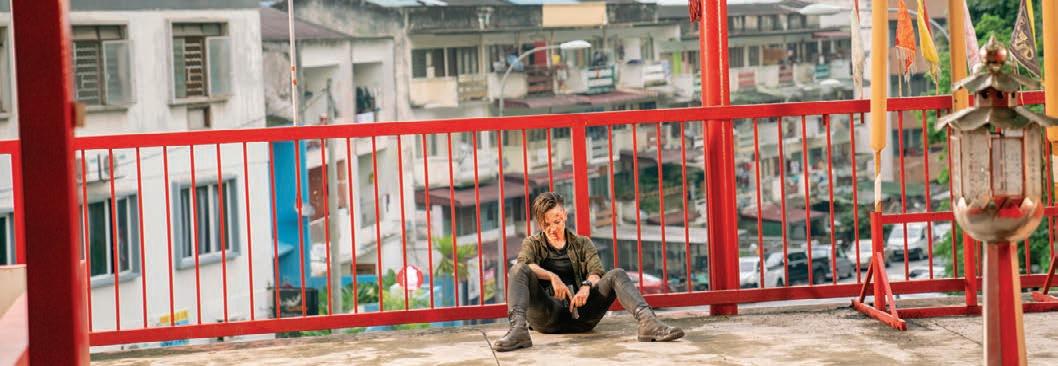
Many of the projects rely on local crew. “Ten years ago when we hosted Marco Polo season one, 60% of the crew was international, by season two it had flipped to 60% local, and now most productions use 70-80% local crew,” says Karim. “Having said that, it’s also very easy to bring in international crew because the rebate is inclusive of above the line foreign costs and crew.”
In summary, Karim concludes: “We have the 35% incentive (with no cap), our crew are great and bilingual and we are cheaper than most countries in terms of accommodation, food and transport.”
SOMETHING ELSE
Malaysia is reported to have more than 1,000 species of plants with medicinal properties used for treating ailments from headaches to malaria and cholera.
The Bintangor trees, found only on Sarawak, are believed to have properties that could help cure the HIV virus, which causes AIDS.

YES 92 Strike Back © Sky UK Limited.
The Little Nyonya © GHY Culture & Media.


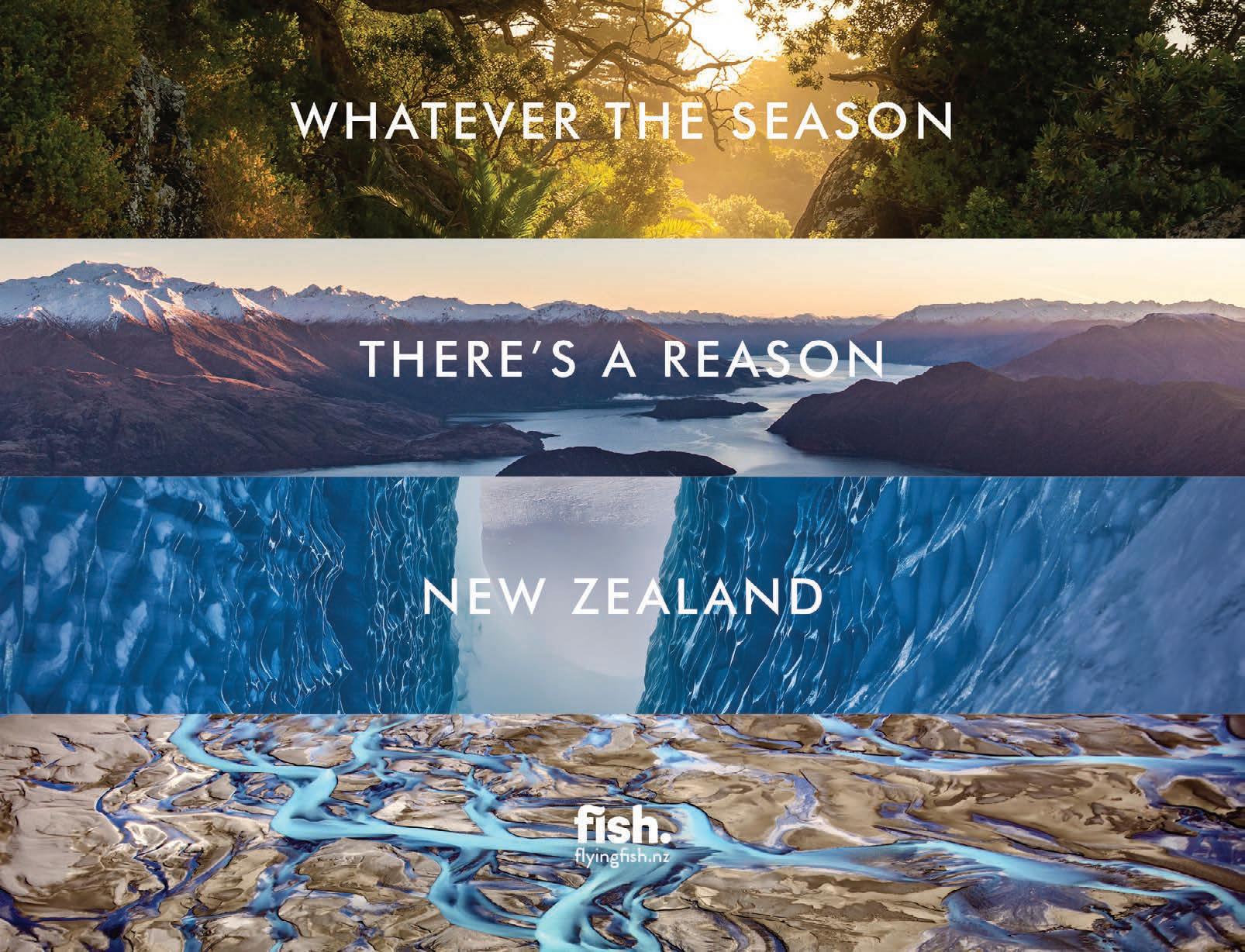
94
Mission: Possible
Hosting the latest and greatest Mission: Impossible stunt, Norway is proving to be the go to place for action sequences thanks to its stunning backdrops, enticing incentive and growing, experienced crew base. Chris Evans explores the country’s appeal.
We’ve been working on this for years. Shooting in Norway. It’s a motorcycle jump off a cliff into a base jump. It’s by far and away our most dangerous stunt so far.”
These are the words of Tom Cruise talking about the incredible feat for a scene in Mission: Impossible – Dead Reckoning Part One, the seventh installment of the popular franchise, which shot for a couple of weeks in Hellesylt, Stranda, in western Norway, after a long prep period in the UK.
Cruise, Paramount and the Mission team returned to the Scandinavian country having previously shot there for Mission: Impossible – Fallout, lured by the 25% incentive, stunning locations and action-experienced local crew.
A huge ramp was constructed over a number of months at the cliff site in Norway. Everything was brought in by helicopter. “It’s incredible what the engineers and technicians have done,” says Cruise.

LOCAL EXPERTISE
Experienced local production service providers Truenorth assisted with the logistics of the complex shoot. “There was a lot of prep involved in filming that scene,” admits Per Henry Borch, executive producer at Truenorth and an experienced adventurer, mountaineer and rescue squad veteran.
“They brought in a huge amount of crew from the UK who’d already done a load of the stunt prep for continuity, and combined that with plenty of local crew too. There was a lot of manpower in terms of safety. We had to do all sorts of tests and studies and weather data. Plus, we had to close down a public railway line, which was the only one out of the country, for three weeks, as well as the road next to it.”
Borch and the team had to approach the local municipality early and invite the various associations in the area – hunting, farming, police, mayor – to a meeting to present their production plans.
95
Setting up a key stunt for Mission: Impossible – Fallout © Truenorth.
“We wanted everyone onboard and allow them to ask questions, and assure them that after the production leaves the site will be exactly as it was before,” assures Borch.
This is why so many big Hollywood productions are choosing to shoot in Norway. In recent years, there’s been Marvel’s Black Widow, Warner Bros.’ Dune and Eon Productions’ No Time To Die in the country, alongside TV shows, like HBO’s Succession.

“We’re having regular conversations with the studios and streamers and there are more big projects due to shoot here in the coming months,” says Borch. One of these could be Mission: Impossible – Dead Reckoning Part Two with Cruise and the team looking to potentially shoot in Svalbard.
Many of these big projects are increasingly turning to local crew. So much so that Borch says there’s a big production looking to come that doesn’t want to bring any UK crew. “it’s partly a cost thing, but also based on the efficiency of the Norwegian crew – they know the nature, how to dress sets, and they understand the weather and conditions.”

Plus, Norway’s close proximity to London – just one and a half hour’s flight – is another key draw for the US studios. “Parts of the previous Mission: Impossible films shot in New Zealand, which is a great location [and has similar mountainous scenery to Norway], but is on the other side of the world. That’s a lot of logistics and costs. Whereas, Norway is just across the pond from UK stages and it’s in the same time zone,” says Borch.
INCENTIVE
Norway’s 25% incentive is undoubtedly a major factor as well. There are boxes to tick, but it’s a straightforward process. There is, however, only one application window in November, and there is a cap on the fund supporting the incentive.
“It’s a great incentive, but the process could be a bit quicker and more flexible, as things constantly change in this business. Some projects have missed out because they didn’t meet the deadline or there were no funds left,” says Borch.
Successful applicants have received the funds no problem. The potential difficulty is if the majors choose to shoot whole movies in Norway. So far they tend to just shoot sequences for a few weeks, so haven’t taken up all the allocated incentives budget. “We have a couple of interesting projects coming up that might shoot the whole project here, so I’m curious to see how the incentive copes with this,” says Borch.
VARIETY OF LOCATIONS
As for locations, Norway is obviously best known for its fjords, forests and mountains. “They are breathtaking and can work as Norway for Norway, but also double for other locations, such as Canada or the Alps,” says Leifur Dagfinnsson, CEO, Truenorth.
But there’s also a great deal more that Norway can offer. “We have a variety of locations, which productions can interact with easily, including the
second longest coastline in the world,” says Meghan Beaton, Film Commissioner for Norway. “Succession and No Time to Die both used the Atlantic Ocean Road in Western Norway running along the sea. The BBC series The North Water shot around the archipelago of Svalbard.”
Beaton also points to the fact there is snow and ice available all year round – a huge draw for productions who can’t find that elsewhere.
There are also modern and historical buildings. “We have hypermodern architecture, which has been used in projects like Ex Machina, as well as old wooden buildings,” says Dagfinnsson.
“Plus, we have a broad palette of colours and lights through the seasons. In winter, there’s the Northern Lights, while in the summer the days are incredibly long, with 24 hours of sun up north,” adds Beaton.
Permits are usually straightforward to obtain as Norwegian legislation effectively says there’s ‘freedom to roam’. “You can’t just land where you like in a helicopter. It requires planning and speaking to the different municipalities, national road administration etc,” says Borch.
“WE HAD TO CLOSE DOWN A PUBLIC RAILWAY LINE, WHICH WAS THE ONLY ONE OUT OF THE COUNTRY, FOR THREE WEEKS.”
WELL CONNECTED
There are 50 airports. Trains, tunnels and bridges run everywhere, including to the tiny islands, and there are plenty of boats to take you to remote locations or even host crew.
“There are a some high-end hotels outside Oslo, and some great cruise ships available. For example, on Paramount’s Downsizing, starring Matt Damon, we used an oil rig service ship that could travel to the different fjords and which had useful big cranes and a heli-pad.”
4G and 5G broadband works well even in the remote mountainous locations and tunnels and there’s plenty of technical equipment, including Russian arms. “Anything we don’t have can be shipped in on the ferry from Germany the next day,” says Borch.
There’s even a growing post production scene in Norway with Storm Studios in Oslo receiving USD430,000 from the local National Film Institute for their work on Marvel’s Oscar-winning film Black Panther: Wakanda Forever. “This can serve as a door opener for several assignments for the Norwegian supplier industry and especially in special effects,” says Kjersti Mo, NFI director. Storm also recently worked on HBO’s The Last of Us
“We have a real can-do attitude and are seeing productions use and exploit all our services and locations, even the smaller districts. These are very positive times for the production industry here,” concludes Beaton.
96
THERE ARE A LIMITED NUMBER OF HIGHEND HOTELS OUTSIDE OSLO IN NORWAY, SO THERE ARE SOME GREAT CRUISE SHIPS THAT CAN BE USED.
Black Widow © Marvel Studios/Walt Disney Pictures.
The North Water © BBC/Harpooner Films Limited/Nick Wall.


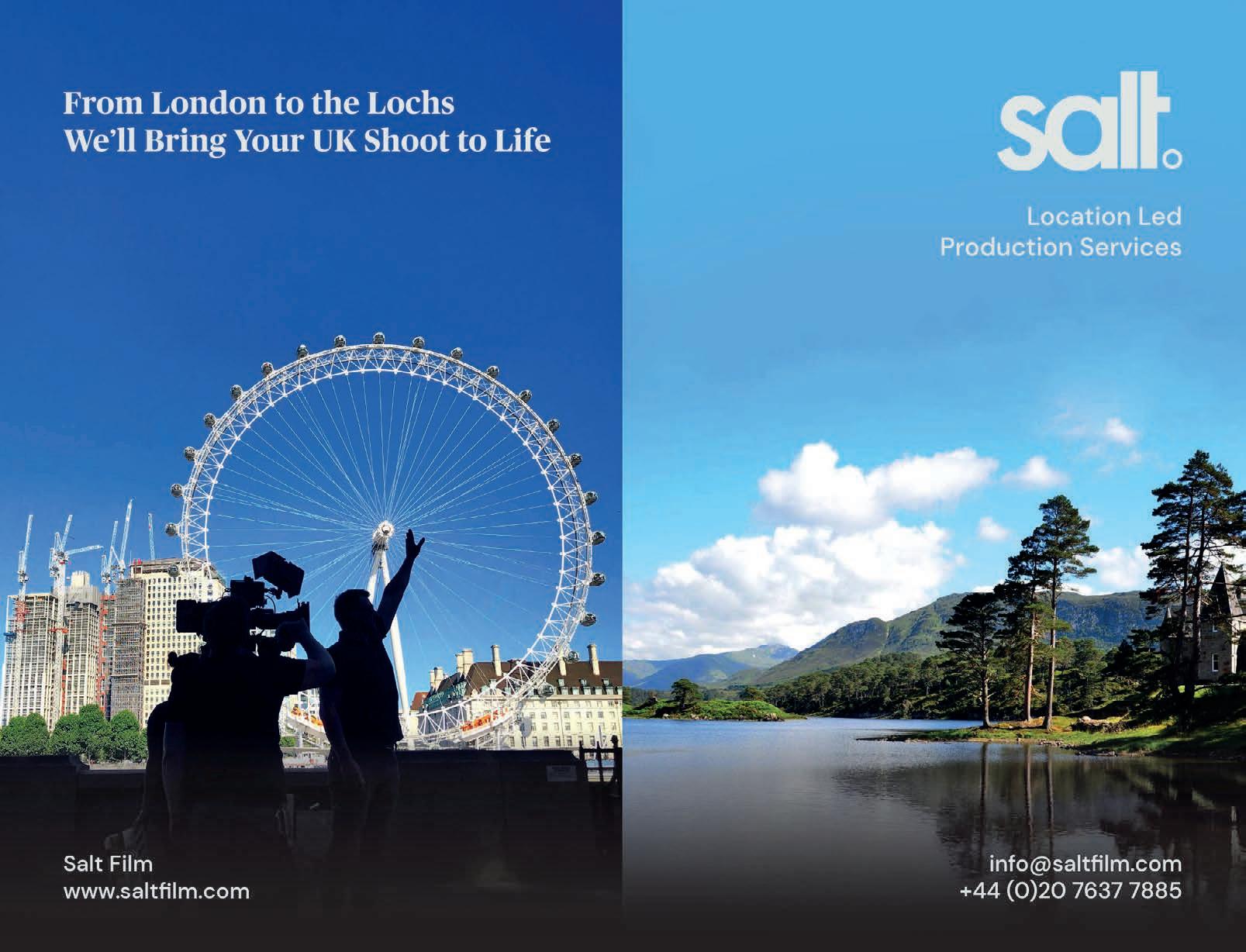
98
Over Land and Sea
Within film and television production, no two projects are ever the same, and each bring their own set of challenges and quirky expectations. How do the specialist production service companies and fixers make out of the ordinary tasks seem so straightforward?

Beyond the location findings, accommodation organising and transportation arrangements, production service companies are sought after for their industry knowledge about how to make the logistics work. With the endlessly possible ideas that are developed in the writers’ rooms, the teams within production service companies are set the challenge of bringing them to into being.
Whether it’s a death-defying stunt by Tom Cruise, whose recent cliff jumping spectacle for Mission Impossible: Dead Reckoning Part One was executed with the help of Nordic based company Truenorth, or navigating water-based filming with live animals, no ask has yet to prove too big for the companies making it all happen.
“We know that all productions have their challenges, and it is experience and know-how that really defines how much of a challenge each turns out to be, and how much you get caught out by the
unexpected,” comments Anthony Barry of UK-based production service company Good Films. It worked on the 2021 to 2022 filming of Prime Video’s Good Omens season 2.
No strangers to tackling the out of the ordinary in production, filming logistics company The Marine Department once found themselves living on an island for the entire shoot of psychological thriller series The Third Day and getting stuck in mud covered landscapes for The Essex Serpent.
The Marine Department specialises in all aspects of filming on, under or around the water, from basic risk assessment and safety cover to logistics, training and coordination of large scale marine and diving operations. The team’s most recent job was for Netflix’s film Luther: The Fallen Sun. With complex shooting locations to navigate, The Marine Department was tasked with the unexpected.
99
Idris Elba in the rigged Land Rover for Luther: The Fallen Sun © John Wilson/Netflix.
“Every job has its individual challenges, on Luther it was two cast members in a moving Land Rover defender, underwater while fighting with no air,” says The Marine Department company director Jonjo Stickland. “This naturally presented a few challenges. The SFX rig on the Land Rover was superb, giving complete control of the vehicle in and out the water. The stunt team’s professionalism, training and skill working in the water was faultless. It made a complicated scene seamless and thoroughly enjoyable to work on.”
The team’s involvement with the stunt filled production was supported by a group of high skilled individuals, this time including Luke Murphy's SFX team and Wolfgang Stegemann’s stunt team. In the climactic battle, Luther and his nemesis battle inside of a moving Land Rover Defender. The vehicle scales the snow-capped terrains on location in Iceland and is subsequently submerged into icy waters.
“We are lucky to have a team with such a varied skill set so at least one of them will have in-depth knowledge of what we are trying to achieve,” Stickland adds. “Bringing in the right crew for the job means we have never yet felt uncomfortably out of our depth. We enjoy working through problems with other departments, as at the end of the day, it is a collaborative effort that makes the job a success.”
Many productions rely on specialist camera crew to capture second unit footage for insertion into the story. Capturing aerial shots of environments is a classic example. Shot across mainland Greece and the island of Spetses, aerial filming company Helicopter Film Services captured an elevated vantage point for Netflix’s Glass Onion: A Knives Out Mystery. Not the most inconspicuous of filming apparatus, drones and helicopters provide their fair share of challenges, such as managing the noise when navigating around the guest of the Villa 20 at Amanzoe, a luxurious resort in Porto Heli, Greece.
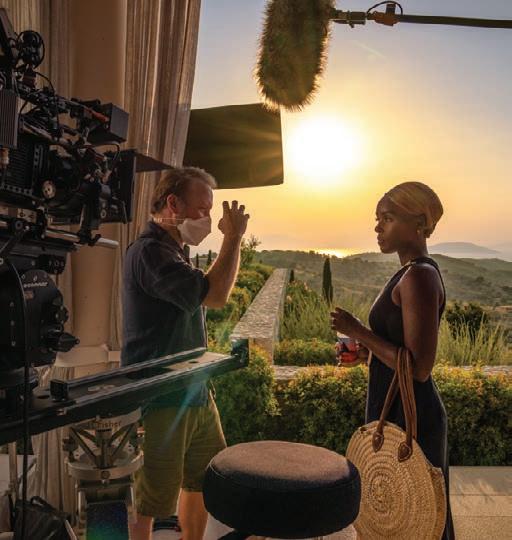
“It’s essential that a production takes the time to properly brief an aerial cinematographer in the requirements and the director’s aspirations for those sequences,” commented Helicopter Film Services CEO and aerial cinematographer Jeremy Braben. “It is equally important that production listen to the ideas and suggestions made by an experienced aerial cinematographer or operator. Quite often some shots simply aren’t achievable but an idea from the aerial team may actually be something better or different.”
Depicting the scale of the luxurious lifestyle of billionaire Miles Bron played by Edward Norton, camera rigged helicopters and drones captured live action footage. For the film’s super yacht scene where Bron and his eclectic set of friends set off towards the island, film pilot Giles Dumper flew an Airbus H125 (Squirrel/ AStar) helicopter, joined by aerial cinematographer Braben operating a Shotover F1 gimbal rigged with ARRI Alexa Mini LF camera and Fujinon 28-100 Premista lens.
“Helicopters and drones are two different, but often complimentary, tools in the aerial filming arsenal,” adds Braben. “It’s often said that drones can do everything but they simply can’t. The same is true for helicopters. Drones are very good where close, tight or short sequences are involved but they simply cannot travel the distances, heights, speeds or carry the same payloads as a helicopter can. Drones are also more affected by wind and weather. However, a helicopter can’t fly down a street and through a doorway.”
“IT’S EXPERIENCE AND KNOW-HOW THAT REALLY DEFINES HOW MUCH OF A CHALLENGE EACH TURNS OUT TO BE, AND HOW MUCH YOU GET CAUGHT OUT BY THE UNEXPECTED.”
Mission Impossible: Dead Reckoning Part One, Truenorth managed to pull off arguably the most daring stunt yet attempted in the franchise.
Ethan Hunt (Cruise) jumps a motorcycle off a Norwegian cliff and plunges into a skydive but to execute that the actor made 500 skydives and more than 13,000 motor cross jumps.

After practicing in a purpose-built quarry in England where the trajectory of his jump was captured with camera rigged drones tracking his movements, the shot moved to Helsetkopen, Møre og Romsdal on Norway’s west coast. The ramp itself was transported in pieces by helicopter and assembled up to the edge of the peak over a number of months.
Clearly the ability to service a production is a collaborative effort from a creative and practical stand point. Tasked with an array of challenges, production service companies offer their local expertise in location scouting, equipment rentals and everything in between. Facilitating the wildest imaginations of filmmakers, production service companies are invaluable to a production’s success.
On set of Glass Onion: A Knives Out Mystery © John Wilson/Netflix.
Mission: Impossible - Dead Reckoning Part One © Paramount Pictures.
100
TASKED WITH AN ARRAY OF CHALLENGES, PRODUCTION SERVICE COMPANIES OFFER THEIR LOCAL EXPERTISE IN LOCATION SCOUTING, EQUIPMENT RENTALS AND EVERYTHING IN BETWEEN



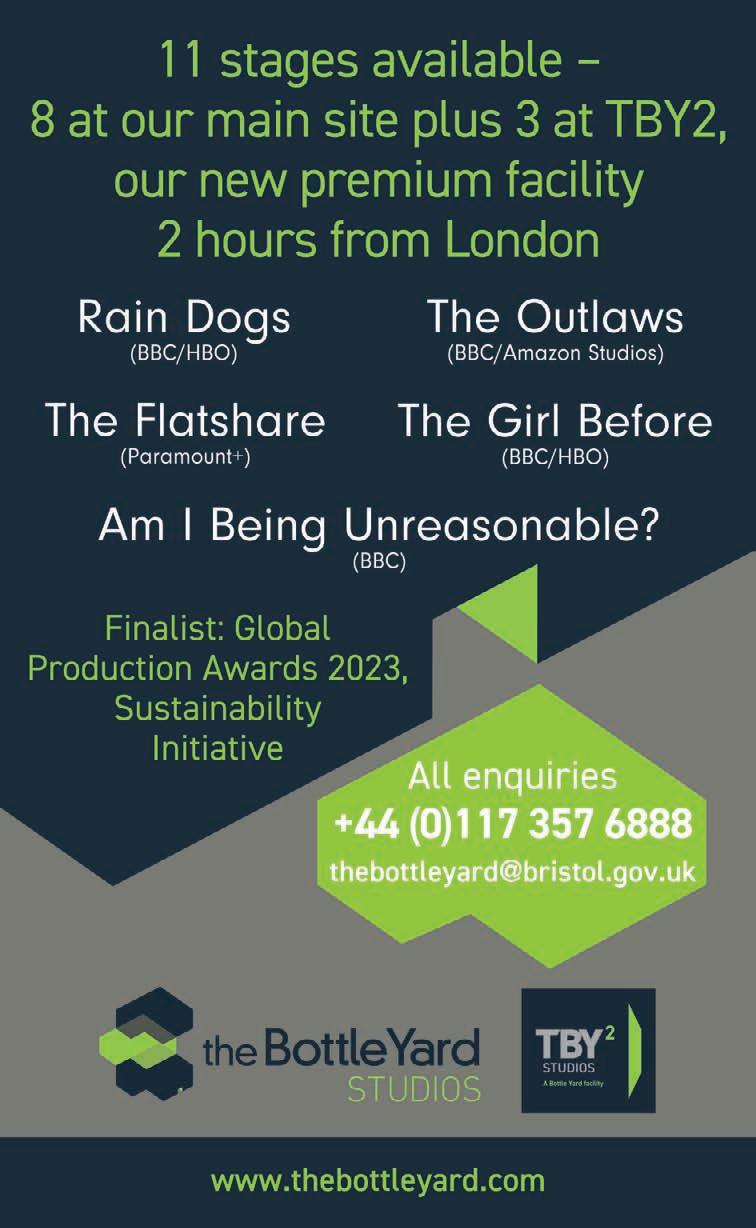

102
PROFILE Copenhagen Industries
Championing creative authenticity, functionality and safety, the winners of the Production Tech Innovation of the Year Award at the makers & shakers Awards 2022 are redefining how the industry sees and uses prop firearms.
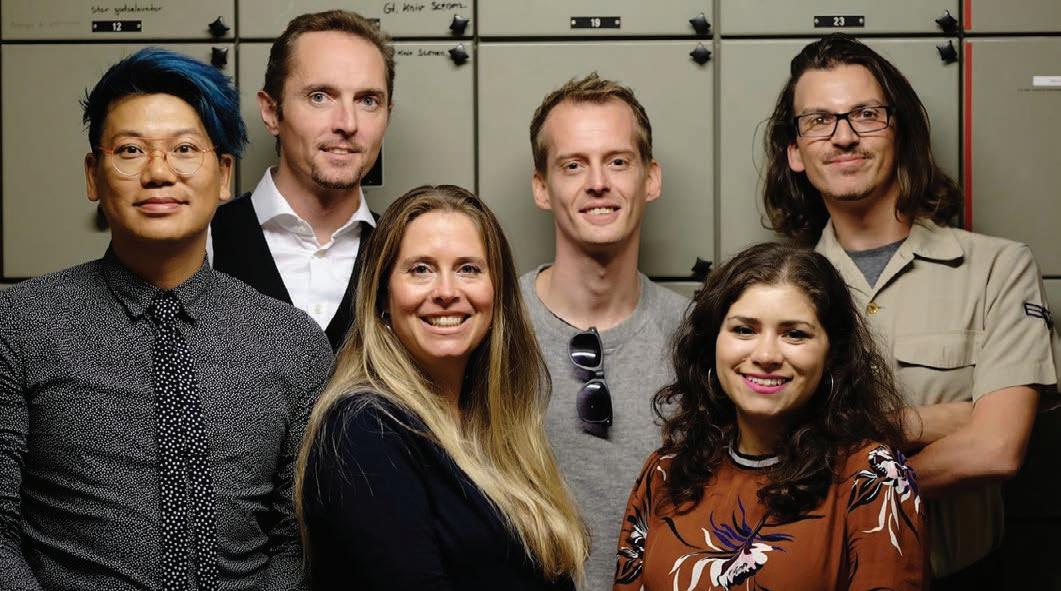
Founders Daniel Karpantschof and Søren Haraldsted’s respective expertise have delivered weaponry alternatives that ensure all round comfortability for cast and crew.
talking to directors, authenticity and creative freedom was the concern. The focus became centred around eliminating both of those worries.
Besides tackling the obvious safety aspects that were highlighted again following the death of Halyna Hutchins and serious injury of director Joel Souza on the set of Rust, Copenhagen Industries are appealing to filmmakers through the removal of safety and compliance issues that lead to production uncertainties. In addition to costing practically nothing in comparison to real weaponry, productions are also able to do away with any choreographically related restrictions that arise from using real firearms.
HOW IT WORKS
Can non-technical people use the Violette?
Absolutely! Violette is designed to work out of the box, with no special training or requirements.
Can it work with any firearm replica?
Initially we've focused on assault rifles, because they’ve been prohibitively difficult and/ or expensive to work with. Our designs are compatible with about 98% of all assault rifles ever produced. We plan to release handguns later.
What is the process of getting the product to the consumer?
Once on the market, we sell to prop shops, armorers, SFX outfits. They in turn do direct production rentals. We wanted to create a product without disrupting existing relationships and creative flows, with existing groups of people working together.
How are the firearms elements replicated and adapted?
When talking to Karpantschof (above right) about the company and the ground breaking Violette technology, the term no-brainer was a recurring reference. A cost effective, hassle free and safe alternative to using actual firearms on set does make a lot of sense. Since 2017, the Violette, a propane and oxygen based special effects technology that delivers a number of the sensory elements we expect from firing a weapon, has had people wondering at the authenticity it provides. From convincing Harrison Ford that it had to be CGI to raving testimonials that applaud its multifaceted impact on set, Copenhagen Industries are actioning real change in special effects.
“We started expanding our own sort of notion of what it is that we wanted to do by creating what we started referring to as special effects 2.0,” says Karpantschof.
While establishing what the value proposition of the product would be, the team discovered when talking to cast members safety was an issue, but when
Karpantschof explains, “As more people started playing around with Violette, they started actually doing the scenes and the takes that they wanted to do rather than what they were able to do. That's when we knew we were on to something.”
With testimonials from Disney, Marvel, Lucas Films and even Universal Studios expressing desire to use the product, the company’s technology, along with their meticulously crafted replica weaponry, are poised to become heavy hitters. Whilst still waiting for full investment that can send these industry changing props to market, the faux machinery has been used on a handful of productions including Danish production Krudttønden and Tarik Saleh project The Contractor starring Chris Pine.
“Although the tragic case of Halyna Hutchins highlighted the potential dangers of handling prop firearms on set, it was just another reminder that this is not a new occurrence. As rare as it is, for an industry that thrives on imagination, the very real implications of handling firearms on set, from fatalities to severe injuries, are just not worth the risk.”
The muzzle flash is created by introducing two gases into the combustion chamber. It’s ignited and creates a small combustion that is then let out through the inner barrel of the gun. These can be adjusted in size, colour and cadence to accommodate any requirements or wishes from the design team, director or DP. It is all handled remotely by software that controls the mixture and other variables.
The audio is pretty indistinguishable from the real thing, except about 25% lower volume. We adhere to universally adopted work safety standards and remain below 80db. Loud enough that we advise people use ear protection, but not loud enough to strictly speaking be required.
What’s in development?
We wanted to rethink the entire process around special effects; starting with firearms. We plan to release a platform for products, built on the Violette technology. Remote detonation, squib vests (with blood bags), digitally synchronised to Violette firearms and all such goodies.
103
Image courtesy of Copenhagen Industries.
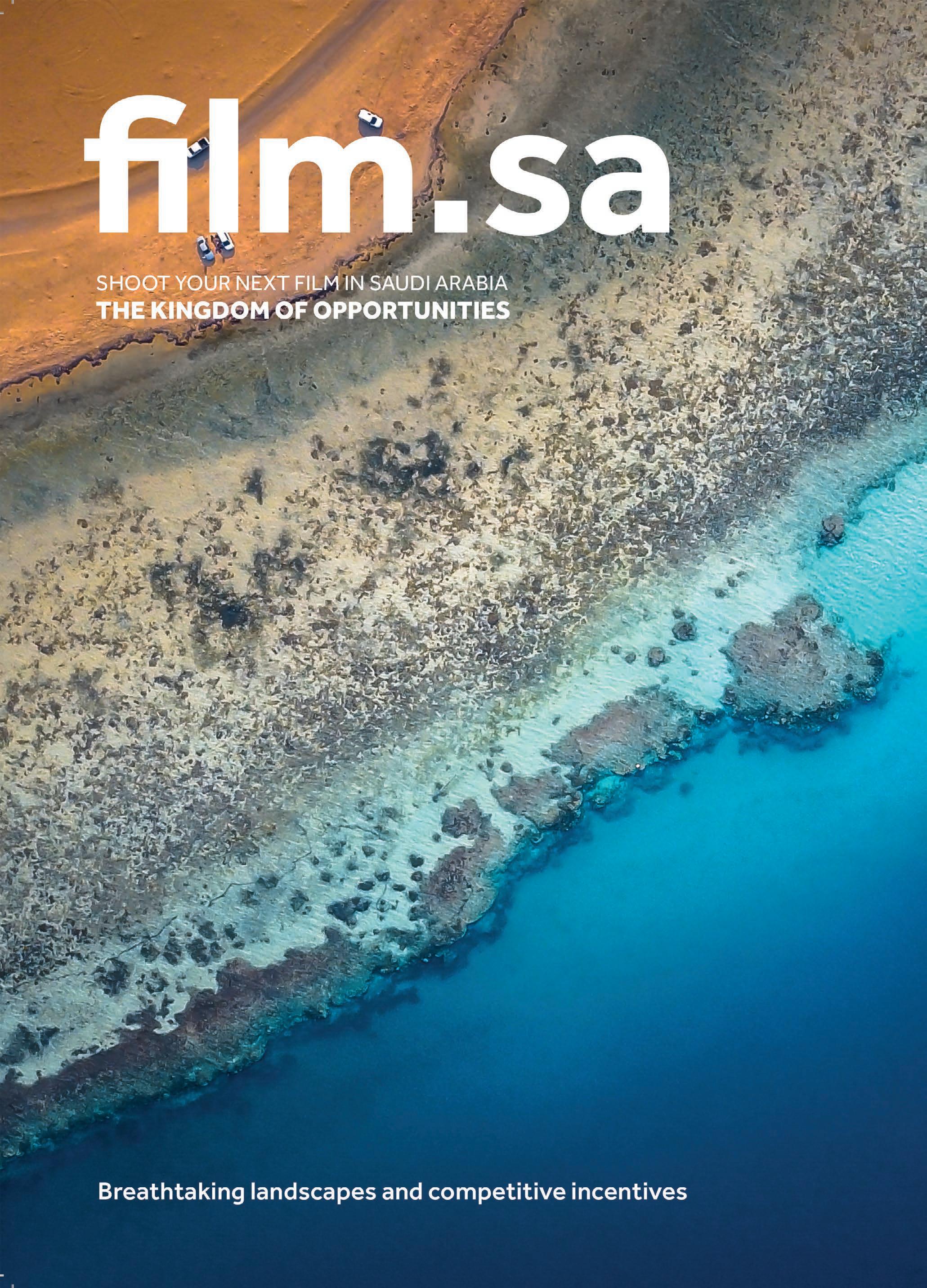

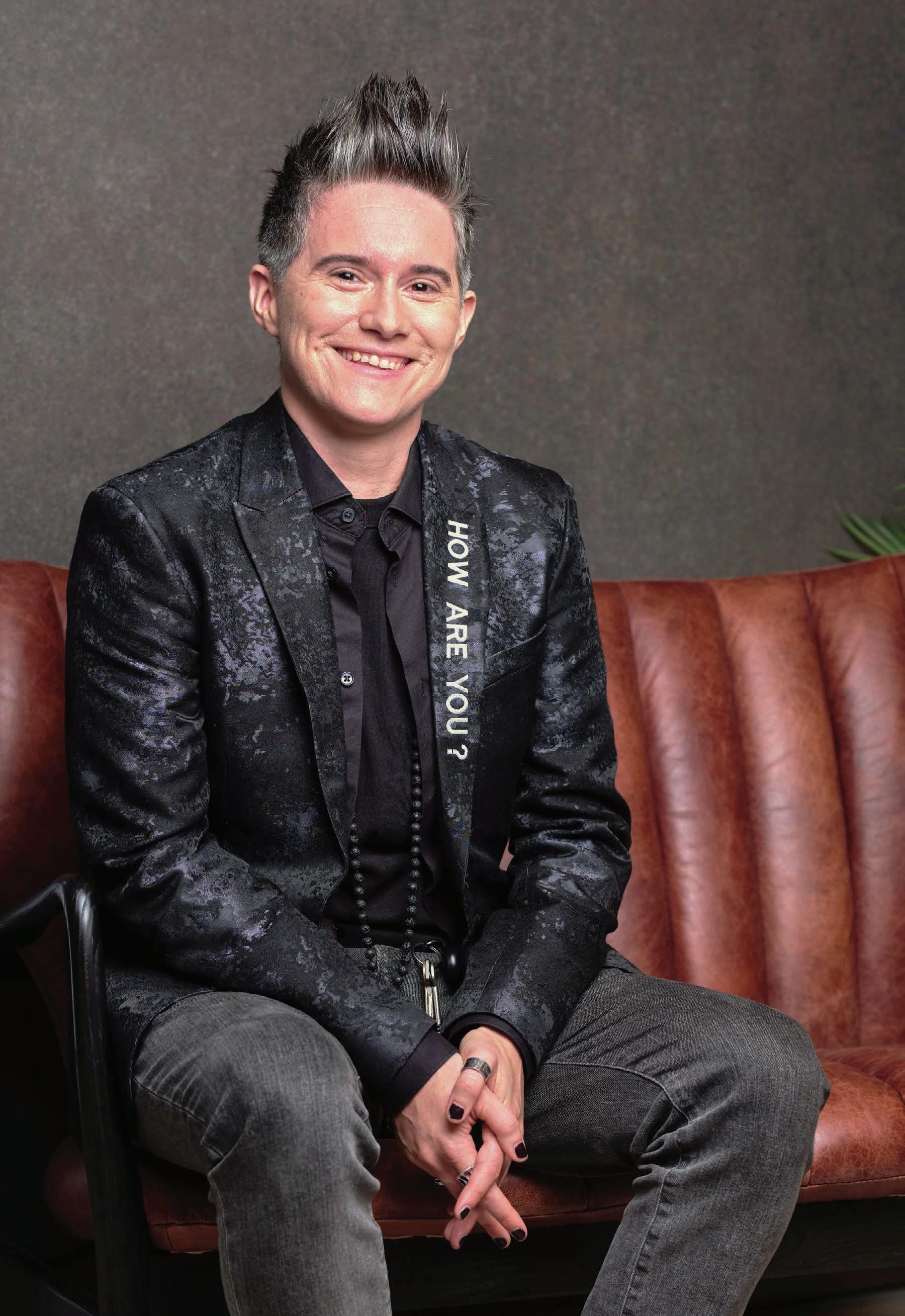
interview with Leo Anna Thomas
Co-director of 6ft from the Spotlight, wellbeing facilitator and art director Leo Anna Thomas is championing for better quality mental healthcare and attention on sets.
Navigating the loss of two friends and colleagues to suicide, and dealing with their own battles with on set bullying, Thomas shares about themselves, their motivation behind working towards creating more comfortable production environments, and how they are sparking change for a better future. Thomas was named Shaker of the Year at the 2022 makers & shakers Awards.
MAKERS MAG
How did you get your start in the industry?
LEO ANNA THOMAS
I started as a runner and answering ads on something called Shooting People while I was studying for my degree in fine art and film.
Once I graduated, I applied for an apprenticeship scheme called FT2 (film and television freelance training) where I would do placements gathering skills and connections. Luckily when the training ended, I was put forward to many different productions and set designers and eventually snowballed into film after film as an art department assistant.
What was the defining point when you knew you wanted to work in the art department?
I think I was 11 years old when I got a television in my bedroom and a VHS player. I remember watching movies and just being moved by them. I was always attracted to the aesthetics of what I was looking at and the stories, and wanted to help create and be a part of that.
The power it had on me was so inspiring it literally drove me to continue that throughout college and university and eventually my career.
How can we ensure that people’s mental wellbeing and vulnerabilities are addressed?
I think just having people genuinely listen, especially the people at the very top. Looking at the Film and TV Charity’s Looking Glass Survey, it’s evident that there are hundreds of mental health concerns in the industry so we need more support when people open up. It’s a very vulnerable thing to do, so it’s good to have a community of people around you who are empathetic and compassionate.
What does being a wellbeing facilitator mean to you?
It’s very personal to me because of my own lived experience with mental health in this industry which I struggled with and led me to leave the industry for four years. The role acts as a neutral
third party where people can come and speak and slowly break away that systemic fear that exists in the industry. It’s a tool for guidance and encouragement and helps with collaboration and communication with those higher up to work towards effecting change. It’s a beacon for that shift.
When you took your break from the industry you trained as a mental health first aider. How valuable is it to enter that space of relearning?
It’s really valuable because as human beings we’re all so different yet so the same. So having trained as a mental first aider in 2018, because of the loss of two friends and wanting to initiate change, it’s crucial to keep on top of that because the mental health space is always shifting and moving.
As more surveys go out and more information is being shared with us, you can’t become complacent and sit back. It’s not one size fits all.
How do you deal with getting through to people who can effect change?
Honestly, it’s never ending. You are continually having to check in with people and remind them of how critical this is. Some people think it’s a one off but in reality, this is for the rest of your life, the rest of you career. You ideally take what has been experienced when you’ve collaborated with a wellbeing facilitator and keep checking in with how you are
applying that. Having the physical presence of a wellbeing facilitator can also support any bullying and harassment issues that arise too.
What is something that you wish you knew when you started your journey that you would share with someone going through anything similar?
Don’t listen to people when they say that you are wasting your time. I heard that so many times over the years about this role –that you’re wasting your time, nothing is going to change. Don’t listen to those people. Let it drive you but look after yourself.
Keep a really strong, small network of friends in the industry and out of it who have nothing to do with this world. There will be glamour but that’s not everything. Enjoy it and have fun but stay grounded and check in with yourself about why you are there and what you want to achieve.
107 COMMUNICATION MENTAL HEALTH GUIDANCE
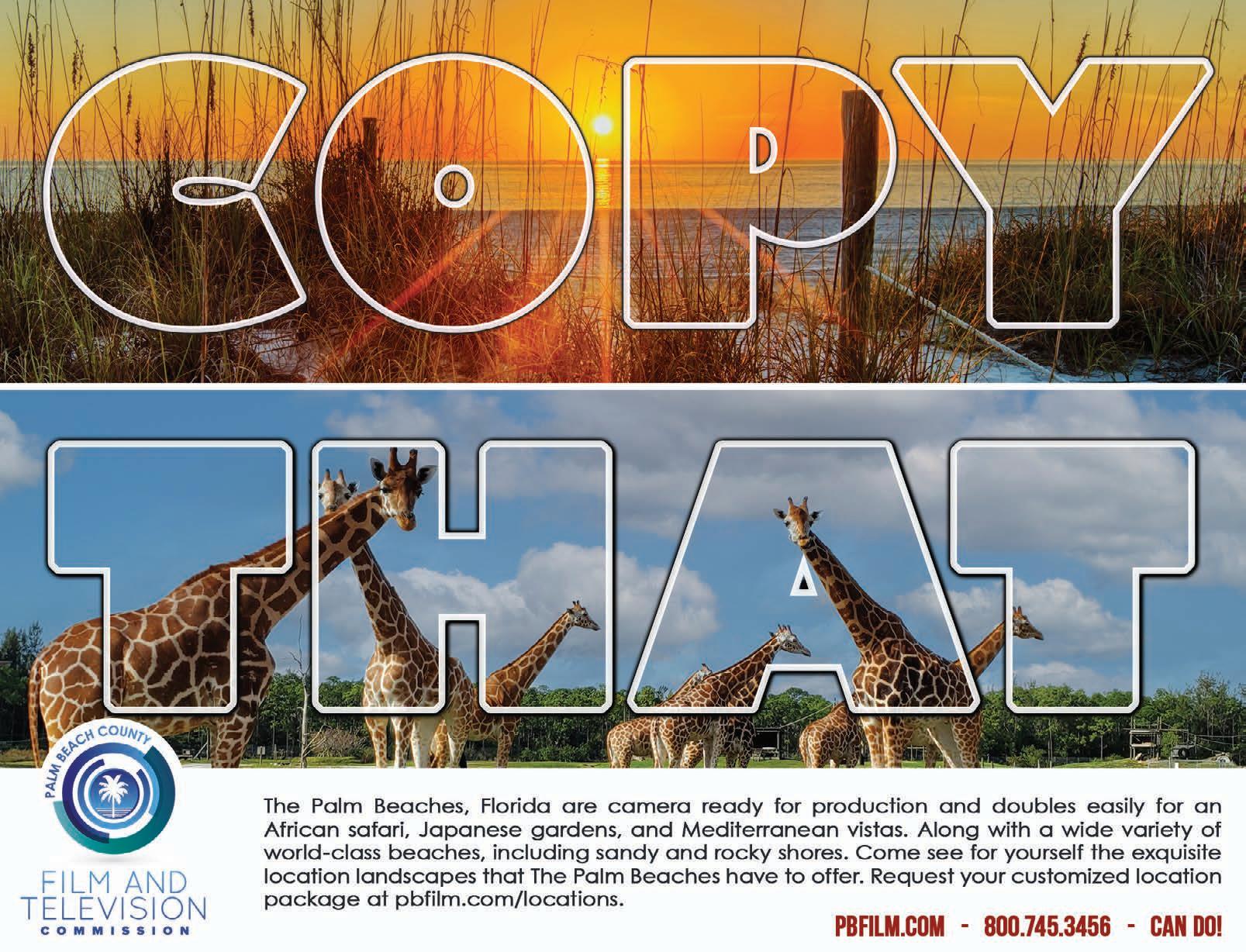

108
PROFILE Bluebolt
on poor management and greed. “Companies are tempted to take on more than they can deliver, so the people affected are the teams internally working on these jobs.
“We set up BlueBolt to ensure that a good work/life balance was part of the deal. Generally speaking, it seems most VFX studios have woken up to this. We're only as good as our team. We look after each other and that really paid off during lockdown.”
From 80 full time staff pre-pandemic it rocketed to 150 in 2021 as the team embraced remote working. It now has a hybrid set up with the studio in London Victoria as the hub.
Post facility Bluebolt was a rarity in 2009 in being led by female executives – and remains an outlier today. The company has grown to 150 people taking on huge VFX projects. Lucy AinsworthTaylor, CEO & cofounder shares the secret of success.
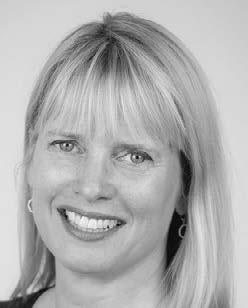

Ainsworth-Taylor joined The Moving Picture Company in 2001 around the same time as compositor Angela Barson. Friendship turned into entrepreneurship when they left to co-found their own VFX boutique.
“We never thought about the risk,” AinsworthTaylor says. “We knew the big factory type facility that MPC had grown into was not for us and as we had run all the smaller shows at MPC together, we knew the area we were heading into. We didn’t know BlueBolt was going to go anywhere. We just thought we’d give it a try, have a bit of fun and see how the first year went.”
“What really kicked us off was getting the first season of Game of Thrones, which then introduced us to the entire awards round where we got Emmy nominated and swept the board of the VES Awards,” says Ainsworth-Taylor.
“Fourteen years ago, television was the poor relation of film and renowned for having little to no VFX budgets. HBO were the game changers on this front and did big budget TV from the start.”
After Game of Thrones, Bluebolt took on Great Expectations for the BBC with little to no budget and won its first BAFTA. “We’ve grown organically, still never borrowed a penny and always had a company that has thrived through very careful management and planning,” she says.
Bluebolt created all the VFX on the first five seasons of Peaky Blinders and all of The Last Kingdom, worked on feature The Northman for director Robert Eggers and three seasons of The Great for Hulu.
“Our greatest achievement for business was in 2018 when Angela and I won the Barclays Business Achievement Award at the Women in Film and Television Awards – solid recognition from industry leaders and peers for being a female founded business in a (then) very male dominated industry.”
It's still exceptionally rare to have all female VFX facility owners. “Women often don’t have the confidence to dive in. For many years we were the only female owned facility that we knew of so we are pleased seeing females get to the top of other companies in recent years.”
“Our artists work from the studio on anchor days based on show and team needs and it's working well for us all. We want to ensure teams retain a sense of connection and that juniors have adequate exposure and training opportunities. We even have a hybrid dog policy as many of the team acquired furry friends during the pandemic!”
VFX remains a specialised and a difficult industry to enter. More women are joining but statistics show a significant gender inequality after the age of 30 when people tend to start families.
“As much as drums are being beaten and training schemes are now being developed, VFX needs to become part of the career’s curriculum in schools and colleges so that young people are aware that this is a great profession with a wide range of opportunities. The work that Access VFX are doing with young talent is important and we plan to support their mission to foster inclusion and opportunity in our industry.”
THE PERIPHERAL
They are proud that they started the venture with no borrowed finance. Both went without salaries for the first two years.
The VFX business has a history of being incredibly tough on employees with long hours, deadline pressure and low pay. Ainsworth-Taylor blames this
BlueBolt was the primary VFX vendor creating futuristic London environments across Amazon Prime’s adaption of William Gibson’s novel The Peripheral (pictured). Striking additions to the skyline include vast statues of Greek Gods towering over the city (pictured above), later revealed as air scrubbers that remove carbon from the atmosphere. BlueBolt built them by expanding on some early designs and developing a greebling process to create small carbon blocks that accumulate around the statues. Bluebolt enabled the directors to plan the shooting of aerial plates during early morning runs from a helicopter.
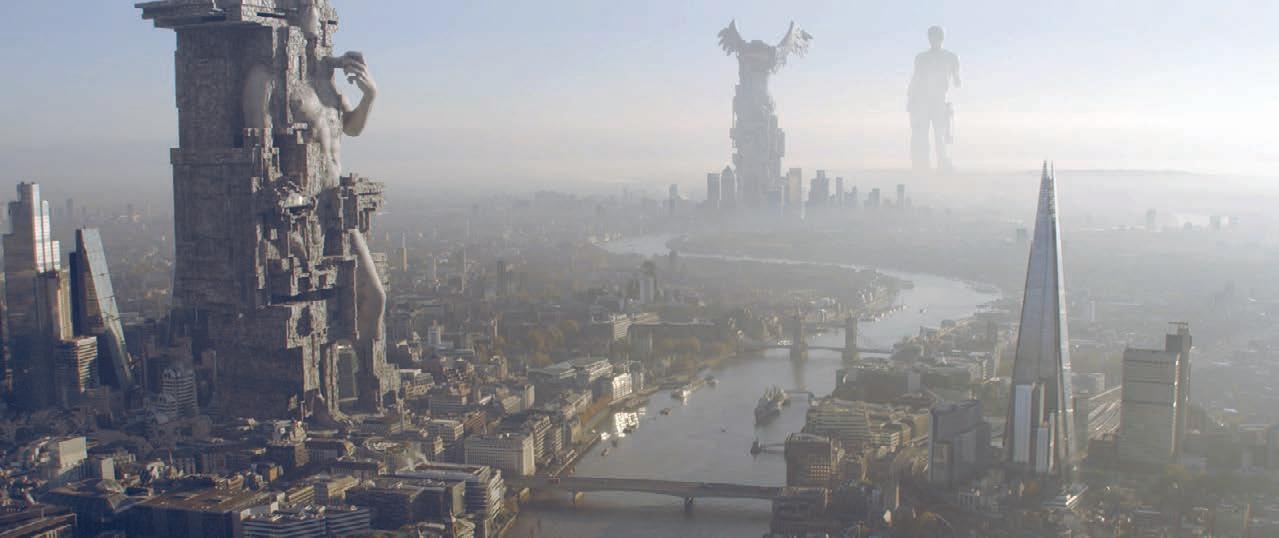
109
Lucy Ainsworth-Taylor. Angela Barson.
Production Lighting Illuminates Diversity
The number of women in the lighting department is disproportionately low in comparison to its film and television industry counterparts. Despite this, the female force of gaffers, grips and sparks are continuing to shine through, make their presence known, and light the path for those to come.
Whilst steps are being made to increase the balance of gender diversity in the production space, women are still the minority when it comes to holding leadership positions in lighting. Representing only 24% of leading crew roles in 2022 on the top 250 grossing films according to last year’s Celluloid Ceiling Report, women are fighting to climb to the top of the hierarchy. Although ceilings are being broken amongst directorial, production and writing roles, the lighting department is still trailing behind.
Inès Hachou.
As an integral component for creating the emotional aesthetic for any production, the lighting department is a valued team on set, given physically taxing tasks and requiring meticulous technicality to illuminate the world of film and television. Unfortunately, much like most of the industry, roles in lighting are predominantly held by men, with the unbalance exacerbated by the physical aspect of most of the responsibilities assumed to be better performed by them.
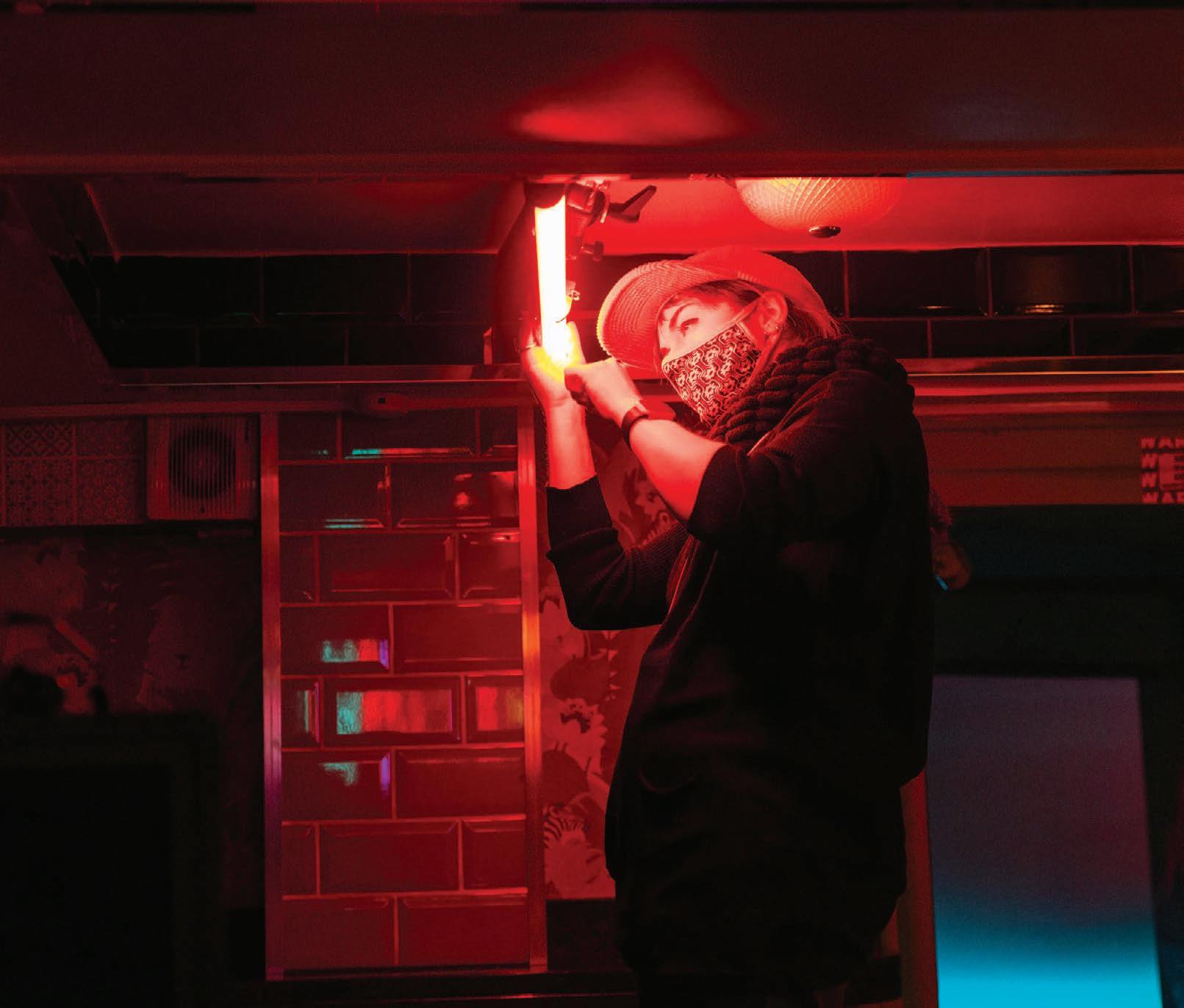
110
With judgements made based on physicality, women are, therefore, overlooked for gaffer, grip and spark roles, and with such a culture being perpetuated, many are passed over for opportunities in the department altogether.
Actor Richa Chadha, director Shuchi Talati and associate producer Tanya Negi were faced with this reality in India when putting together an all women crew for their film Girls Will be Girls. Unable to find a single woman to join their team as gaffer, the trio set out to launch UnderCurrent Films Labs, a programme for girls seeking to enter the production lighting. Offering 10 placements, the programme is a start to shifting crew culture in India and creating a more diverse environment, accessible to all.
“Most of us women are used to being in a male-dominated space in a crew so we always have our guard up,” Talati told Elle India on the launch of the initiative. “We’re constantly thinking about whether somebody is watching, or are we going to be belittled, or will we ever be taken seriously. You have all these questions. But in a mostly female space, it’s a collective. You don’t have so many insecurities. I wanted to create that safe environment for our film’s crew. I’m not saying I want to segregate both genders. However, while society catches up, we can create some form of representation.”
By partnering with the Women in Film and Television Association’s recently launched India chapter, and with lighting and grip equipment providers in Bollywood, Light n Light, UnderCurrent Films Labs have been able to bring together enthusiastic women seeking to enter the industry.
This is a battle being fought in all corners of the production lighting world. Women are united in the common aim of balancing gender responsibility within lighting roles. As mentioned by Talati, all female crews amplify a solidarity amongst female screen sector professionals as well as highlighting their competence regardless of gender.

The morale generated from a female led environment was what spurred on Mexico City based Amazonas Electricas. Comprised of 12 core electricians, the collective was started after Mexican film director Faride Schroeder and compatriot cinematographer Leslie Montero decided to hire an all-female crew for a car commercial. Their group includes Mexican gaffer Ana Martinez and cinematographer Sophia Stieglitz. The project sparked a movement that has offered a series of workshops to the wider community of female lighting professional hopefuls.
ARE CONTINUING TO COMMUNICATE WITH ONE ANOTHER ABOUT THEIR EXPERIENCES AND OFFERING SUPPORT IN ANY WAY THEY CAN.”
In the UK too there is movement afoot. Emma Goldsmith, lighting trainee, tells makers, “From what I’ve experienced, there’s normally just one female in the department, sometimes two or three if we have dailies in. So it’s nice to have another woman on the team with me as working in a male dominated
GENDER GAFFER
DIVERSITY
111
“REGARDLESS OF SENIORITY, WOMEN
FROM GAFFERS TO GRIPS TO SPARKS, THE INDIVIDUALS WHO ILLUMINATE THE WORLD OF FILM AND TELEVISION ARE TASKED WITH PHYSICALLY TAXING ASKS AND METICULOUS TECHNICALITY.
Natalja Safronova.
WITH PROGRAMMES LIKE UNDERCURRENT FILMS LABS, AMAZONAS ELECTRICAS AND THE SCREEN SKILLS ELECTRICAL TRAINEE PROGRAMME, WOMEN ARE UNITED GLOBALLY TO WORK TOWARDS BALANCING THE GENDER SCALES WITHIN LIGHTING ROLES.

department does throw up certain challenges. Pervasive stereotypes is one example. A spark once said to me, ‘if this doesn’t work out for you, you can go into hairdressing or something’.”
Experience gaffer and lighting technician Elena Armellini says, “The root of finding a solution to diversity in the lighting department begins by making professional training accessible.”
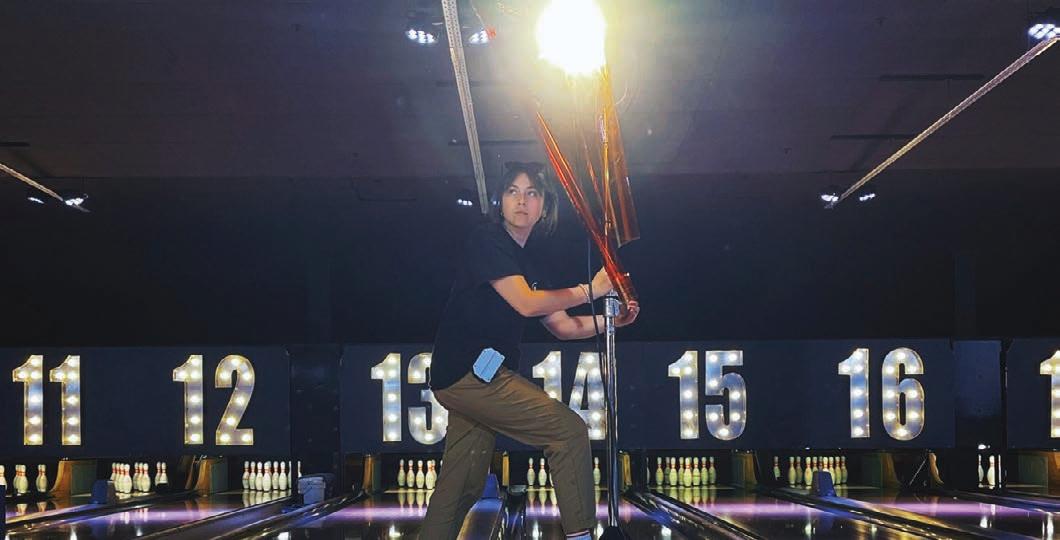
Faced with the reality of an on set environment dominated by men, women are able to find solidarity across their roles within the lighting department. Regardless of seniority, women are continuing to communicate with one another about their experiences and offer support in any way they can.
“We are our sisters’ keeper,” says Erin Nelligan, International Cinema Lighting Society (ICLS) board member and lighting console programmer whose credits include Star Trek Beyond and Netflix’s Extraction. Nelligan has considerable experience working in the camera and electrical department, and is a fine position to appreciate so share her experiences and knowledge.
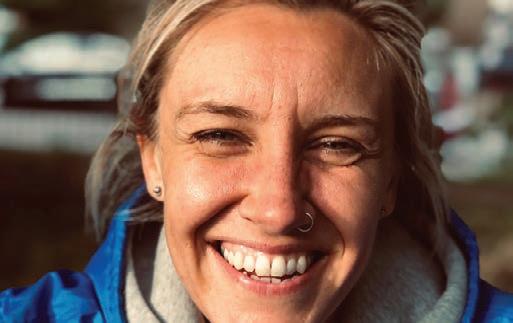
“Within the lighting department, there are more women learning about each other’s roles, how they can contribute, and what they can learn from one another,” she says. “That’s different to how it was in a previous era where those connections weren’t being made. Now I think we are seeing examples on screen of what can happen when you let different ideas in the room: Ultimately everything gets better.”
EMMA GOLDSMITH, LIGHTING TRAINEE AND SCREEN SKILLS ELECTRICAL TRAINEE PROGRAMME ALUMNI
What has your experience been like working in the lighting department?
I’ve been fortunate enough to work with so many sparks who are passionate about what they do and have fully supported and encouraged me to keep pushing on as it’s a steep learning curve at the start. Getting to know the basics such as kit, what it does and why you use it is a good grounding. There are so many roles within the department, so having a good all round understanding of everything will help you figure out if you want to specialise in a particular area. You could specialise in lighting desk, outdoor spark working with the big machines, chargehand/key floor spark, the list goes on. There isn’t one universal way of doing things either so learning a variety of ways to achieve the same outcome is great as you’ll be more versatile.
What training were you provided through the Screen Skills Electrical Trainee Programme?
With the programme you can choose the most appropriate courses to the type of work you’re doing, so for me I got my IPAF, Part P and 18th edition. On the job training is driven by you, so whatever you want to know, ask.
How did your opportunity to work on The Crown come about and what was that learning and working experience like?
A female spark put me in touch as the show was looking for a trainee. You get out of training what you put in. It’s that simple. Be inquisitive. You’ll never stop learning. Keeping an open mind to developing my current skills has definitely helped with my career progression. I love what I do and it has made the journey so much more enjoyable. I’ve spent a lot of time outside of my comfort zone and have grown to enjoy this as it pushes me to do great things.
112
Sanjoli Malani.
Emma Goldsmith.


MONGOLIA hoards of choice
“We are determined that Mongolia become a major new location for productions,” Nomin Chinbat, Mongolian minister of culture, told Variety at Cannes 2022. “For that, it is not sufficient simply to have an amazing variety of locations. We also need to be able to offer a meaningful incentive programme.”
The breadth of Mongolia’s location diversity is undeniable. Capital city Ulaanbaatar presents a blend of modern and traditional architecture with a variety of urban locations that could be used for filming, such as the National Museum of Mongolia and the Gandantegchinlen Monastery.
From extreme formations like Lake Hovsgol to the Gobi Desert filmmakers can capture some of the world's most unique and awe-inspiring landscapes. Used for season 14 of extreme competition show Survivor, the Gobi is a vast expanse of sand dunes, rocky outcrops, and oases that stretches across southern Mongolia and northern China.
From the Gobi desert to the Altai Mountains to the vast grasslands of the steppe, Mongolia has location diversity in spades. Combined with a production reimbursement worth up to 45%, the world’s largest landlocked country is rich with
lmmaking opportunity
Since launching a globally competitive tax incentive in 2021, Mongolian film production has been energised. The scheme offers qualifying film and television production a 30% base cash rebate which can be increased by 10% with the incorporation of Mongolian culture and heritage in the project and topped up by another 5% for using local crew and talent. It applies to projects with a minimum spend of USD500,000 and is operated by the Mongolian National Film Council, the country’s first official government film entity.
Los Angeles based producers Wendy Kram and Scott Rosenfelt (Mystic Pizza) are set to take full advantage of the impressive rebate for a new Genghis Khan feature written by Jay Liotta. Set in the 13th century and due to start filming at the end of 2023, Godsend will reportedly attempt to accurately portray the historical figure.

“The script conveys a side of Mongolian culture that has never been told by Hollywood and questions historical perceptions and prejudices,” Kram said in a statement. “When taking on a period piece it must have contemporary relevance, and this script does.”
But another biopic of the legendary Mongol warrior could beat it to screen. 1242: Gateway to the West (pictured above), a Hungarian-Mongolian-Australian and British co-production started principal photography last October in the country. The epic, directed by Péter Soós with actors Eric Roberts and Michael Ironside charts the rise and fall of the Mongol empire under Genghis Khan’s grandson Batu Khan.
LOCATION HIGHLIGHT
Khustain Nuruu National Park is a beautiful nature reserve located in the heart of Mongolia. The park, which spans over 50,000 hectares, is home to a unique array of flora and fauna, including the iconic Przewalski's horse.
Visitors to the park can enjoy stunning views of the surrounding mountains, hike through forests of larch and birch trees, and explore the crystal-clear waters of the nearby Tuul River. The park also offers a variety of cultural activities, including traditional horseback riding and visits to local nomadic communities.
The park's proximity to Ulaanbaatar makes it easily accessible for visiting. The infrastructure, including roads and accommodations, has also been developed to support tourism.
Overall, Khustain Nuruu National Park offers a combination of natural beauty, cultural richness, and accessibility.
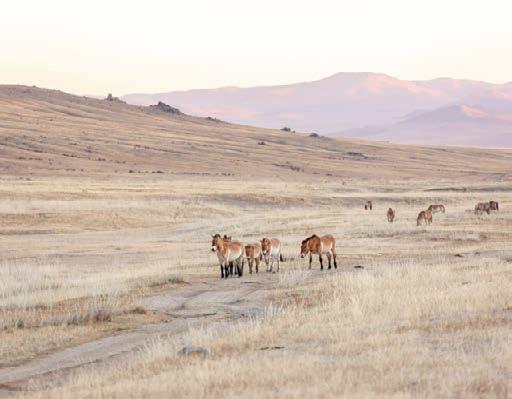
115
fi
“FROM MODERN CITYSCAPES OF ULAANBAATAR TO HISTORICALLY RICH COMMUNITIES AND OUT OF THIS WORLD EXTREME FORMATIONS LIKE LAKE HOVSGOL, MONGOLIA’S LOCATION DIVERSITY IS WAITING TO BE EXPLORED.”
How To Make Fire
Avatar 3, released December 2024, will feature a rival fire clan to the Na’vi called the Ash People. It surely won’t be surprising if the new film delivers the most spectacular on-screen conflagrations yet. makers asked VFX specialists about the history of this elemental effect and how easy it is to achieve.
Having solved “until the end of time” how to create computer generated aquatic environments for Avatar: The Way of Water and seen his sequel rocket to third on the all-time box office list, director James Cameron has decided to take on fire.
“When I started out a lot more fire was practical,” says Christian Manz, a VFX Supervisor whose more than two decades experience spans the entire Harry Potter franchise. “Now there’s a lot more simulated fire which has increased the complexity and realism of what we’re able to do.”

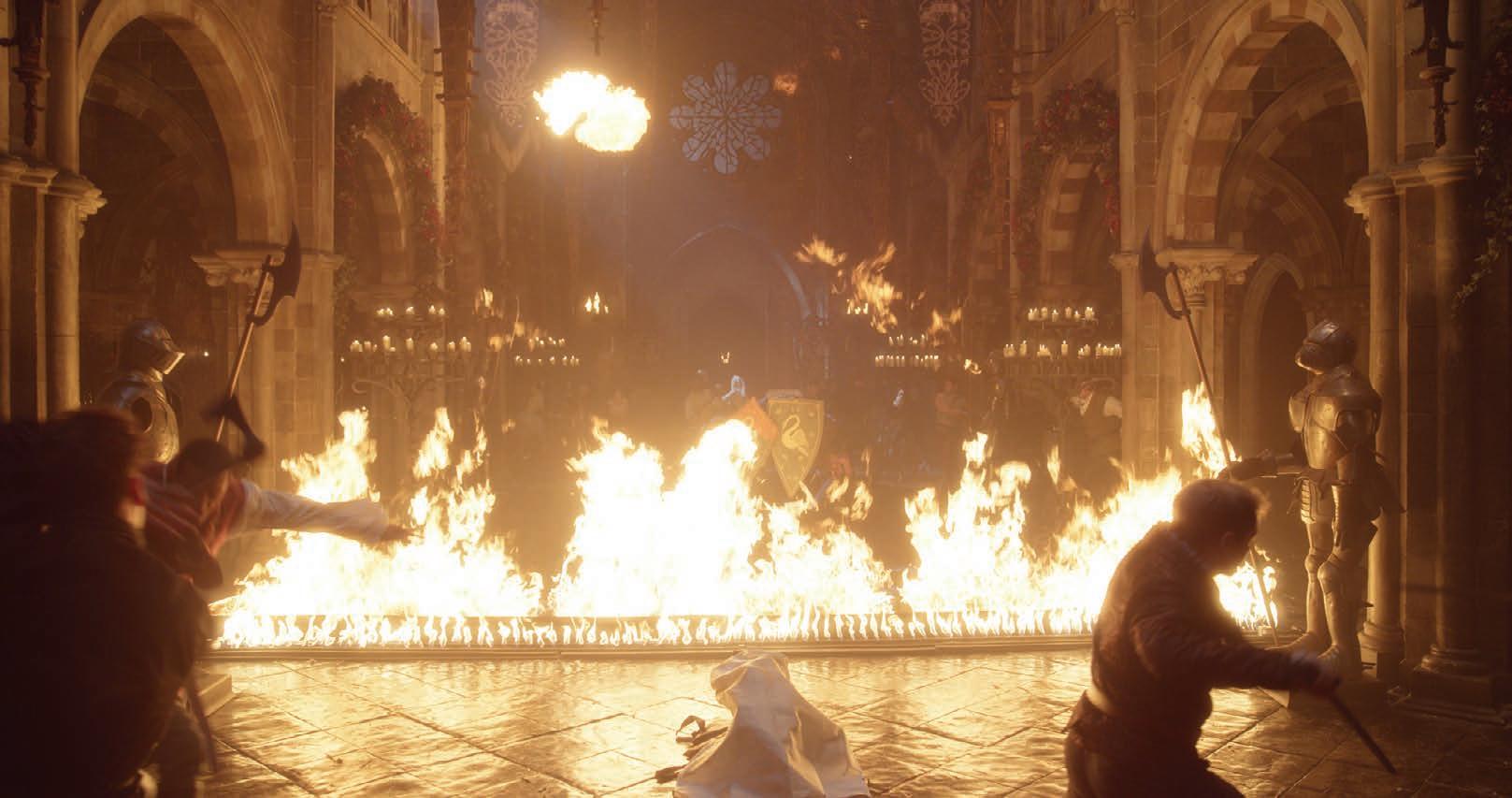
Nonetheless he says, “When I watch a scene like a burnt out house on fire I can tell whether the element that been created digitally or practically.”
“Fire was a lot harder even five years ago,” agrees Anelia Asparuhova, VFX Supervisor, DNEG. “Things have developed a lot. There’s a little bit of fire in every show now.”
116
The School for Good and Evil Courtesy of DNEG © Netflix.
ALWAYS REALISM
There are many reasons for choosing CG fire over the real thing. Aside from obvious safety reasons, you might not want to burn down your expensive set, let alone, say, St Paul’s Cathedral. Often though the starting point for VFX will be references filmed on set.
“During filming you’re shooting elements of fire, sparks or flames that you could then composite into images or stick to people,” says Manz. “Your starting point for everything in VFX is a realworld reference. A lit match is very different from a fireplace from a blazing house or an oil fire or a gas fire. Then it’s the skill of simulation. After years of elements shoot VFX facilities have a library of flames and explosions they can reuse again. You’ve got to play with all the parameters.”
Many scenes of action epic The Woman King were filmed at night and lit by flame torches. In one scene a whole camp is set on fire.

“We created an array of 16 different fire sims based on the geography of the scene and applied variations depending on the direction of wind, for example,” explains Dimitris Lekanis, head of FX at the film’s lead VFX vendor Milk. “The challenge here is that fire needed to work across a sequence and change frame by frame as the shots progress.

“Fire gets particularly challenging at scale,” he adds. “Wild fires, for example, or anywhere fire is an environmental effect rather than contained in a specific area.”
Just as tricky on occasion is having to create fire for a thing that doesn’t exist. If the script requires fire to emanate from an animated creature, for example, or fire behaviour that isn’t natural.
“You want to make the fire feel like its connected and sourced correctly,” says Manz. “On Fantastic Beasts we had a large-scale black fire which was not possible to shoot for real (or you shoot a miniature perhaps and colour grade it but this would lack authenticity).”
Fire is particularly tricky because it is essentially made of light and also because it is so familiar to everyone that whether invisible or a fantasy spectacular it has to be realistic to an audience’s eyes.
“We all know what a fire looks like but we don’t know what a Hippogriff looks like,” Manz says. “The aim is to get fire to the point where you believe it could be real.”
In Fantastic Beasts: The Secrets of Dumbledore, giant Manticors spit venom at walls melting them into a molten lava. Manz says, “Part of the reason we did that was that they only had lanterns in the scene and once they were smashed the scene would be completely black so we had to devise something that could create a threat and light up the plate again.”
“YOU BEGIN WITH REAL WORLD REFERENCES AND RESEARCH TECHNICAL WAYS OF ACHIEVING IT. A LOT IS GUESSWORK THEN CONTINUAL ITERATION.”
Framestore Montreal started with videos of molten lava, seeing how it cools on the surface how it breaks up the rock, its viscosity, heat distortion, sparks; “All those secondary details that convince you that is there.”
The way heat distorts the air is a key element. “I sometimes think that’s left out,” Manz says. “To bed fire into the sequence you need to see that heat distortion. If there’s a CG creature in the shot, VFX won’t want to also be creating heat distortion because it’s tricky.”
It’s not unusual for the VFX team to interpret how fantasy elements might look. The trick is that however fantastical, it must still look realistic.
“You begin with real world references and research technical ways of achieving it,” says Lekanis of a brief for BBC/Amazon fantasy comedy Good Omens that said simply: can you create a fire tornado? “A lot is guesswork then continual iteration.”
117
WE ALL KNOW WHAT A FIRE LOOKS LIKE BUT WE DON’T KNOW WHAT A HIPPOGRIFF LOOKS LIKE. THE AIM IS TO GET FIRE TO THE POINT WHERE YOU BELIEVE IT COULD BE REAL.
The Woman King © Sony Pictures Entertainment. STUNTS 47
AVATAR VFX
Ronin © Universal Studios.
1899 – A MANOR HOUSE ON FIRE
For Netflix drama 1899 DNEG created both internal and external fires for the manor house fire sequence. VFX Supervisor Chris Nokes explains:


“The plates for this sequence were shot in a field with a large light array that would trigger as the fire increased in volume. The manor house was based on a series of photo references selected by the client with some input from us on window shapes and sizes. We built the house in 3D, as we would eventually need to burn it down as well as show it in the after state later on. We also created an interior for the photographed elements of Nina and her mother to be placed in.
“The challenges we faced with the house itself were due to the surreal nature of the sequence. It’s a very direct and frontal view of the house and it’s situated in a field with none of the shrubbery, paths, fences, gates etc. that you might expect to find around a house. So, dressing it into the plate was a bit of trial and error.
“The interior fires that start it are a combination of shot elements and CG. Because of the rapid spread of the fire across only a few shots, each shot was a little different. For the last two shots it is almost entirely fire and smoke simulations along with the burnt CG asset. The key was to get the progression of the amount of fire and smoke right in the sequence, and then hone in on the character and lighting of the elements.”
For Netflix feature The School for Good and Evil, DNEG created a great wall of fire that stops the boys from the School for Good from closing in.
Asparuhova says, “We quadrupled the amount of practical fire with an FX simulation, and used comp tricks like heat distortion, flares and lens smudging to give this shot the feeling of a burning inferno. I remember sitting in the dark screening room when this suddenly came on screen and my instant reaction was ‘Wow! This looks HOT!’ – mission accomplished!”
Still, the best way is film fire is to film it for real. Game of Thrones set a world record for so-called practical burns during season seven’s Loot Train scene when stunt coordinator Rowley Irlam and his team set 20 stunt people on fire for a single shot.
“What you get from a person that you won’t get from VFX is a human performance,” says Rowley.
For practical fire, even just a few seconds on film takes a lot of prep. Stunts performers wear multiple layers of clothing soaked in flame retardant material called Zel Gel. The most extreme type of burn is one where they are fully engulfed in flame but the biggest risk isn’t burning their skin. It’s inhaling it.
“You need to be holding your breath so you don’t breathe in any kind of flame,” Rowley says. His team countdown loudly during the shot so the performers can hear. They remain on fire for no more than 15 seconds. “The key to making the scene convincing wasn’t the fire - it was the acting. We wanted to find the humanity of the situation.”
DOPs can light with flame bars and use atmospherics like smoke without damaging anything. LEDs are often used as lighting sources since they can be calibrated to the right colour and intensity to light actor and set.
Gas is also commonly used for safety and control. For an early scene set in a cafe in the second Fantastic Beasts, Grindleward warns Dumbledore that his world is about to burn down. Indeed, it does. The SFX team built a partial set and laid out gas tubes in between the tables and on cue (after experimenting with how much to turn the tap on) these were fired up to capture real flame in-camera near the actors “with real reaction from extras,” adds Manz.
In 47 Ronin, for a scene where the Ronin get caught amongst pyramid shaped haystacks SFX supervisor Paul Corbould constructed a metal tubing with wires for the straw which was all gas lit.
“You couldn’t stand near them they were so hot,” Manz recalls. “To all intents and purposes they looked like straw on fire but could be turned on and off for the next take.”
The next level up is when your lead actors have to be seen to be immersed in fire. It’s rarely done for obvious reasons but there are workarounds.
“Because every frame of fire changes shape it can be quite forgiving in some ways,” Manz says. “You can get away with a convincing enough CG fire on an actor as long as the base sim looks correct.”
No-one knows yet of course what role fire will play in Avatar 3. It could be in just a few scenes or it could be the environment for virtually the whole story. Let’s call it Avatar: The Way of Fire.
Asparuhova thinks it will be 90% VFX. “I don’t believe there are huge benefits of doing it in-camera because of the danger. In-camera stunts can be more about marketing than any creative intent.”
Even if VFX and real elements were used she expects to see an improvement in interactive lighting and how it might be combined with performance capture; “One of the biggest challenges is computation. Any kind of realistic sim would require a lot of CPU and memory.”
Lekanis says, “If budget is no issue you’d develop more advanced combustion models but I also think a lot of real fire elements will be filmed to provide a base for VFX.”
Fire is akin to fluid simulation so some of the laws of physics will be applied. Again, it’s the level of detail in the smoke and scattering of light that is considered most challenging.
Manz thinks that Cameron will want to make fire “utterly believable for a sustained period of time” and that this presents the greatest challenge.
“Explosions and torches are one thing but to create a fire world which the characters inhabit can take thousands of hours to process, especially with level of detail he would demand. It’s the detail we don’t even perceive that makes fire look real. They’d have to study new ways of rendering, as they did for rendering wavelengths of light in water.”
Then there’s the higher than conventional frame rate of Avatar. “24fps does help VFX because it’s not how humans see things but as soon as you go to 48fps it’s a whole other level of visual fidelity.”
Not to mention its stereo 3D presentation. “Toughest of all would be creating a believable volume for the heat distortion,” says Manz. “There’s a risk the image could be flattened without volume. They’d have to investigate how to give fire depth.”
118
FANTASY FIRE SFX
“THE KEY TO MAKING THE SCENE CONVINCING WASN’T THE FIRE - IT WAS THE ACTING.”
1899 Courtesy of DNEG © Netflix.


119
Making of Cartier Tank


PUBLICIS LUXE SPRINKLES THE MINUTE-LONG BLOCKBUSTER WITH GALLIC STARDUST
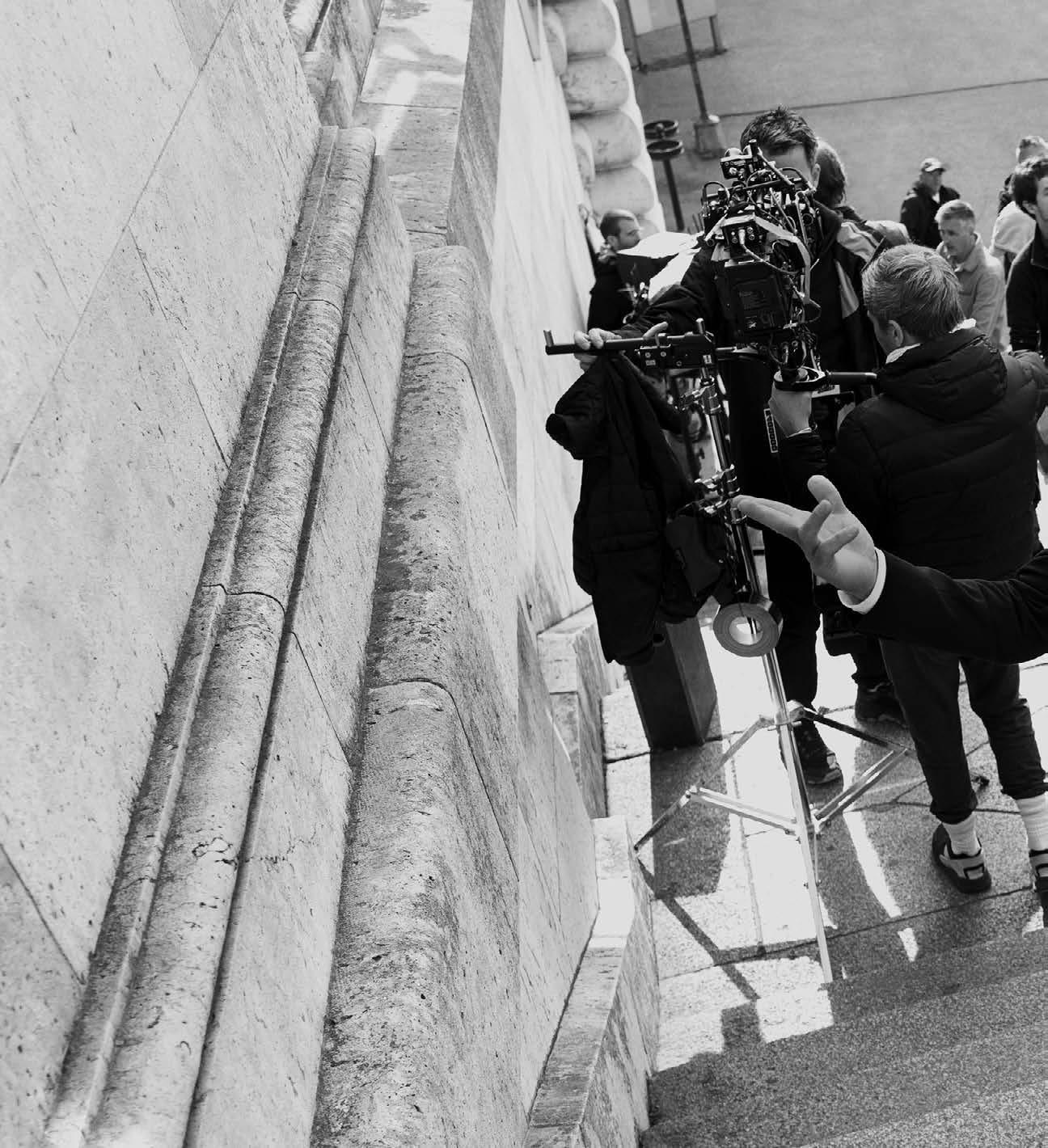
120
Originally launched 27 years ago in 1996, the Tank Française timepiece by Cartier has been given a facelift with a special campaign that enlists French legend Catherine Deneuve and Oscar winning Rami Malek.
The work of Paris-based creative agency Publicis Luxe, the spot is directed by Guy Ritchie and takes place on the Alexandre III bridge in Paris.

Ritchie described the spot as “a fantasy of crossing from one side of the bridge to the other, which is a sort of metaphorical bridge in time.”
The sleight of hand was in recreating Deneuve (now aged 79) in eight shots at four different periods of her life, each inspired by her filmography including Les Parapluies de Cherbourg and Place Vendôme.
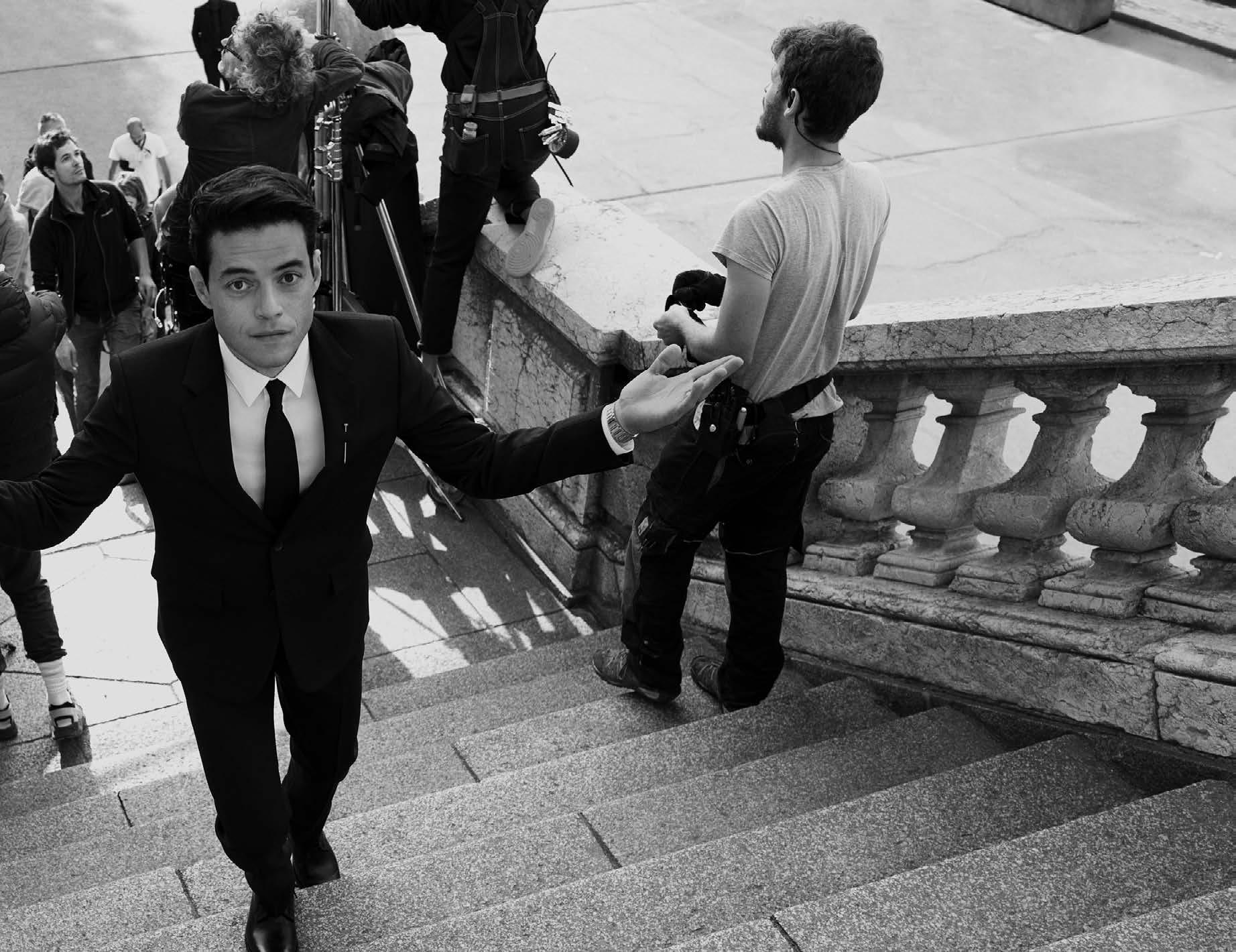

That task fell to The Mill and required artists to combine AI with traditional CG techniques.
Stéphane Pivron, VFX Supervisor at The Mill, explained, “About 15 years ago, I worked on a Dior film where we remade the faces of Marilyn Monroe, Grace Kelly and Marlene Dietrich. From modelling to rendering we used a fully CG process at the time.
[It was] convincing, but lacked a bit of life. That's why, on this project, we turned to AI from the start.”
“The second challenge was that the sources we had access to were not necessarily in high definition and sometimes the image was very grainy. That's why we developed a specific pipe for this project, where the CG relies on the life generated by the AI to improve its quality, and to take over when it was no longer efficient. We were able to test the faces in AI very early on, and to make sometimes complicated choices between physical resemblance and acting similarities.”
121
Images courtesy of Publicis Luxe.
How To Make A Viral Hit
At a time where streaming makes new music so accessible, how are artists standing out from their peers? As music industry newcomers battle to top playlists, their social media presence and viral popularity becomes more and more of a prevalent factor in the strive for stardom and financial reward.
From choreographies that dare you to learn a few steps to captivating narratives that give a track a new lease of life, music videos have been visually stimulating accomplices to catchy chart toppers for decades. But even as broadcast television stalwarts like Top of the Pops and 106 & Park have passed out of favour, music videos still reign supreme. Pop promos are the most viewed category on YouTube with some two billion people visiting the site to consume music video content each month. More recently, social media channels from Twitter to TikTok offer new channels for artists to reach their fans.
“It’s more important than ever to have a unique visual to help an artist stand out,” says Tom Krol of music videographer team Double or Nothing (DON) Productions. Along with Krol’s childhood
friend Jack Milward, DON has helped create pop videos for some of the top UK rap artists including Headie One, and Krept and Konan.
Social media can be a gateway for new artists by cutting out the traditional A&R person and record label – but it does mean that with so many wannabe Ed Sheerans fighting for attention their visual presence has to stand out. When it does, it can increase not just streams or downloads of the particular song but give the artist’s brand an international stage.
This is certainly the case for AntsLive. The 23-yearold London born rap artist hooked seven million TikTok users by just dropping one video clip to accompany the track Number One Candidate. It’s all down to the surreal spectacle of AntsLive’s horse

122
Tom Kral shooting UK rap artist Digga D's video for Stay Inside © Double or Nothing Productions.
riding amongst the picturesque Dolomite mountains. Having been shared on Insta by KSI and Mia Khalifa, clips of the video have galloped across social media.

It was conceived by director Tom Emmerson and captured on vibrant 16mm colour film by DP Isaac Eastgate. That’s rare, and even perverse, when the viewing screen for most people is likely to be on a mobile phone.
“Social media is the new vernacular” for young and upcoming artists, according to Jonathan Kuuskoski chair of the entrepreneurship and leadership at University of Michigan (interviewed by Forbes). Artists enter into the music scene already carrying a knowledge of the platforms’ abilities to influence audience engagement.
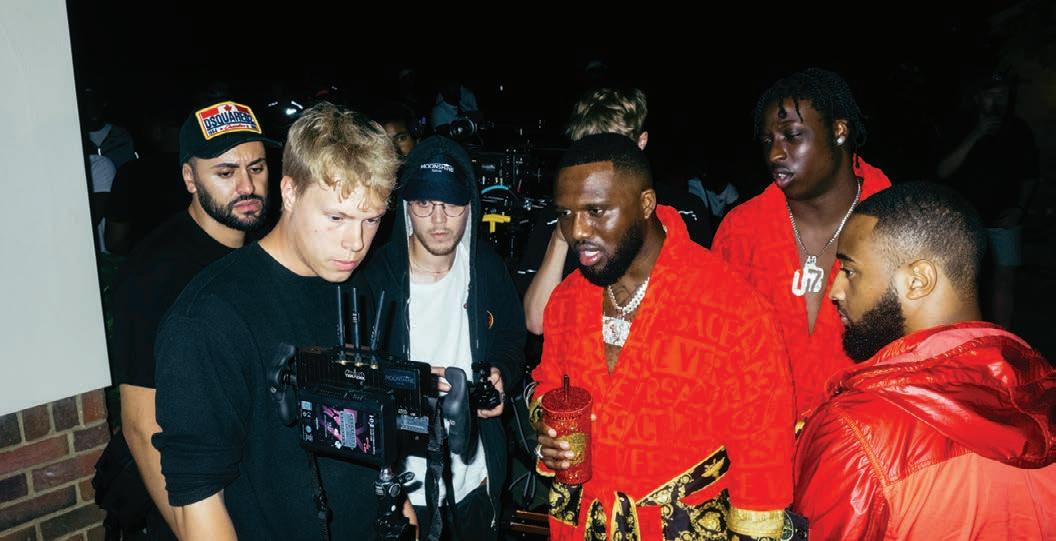
Social media is nothing new in the music industry. Artists have been using multiple platforms for promoting their works for years. For this new generation of creatives, both behind and in front of the camera, social media is second nature. What is new is that posts and reels have now become less of a rigid marketing tactic and more of an immediate, unfiltered extension of their work.
“The beautiful thing about social media is that it allows people to share my work around with the click of a few buttons,” commented music video director Mark Jones.
The scrolling user experience on social media is a draw for all users. Even music streaming giants like Spotify are having their own try at it. Launching the TikTok-like interface Spotify StreamOn in March, the music streaming service is giving its 205 million subscribers a closer look into their listening favourites and the opportunity to discover new artists.
As Spotify co-president and CTO Gustav Söderström put it, Spotify is giving creators the chance to “reduce the distance between their art and the people who love it.”
Social media popularity and streaming numbers go hand in hand at times, giving established artists and those who already dominate the platforms an advantage. While new artists are exploring all avenues of creativity to stand out from the crowd, long time fan favourites are also taking advantage of the new music marketing tactics.
With 600,000 YouTube shorts, and 4.7 million TikTok videos making use of her catchy song and causing a boost in the sale of flowers across the world, Miley Cyrus’ Flowers exemplifies the multidimensional impact of intentional content creation and its ricochet effect on the rest of popular culture.
“SOCIAL MEDIA IS A GATEWAY TO NEW ARTISTS AND GIVES MUSICIANS A NEW ANGLE TO FLAUNT THEIR VISUAL PRESENCE IN THE MUSIC SCENE.”
The song has been clipped up by creators on TikTok, Facebook Reels and YouTube Shorts. On Shorts in particular the song's chorus sound bite has appeared in 600,000 individual Shorts, some of which have been viewed 40 million times.
The song appears primed for this type of viral mashup and dissemination. Perhaps deliberately so. Did Miley Cyrus structure the song in such a way that it encouraged creators to express themselves by sharing versions of it?
Already a global icon, Cryrus is at an advantage. No longer fighting for radio air time, artists pushing for prominence on social media are competing with their music and visuals alike. They are also competing against the opaque algorithms that govern which post gets amplified online. While the democratisation of video creation tools and publishing platforms is a boon for many new artists, others will find it just as much of a challenge to get recognised for their work as before.
123
AT A TIME WHEN SOCIAL MEDIA IS THE NEW VERNACULAR FOR YOUNG AND UPCOMING ARTISTS, THEY ENTER INTO THE MUSIC SCENE ALREADY CARRYING A KNOWLEDGE OF THESE PLATFORMS’ ABILITY TO INFLUENCE AUDIENCE ENGAGEMENT.
Jack Milward & UK rap artist Headie One look over footage © Double or Nothing Productions.
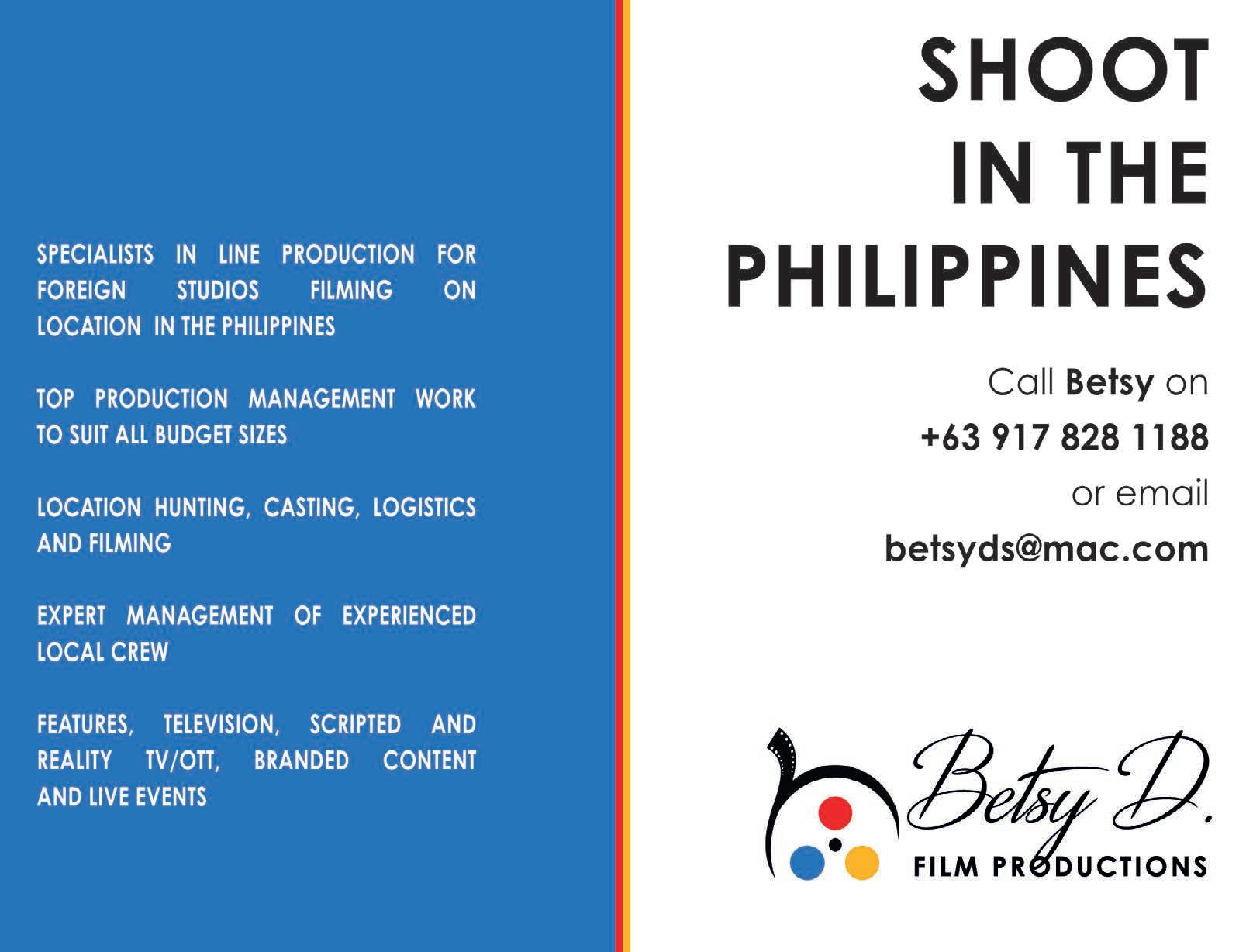

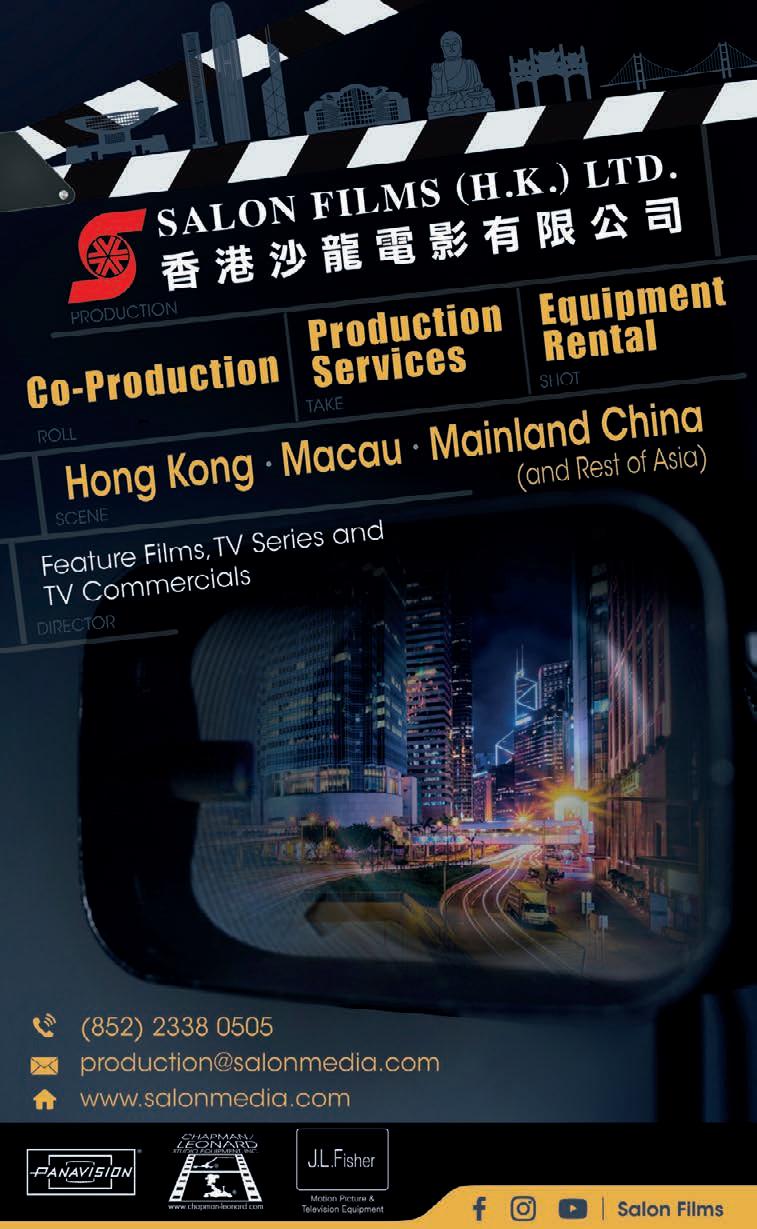
124
PHILIPPINES a special blend
“As an archipelagic state, Filipinos take pride in the terrain as the country boasts a stretch of locations spanning sprawling panoramic sceneries to Baroqueperiod buildings,” the FDCP states. The agency also oversees location assistance specialist Film Philippines Office, and Film Location Engagement Desk (FLEX), which supports all areas of production, governmental processes and services.
Philippines-based BlackOps Studios Asia and Manila-based ABS-CBN are producing scripted crime drama Sellblock, helmed by director Pedring Lopez, known for his work on Netflix’s Maria, Dark Room and Geisha of Death and starring homegrown leading man Jericho Rosales. Sales and distribution is represented by US-based Blue Fox Entertainment. CMB Films, one of the largest production equipment providers in SEAsia, is also onboard as is Hollywood producer Scott Rosenfelt (Home Alone).
From the pristine beaches of Palawan to the city of Manila which offers a unique mix of modern skyscrapers and baroque Spanish colonial architecture, the archipelagic state offers filmmakers an exotic setting for any type of project.
Netflix is set to spend USD1.9 billion on local content in the Asia-Pacific region this year, a 15% hike on 2022, and while South Korea and Japan are major beneficiaries, the Philippines isn’t losing out.
Filmed in Valenzuela, Bulacan and Quezon City, Lorcan Finnegan’s Netflix project Nocebo was set in the Philippines. The Irish/Filipino co-production was supported by Film Philippines with funding support just shy of USD100,000.
It's an example of how more television and film projects are being attracted to shoot in the South East Asian archipelago. In addition to a 20% cash rebate through the Film Location Incentive Program (FLIP), the Film Development Council of the Philippines (FDCP) has other initiatives to woo filmmakers.

“ NETFLIX IS SET TO SPEND USD1.9 BILLION ON LOCAL CONTENT IN THE ASIAPACIFIC REGION THIS YEAR, AND WHILE SOUTH KOREA AND JAPAN ARE MAJOR BENEFICIARIES, THE PHILIPPINES ISN’T LOSING OUT.”
UniPhilippines, a programme that rewards the overseas distribution of Philippines films up to USD8000, was launched last year. Recognising the challenge of distributing its films internationally, the FDCP aims to amplify and provide support for those willing to take the chance on Filipino films.
This is on top of the ASEAN Co-Production Fund (ACOF) which provides grants of up to USD150,000 to feature films that hail from the region covered by the Association of South East Asian Nations.
The FDCP has also launched CreatePHFilms, a production fund worth USD600,000 that supports local films from script through distribution.
LOCATION HIGHLIGHT
Featured as Thanos’ final resting place at the end of Marvel’s Avengers: Infinity War, the Banaue Rice Terraces, located in the northern Philippines, are a stunning example of human ingenuity and skill in agricultural land use. These UNESCO recognised terraces were carved into the steep mountainsides by the Ifugao people over 2,000 years ago using simple hand tools and no machinery. The terraces are still in use today and are considered an important cultural landscape that reflects the harmony between humans and the environment.
Covering over 4,000 square miles, the terraces that cascade down the mountainsides were built to enable the cultivation of rice, which is the staple food of the Ifugao people. The terraces are irrigated using an ancient system of channels and bamboo pipes that bring water from nearby springs and streams.

125

Bigger and Better Than Ever
THE MAKERS & SHAKERS AWARDS 2022 UNDERSCORED THE GRASSROOTS HEALTH OF THE CREATIVE INDUSTRIES FROM BHUTAN TO OKLAHOMA
The winners for the 2022’s makers & shakers Awards, in partnership with Radisson Hotels Group, revealed the depth of innovation and creative ambition across the creative industries.
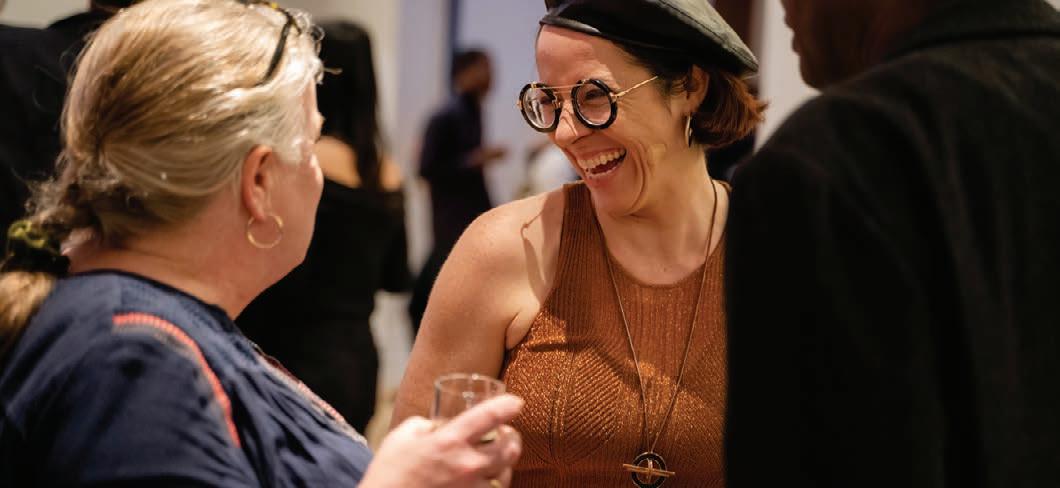


They represented trailblazers from all over the world who are pushing the boundaries of the global screen industries through innovation, sustainability, diversity and technology.
Returning once again to BAFTA Piccadilly the ceremony last December was supported by NEOM, St Pete Clearwater Film Commission, Pholex Ecopower and First Poly Productions.
After a lengthy and in-depth judging process, the awards revealed the winners of the seven categories, including new category Maker of the Year.
IN PARTNERSHIP WITH
127
IT HAS BEEN AN AMAZING EXPERIENCE TO WITNESS THE IMAGINATIVE PROJECTS FROM THE ENTRANTS AND THEIR DEDICATION TO CHAMPIONING THE GLOBAL SCREEN INDUSTRY.
Hosted by comedian Darren Griffiths, audiences remained thoroughly entertained between the announcements.
Cherokee Nation Film Office took home the first award of the night for Film Commission initiative of the Year, applauded for their display of a thorough, transferable and important approach to growth of Oklahoma’s film and television industry.
Next up was Samuh Mediatech, Bhutan’s first OTT platform, winning the award for Initiative to Grow Local Industry and showing the possibilities that can be achieved no matter where in the world.
The third award of the evening was given to Maria O’Connor, supervising location manager and team for Disney’s Disenchanted. The judges applauded the management of such a massive undertaking and the ability to keep on top of the busy work environment.

Highly commended entries for Outstanding Creative Use of a Location were Cuando llegue la tormenta by Trex Exploring and Heartwake Films and Filmuniversity Babelsberg’s production of We Might As Well Be Dead which are both featured in this issue.
Copenhagen Industries took home the award for Production Tech Innovation for providing an urgently needed solution in the industry by finding the first viable alternative to firing blank weapons (see profile on page 103).
Awarded for their game changing and innovative solutions for environmental consciousness in production, Vectar Project took home the Sustainability award with Circular Arts Network and Creative Zero both highly commended.
Producer Jules Hussey was awarded the recognition as Maker of the Year for her inspiring can do attitude and dedication to working on inclusivity in all aspects of the industry. Pioneering leader, mentor, volunteer and mental health children’s author, Kim Rowell was highly commended.
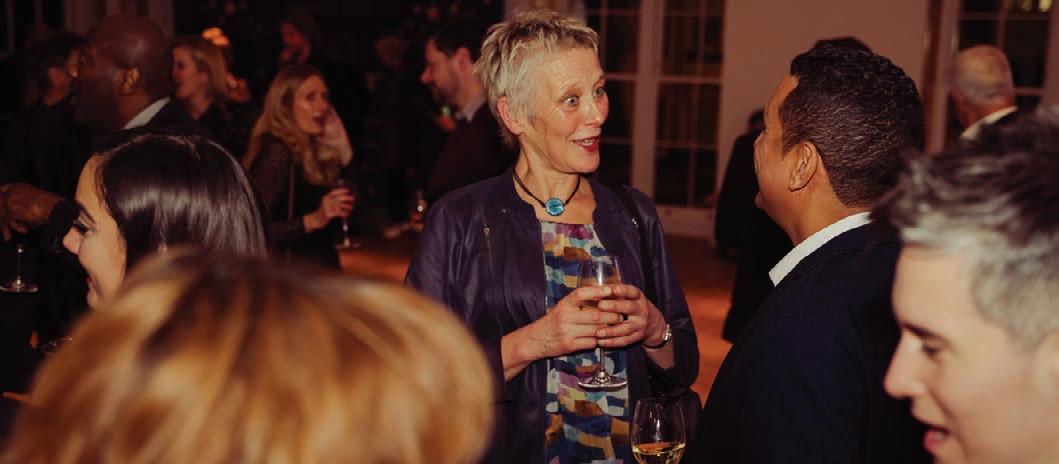
The final award of the night for the Shaker of the Year was won by an absolute powerhouse, as regarded by the judges. 6ft From the Spotlight were praised for their commitment to starting the necessary conversations and introducing practical industry tools aimed at prioritising mental health in production environments.
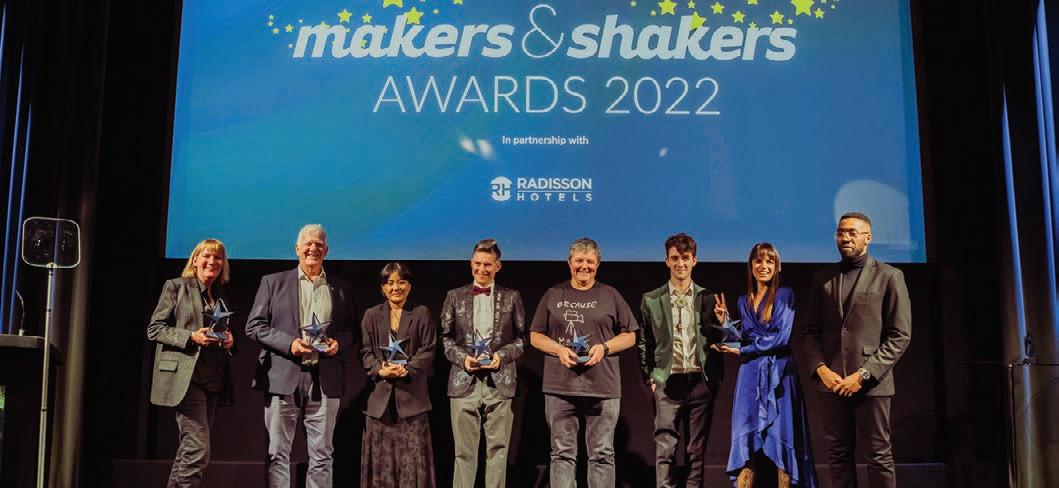
“The quality of the work submitted this year was exceptional and the judges found it extremely difficult to select winners hence why there are several highly commended projects and entrants,” said The Location Guide’s managing director Jean-Frédéric Garcia. “The best of the best were those breaking the creative and innovative boundaries. It has been an amazing experience to witness the imaginative projects from all the entrants and their dedication to championing the global screen industry. Thank you to our sponsors and congratulations to everyone.”
“THE QUALITY OF THE WORK SUBMITTED WAS EXCEPTIONAL AND THE JUDGES FOUND IT EXTREMELY DIFFICULT TO SELECT WINNERS HENCE WHY THERE ARE SEVERAL HIGHLY COMMENDED PROJECTS AND ENTRANTS.”
128

If TikTok Dies
TIKTOK IS THE MOST INFLUENTIAL SOCIAL VIDEO APP ON THE PLANET. WHAT HAPPENS IF IT’S BANNED?
As unlikely as it may seem, the noose is tightening around Chinese-owned social media phenomenon TikTok. Were it to be outlawed in the West, what impact would this have on the short form video creator community?

With north of one billion monthly users and annual revenue in excess of USD10 billion plus a reach which touches virtually every aspect of business and culture, TikTok is the most influential social video app on the planet.
Yet it could be switched off in the Western world as concerns mount about user data flowing back to Beijing. Pressure is particularly acute in the US as it enters the presidential election cycle and where government divisions, 19 states and dozens of college campuses have already outlawed its use. “TikTok is under scrutiny for good reason, but it's not a foregone conclusion that it's terminal,” says Tom Morrod, Co-founder, Caretta Research. “It seems likely that there will be some limitations imposed in the US and Europe, but there may be a couple of reasonable steps that TikTok can take to avoid being banned outright. The platform could either form under new ownership in the US and Europe, or accept more regulation of data flows and privacy.”
Guillermo Dvorak, Head of Digital at media and behavioural planning agency Total Media says if TikTok were to either haemorrhage users or be
outright banned, the impact on the creator community would be devastating.
“TikTok has been a huge boon to aspiring creators of all ages and backgrounds. It has provided a platform for them to share their stories, express themselves creatively, and connect with like-minded people around the world. For many, TikTok was an opportunity to find their voice for the first time. If TikTok were to disappear, or if it were forced to change its format so drastically that it became unrecognisable from its current incarnation, it would be a huge loss for creators.”
WHO STANDS TO GAIN?
There are certainly no shortage of companies that would seek to capitalise on the market for short-form video if TikTok were squeezed out.
Snapchat, Meta and YouTube all launched or doubled down on short form video to counter TikTok’s success. YouTube Shorts just surpassed 50 billion daily views, up from 30 billion a year ago. Twitter could revitalise Vine. Others include French snap sharing site BeReal and Triller, a music based social platform.
130
“There is no obvious alternative right now because it requires a particular configuration of audience, content and algorithmic management in order to make it work properly,” says Morrod. “Some good marketing and investing in key influencers could result in any number of companies becoming the new home for that audience, but it's likely to consolidate on a single platform.
“Even if other platforms do manage to get the content right (more user-generated rather than episodic) and invest in an appropriate algorithm hey still might not have the right audience (seemingly, 'kids').”
Meta’s launched Reels onto Facebook, growing it to more than 140 billion plays a day. However, Amy Gilbert, Head of Social at London-based social media agency The Social Element says, Meta hasn't yet found a way to connect with younger consumers. “Given their focus on the Metaverse, Reels seems like more of a necessary evil for them rather than a pillar of what the platform stands for.”
She believes the biggest challenge is recreating the unique algorithm and vibrant community that has made TikTok a household name.
“Despite Reels' algorithmic features, they still fall short in delivering content that truly resonates with users,” she says. “The short-form algorithms on platforms like Snapchat and Pinterest often feel too formulaic. Instagram does a slightly better job at balancing a mix of creators and friends, but nothing can match the personalisation offered by TikTok.”
Dvorak thinks the biggest winner would be YouTube. “While TikTok has been on top, YouTube's share of video views has dwindled. But [if TikTok folds] it may be able to gain back some of its lost market share. The biggest losers are probably the creators who make content on TikTok – they
may have to seek new platforms to distribute their content on if they don't want to lose out on all that sweet, sweet ad revenue.”
CREATORS ARE ALREADY DIVERSIFYING
The creator community is both resilient and resourceful. They've figured out how to diversify their income by being on other platforms, creating merchandise and partnerships, and even setting up shops on Amazon.
“THE BIGGEST LOSERS ARE THE TIKTOK CREATORS WHO MAY HAVE TO SEEK NEW PLATFORMS TO DISTRIBUTE THEIR CONTENT ON IF THEY DON'T WANT TO LOSE OUT ON ALL THAT SWEET, SWEET AD REVENUE.”
For that reason, Gilbert says the biggest loss [of no TikTok] would be for the rest of us. “The departure of TikTok would be a significant blow to the social media community and the unique atmosphere that makes it so special. It fills a void that other imitators aren’t able to do. Its algorithm helps bring new voices to the spotlight and keeps the internet fun. If TikTok goes away, we'll miss out on that social experience we want to be having and our ability to discover and connect with others because nobody does it better.”
While the drive for innovation may remain, the absence of TikTok would create a void that other platforms would vie to fill with a captive audience.
“A ban on TikTok could bring about the birth of a new generation of short-form video platforms, ones that learn from TikTok's success and bring something fresh to the table,” she says. “Regardless, a ban on TikTok in the US would be a game-changer for the future of short-form videos and could have ripple effects throughout the tech industry.”
CREATORS

131
GIVEN META’S FOCUS ON THE METAVERSE, REELS SEEMS LIKE MORE OF A NECESSARY EVIL RATHER THAN A PILLAR OF WHAT THE PLATFORM STANDS FOR.
META TIKTOK
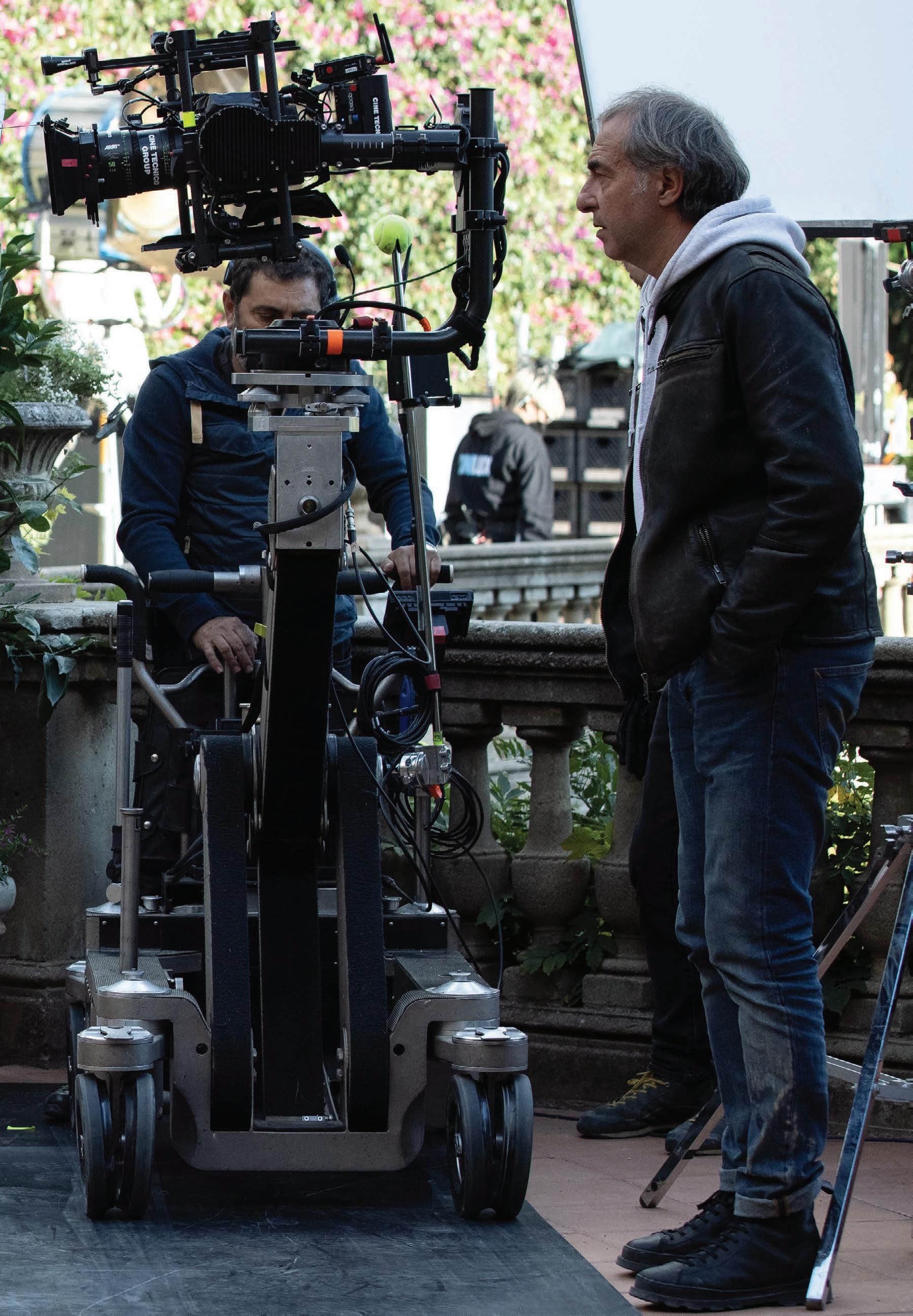
interview with Xavi Gimenez
Spanish cinematographer Xavi Gimenez was born in Barcelona in 1970 and began assisting the photography on Bigas Luna directed films Golden Balls, starring Javier Bardem, and The Tit and the Moon. He gained solo DoP credits on horror movies such as Intacto before making his breakthrough with The Machinist, the 2004 psychological thriller for which Christian Bale famously shed 62 pounds of bodyweight. He lensed the thriller Transsiberian for Machinist director Brad Anderson starring Woody Harrelson and shot episodes of Sky’s gothic horror series Penny Dreadful, executive produced by Sam Mendes. His latest collaboration is with Neil Jordan on Marlowe, starring Liam Neeson as the latest incarnation of Raymond Chandler’s hardboiled gumshoe. Though set in 1940s Los Angeles, the production was mostly shot in Barcelona, with interiors in Dublin, and used Ridley Scott’s Blade Runner as a creative reference.
MAKERS MAG
What creative look did you and Neil Jordan bring to Marlowe?
I had two different concepts. We decided to create a constant colour as if it were our black and white. I used this particular yellow because in my imagination yellow has a connection with jazz and jazz has a connection with the warring gangs of 1920s to 1940s. Our second concept was
to create a feeling of ambient heat and humidity. We achieve this by over exposing the day exteriors a little more than normal and used filament bulbs to which we added a yellow tint.
Neil Jordan says your use of colour in this film almost felt like using a weapon.
In reality, in the ‘30s, colour neon signs became part of the cityscape. More than that, we decided to use the intensity of the Barcelona light, the colours and strips of neon to create a heightened version of a noir film.
He also cited Blade Runner as a reference?
It’s a classic American colour noir but its lighting was more neurotic and electric than we needed. As if you go to LA there is nothing of that period left. Neil has said, we were making something sort of hyper-real. We had to invent an imaginary city. That was our challenge rather than trying to approximate a noir aesthetic.
Why does Barcelona work so well as a noir location?
Barcelona has an extreme dark side. At the beginning of the 20th century there was a lot of anarchism with guns and gangsters in the street. This culminated in the Spanish Civil War (1936-39) and the rise of Franco. I shot many horror films and psychological thrillers in the city. I think Barcelona can perfectly match noir.
How did you get into filmmaking?
I went to film school in Barcelona in the late 1980s to study sound. I never thought I could be a DoP. At that time I didn’t even know about credits or that there was such a profession as DoP. One time I asked, in the middle of class, who films the pictures? Then I learned about the director of photography and began to get really obsessed about it.
What was it that you became obsessed with?
Cinematography is a drug. Cinematographers are absolutely in shock about light and how it is possible to manage and train it, how you can understand it as a raw material. I was shocked and impressed by the idea that it is possible to create emotions with light.
Did you work your way up from assistant to DoP?
I realised that the conventional route was impossible for me because my head doesn’t work like this. Focus pulling for example is extremely precise work and my soul doesn’t work in this manner. I live too much in abstraction. A friend of mine gave me a book, The Peter Principal by Laurence J Peter which talked about the straitjackets of hierarchies and promotion. I realised I had to jump to be DoP.
Many DoPs take still images of anything that catches their eye. Do you?
All the time. I carry a digital camera everywhere. I try to explain to film students that you have to be DoP 24 hrs a day. You have to study every day to discover new forms of light that you might find in the street. Like a dancer you have to be training every day, learning and investigating. It’s not just a technical process. The difficult thing is capturing the connection between lighting and emotion.
Do you prefer to operate camera or monitor with the director?
I am torn. I love to work as camera operator but sometimes the movie is too big and doesn’t permit this. It’s most important to be side by side with the director but at the same time I feel the actor doesn’t have quite the same reference to the frame of the camera if you are not with them. It is important as a cinematographer to understand the actor at work.
Who are your heroes of cinema?
Many, many. Among them: Italian cinematographer Pasquale De Santis (Death In Venice); Emmanuel Lubezki (Gravity) and Roger Deakins (Empire of Light). The feel of emotion of Deakins’ lighting is amazing. I can only aspire to reach his level.
Image courtesy of Open Road.
133 CINEMATOGRAPHY MARLOWE LIGHT
Love the Island
European films and TV series, like Channel 5’s Love Rat, are swooping into Cyprus, drawn in by the enticing 40% incentive and mediterranean climate.

Chris Evans reports
We got to shoot at the hotels, bars, restaurants and beaches of Ayia Napa in sunshine without a problem, accessed the impressive 40% incentive and even doubled Cyprus for the UK.”
These are the enthusiastic words of Andy Morgan, executive producer at UK outfit Clapperboard, who shot the escapist fantasy turned psychological thriller series, Love Rat, for Channel 5 in Cyprus at the end of 2022.
Directed by Katherine Churcher (Killing Eve) and based on Polly Buckle’s script, the four-part series about a recently divorced woman, Emma (Sally Lindsay), who has a whirlwind holiday romance with a charming hotel proprietor, Niko (Alexis Georgoulis), in Cyprus, only to be scammed out of her money and so reeks revenge, was originally due to be set in Turkey.
“But we needed somewhere more practical and financially viable to shoot. So we turned to Cyprus, where we knew of the local production service outfit Green Olive Films, and the 40% incentive was incredibly hard to sniff at,” says Morgan, who is executive producing the series alongside his partner Mike Benson at Clapperboard with Jonathan Philips as producer.
The cash rebate programme is one of the most generous in Europe as it provides up to 40% cash back for expenses incurred in Cyprus. Productions just need to collaborate with a local production company and hire at least seven local (EU or Cypriot) crew members.
Mediterranean Fever © First Hand Films.
“In addition, the rebate is across the board of the budget and is probably the only one in the European continent which provides rebate on the so called above the line expenses,” says Lefteris S. Eleftheriou, director, head of filming at Invest Cyprus, which administers the incentive.
A huge variety of projects have chosen to come to Cyprus recently and access the incentive (and utilise the support of Invest Cyprus), including the Cannes award-winning, multi co-production (Palestine-Germany-France-Cyprus-Qatar) film Mediterranean Fever, horror movie The Ghost of Monday and the musical comedy The Islander, starring Harry Connick Jr. As well as several television shows including the Hungarian Love Island, E4’s Celebs go Dating, and French series Tikkoun.
STUNNING LOCATIONS
They were also drawn in by the impressive variety of locations, including Byzantine and Ottoman buildings, forests, snow-capped mountains, sandy and rocky beaches, picturesque villages and modern cityscapes.
Billed as a natural film studio, Cyprus has a rich cultural history which is reflected in the hundreds of archaeological sites scattered throughout the island, including an ancient Odeon in Paphos, Kolossi Castle and the Apollo Hylates temple.
The landscapes can also change depending on the season and easily double for other countries. In winter, there’s lush green valleys and fields that can double for Switzerland, but which turn yellow in the summer, while Mediterranean Fever chose
134
Cyprus for its landscape similarity and geographical proximity to Israel where the film is set.
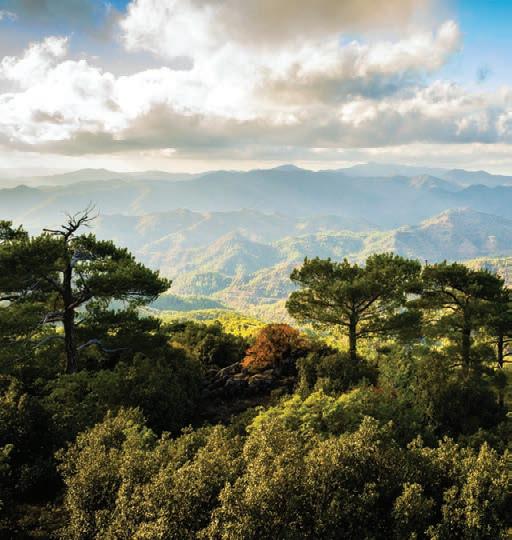
Due to its small size, all of the locations can be accessed quickly and easily. “Producers may choose to shoot on the snow covered mountains in January and then drive 45 minutes to find themselves on our sandy beaches in the sun,” says Eleftheriou, who also points to the island’s year-round sunshine as a key selling point.
Aside from natural locations, Cyprus is also expanding its urban settings. The city of Limassol on the southern coast is proving particularly popular for shoots having recently built a luxury marina with 650 berths for yachts, high-end restaurants, villas and shops. Plus there are some striking skyscrapers rising up on the coastline.
Many projects choose to take advantage of both the natural and urban locations. For example, the US-Cyprus co-production The Islander shot in the region of Peyia, boasting stunning bays and lagoons, and in the capital city of Nicosia.

While Love Rat shot in Ayia Napa, one of the most popular filming (and tourist) locations, combining cityscapes with beautiful beaches, across the months of October and November in the Nissi Beach Resort and the high-end Greco Palace.
“We were shooting off-season so a large part of the tourist zone was empty and places were closed, which made it a lot easier to film, and we still had sunshine. We didn’t have to do a lot of crowd control, even on the beaches. There were just a couple of ADs in shorts and t-shirts asking people to avoid the cameras, and we only needed to bring in a handful of extras,” says Morgan.
They used the Greco hotel for a variety of locations, including an airport departures lounge, and another nearby hotel as a production base, which housed offices and hair and make-up.
The production team even managed to cheat the UK in Cyprus. “Emma’s meant to live in Derbyshire, so we used helicopter wide stock footage of the county, and then the next scene we’re in Emma’s flat there, although it’s actually an apartment in Ayia Napa dressed to look British with Tetley’s tea bags,” laughs Morgan. “Fortunately, in Cyprus they also drive on the left, so backgrounds were easier.”
Getting permits to shoot at the various locations (hotels, bars and restaurants) also proved to be easy in the most part. “Although filming in the police station was tricky because it was in use,” says Morgan.
QUALITY CREW AND LOW COSTS
Morgan is grateful for the support provided by local outfit Green Olive films who helped them access the incentive and find the production base, equipment and local crew.
“Everything was set up from the moment we arrived. Dionysios [Manganis, partner] and Costas [Pitsilides, producer] from Green Olive were integral to the show.”
Aside from the key heads of department from the UK, most of their team were locals who did a great job. “Although because there were a few other productions happening at the same time, the Cypriot crew got swallowed up, so we also brought in some Hungarian crew who we’d worked with before. But the multi-national crew all got along well.”
Projects that need to bring crew in from elsewhere can potentially acquire work permits for them within a week with the support of Invest Cyprus, assures Eleftheriou, who also says that on their website (www.film.investcyprus.org.cy) producers can find a database of useful local professionals.
Eleftheriou also points to the low cost of living in Cyprus, including accommodation (particularly between October and March) and great food, which minimizes the budget. Plus, the “willingness of our professionals to assist foreign producers with the budget and locations, initially with no charge, and the general welcome feeling they sense once they approach us, as deciding factors in international producers choosing Cyprus.”
“WE DIDN’T HAVE TO DO A LOT OF CROWD CONTROL, EVEN ON THE BEACHES. THERE WERE JUST A COUPLE OF ADS IN SHORTS AND T-SHIRTS.”
WELL CONNECTED
Cyprus’s position at the eastern end of Europe at the crux of the busy shipping and air routes linking continents Europe, Asia and Africa, means it is also well connected with direct flights to all major European cities.
Greek is the main language on the island, but English is widely spoken and Cyprus is a member of the European Union with the Euro as the local currency.
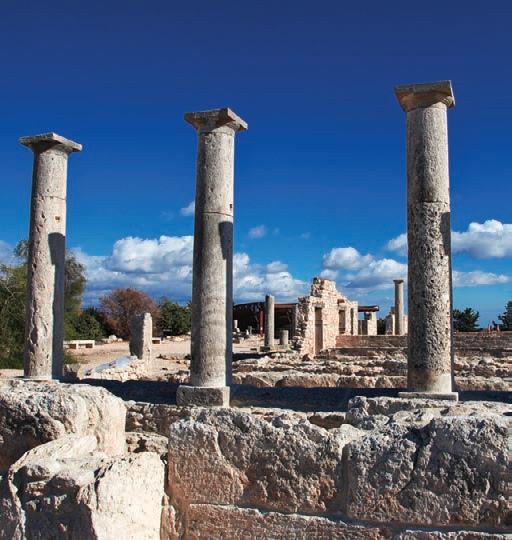
Internet coverage and transport on the island are good, although there’s no rail network, so the best way to get around is by car. Plus, the infrastructure is also expanding with plans to build film and TV studios, so that international productions coming in not only take advantage of the locations, but also do some stage work too.
Looking ahead, several more international productions are expected to head to the island. “We are in negotiations with many producers and well-known studios. Some of them are expected soon,” concludes Eleftheriou.
135
PRODUCERS MAY CHOOSE TO SHOOT ON THE SNOW COVERED MOUNTAINS IN JANUARY AND THEN DRIVE 45 MINUTES TO FIND THEMSELVES ON OUR SANDY BEACHES IN THE SUN.

Switch to Storytelling Mode
From animated adventure to live action interpretations, video game adaptations have often fallen by the wayside in terms of producing critically acclaimed quality. But with the recent applause for The Last of Us, and John Wick could it be that what succeeds is less a direct translation but a blending of game and film into a new storytelling mode?

With hours of gameplay spent learning about characters and solving their challenges, the episodic nature of television seems the perfect medium for game adaptations. The crossover of games to feature film has been tried for decades and not always been rewarding. While video game adaptations have appeased the game lover’s desire for a continuation of the franchise and garnered some positive feedback, a significant number of movies based on video games have failed. One only has to look at the critical mauling received by Universal’s latest version of Nintendo’s favourite characters The Super Mario Bros
But the hit HBO series The Last of Us has changed all that and could welcome a new dawn for the genre in terms of engaging fans with quality storytelling. Based on a 2013 action-adventure game developed by Naughty Dog and published by Sony Computer Entertainment, The Last of Us was adapted for streaming by original game developer Neil Druckmann in concert with Emmy-winning screenwriter Craig Mazin (Chernobyl) who is also showrunner.
137
The Last of Us © 2023 Home Box Office, Inc.
Movies are also taking stylistic inspiration from the gaming world. Using a bare bones story structure, much like video game cut scenes, John Wick: Chapter 4 uses impressively choreographed sequences to amplify visual elements of the film such as location choices, weaponry, martial arts displays and villains.
Although the acknowledged influences of creator Derek Kolstad and franchise director Chad Stahelski are cinematic – including Sergio Leone's spaghetti westerns, John Woo's 1989 action thriller The Killer, silent comedian Buster Keaton as well as classic musicals like Singing In The Rain, many of the character’s fight sequences parallel that of the gaming world in the use of style and perspective.
Shot predominantly in Alberta, Canada, the drama is set in 2023, twenty years into a pandemic caused by a mass fungal infection, which leads its hosts to transform into zombie-like creatures and collapses society. We follow Joel (Pedro Pascal), a smuggler tasked with escorting the immune teenager Ellie (Bella Ramsey) across a post-apocalyptic United States.
TELEVISION’S EPISODIC NATURE GIVES NARRATIVE VIDEO GAME ADAPTATIONS THE SPACE TO EXPLORE EXPANDED PLOT IDEAS AND CHARACTER DEVELOPMENTS. STORYTELLING
With an episodic format to match that of the game’s own sequencing, with a few tangents thrown in, the series’ week by week viewing style brought back the anticipation that has been lost with binge watching on streamers. As the co-creators began breaking down the show’s story and mapping out the first season’s shape, Mazin said that he felt like there’d always been “a television show lurking inside that video game trying to get out” because the game’s missions felt almost like serialised instalments of a story.
Aside from the structure, the TV adaptation also had to reflect the original game’s game-play. The Last of Us can be played in different ways. For instance, as players you’re guiding Joel and Ellie through ruined cities infested with ‘clickers’ that come charging where they hear loud noises.
Charging in guns blazing is just one option but this runs the risk of making the game more difficult. Another option is to use game-play strategies such as ‘stealth’ and ‘cleverness’ to survive. Mazin and Druckmann have said that rather than spotlighting stealth as a mere mechanic, they wanted the television show to emphasise stealth as a means of survival because that’s the sort of mindset that Joel, Ellie, and virtually all of The Last of Us characters are living with.
John Wick: Chapter 4, a scene following Wick overhead with an apparent single shot of the character barging through the room and corridors of a spacious house resembled the perspective of a retro top-down shooter game. Stahelski admitted as much in interviews, saying he was inspired by the 2019 game Hong Kong Massacre (which itself is based on an earlier gamed called Hotline Miami

Stahelski realised that shooting top down would give a different perspective on the gun muzzle flashes, telling Slash magazine, “it draws these cool lines with the muzzle flash, and if I get the right flicker effect, it's like Etch A Sketch. It was a different way to amp up the action and keep you in that first-person shooter video game mode that John Wick's kind of known for.”
It makes sense that one of Stahelski’s next projects could be Ghost of Tsushima, a film version of the PS4 samurai game. He told Inverse how he hoped to create something that would not only be true to the game aesthetically but to elevate it on film.
“Hopefully [we won’t] just make the game, but make something that’s a synthesis that’s even more than the game. The trick is, how do we bring this all together to be less interactive, more visual? That’s always the trick with video game adaptions. We’re not adapting, we're actually changing mediums.”
VIDEO GAMES
ADAPTATION
138
“MANY OF THE JOHN WICK’S FIGHT SEQUENCES PARALLEL THAT OF THE GAMING WORLD IN THE USE OF STYLE AND PERSPECTIVE.”
John Wick: Chapter 4 © Lionsgate.
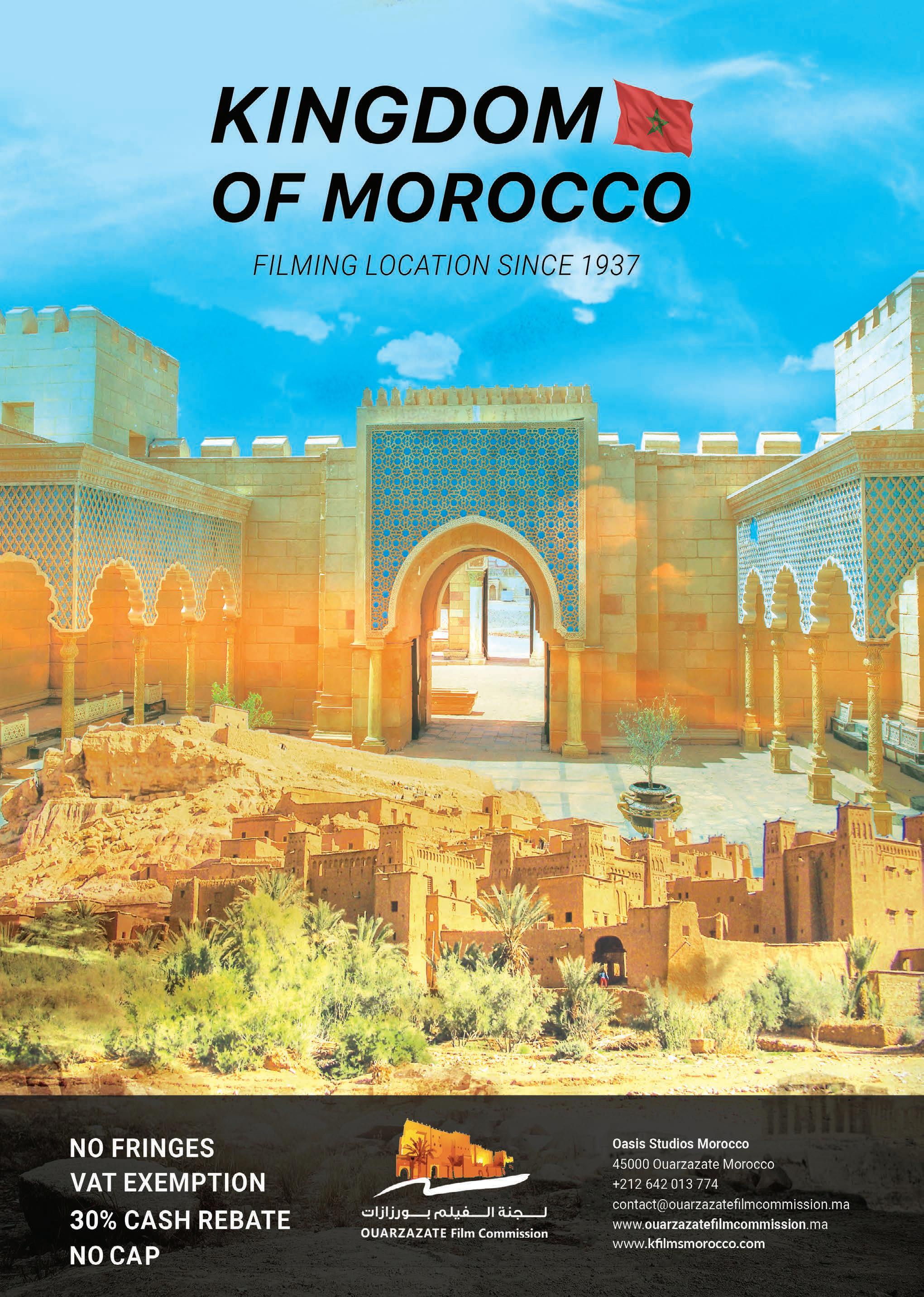
Making of Blue Lights
POLICE PROCEDURAL GIVES NEW DIMENSIONS TO THE CITY OF BELFAST
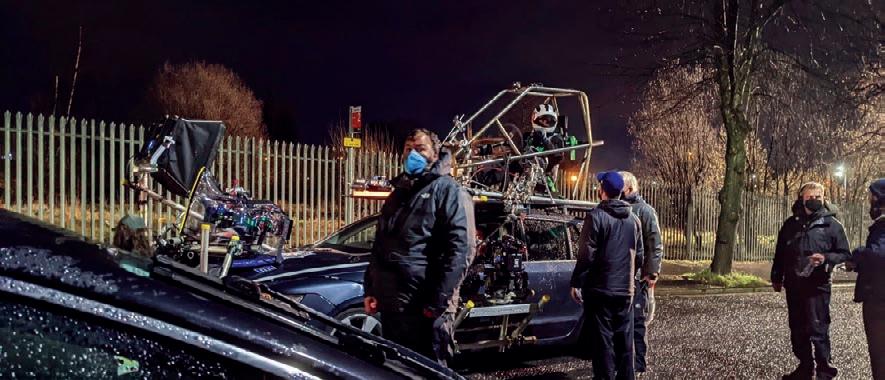

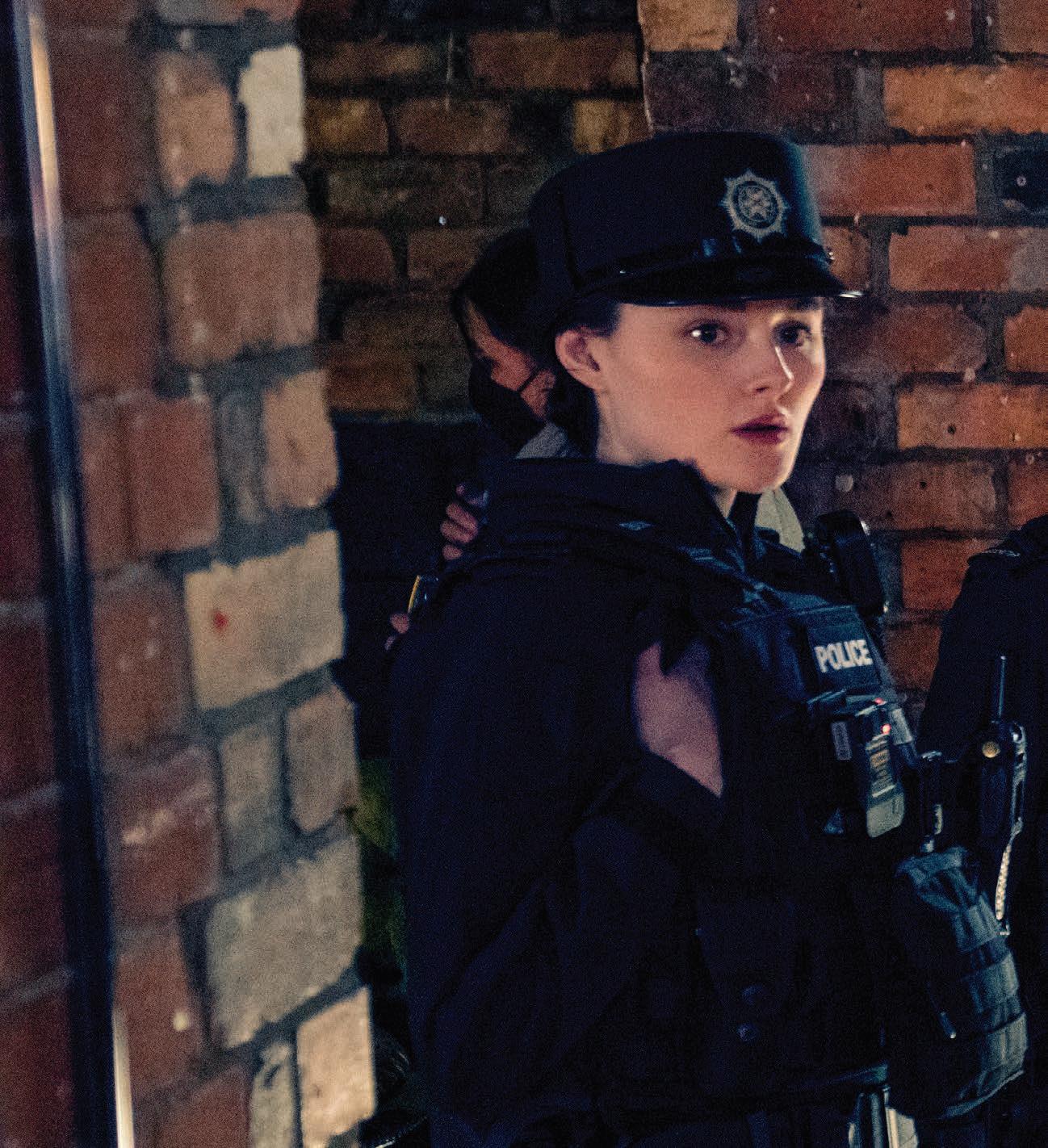
140
While cop shows like Line of Duty have been shot in Belfast, new six episode BBC police drama Blue Lights makes a virtue out of being shot in the city. Writers and Executive Producers, Declan Lawn and Adam Patterson wanted the show to reflect Belfast’s urban environment sitting side by side with the sea and countryside. Scenes were set in specific areas of the city too.
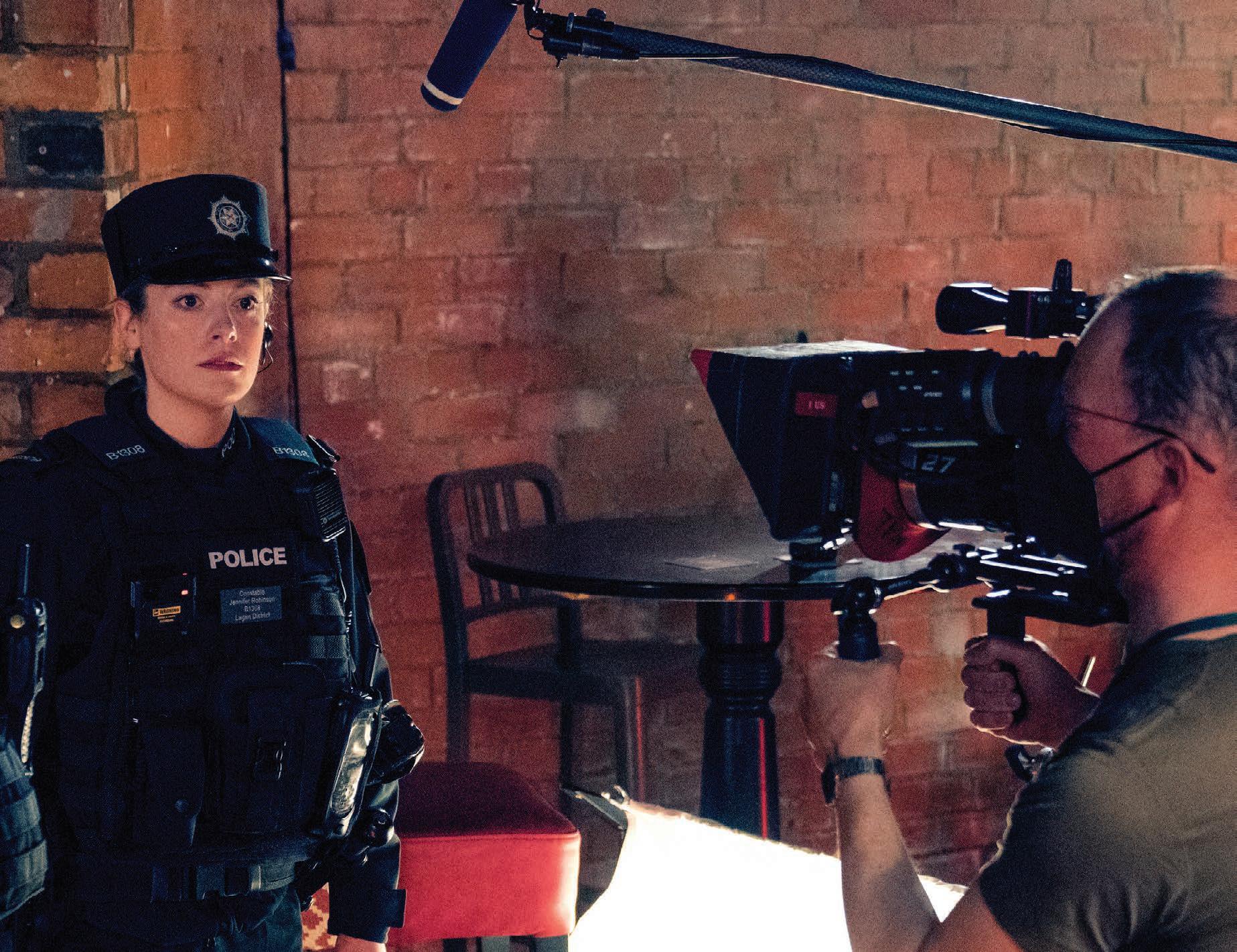
“What has mostly been shown on screen from Northern Ireland has been sinister because of The
Troubles,” says director Gilles Bannier. “I wanted to create something that was not as depressing, that had humour and that was true to the reality of people in Belfast today.”
Bannier is French and brought an outsider’s eye to the story. The majority of crew and actors are Irish or live in the Belfast region.
That includes DOPs Stephen Murphy BSC, ISC and Angus Mitchell who created a look, to Bannier’s instruction, based on the way American films of
the 1970s like The French Connection, had channelled the nouvelle vague in the moment style of realism.
In keeping with that the idea of filming on a sound stage did not appeal. Also for more authenticity a Pod rig [which allows a stunt driver to control a car from its roof] was used instead of low loaders.

Blue Lights is made by Two Cities Television and produced with support from Northern Ireland Screen.

141
Images © BBC/Gallagher Films/Two Cities Television/Steffan Hill.

Entertain With Empathy
AS THE COST OF LIVING CRISIS IS SHIFTING CONSUMER SPENDING HABITS
HOW IS MARKETING ADAPTING FOR AUDIENCES?
In a market where authenticity is more valuable than ever, commercial campaigns are navigating a fine line between audience consideration and brand promotion. With an evolving relationship between brands and their consumers, as well as Gen Z’s influence, is there a key to pleasing everyone?
While the pandemic is in the rear view mirror for many of us, consumer habits that arose during that period remain prevalent today. As in-app purchasing through platforms like TikTok and Instagram continue to rise in popularity, brands have contracted with influencers and content creators to reach Gen Z on short form content platforms. Brands may have reached a common ground with the consumers they are aiming to communicate with, the conversations require a certain tone that resonates effectively.
While classic television creatives can still deliver a reach unrivalled by any other media channel, increasingly this communicates with older demographics. Even social media platforms like Facebook and Instagram are being bypassed by Gen Z.Accounting for about a third of the world’s population, Gen Z are dictating which platforms are most effective and are gravitating towards more simplified and unfiltered avenues like BeReal and TikTok. With a 2022 Retail Dive survey finding that 80% of Gen Z consumers have purchased a product

143
ACCOUNTING FOR 32% OF THE WORLD’S POPULATION, GEN Z HAVE ESTABLISHED SHORT FORM CONTENT PLATFORMS LIKE TIKTOK AS THE MOST EFFECTIVE FOR ENGAGING WITH BRAND MARKETING STRATEGIES.
that they saw on social media, the viral likes and content sharing nature of these platforms is key for brands and agencies to learn.
In an effort to appeal directly to the consumer, marketing chiefs have taken advantage of the trust built up between creators and their audiences. Influencer marketing is being used to establish a new trusted relationship between brands and consumers. The influencer industry generated USD16.4 billion last year, according to The Influencer Marketing Benchmark Report, with more than 75% of companies assigning a budget to work with creators on social media. With their own niche fields of content fuelled by humour and unfiltered relatability, creators are paid by brands to promote product or services to their follower base. Some creators could be paid thousands of dollars for a single favourable post.
“Brands must react to these changing habits to ensure they reach the right audiences as efficiently as possible and maximise their digital investments,” says Mark Zagorski, chief executive of DoubleVerify. “Our research shows, that with digital content consumption rising, there's a clear opportunity to garner consumer attention and power campaign performance. To unlock this opportunity, brands must evolve their ad strategies. This means meeting their audiences where they consume content and focusing on contextually relevant, attention-grabbing ad placements that also safeguard their brand reputations.”
Putting Gen Z front and centre, the latest ad campaign for restaurant chain Nandos titled This Must Be The Place, recreates the experiences of many loyal customers. Directed by Jonathan Entwistle – the creator of the cult Netflix series The End Of The F***ing World – the commercial featured football player Bukayo Saka, Instagram icon Grime Gran, TikTok chef LetsMunch and music artist Niko B. It is not so much preoccupied with its celebrity cameos, rather the narrative is focused on
a group of friends sharing tales of ordering food in their favourite fried chicken eatery. The celebrities interject in each scene, but the ad suggests that, regardless of their status, at Nando’s they are are just like us.
Double Verify’s 2022 Four Fundamental Shifts in Advertising and Media Report showed that 55% of consumers spend more time each day consuming content now than they did pre-pandemic. During this time, audiences have inevitably developed a sense for the disingenuous. Buzzwords like authenticity have often been thrown around in the conversation around content creation, but what does that term really mean to advertisers? The study also reported that 61% of us are less likely to purchase or use a brand that we do not feel we can trust. Agencies need to figure out how authenticity can apply to the brands they work with and the consumers they aim to appeal to.
“WHILE CAMPAIGNS FOCUSSED ON THE COST OF LIVING CRISIS AIM TO FOCUS ON THE POSITIVES, SUCH METHODS OPEN UP THE POSSIBILITY FOR OPTIMISM OVERKILL WHICH CAN OFTEN BE INTERPRETED AS INAUTHENTIC.”
“The shift from low lift, always on, hyper tested ads, into authenticity will continue to ramp up,” predicted Katherine McKee, CEO of digital commerce consultancy Morphology Consulting in interview with Forbes. “Customers are more aware of corporations than ever, and heavily branded, even beautifully shot, cleverly designed ads can feel fake.”
In its Race to the Top webinar for marketers, ITV discussed newly commissioned research exploring what ‘value’ means to consumers and gave tips from its editorial teams on finding a tone of voice that will resonate.

ADVERTISING INFLUENCERS
SOCIAL MEDIA
144
University of Bristol – Find Your Focus © JonesMillbank.

When budgets are tight, what are the risks of cutting spend? How do you make the case for supporting a brand to your internal finance team? And if you are able to spend through a downturn, what message and tone is likely to resonate with consumers?
Its study showed that nearly half of surveyed participants were cautious about high spending and concerned about future finances. The tactics ITV suggested for brands to navigate these sentiments were rooted in positivity about the possibilities of the future.
ITV’s chief message was to highlight the effectiveness of brands which “entertain with empathy”.
However, championing the provision of content that promotes better days for the consumer during these trying times, risks optimism overkill – and that is something that can often be interpreted as inauthentic. Individuals are not expecting brands to solve the crisis, and agencies are not tasked with creating content that suggests that is their ultimate motivation. Rather, agencies recognise the need to help create content that speaks to the consumer and maintains what the brand is and stands for, whilst appreciating the condition of society.
In November 2022, Taika Waititi directed a Belvedere vodka campaign produced by Hungry Man and Bandits which featured a freely prancing and dancing former James Bond, Daniel Craig. The same month saw Waititi and Hungry Man deliver a Christmas ad for Amazon which showcased the touching relationship between a father and daughter. These two completely different sentiments – one luxury brand, one for more humble gift givingrepresents the duality in the advertising space and its response to consumers today.
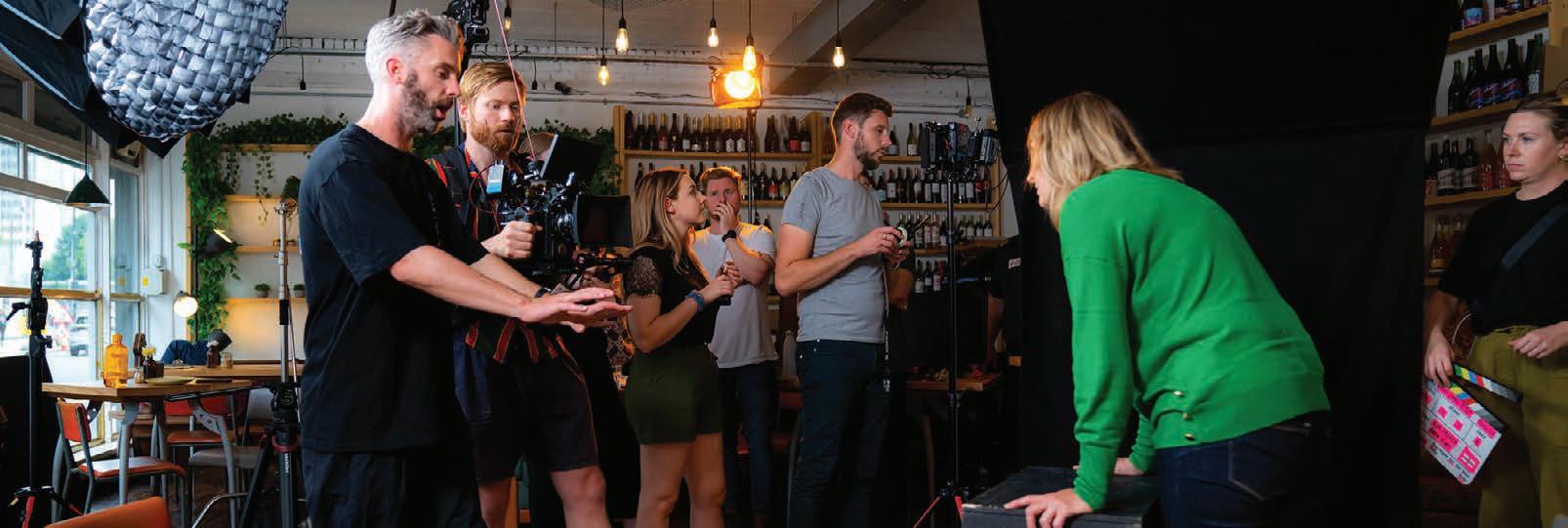
Despite the need to cater to a generation that has a certain set of expectations for the media they are consuming and the added challenge of navigating the cost of living crisis, marketing content in today’s climate does not follow a set formula.
“Here we’ve got a 55-year-old actor, known most notably for James Bond, advertising alcohol. On paper, what about that resonates with Gen Z?” questions JonesMillbank director Russell Jones about the Belvedere advert. “And yet, it does. Everything about it does. The brand not taking themselves too seriously, or trying to push overtly corporate messaging, and Daniel Craig absolutely personifying that. It exudes authenticity, despite being one of the most fictional, conceptual, hyperstylised and directed ads of the last year. The story lies in the surprise, the smashing of stereotypes and expectations. He isn’t like Bond after all. And so, we’re doing what we’ve always done: telling authentic stories.”
“THESE TWO COMPLETELY DIFFERENT SENTIMENTS – ONE LUXURY BRAND, ONE FOR MORE HUMBLE GIFT GIVING –REPRESENTS THE DUALITY IN THE ADVERTISING SPACE AND ITS RESPONSE TO CONSUMERS TODAY.”
Whilst authenticity is a key factor in creating marketing content in today’s social climate, it is not a new phenomenon. Therefore, companies that drastically shift their identity to be seen as relatable risk alienating a customer base that has a different set of expectations form them. Gen Z’s unapologetic and uncompromising standpoint on tangible and quality content has established a precedent for what will engage a wider audience. Marketers need to find the balance between understanding how their client brands are seen and learning to see their customers in return.
MARKETING GEN Z
AUTHENTICITY
146
WITH GEN Z’S REFUSAL TO BE GENERALISED, MARKETERS MUST APPEAL TO A MULTIDIMENSIONAL CUSTOMER BASE, SHOWING THERE IS NO ONE RIGHT WAY TO AUTHENTIC ADVERTISING.
Save A Life Cymru Golley Slater - Help Is Closer Than You Think © JonesMillbank.

